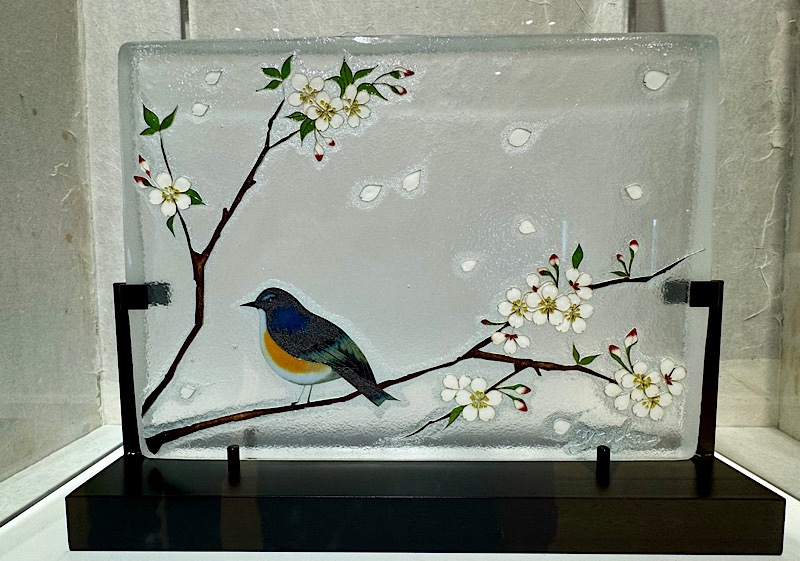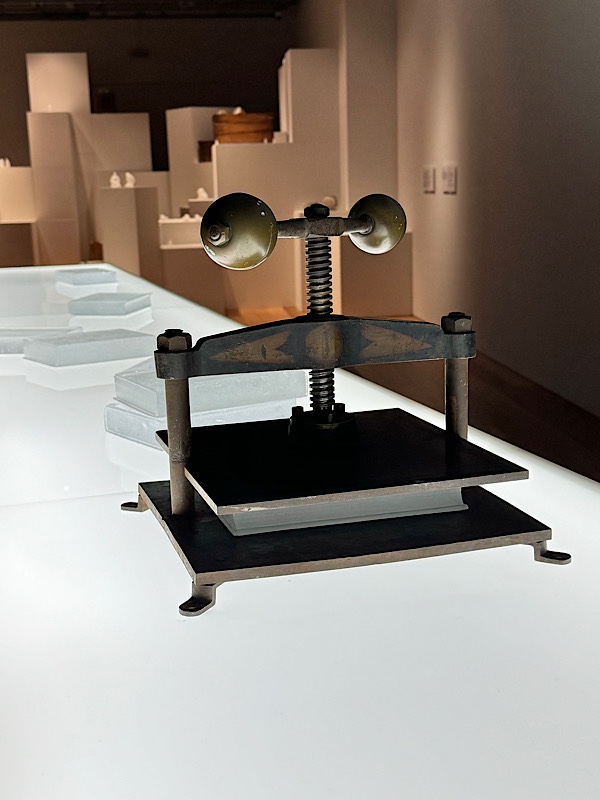Buying timed tickets to visit museums seems to be the necessity these days… which works okay, if you are travelling just for leisure, I guess and you don’t mind planning out your every single day of what you are doing on your vacation. But when travelling for work, and finding you might have a few hours to squeeze in something cultural – having to have pre-purchased tickets weeks in advanced leaves you at the mercy of some pretty mercenary resellers, mostly found on Trip Advisor links.
We did manage to get tickets for the morning we suddenly had available, but they were general entry and untimed, so that puts you in a different queue to get into the building, and that can mean ages waiting in lines. Thankfully at 0900 on a Saturday morning, the queues weren’t too intolerable and we were able to visit the Musée D’Orsay somewhat spontaneously after all.
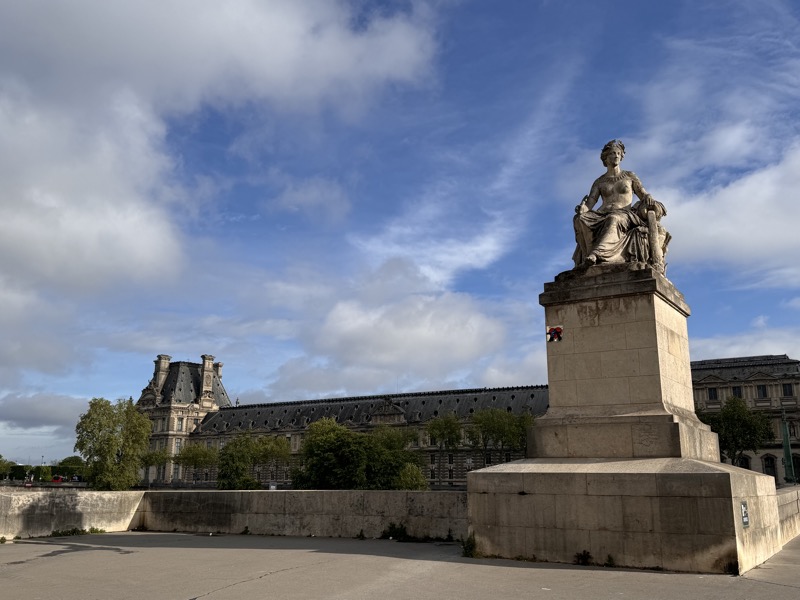
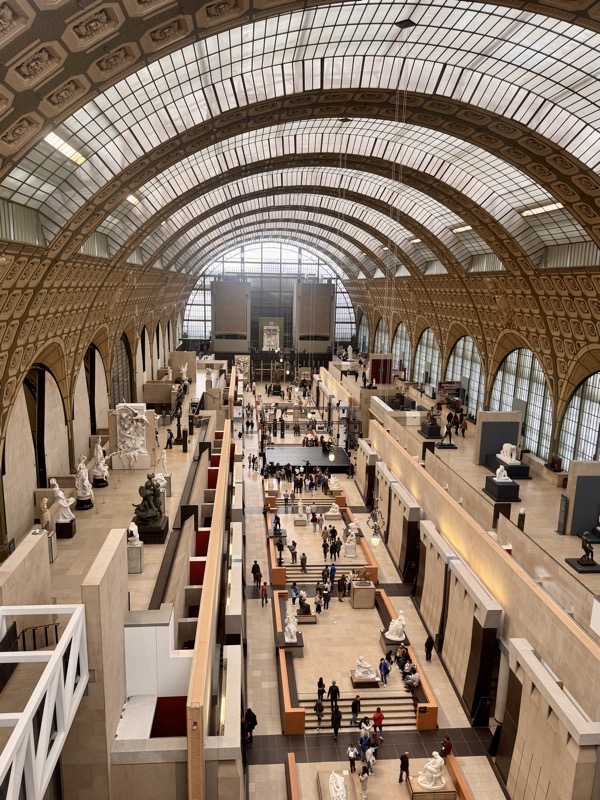
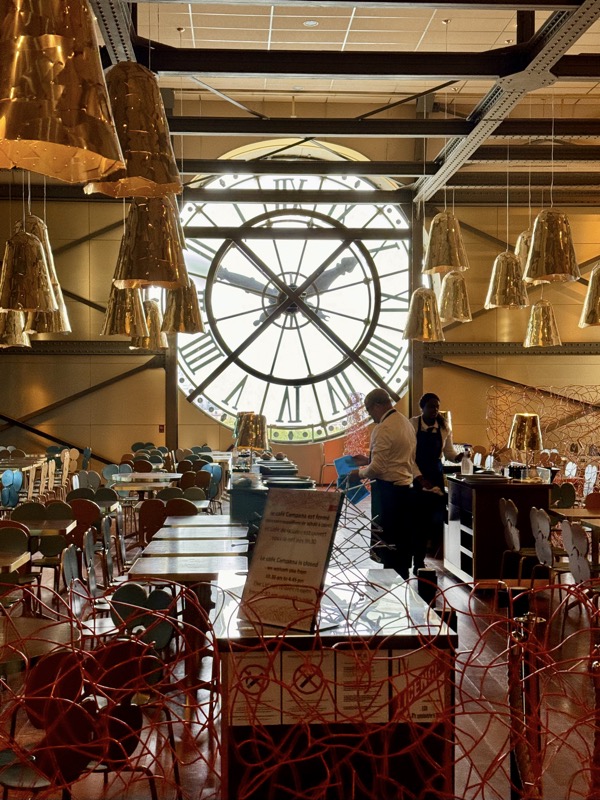
Van Gogh self portrait.. another one. Oil on canvas.
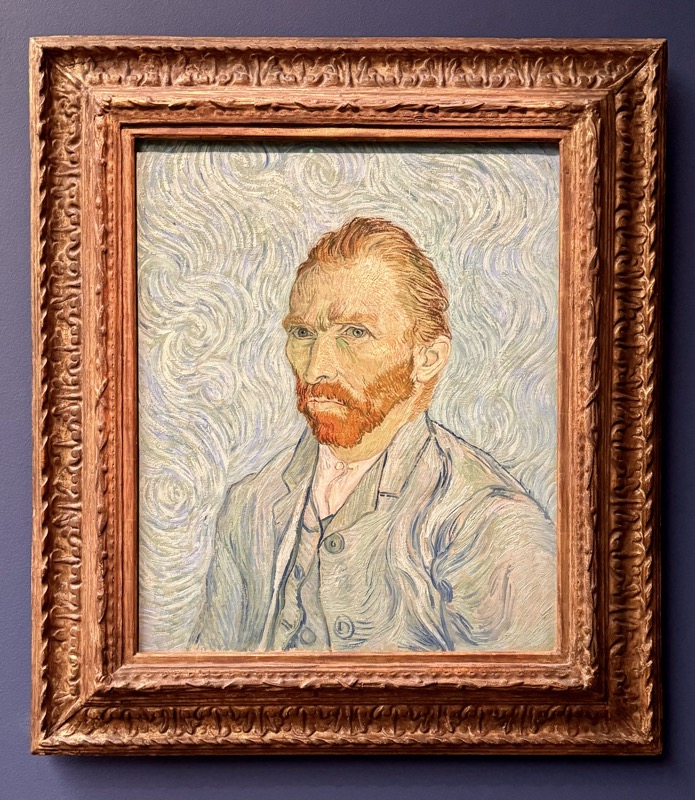
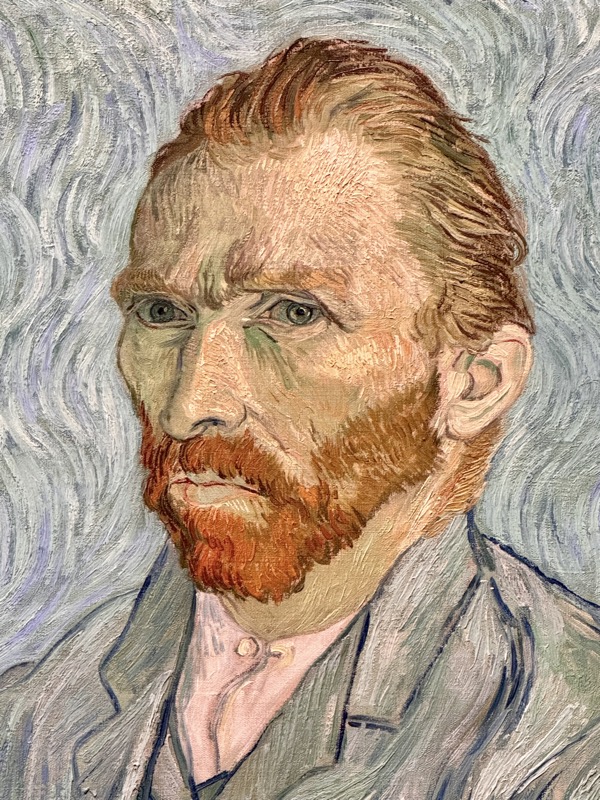
Bedroom At Arles.
Vincent Van Gogh, 1888, oil on canvas… this is my favourite Van Gogh painting. I just can’t get over the texture he created which you an only see in person. This painting utterly fails to translate in reproductions.
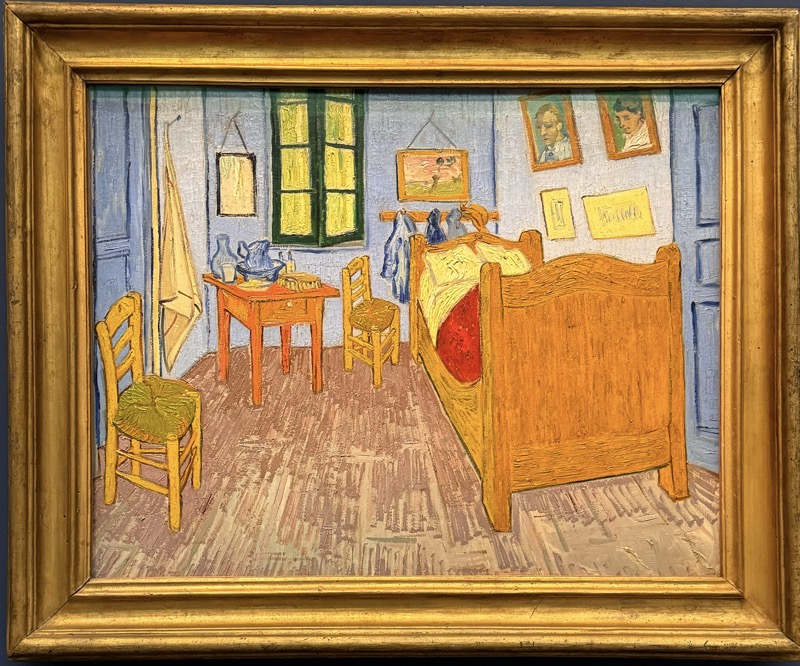
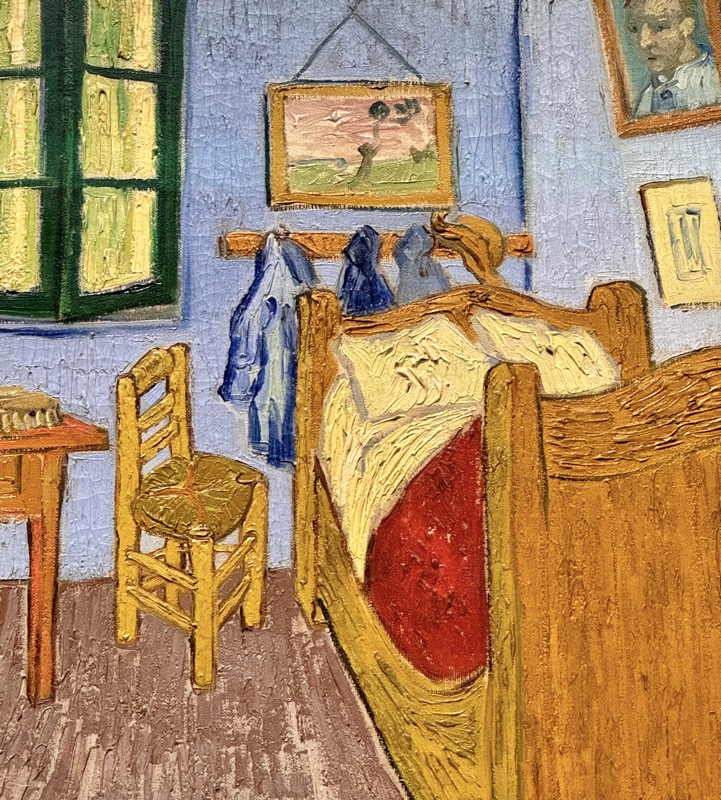
The Church in Auvers-sur-Oise, View of the Chevet.
Vincent Van Gogh, 1890, oil on Canvas.
Mr K’s favourite. Something to do with a Dr Who episode? Huh?
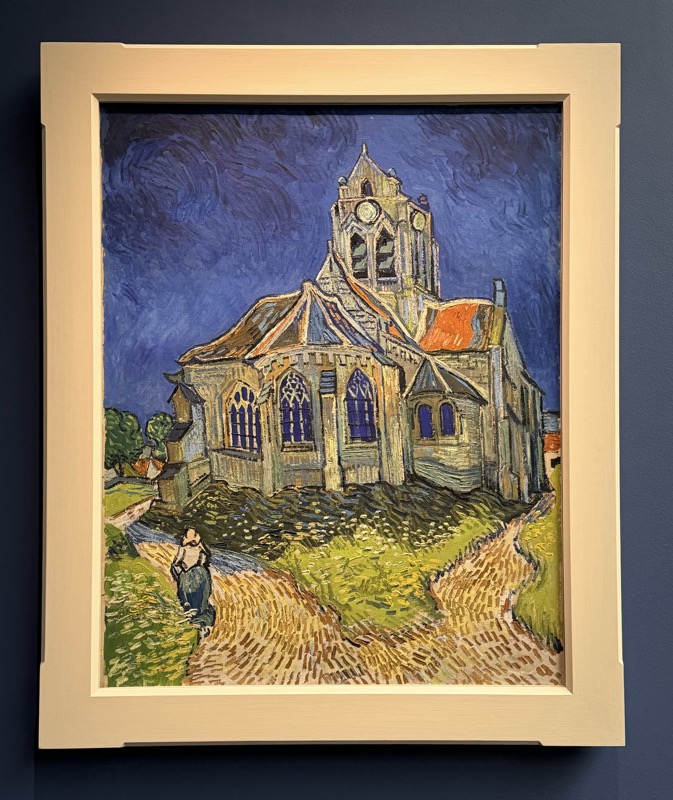
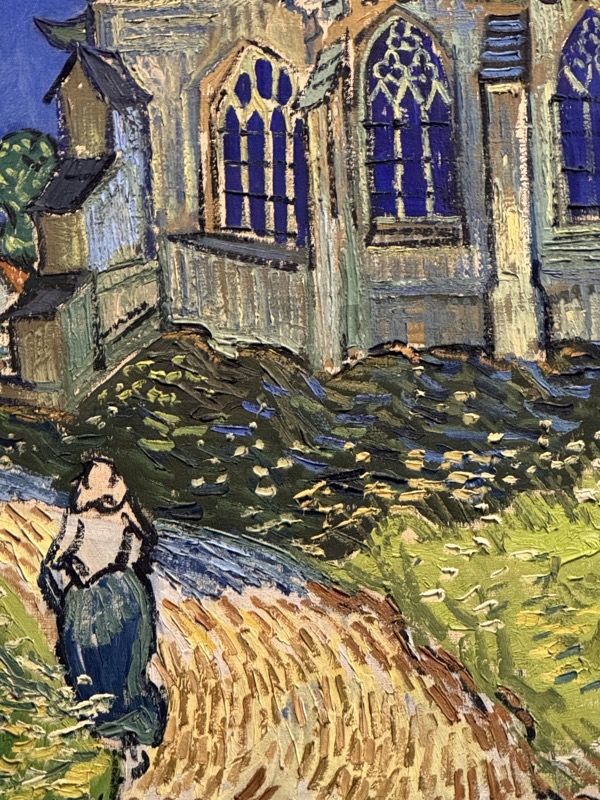
Chrysanthemums.
Claude Monet, 1878, oil on canvas. Part of the Doctor Gachet collection, I quite liked this painting even though it isn’t typical of Money and has an odd perspective.
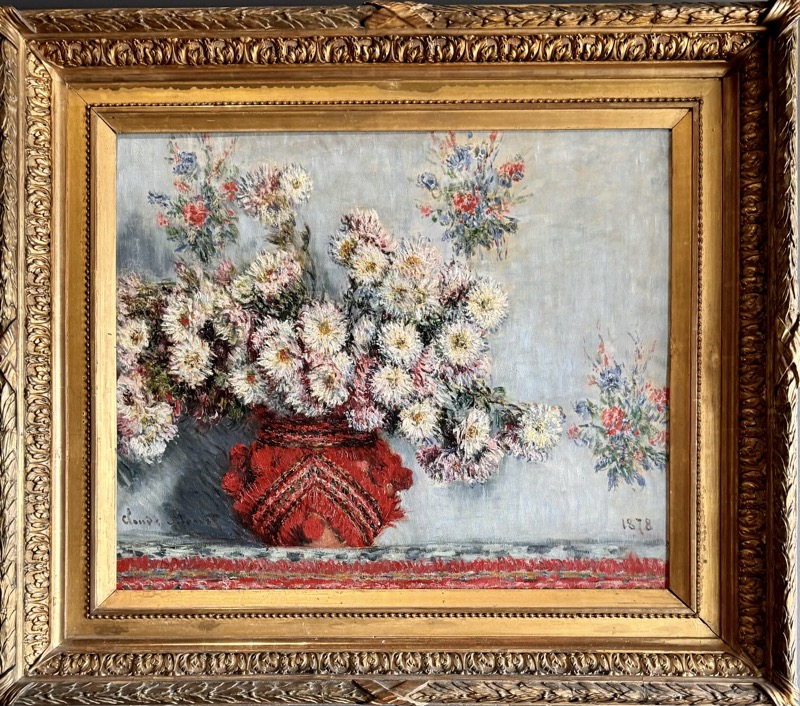
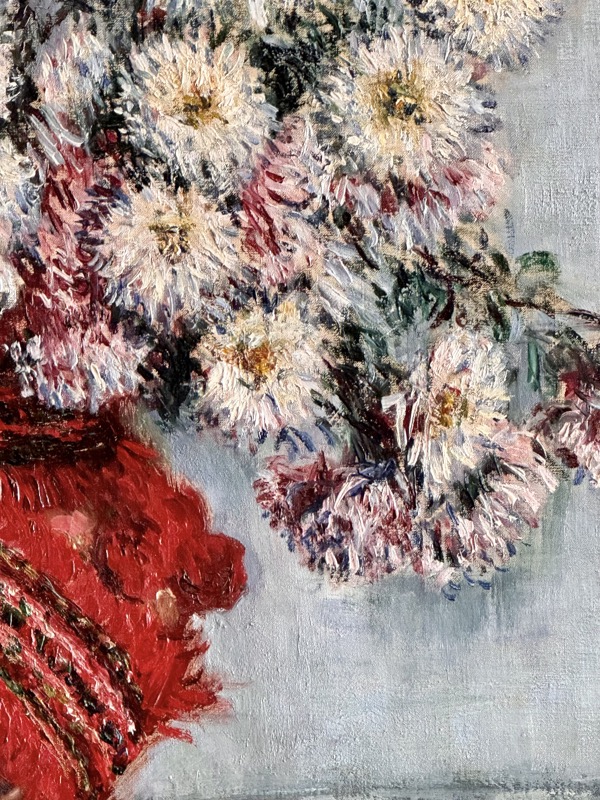
The Starry Night.”
Vincent Van Gogh, 1888, oil on canvas.
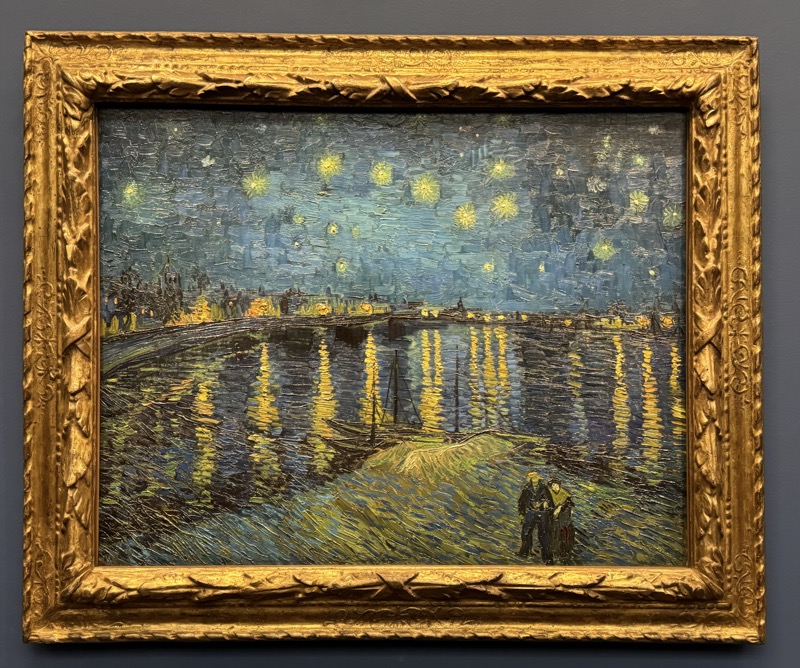
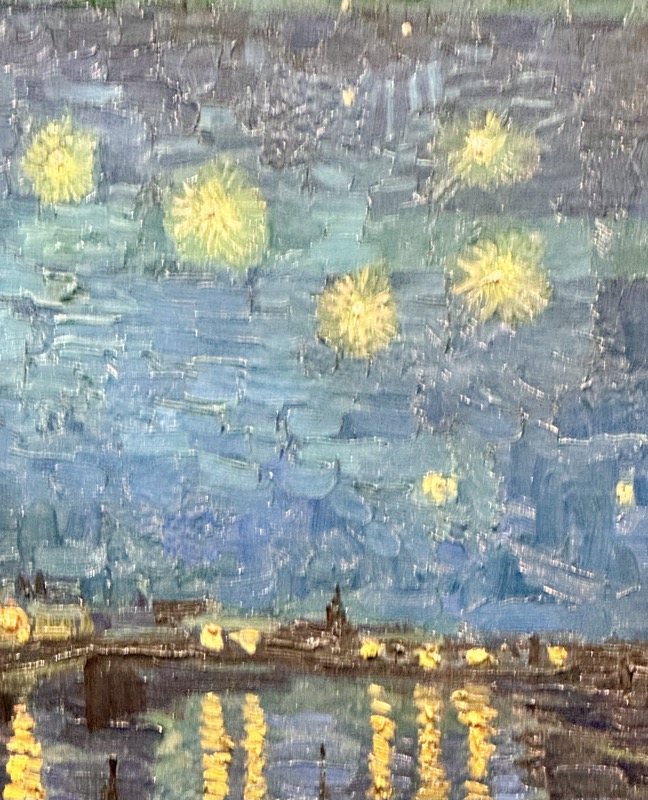
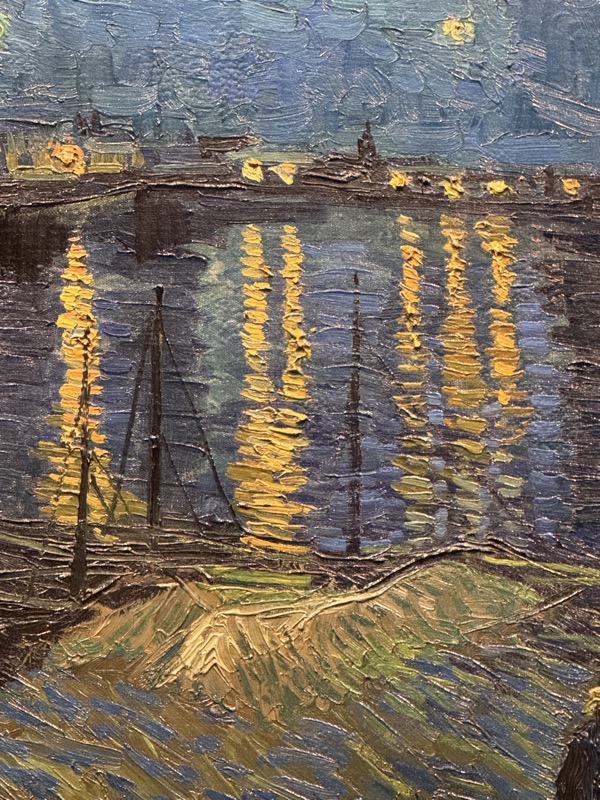
La Guinguette a Montmartre; Le Billard en bois, La Bonnie franquette.
Vincent Van Gogh, 1886, oil on canvas.
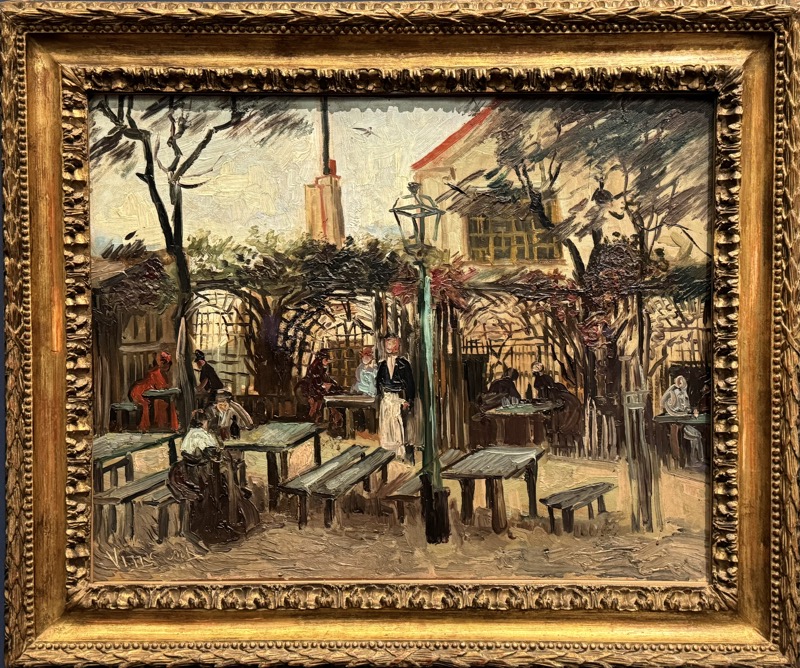
Fritillaires couronne impériale dans un vase de cuivre.
Vincent Van Gogh, 1887, oil on canvas.
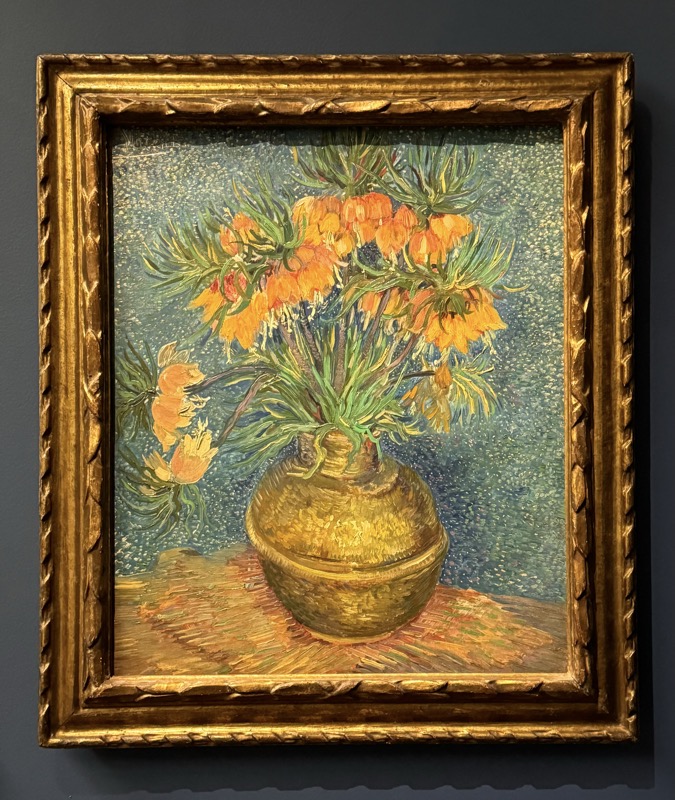
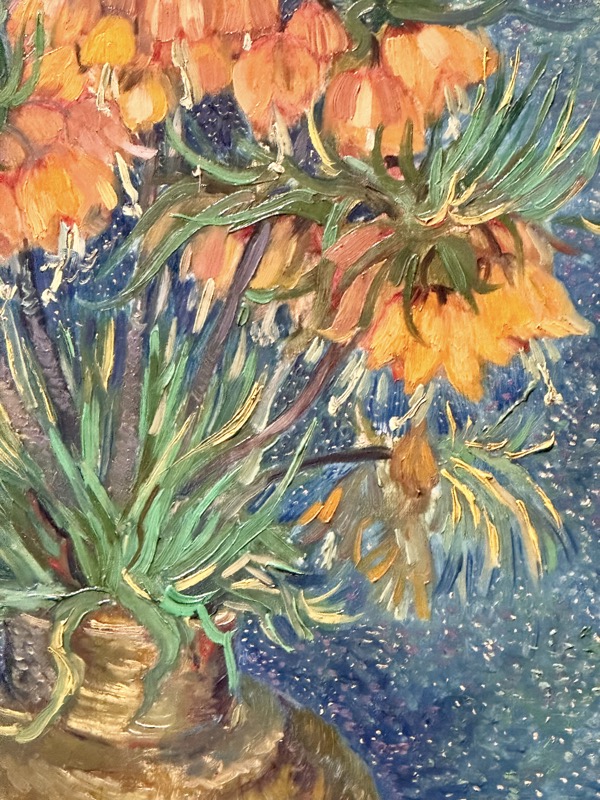
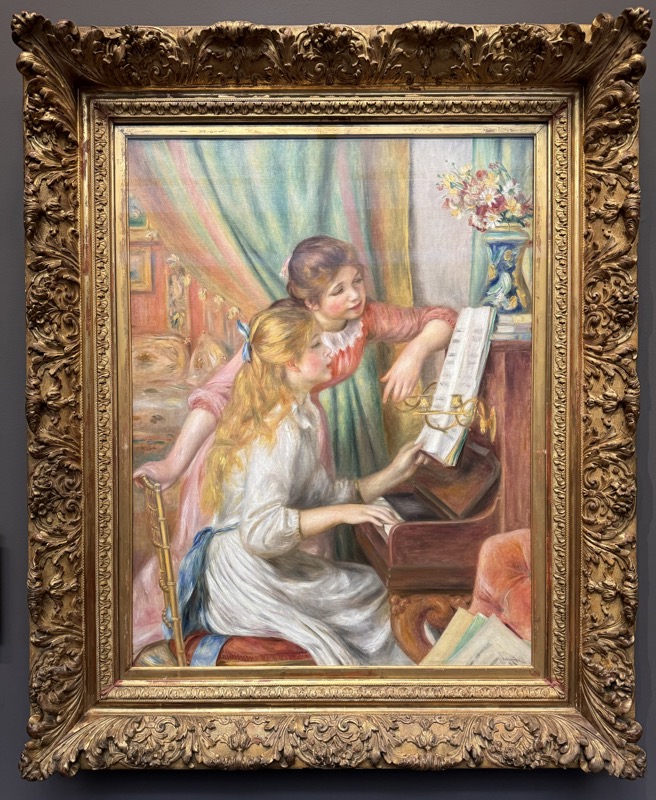
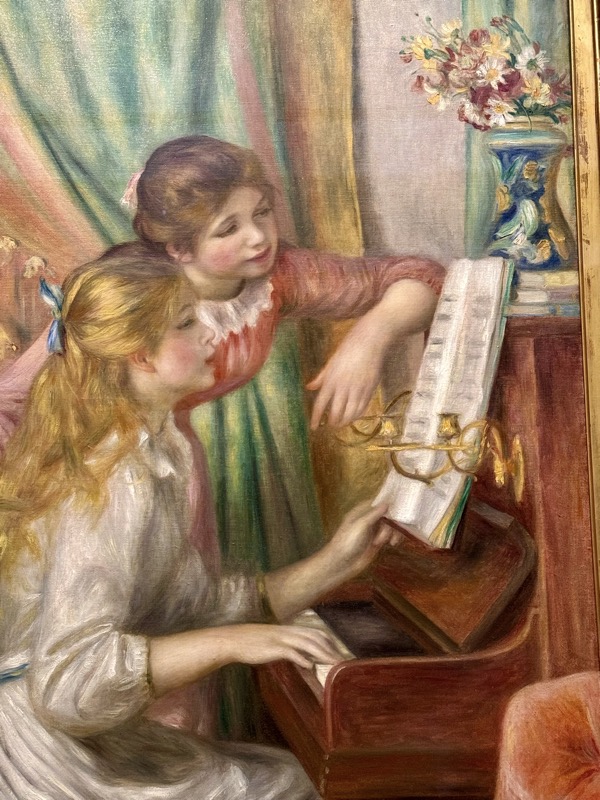
Blue Water Lilies.
Claude Monet, 1916-1919, oil on canvas.
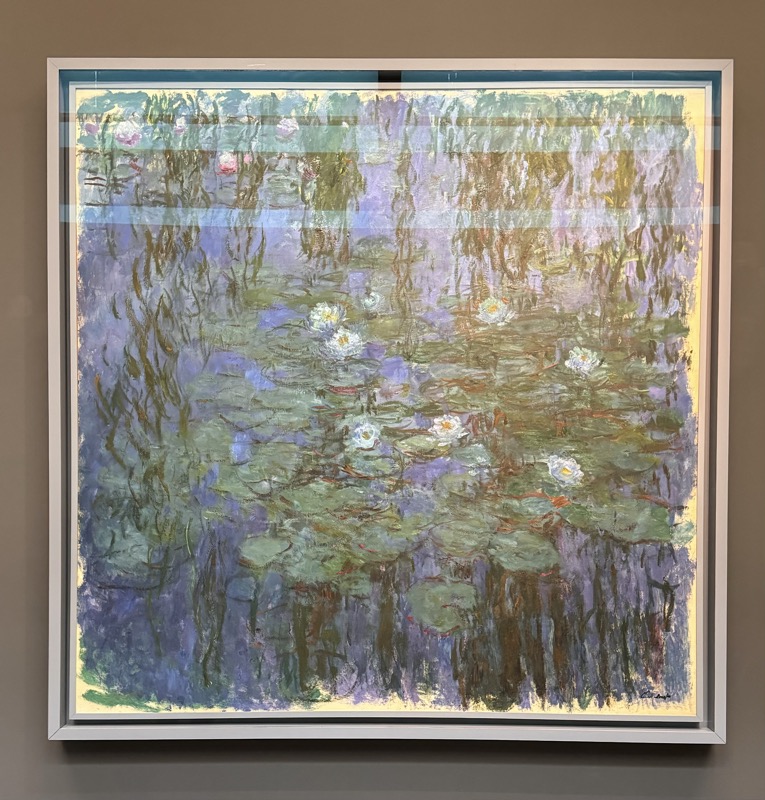
En norvégienne, also called, La barque à Giverny.
Claude Monet, 1887, oil on canvas.
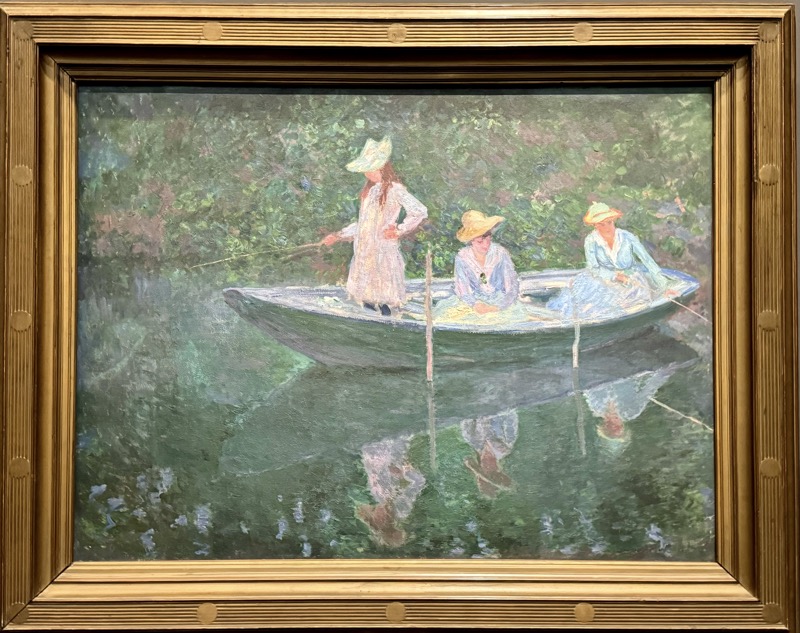
Femme au fichu vert.
Camille Pissarro, 1893, oil on canvas.
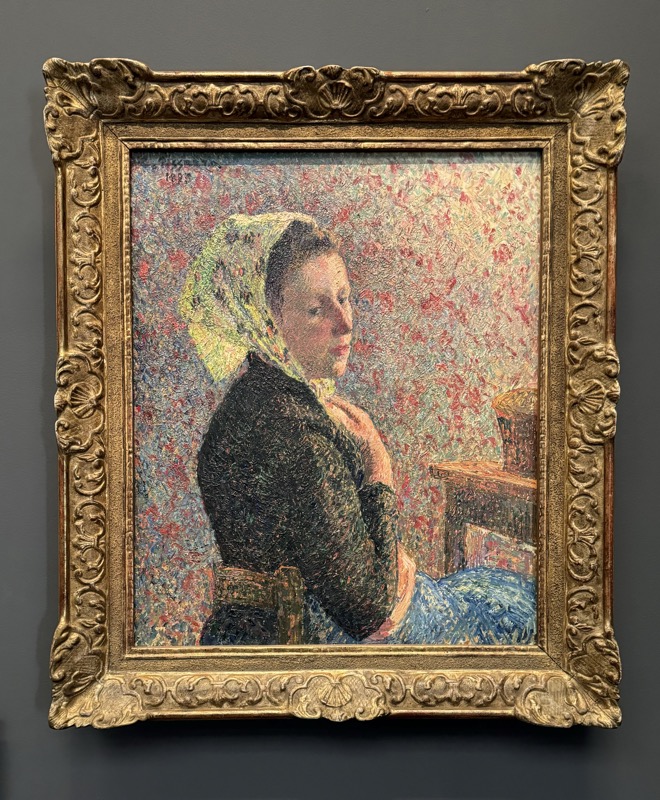
Foyer de la Danse.
Edgar Degas, 1872, oil on canvas.
Not sure what to make of Degas, I’ve always admired the work and the spaces he depicted of the opera world and the ballet school always lent themselves to beautiful compositions – very elegant and feminine. As I get older though, I wonder whether he was a sneezy presence (like Trump at a beauty pageant) walking in like he owned the place and ogling half-naked, very young women… many of whom were expected to be congenial to patrons of the arts. :/
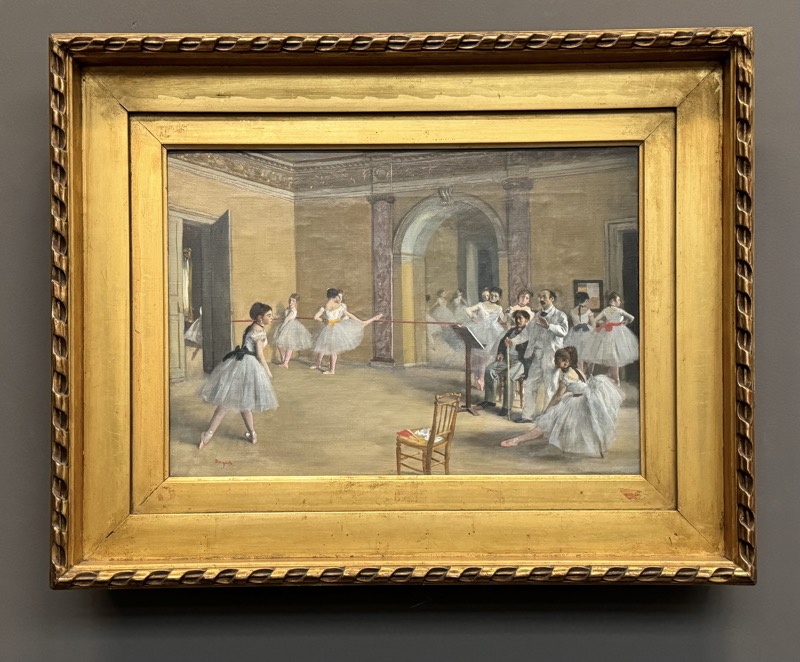
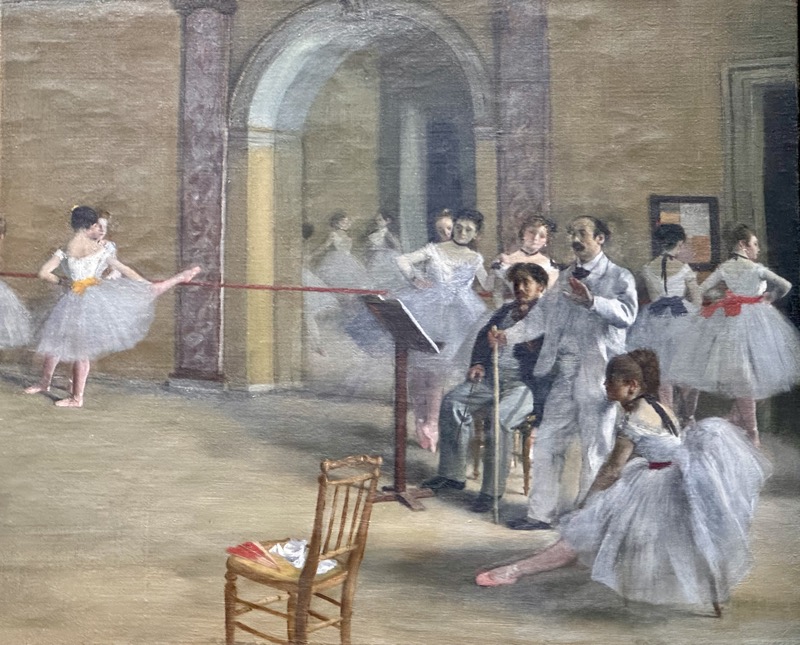
Blue Dancers.
Edgar Degas, 1893, oil on canvas.
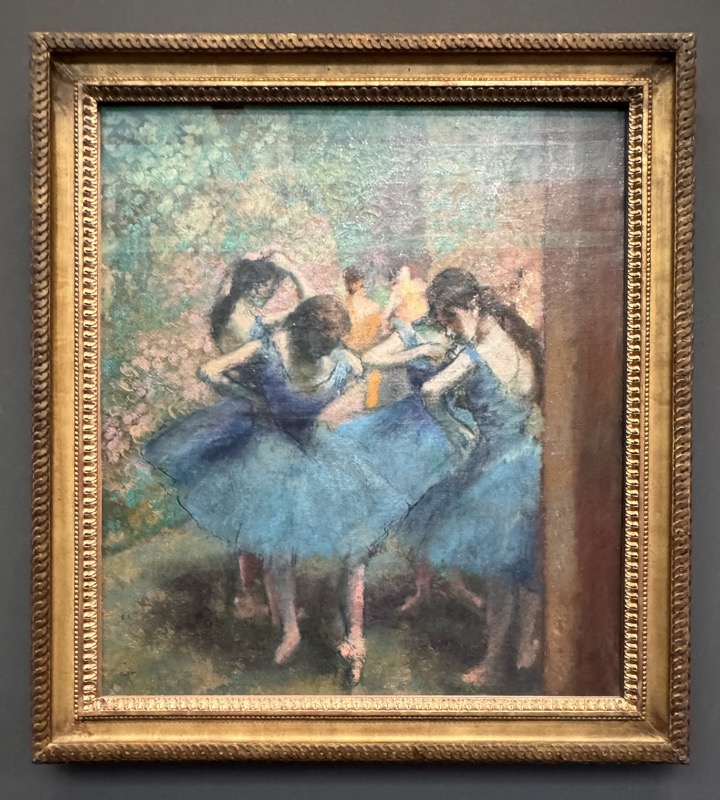
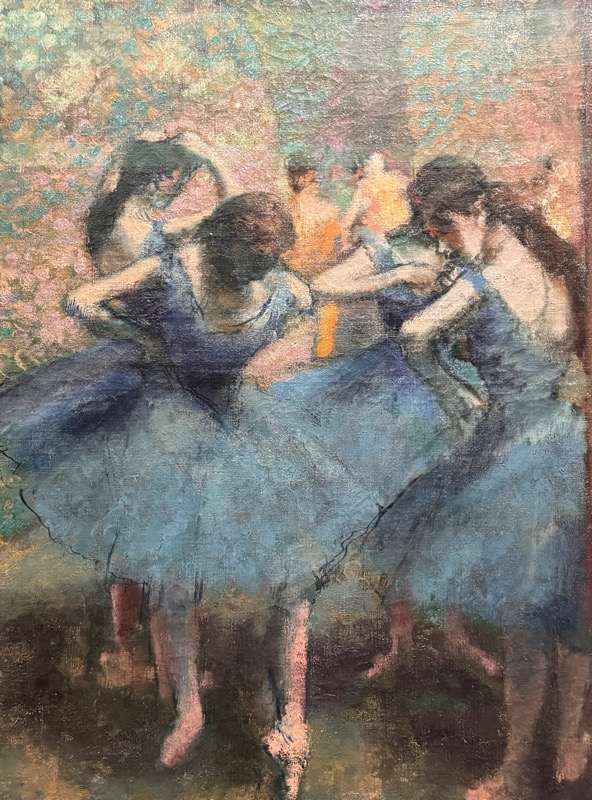
The Ballet Class
Degas, 1874, oil on canvas.
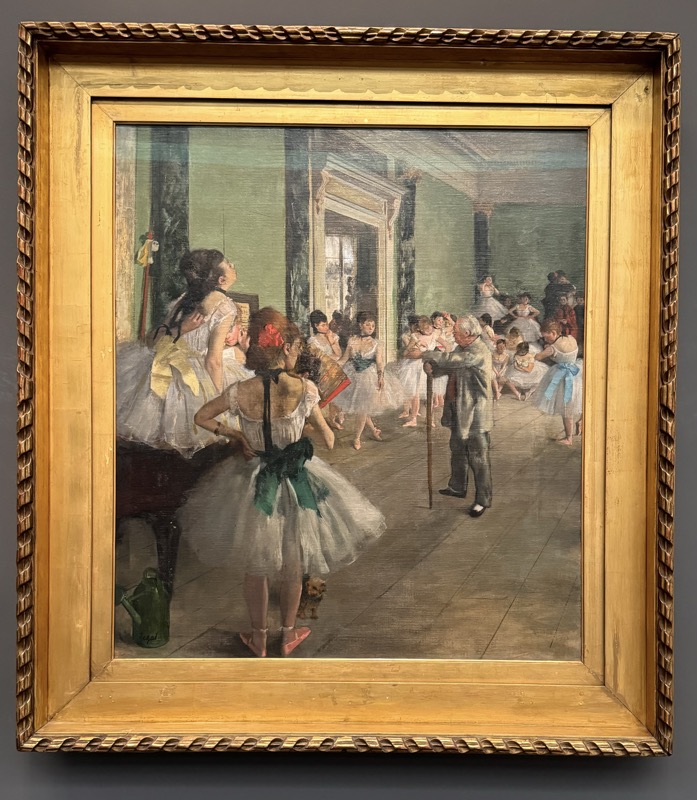
La Place Valhubert.
Armand Guillaumin, 1875, oil on canvas.
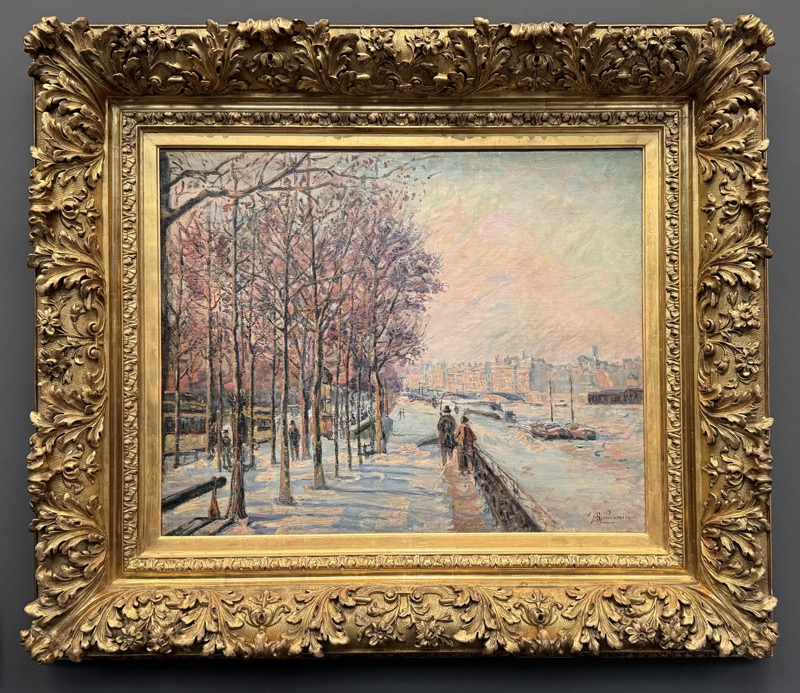
La Dame aux éventails.
Édouart Manet, 1873, oil on canvas. The model is Nina de Callias, she was a musician and artiest herself.
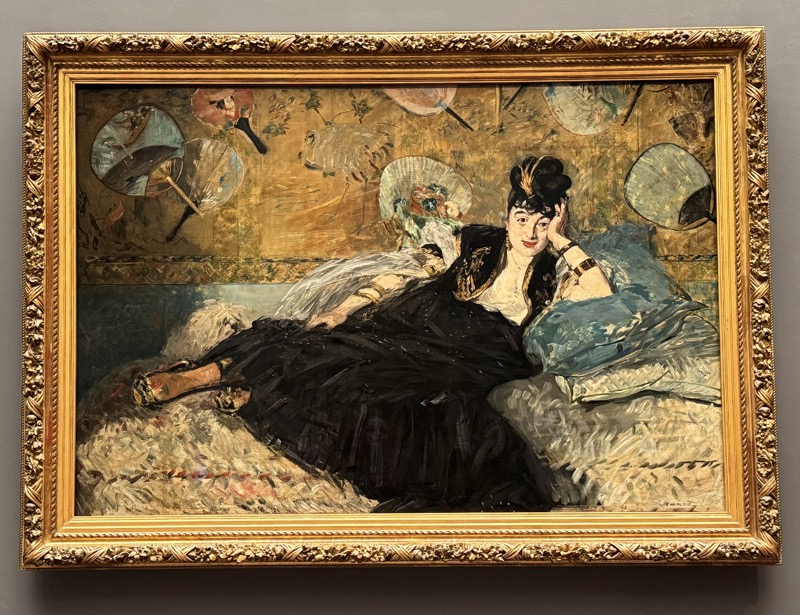
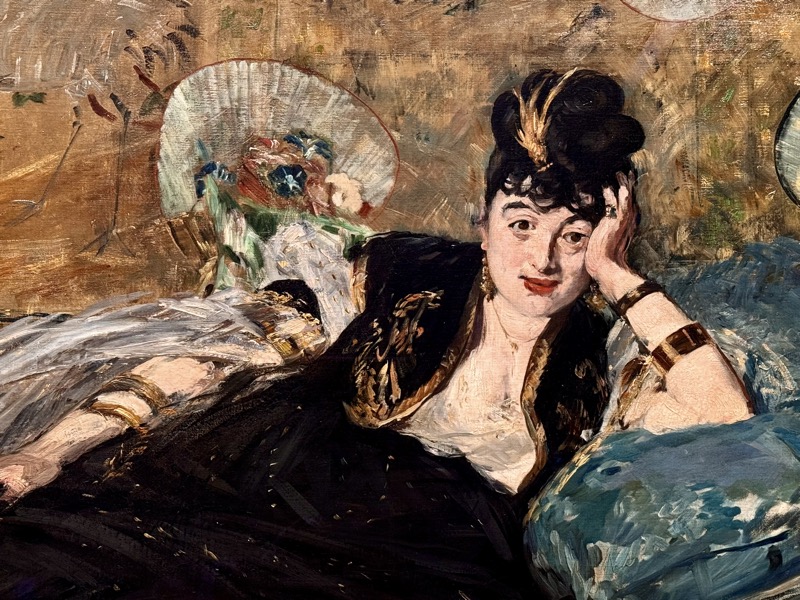
City Dance and Country Dance.
Pierre-Augusta Renoir, 1883, oil on canvas.
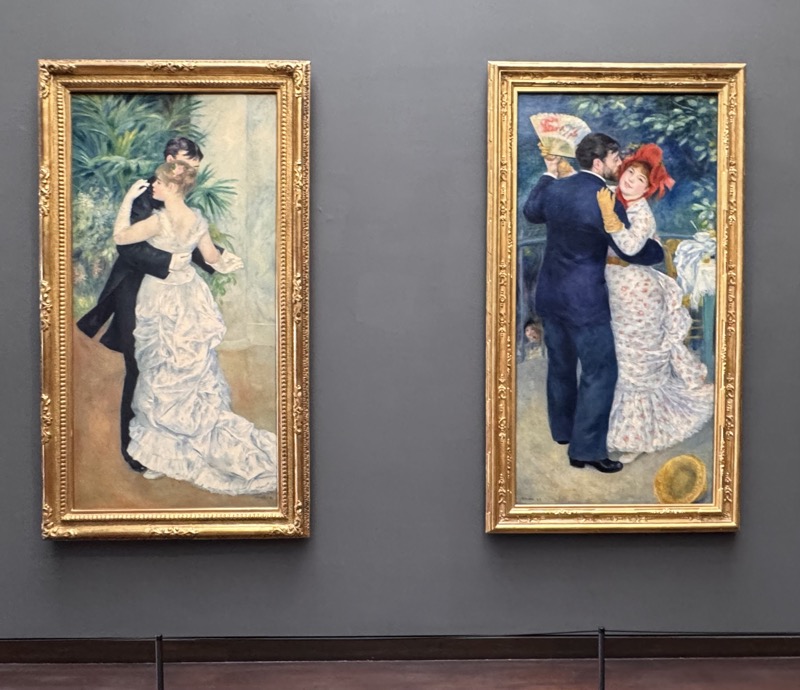
Le Cathédrale de Rouen. Also called, Harmonie Bleue et Or.
Claude Monet, 1894, oil on canvas.
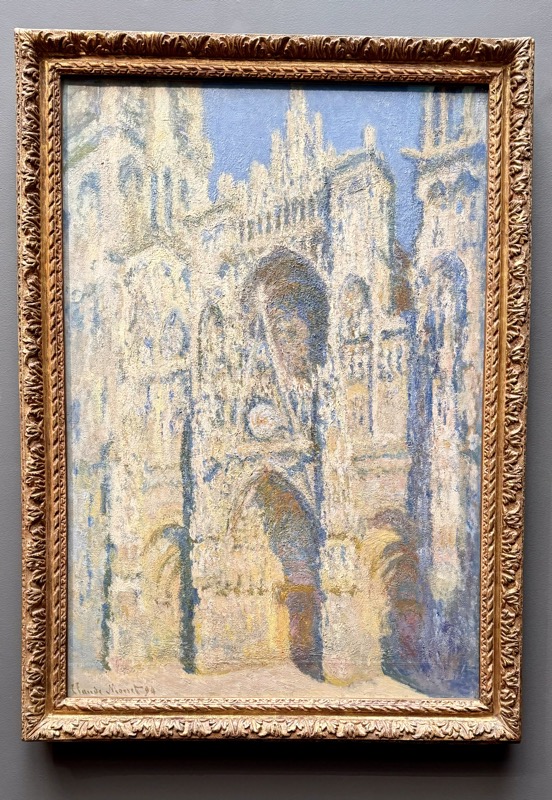
Woman with a Parasol Facing Right, and Woman with a parasol Facing Left.
Claude Monet, 1885, oil on canvas. The mondella was named Suzanne Hoschedé who was the daughter the impressionist collector Ernest Hochedé, but these were not meant as portraits. His outdoor figures were attempting to capture the landscape as the subject.
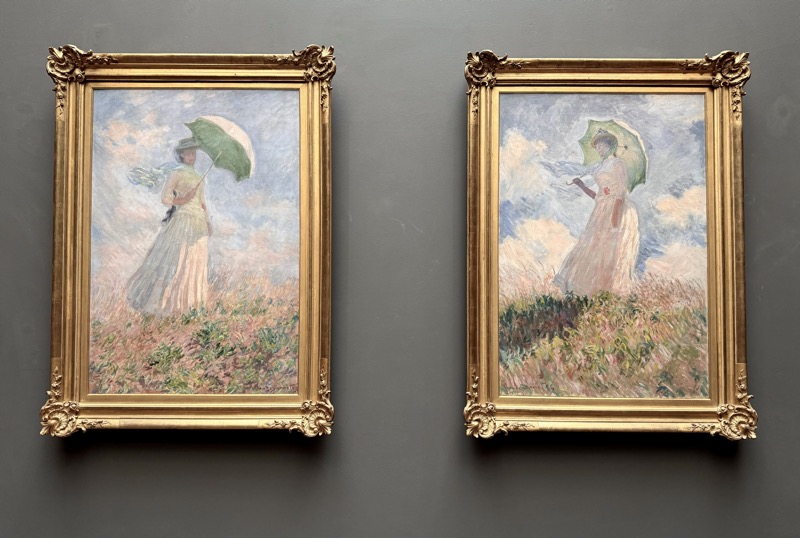
Henri-Edmond Cross.
Maximilien Luce, 1898, oil on canvas… I quite like this one, it’s amazing how much detail is conveyed with such frugal brush strokes and no blending to speak of. Beautiful.
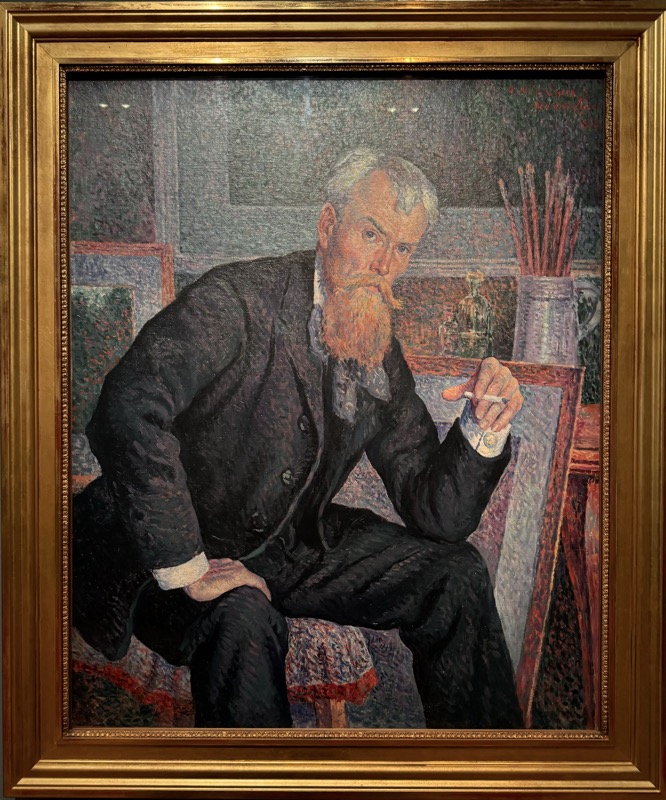
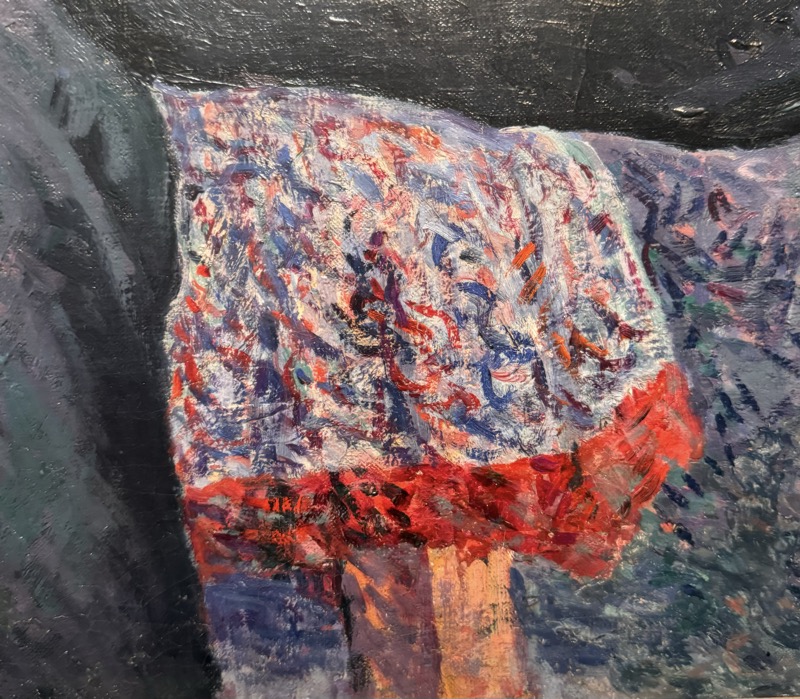
Le Quai Saint-Michel et Notre-Dame.
Maximilien Luce, 1901, oil on canvas.
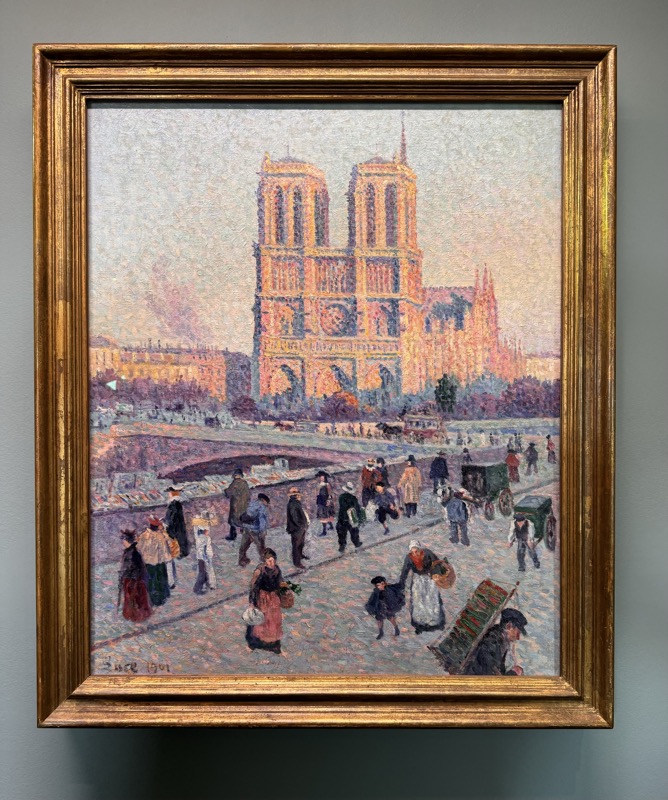
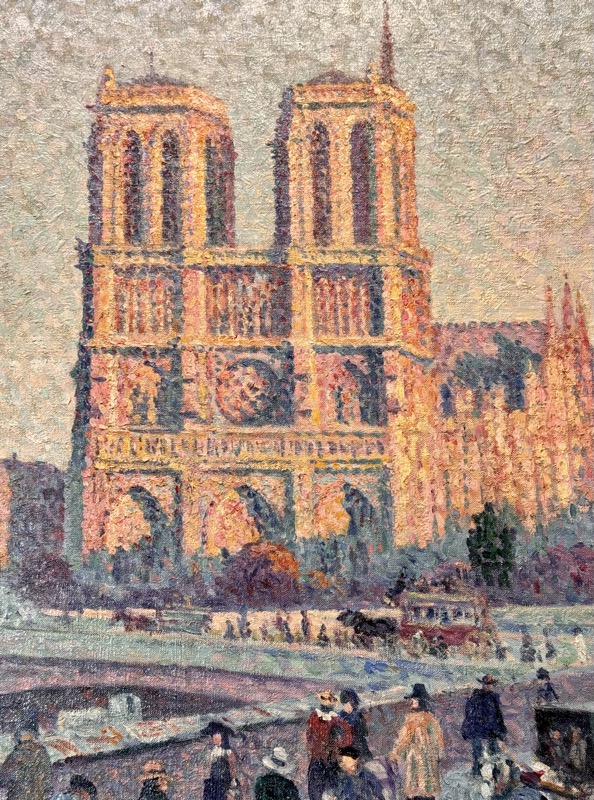
Georges Seurat’s Palette from 1891… what a cool object to have here – obviously it’s oil paint on timber.
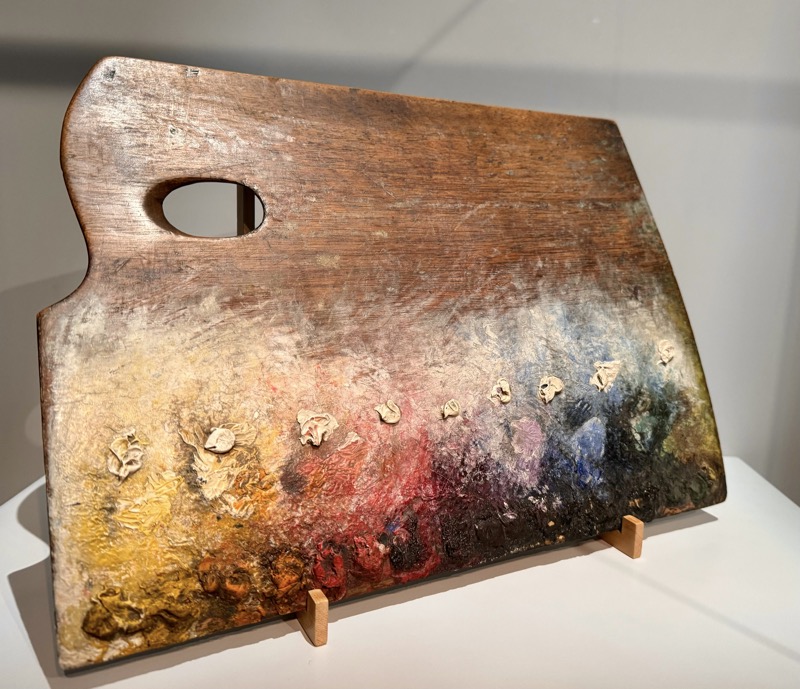
The museum has imagery all around the place of the ‘Sunday Afternoon on the Island of La Grande Jatte’, which is one of those annoying things museums seem to do these day to create interest – but of course it isn’t here, it’s at the Art Institute of Chicago. They do have some very small studies that were done for the painting though. These are barely A4 in size, the full painting is 2m high and 3m wide.
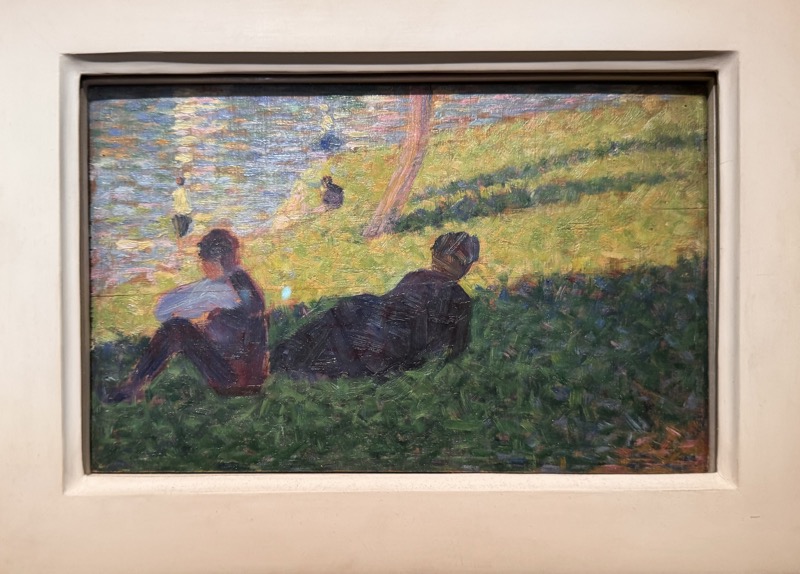
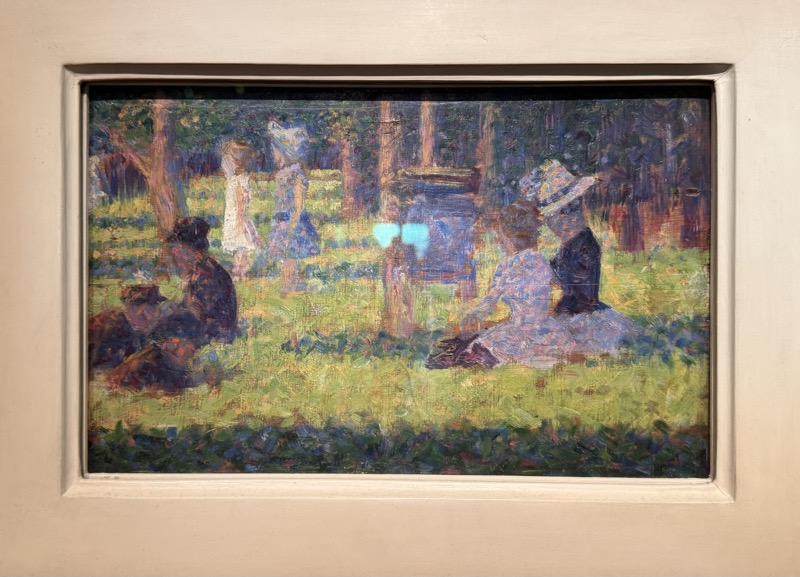
Circus.
Georges Surat, 1890-1891, oil on canvas. This work is considered incomplete as Surat died prematurely while working on it. I’ve often wondered about the curatorial choices that go into displaying some of these well known or important works – but apparently Surat chose this blue frame himself.
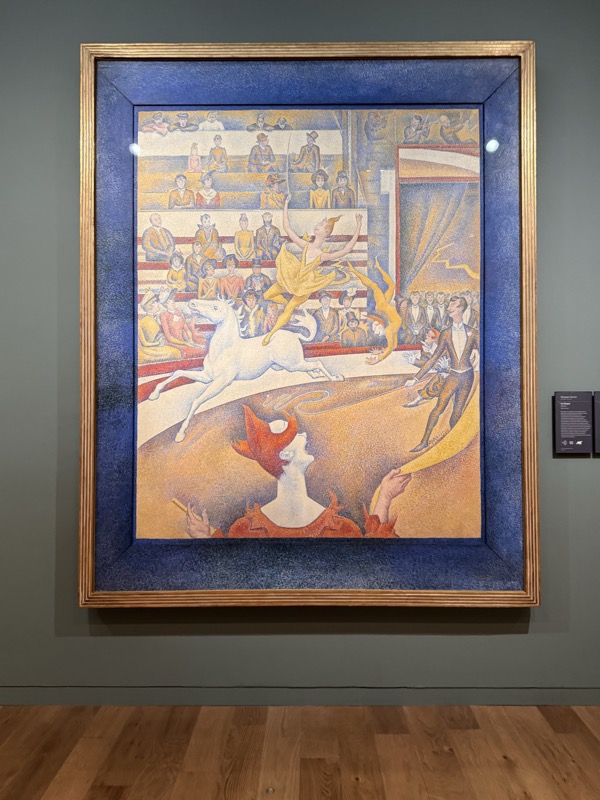
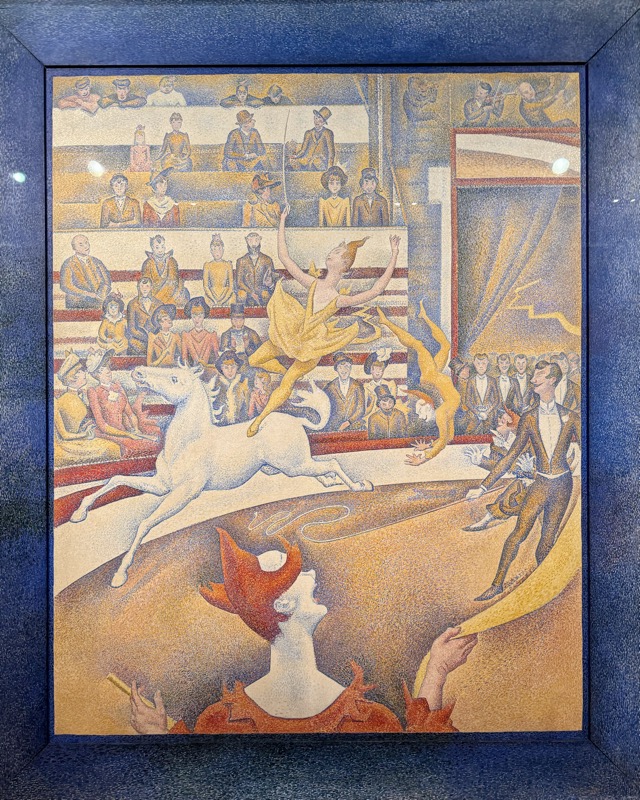
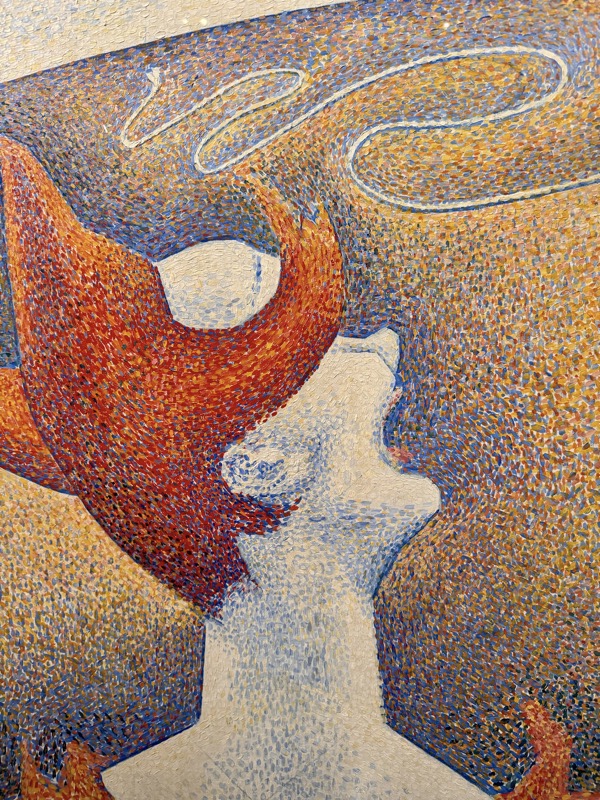
Couple dans la rue.
Charles Angrand, 1887, oil on canvas.
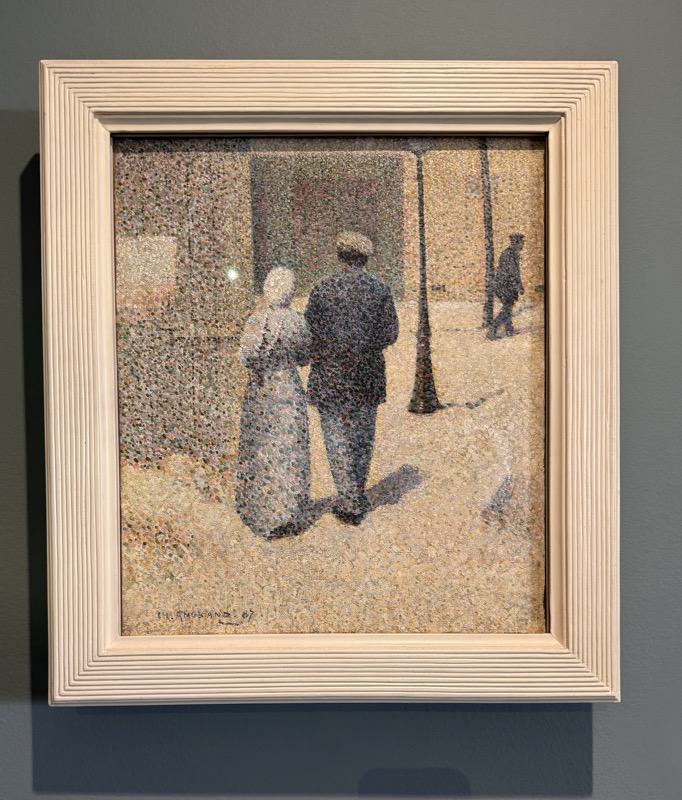
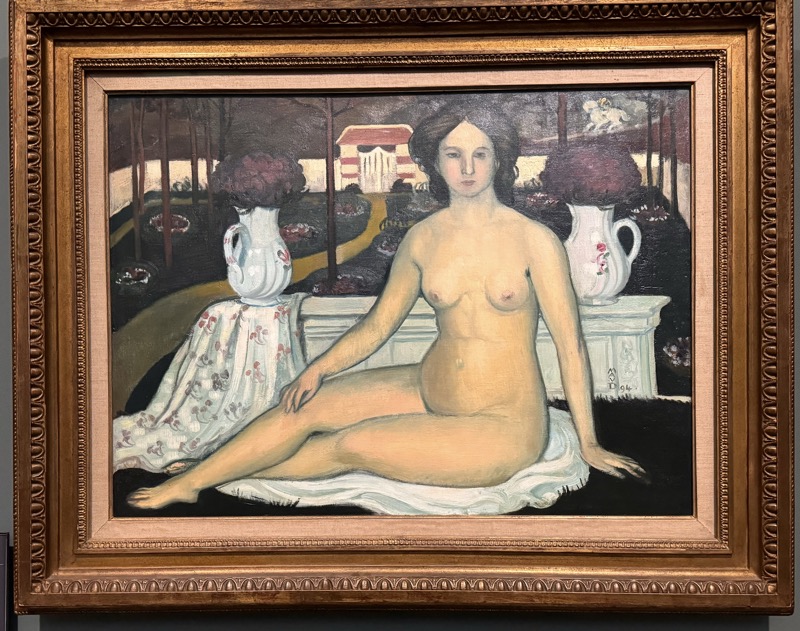
La Seine à Herblay.
Maximilien Luce, 1890, oil on canvas.
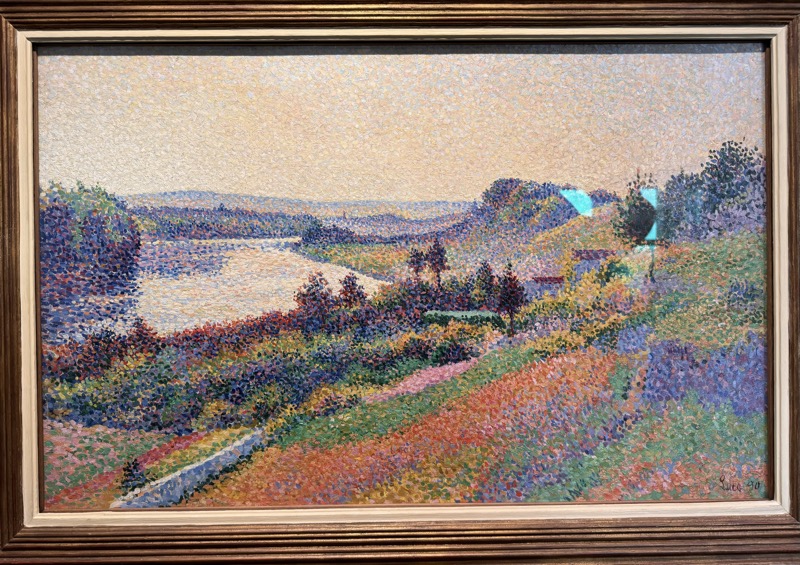
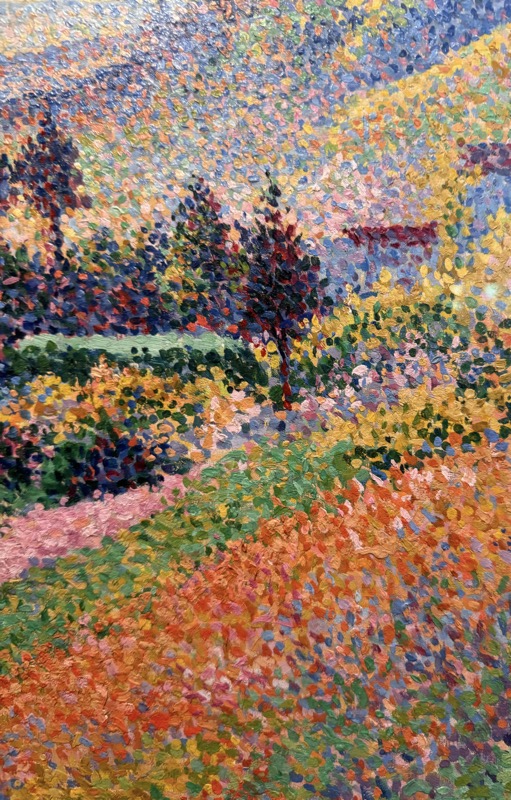
Entrée du port de la Rochelle.
Paul Signac, 1921, oil on canvas… this one was an unexpected little gem that I just loved. The colours are so vibrant and beautiful, and again, such beautiful texture created by the brushwork.
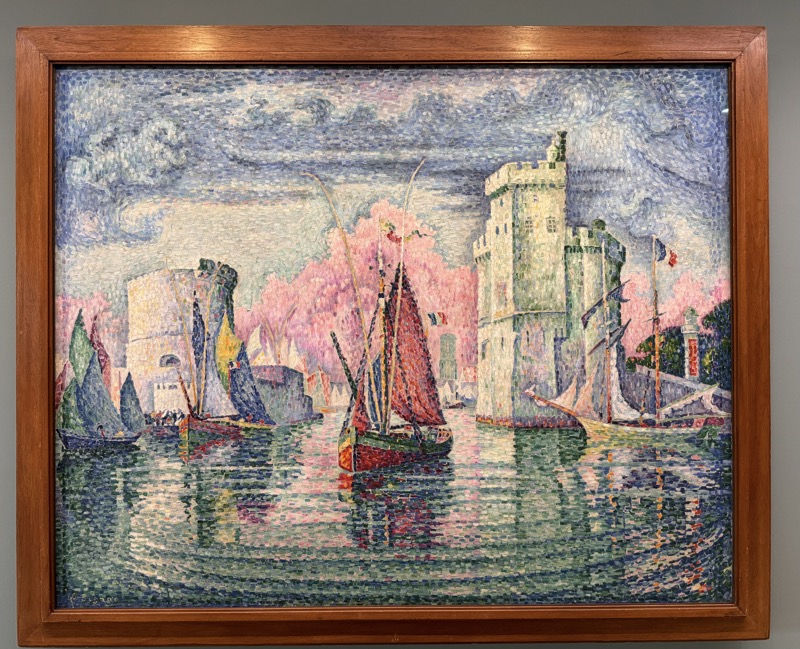
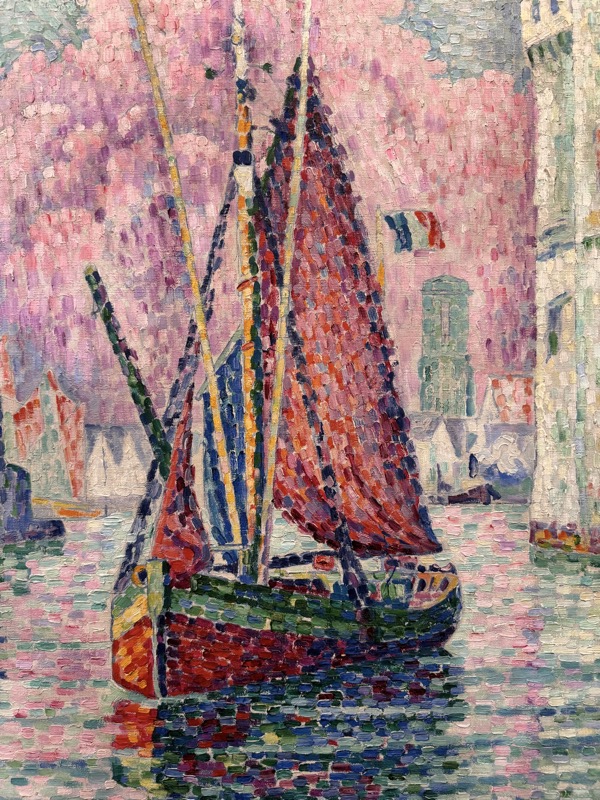
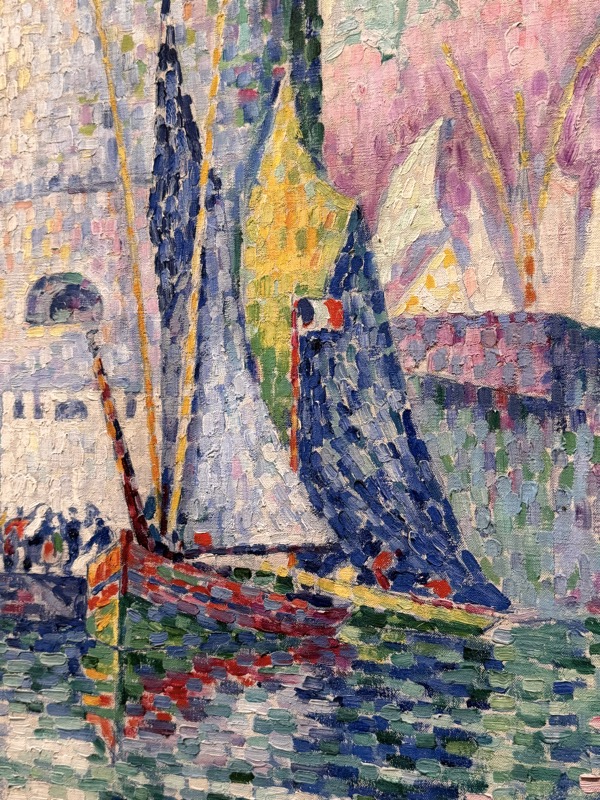
Jardins publics: L’interrogatoire.
Édouard Vuillard, 1894-1936, oil on canvases.
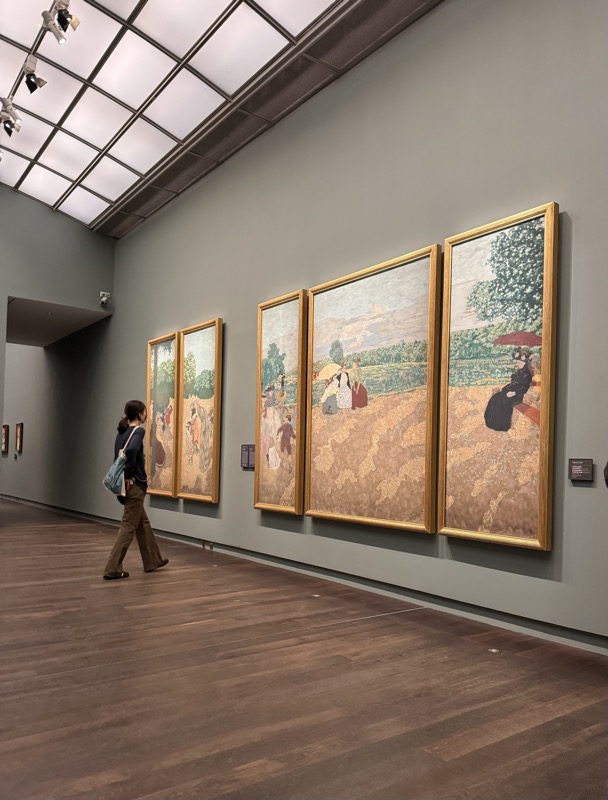
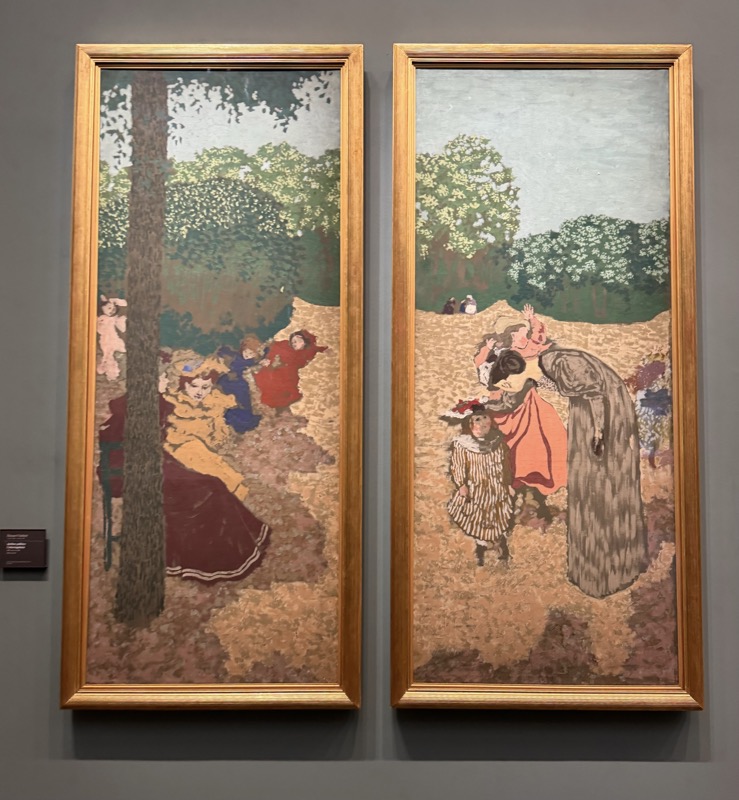
Et l’or de leur corps.
Paul Gauguin, 1901, oil on canvas. I have little affection for Gauguin – partly because I don’t really enjoy his style, but also because I think he just spent years in Tahiti shafting native women. :/
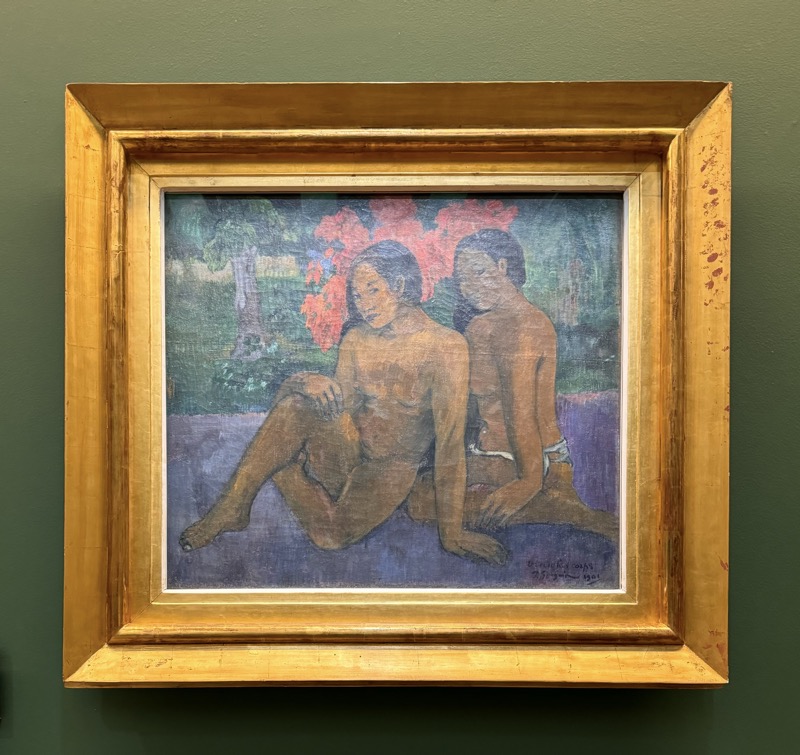
Jane Avril Dancing.
Henri de Toulousse-Lautrec, 1892, thinned oil paint on poster board.
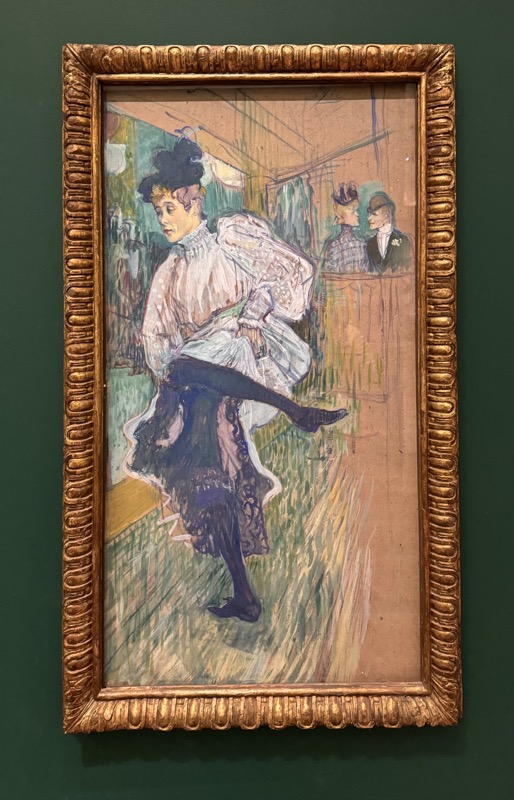
The Robe.
c.1982, distemper on flannel (?)
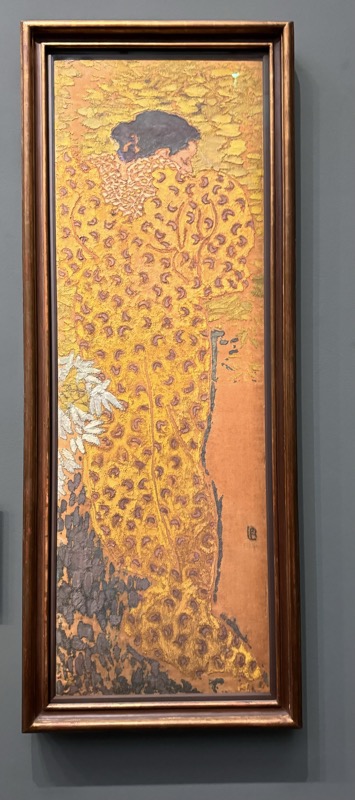
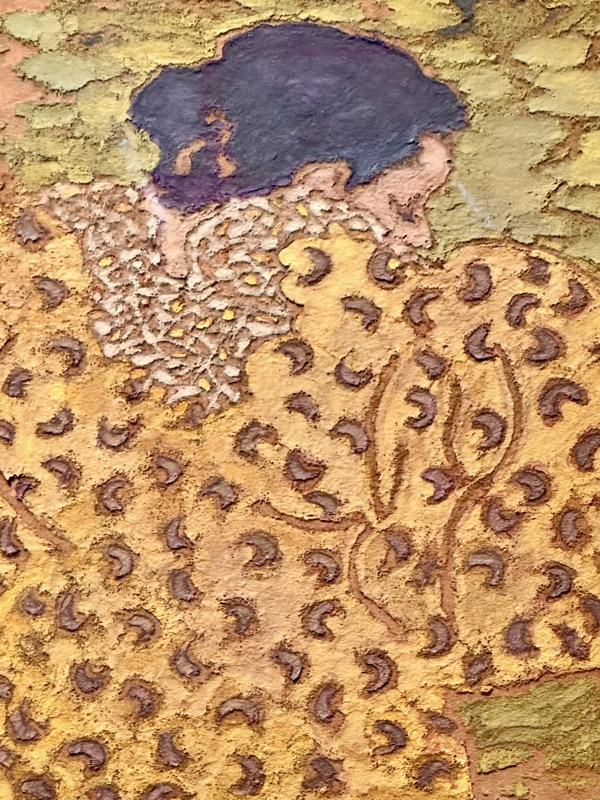
The restaurant was closed but looked very funky… love the colourful chairs.
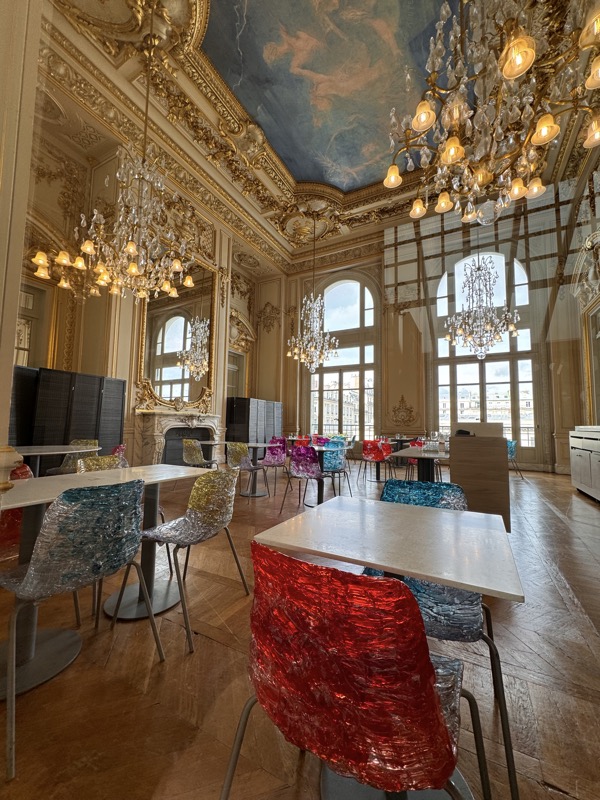
Logement prolétaire (Proletärkarsern).
Eugène Jansson, Stockholm, 1898, oil on canvas.
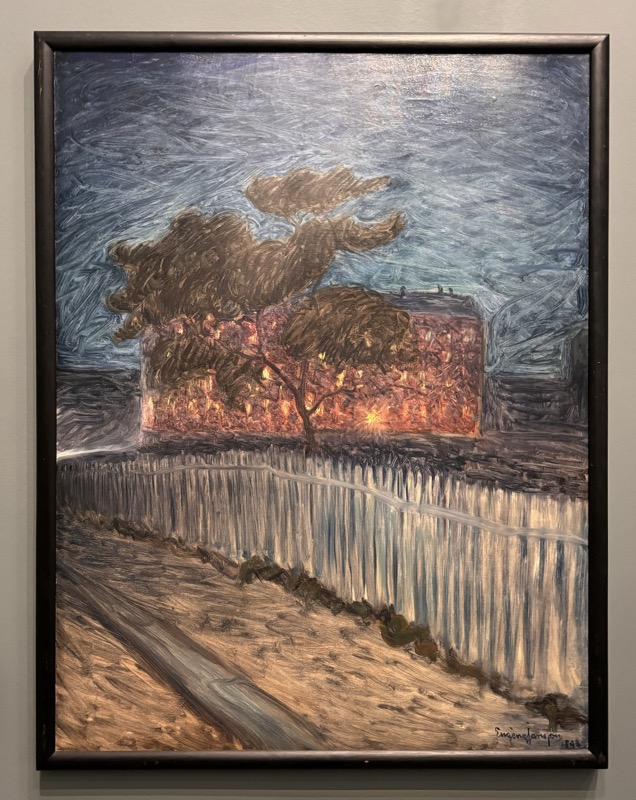
La pointe d’Andey, Vallée de L’Avre.
Ferdinand Hodler, 1909, oil on canvas.
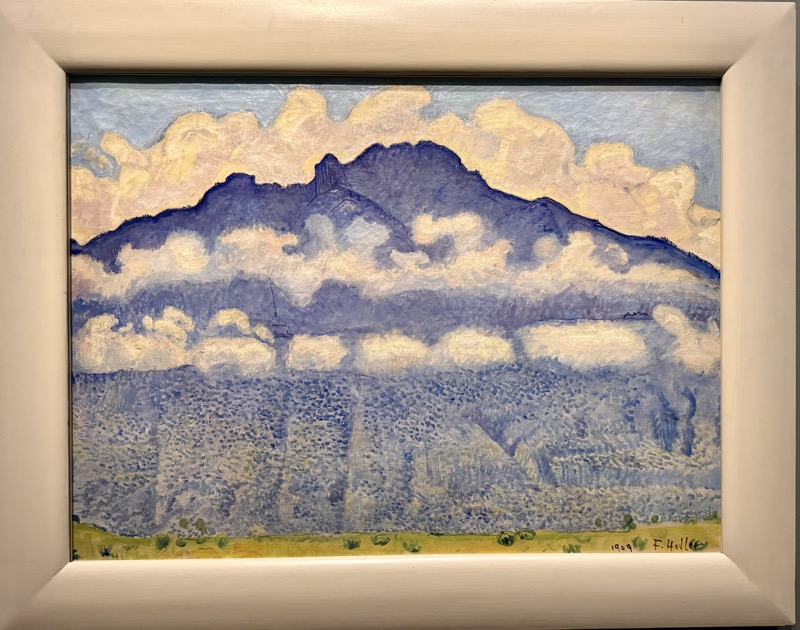
Portrait de l’artist au fond rose.
Paul Cézanne, c. 1875, oil on canvas.
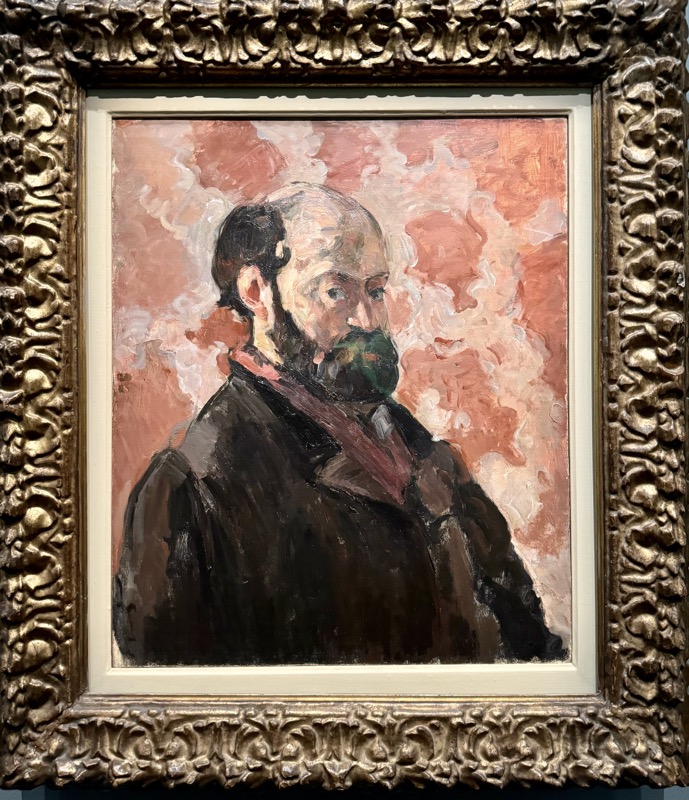
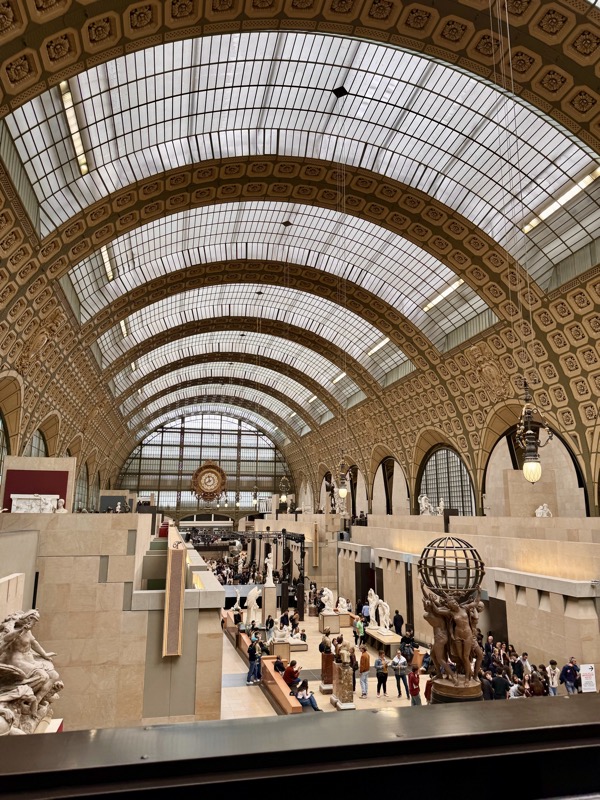
Hercules Kills the Birds of Lake Stymphalia.
Antoine Bourdelle, 1880-1910, bronze.
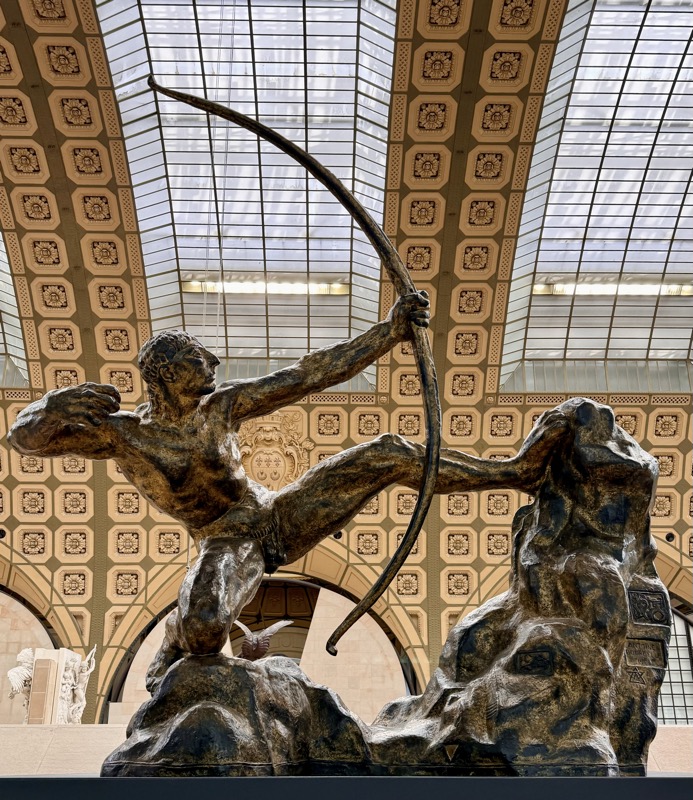
Le Belier Retif, also called, Belier African.
Antoine Bourdelle, 1909, bronze.
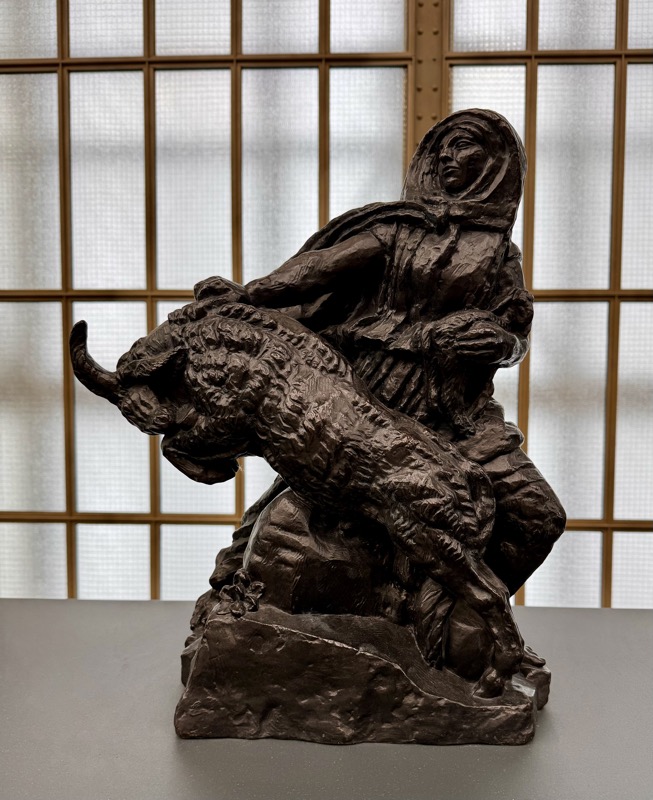
Monument à Jean-Jacque Rousseau…
La Philsophie (centre), with La Verite et la Nature.
La Gloire et La Musique (sides).
Albert Bartholomé, 1910, sculpture en platre
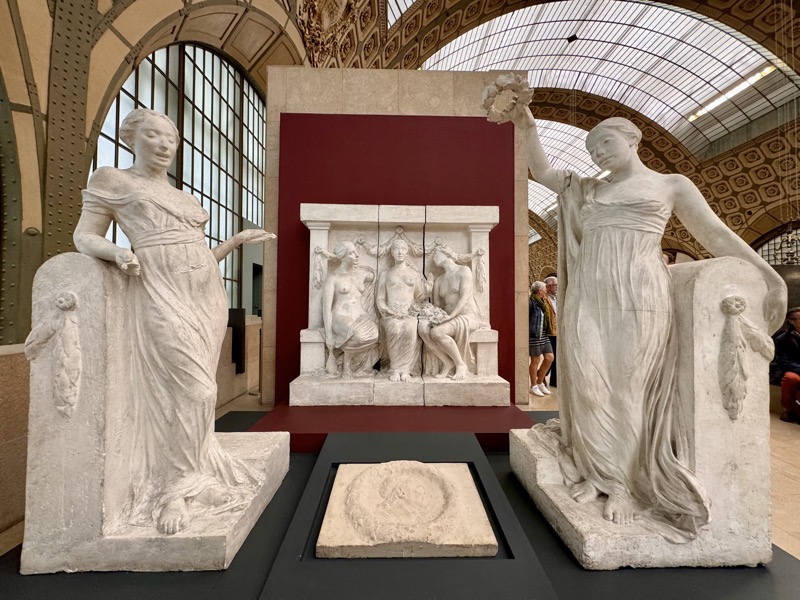
Jeunesse.
Aristide Maillol, 1910, marble.
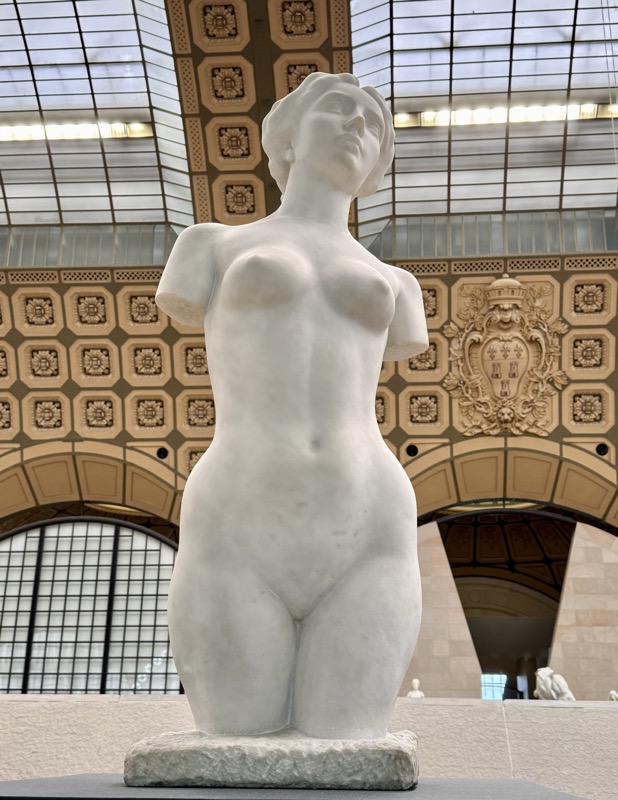
Judgement de Paris.
Pierre-Auguste Renoir, 1914, Platre (signed and dated Renoir).
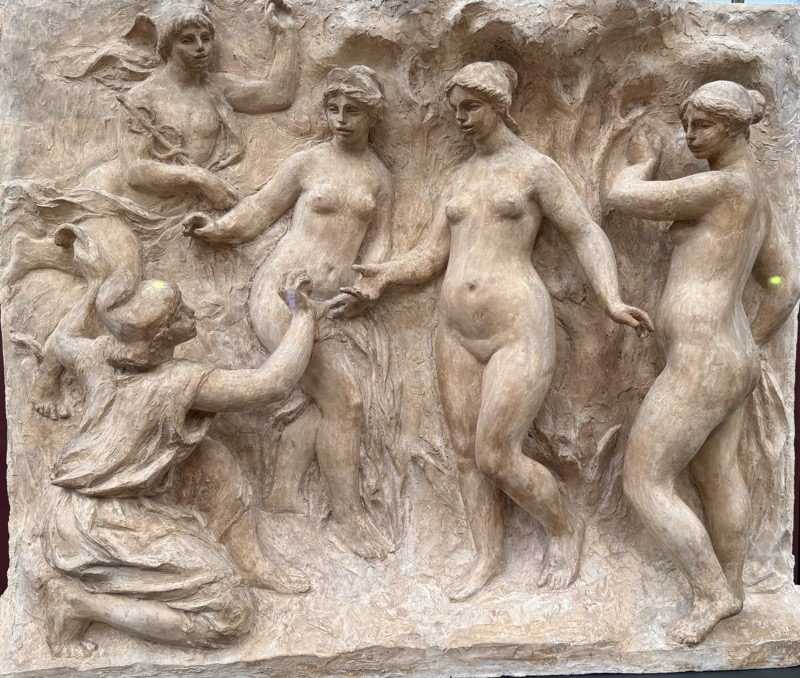
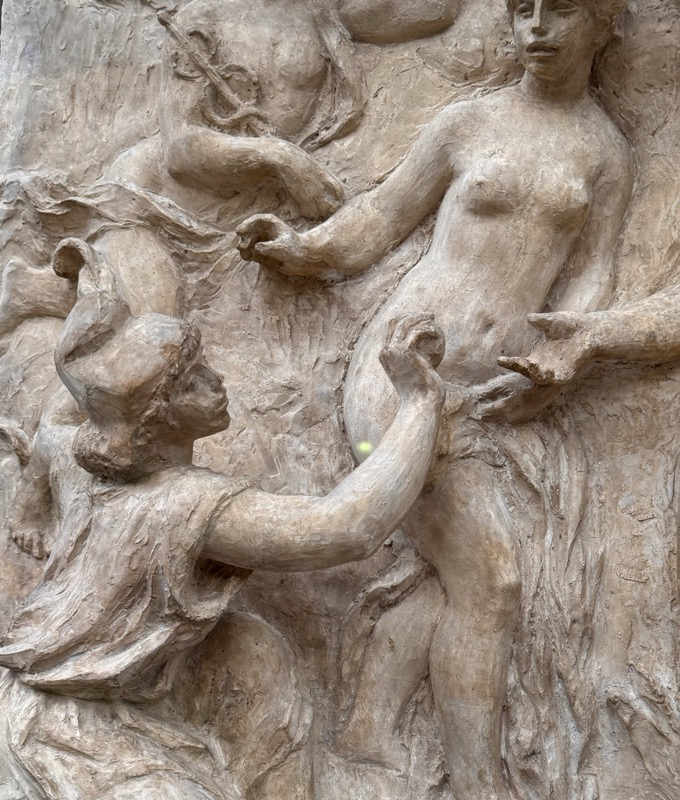
Les Nubiens, also called, Les Chasseurs d’Alligators.
Ernst Barrias, 1894, platre.
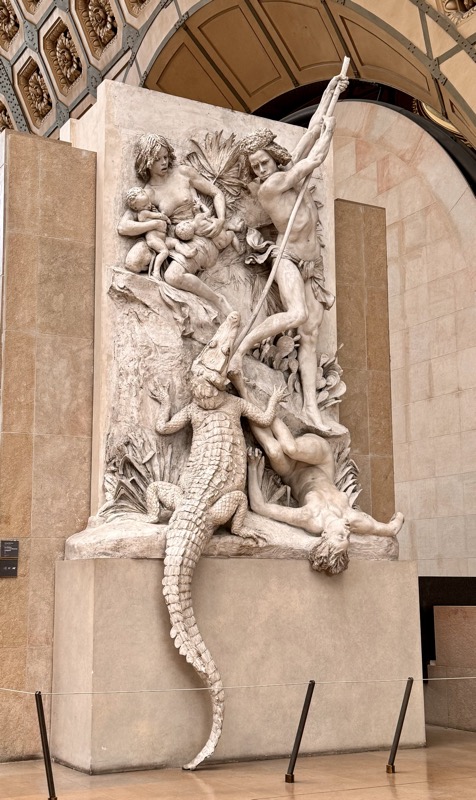
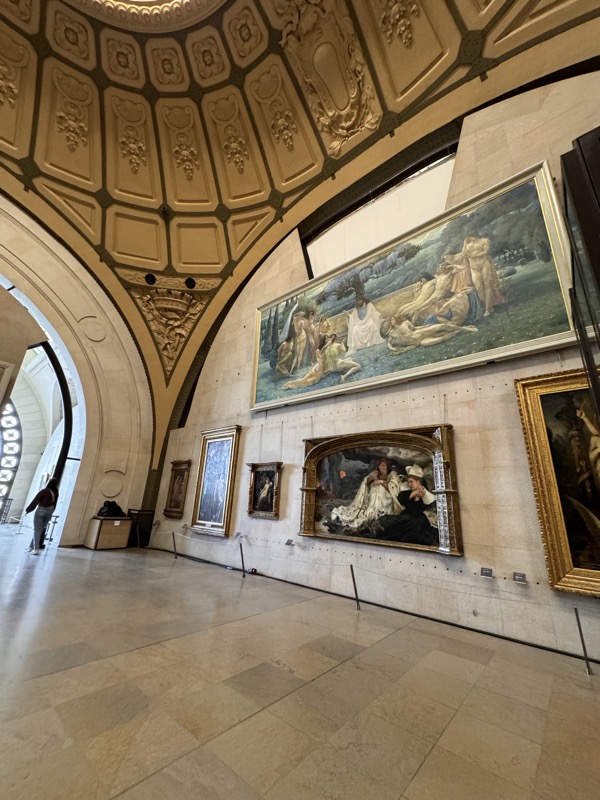
La Roue de la Fortune (Wheel of Fortune).
Edward Burne-Jones, c1875-1883, oil on canvas.
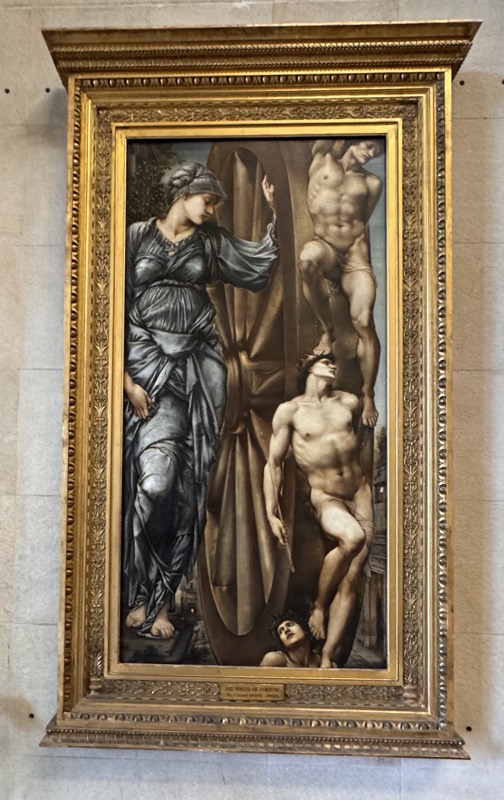
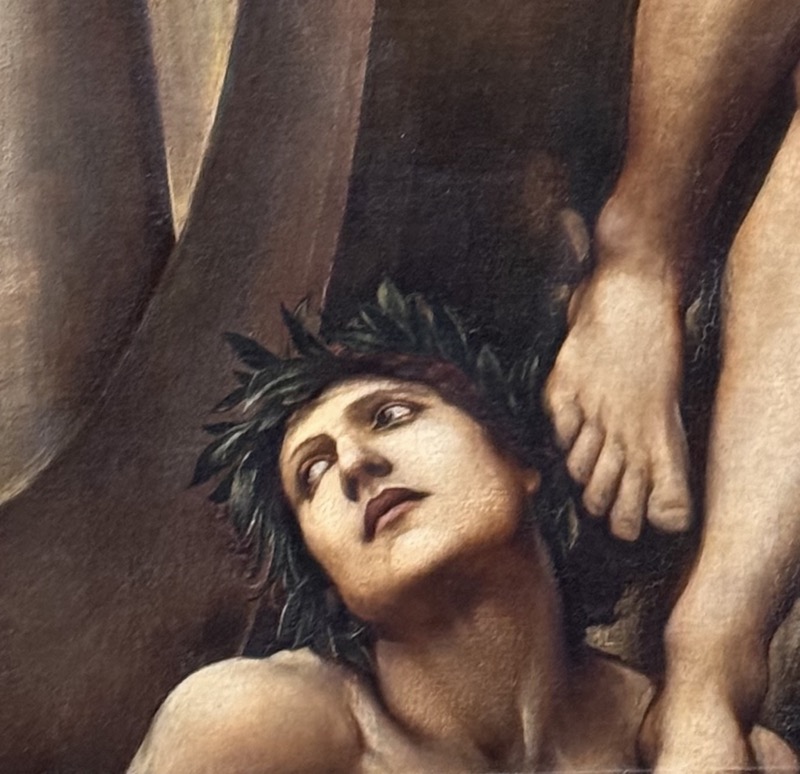
Mercure inventant le caducée.
Jean Antoine Idrac, 1878, marble.
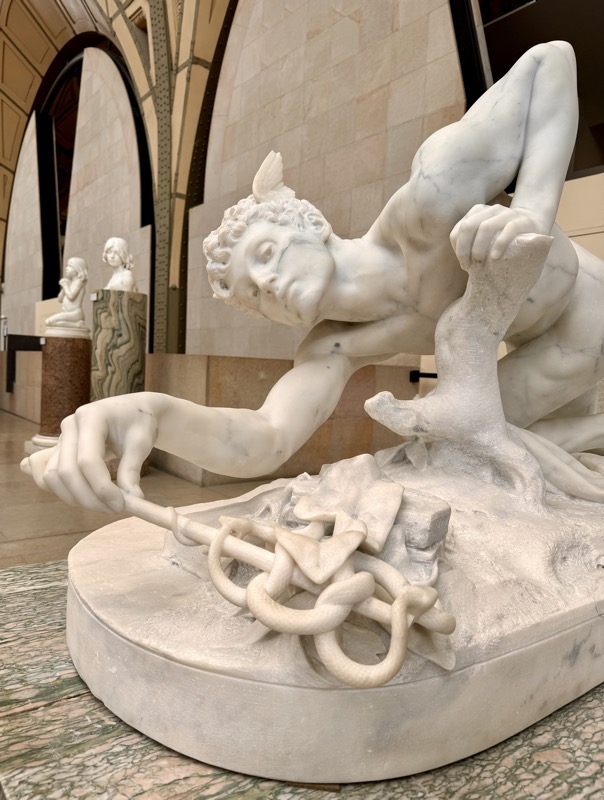
I didn’t get the description for this one… I liked her, even though the poor dear looks like she’s lost her portable! Selfie Queen.
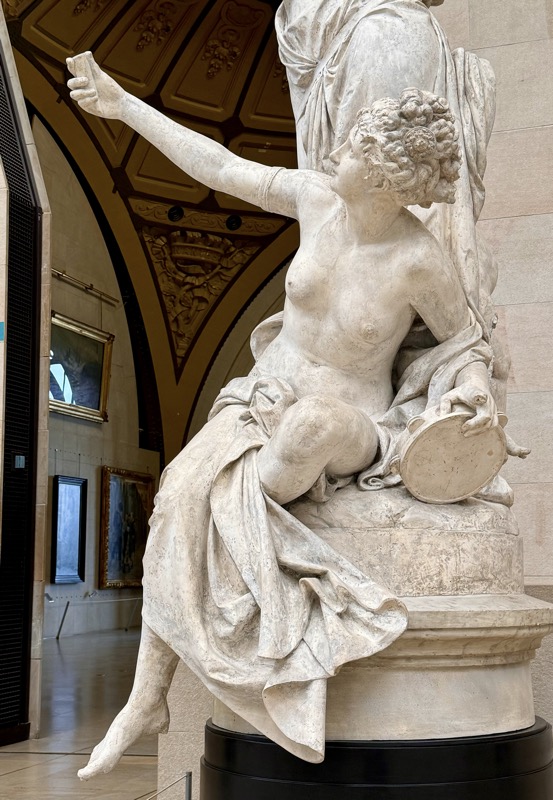
Polar Bear.
Francois Pompon, c.1923-1933, stone.
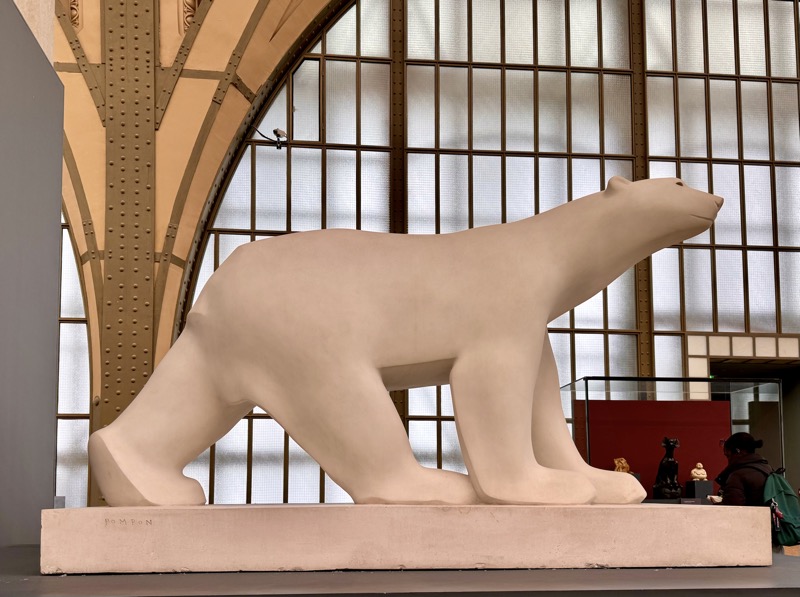
Pompon famously worked with Rodin, but chose animals as his focus. This bear was one he watched pace in a cage at the zoo in the Jardins des Plantes, and was carved from a 3 tonne stone… every bit of it that wasn’t polar bear was removed and he is remarkably sleek and modern looking, even today.
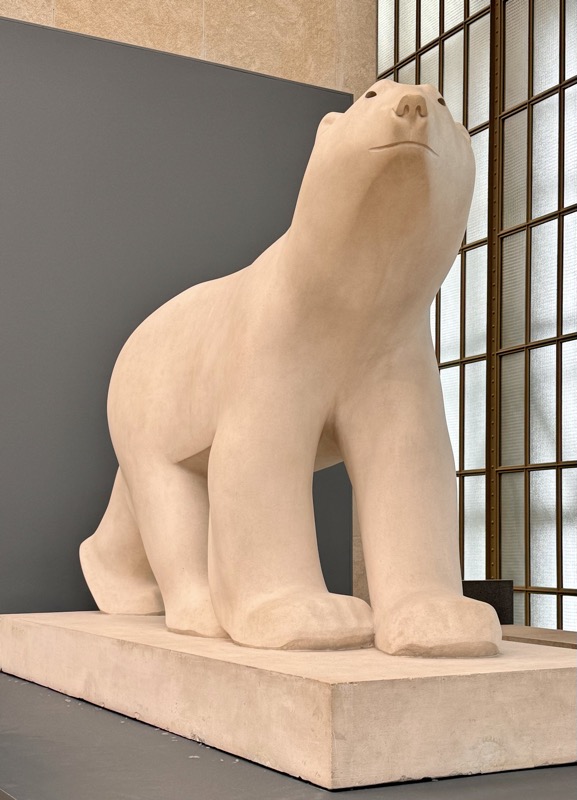
We had to bail on the Musée D’Orsay, as we had skipped breakfast and were getting seriously hungry. Went for a bit of a wander to find lunch… on the way, the famous: Sorbonne University.
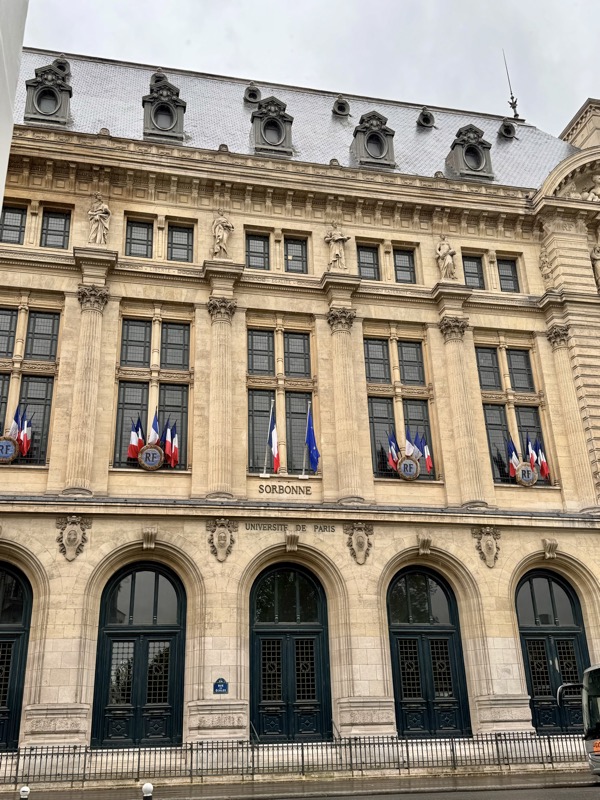
Lunch Bistro, chosen by Mr K;
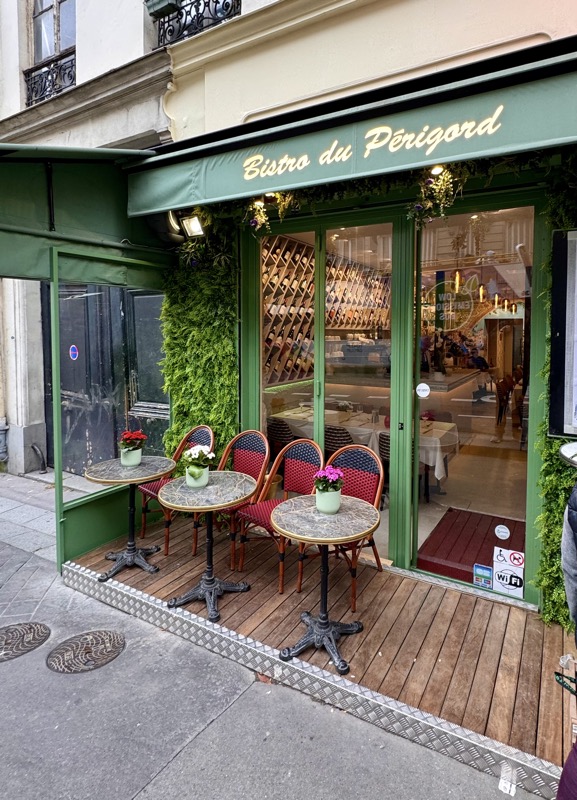
Very nice choice. Many bistros will have a daily menu that gives you choices of two or three course meals at very reasonable prices – this is how Parisians often order their lunches, rather than a la carte. So we took that option. Jambon et fromage crépes, steak au poivre for Mr K, boeuf bourguignon for me, crème caramel for Mr K, and I spoiled myself with a crème brulee. Delicious and now we’ll be skipping dinner too!
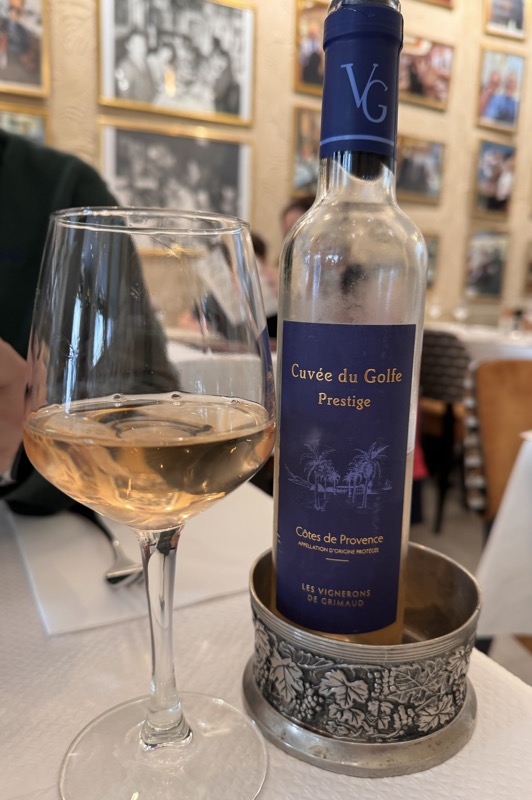
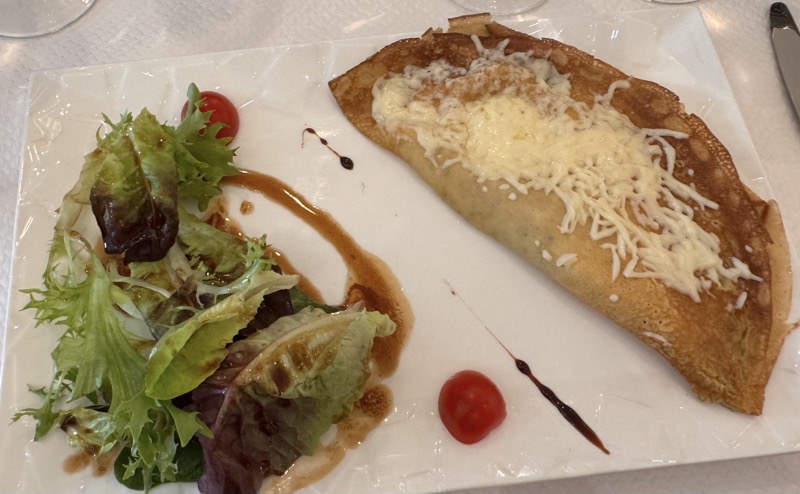
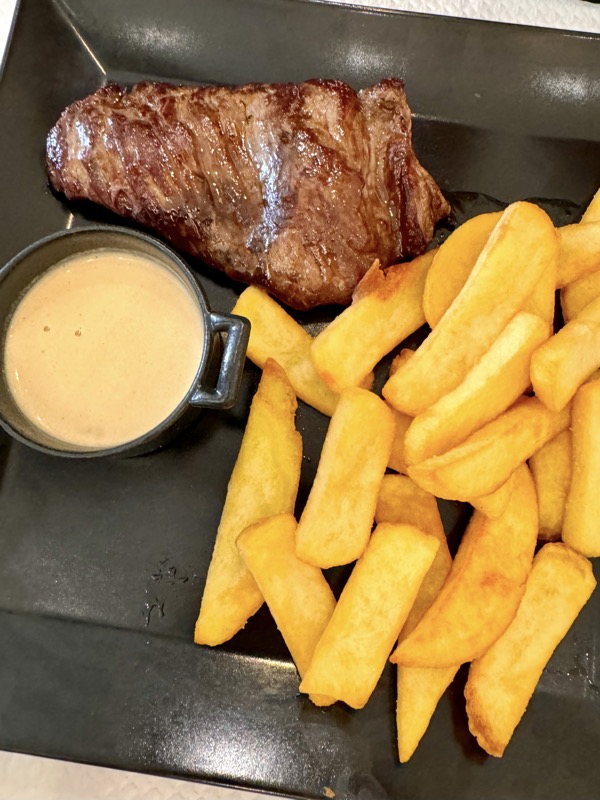
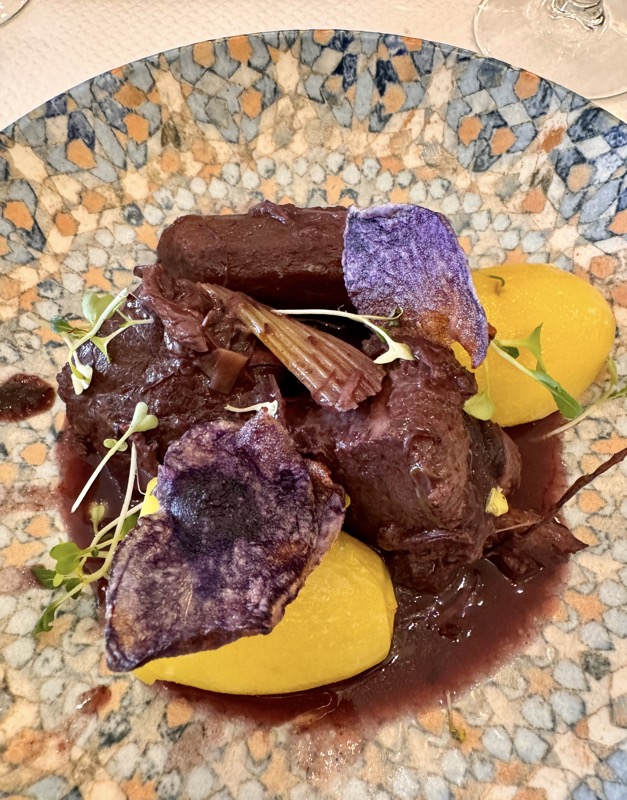
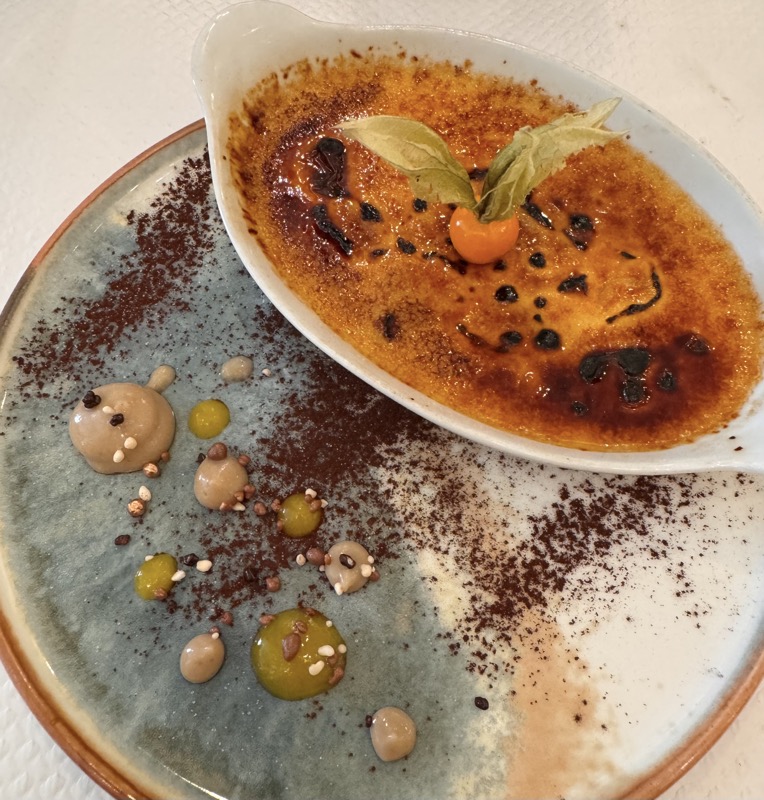
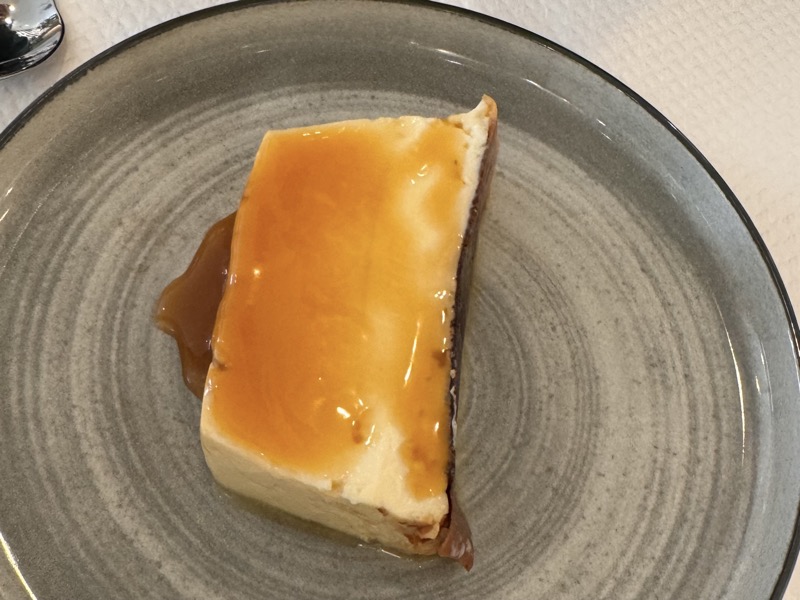

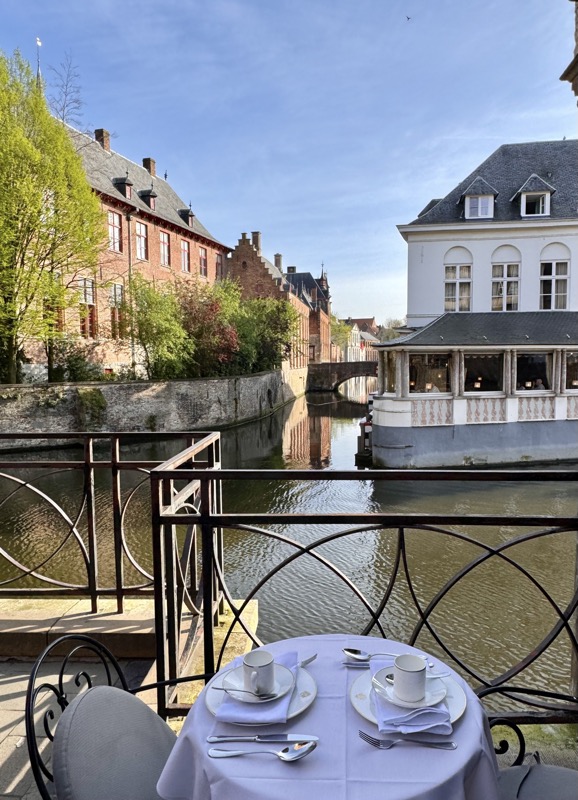
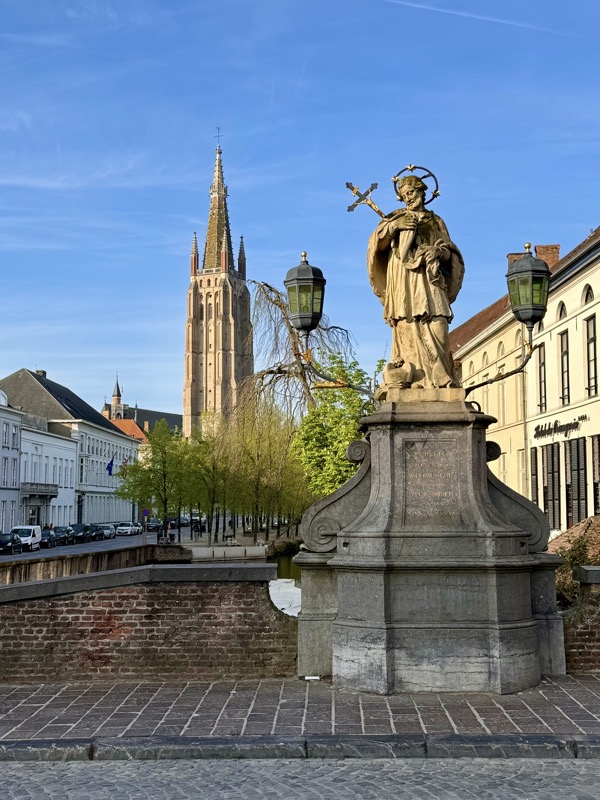
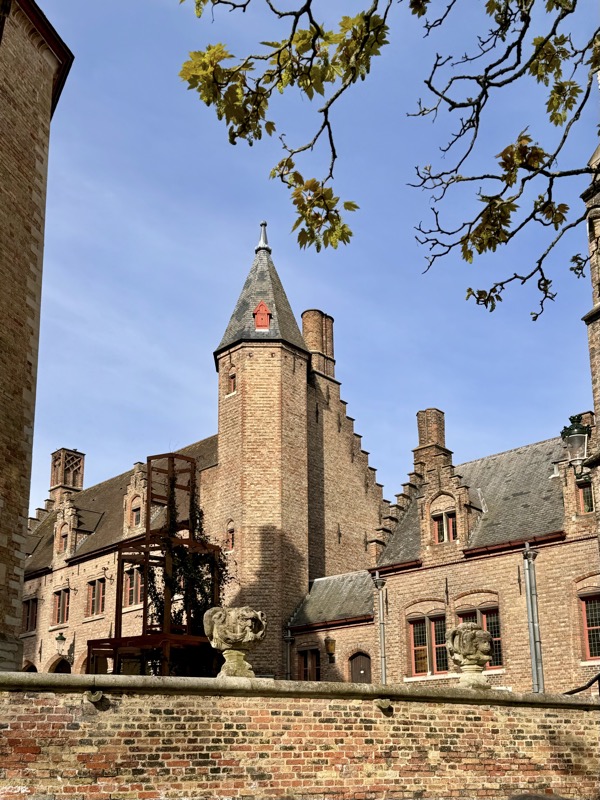
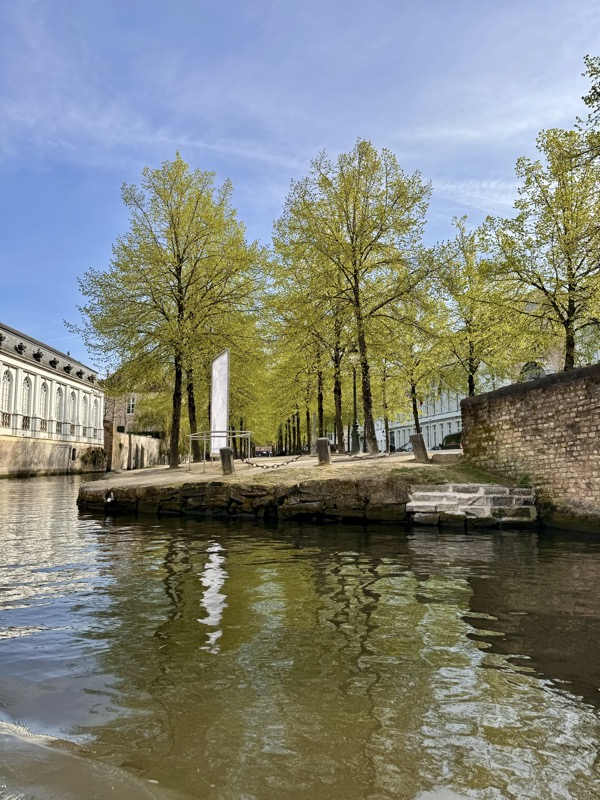
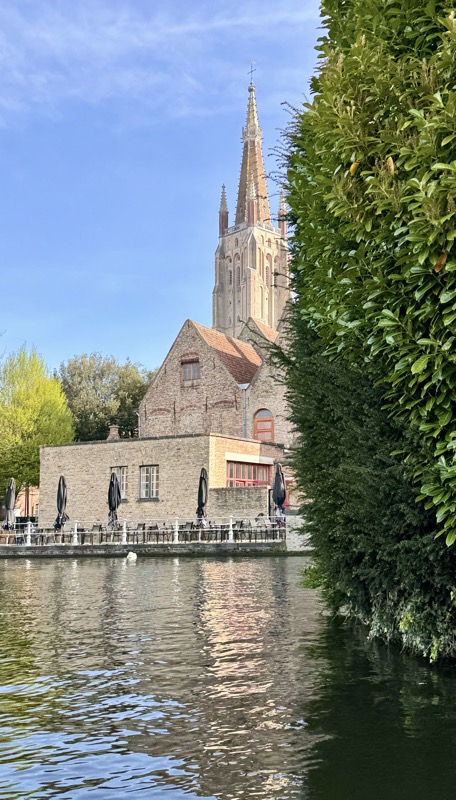
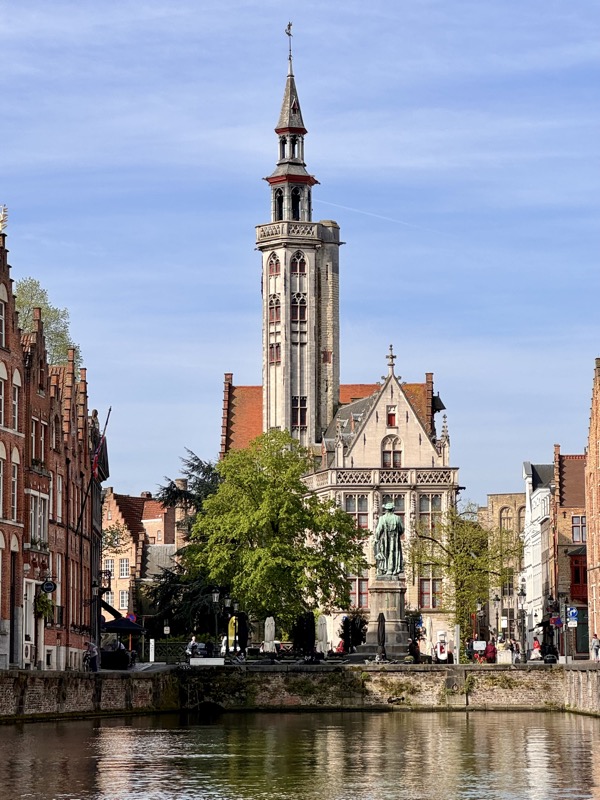
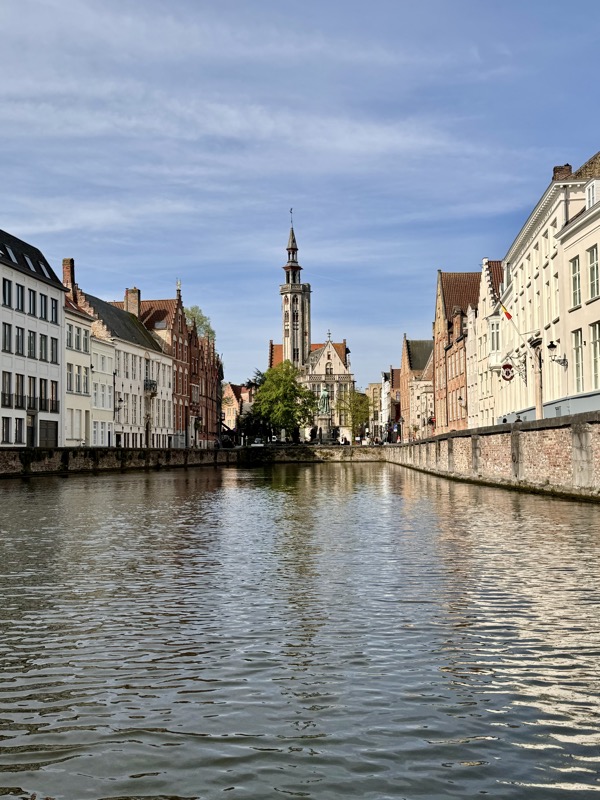
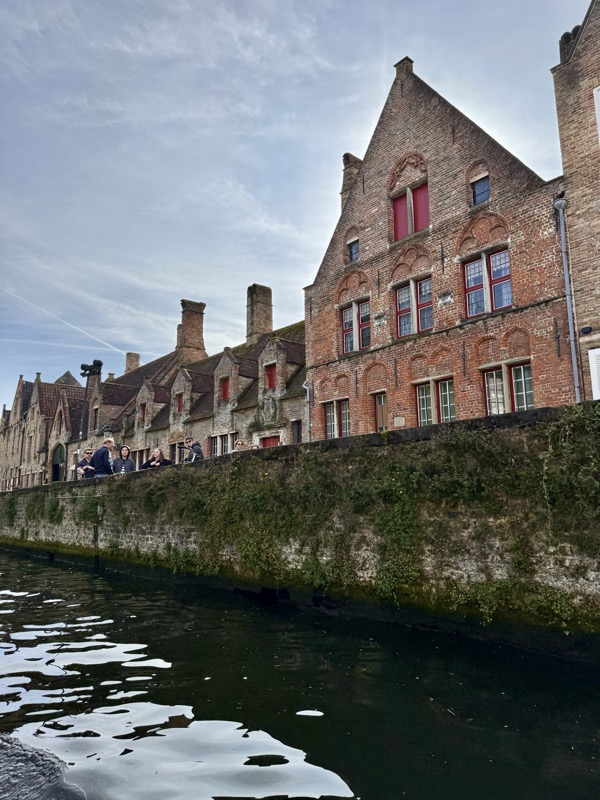
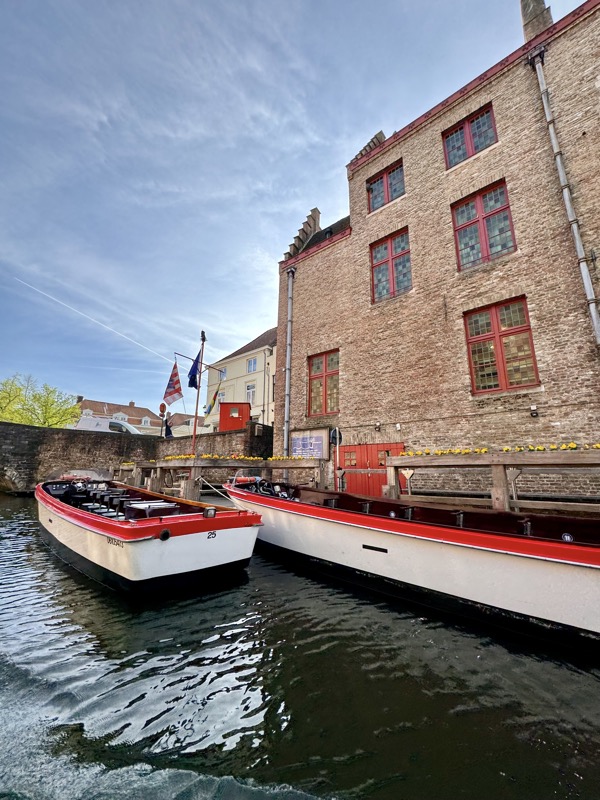
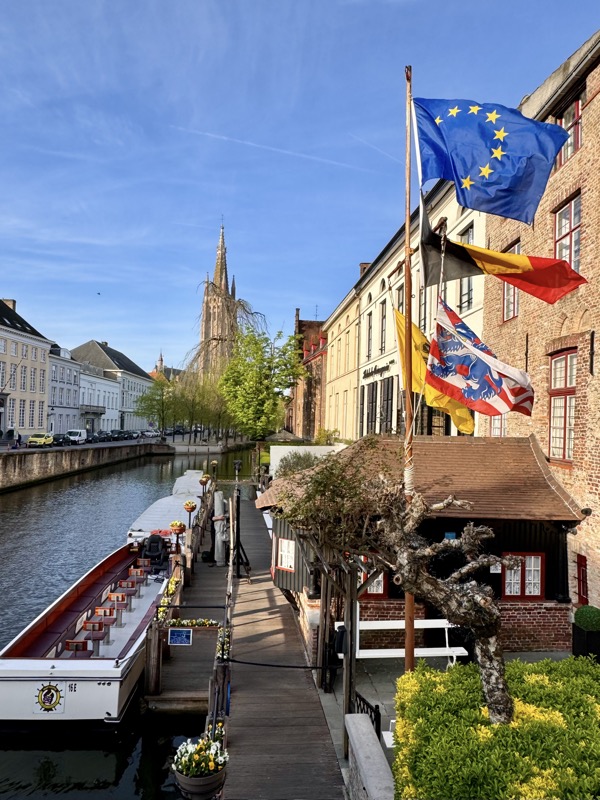
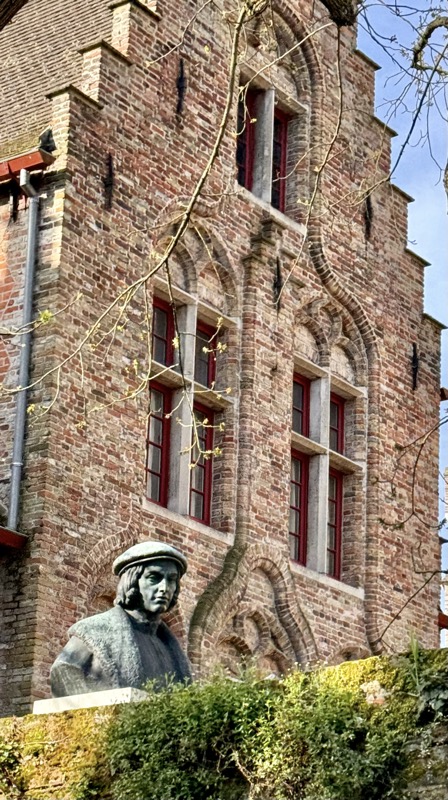
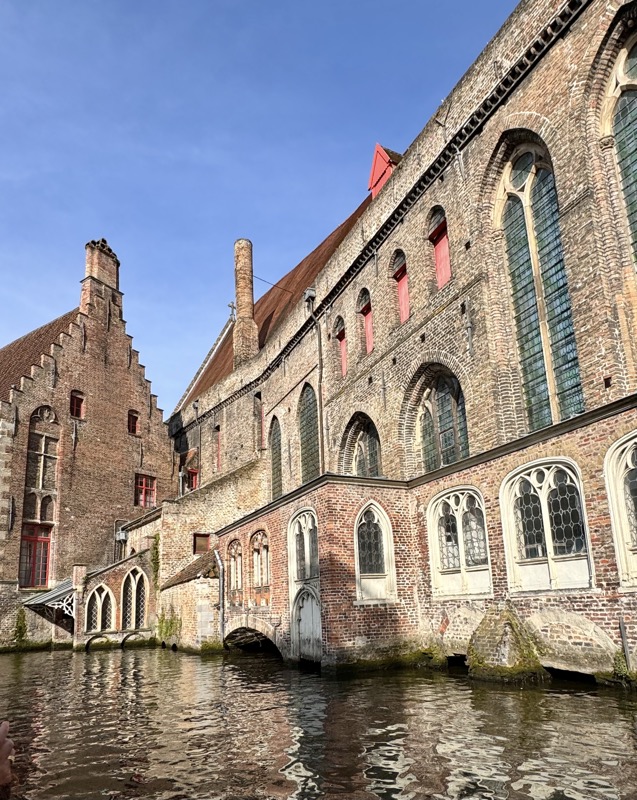
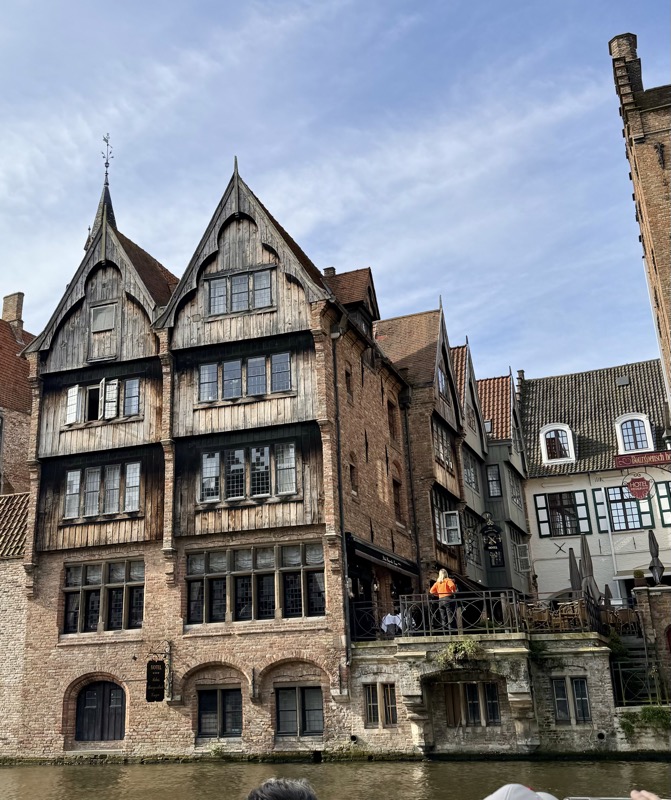
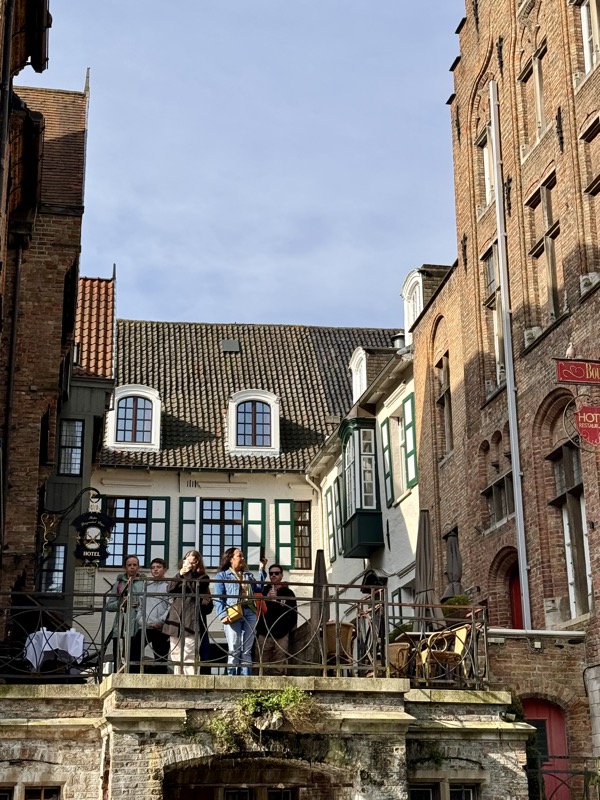
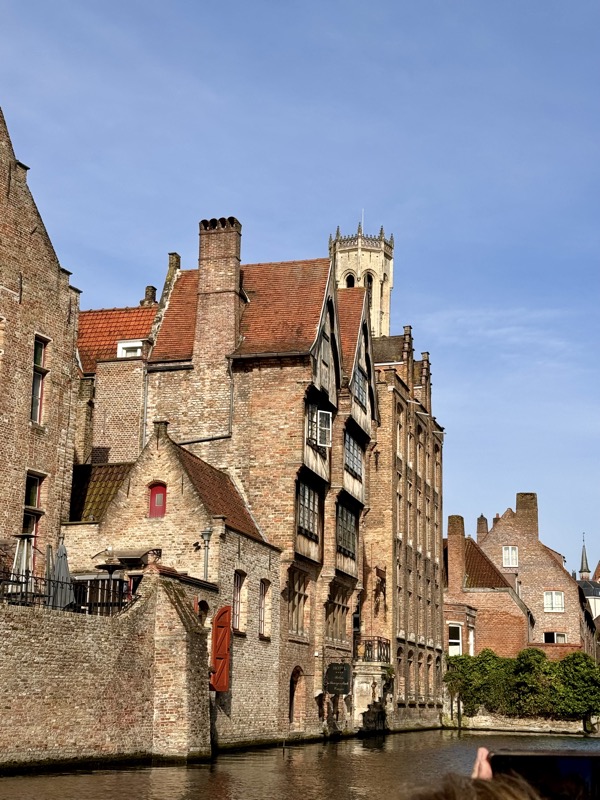
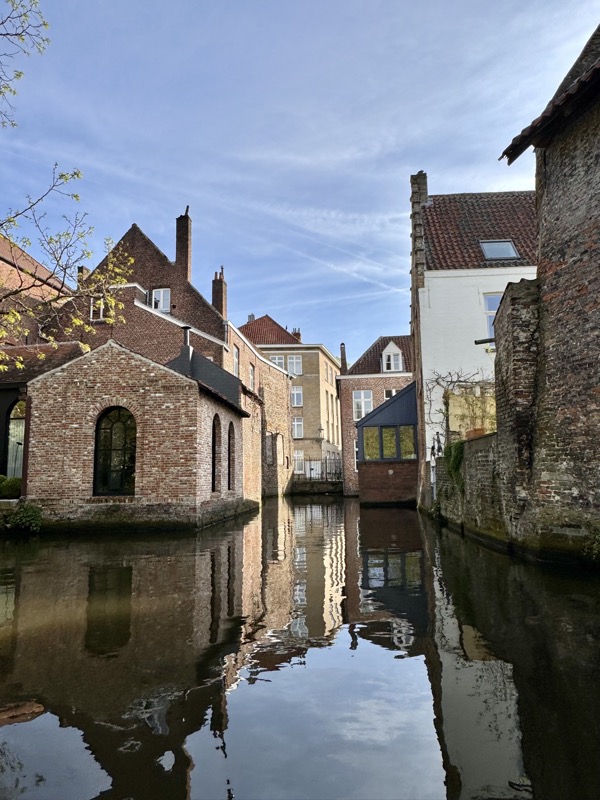
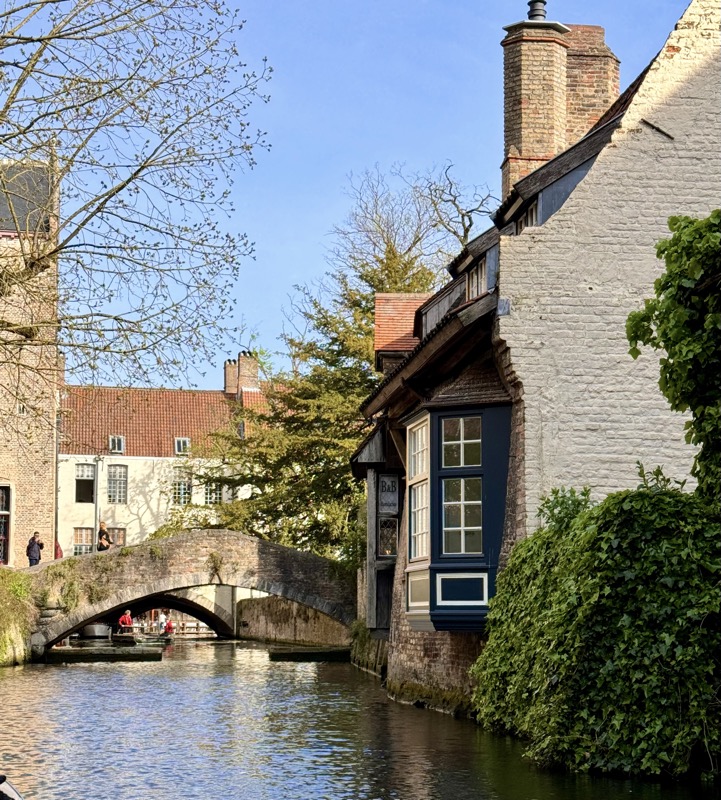
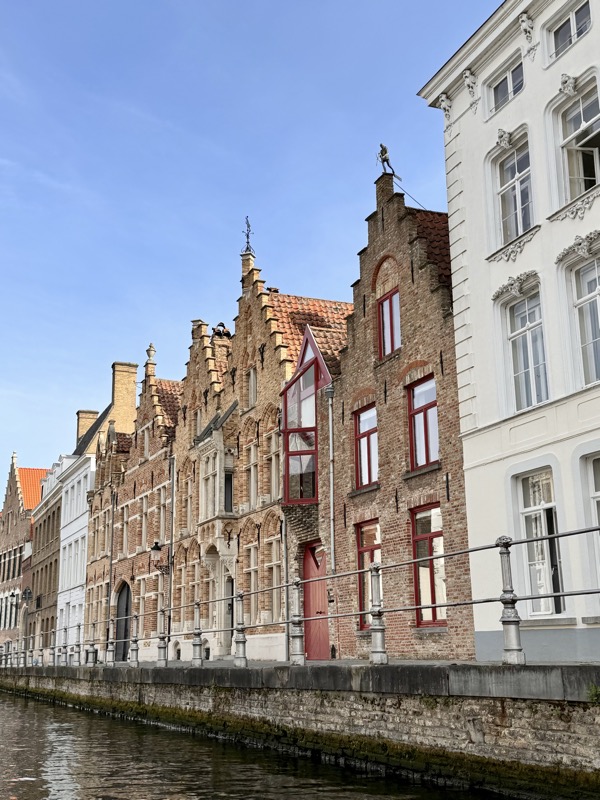
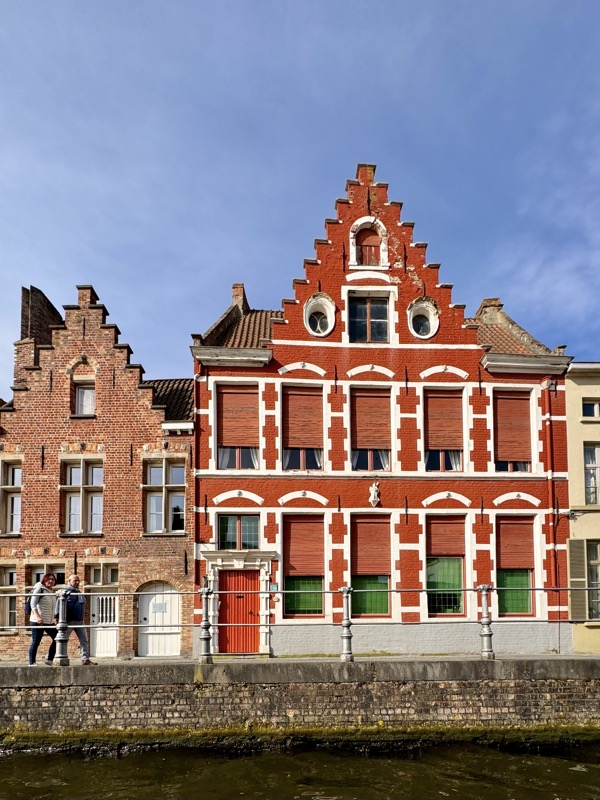
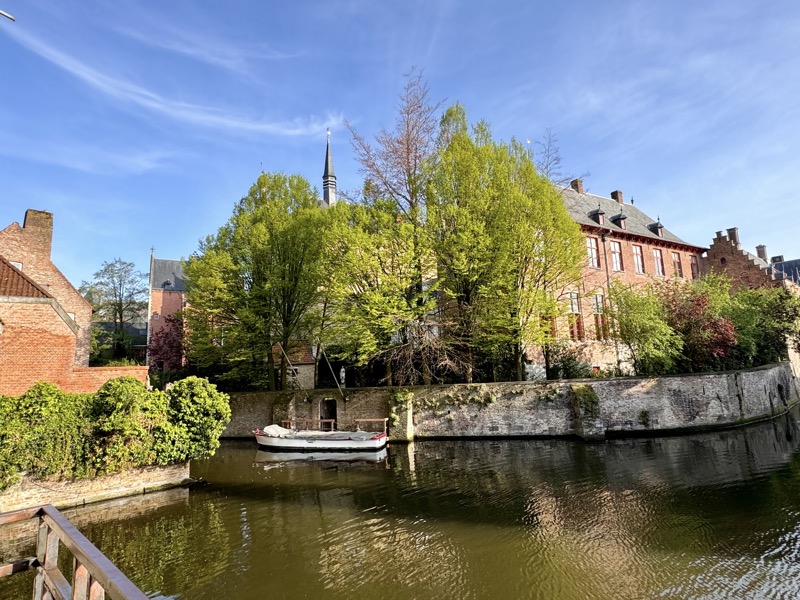
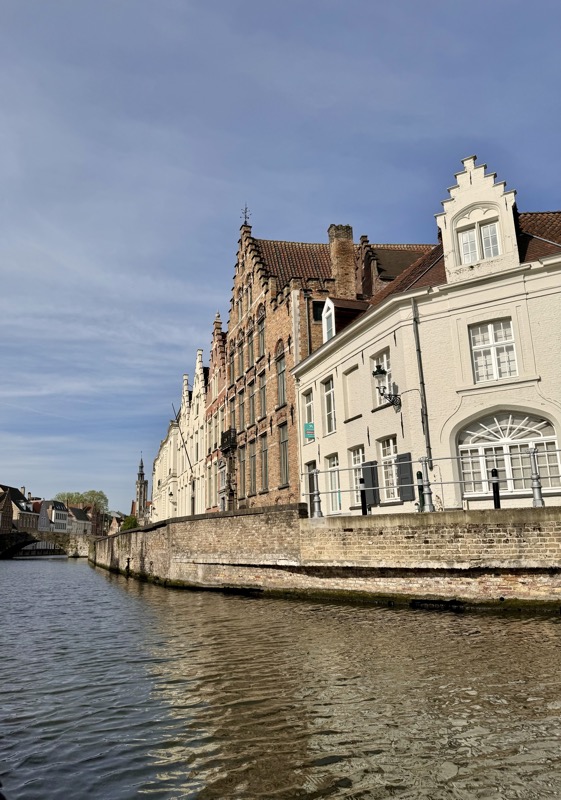
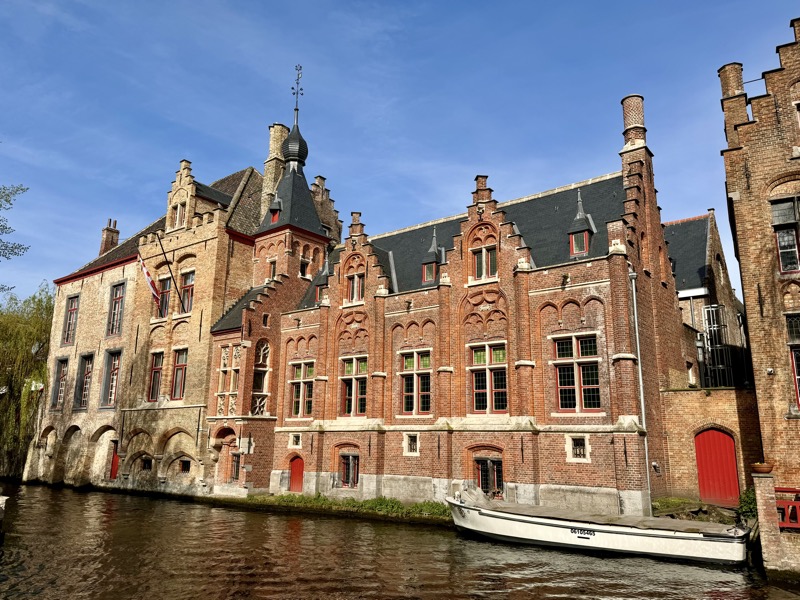
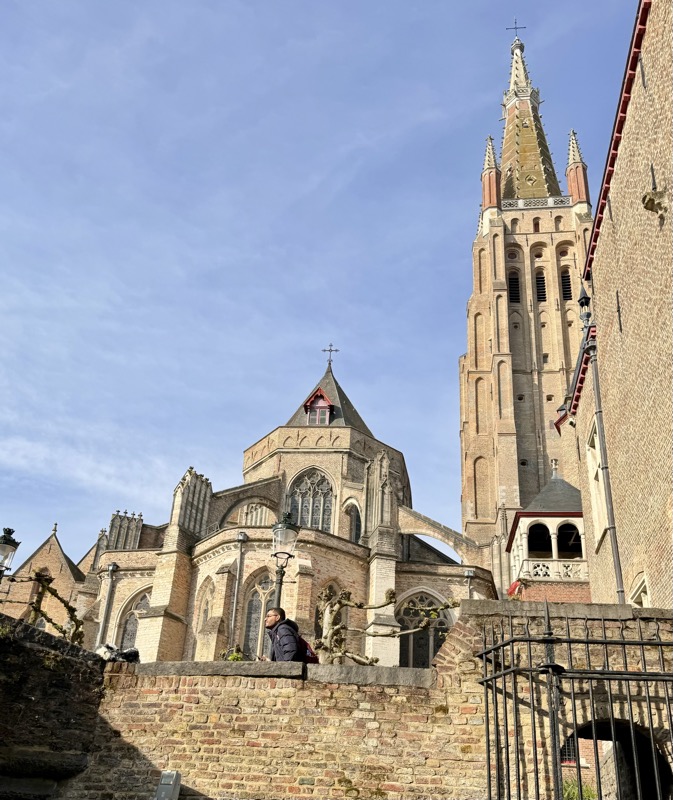
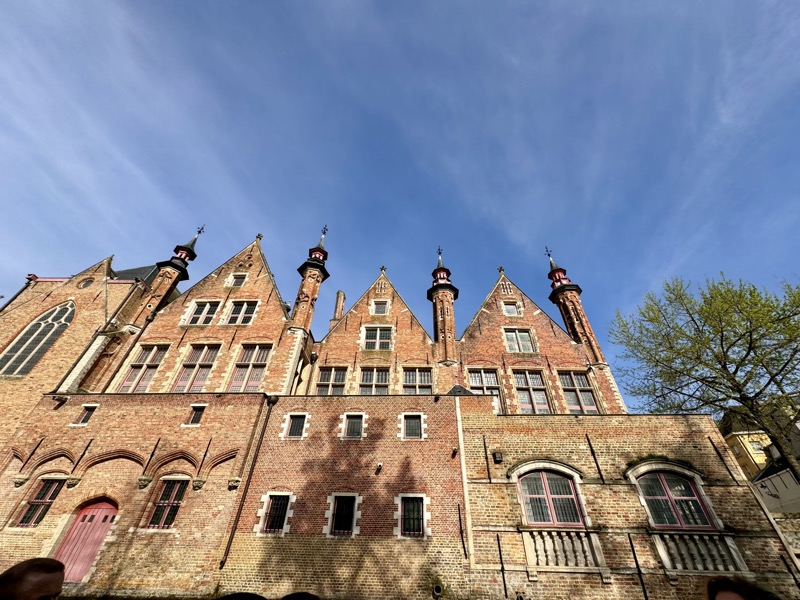
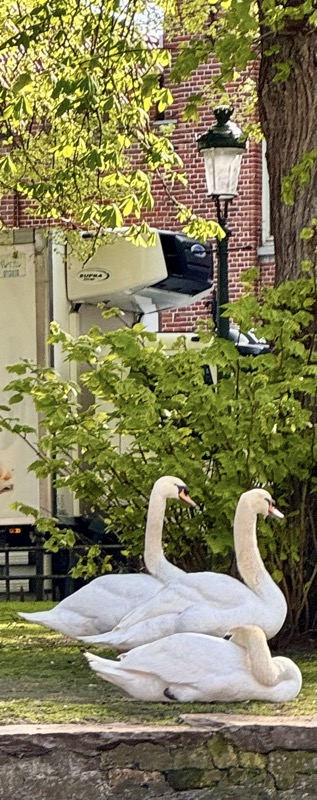
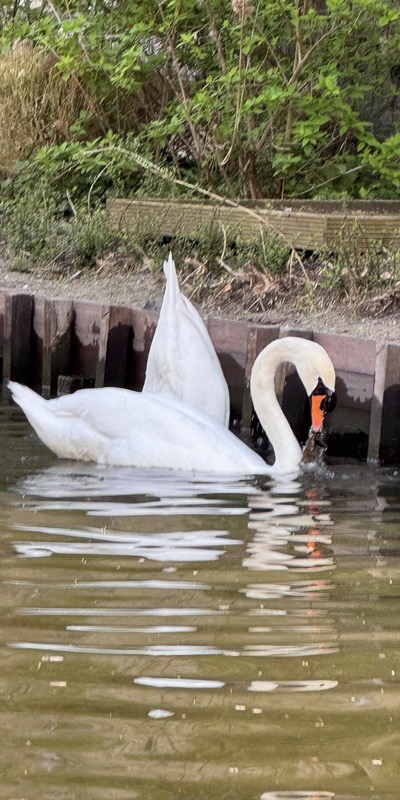
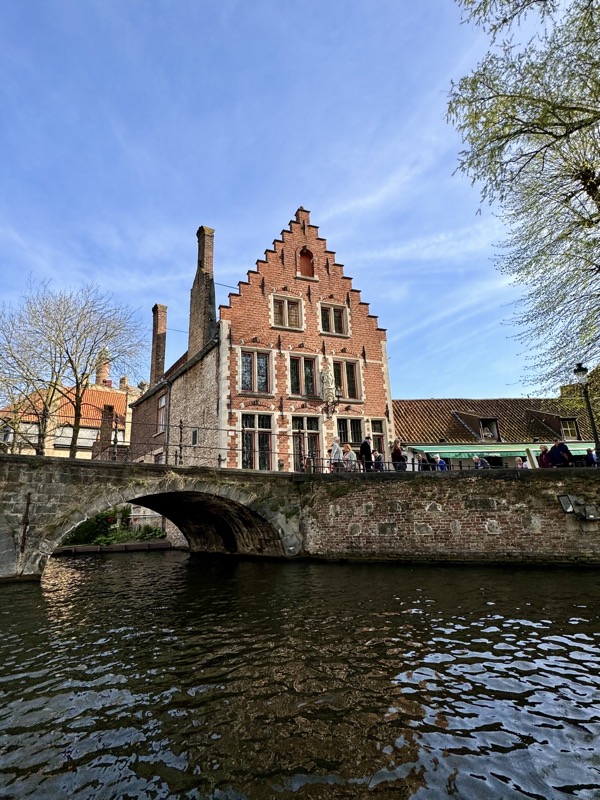
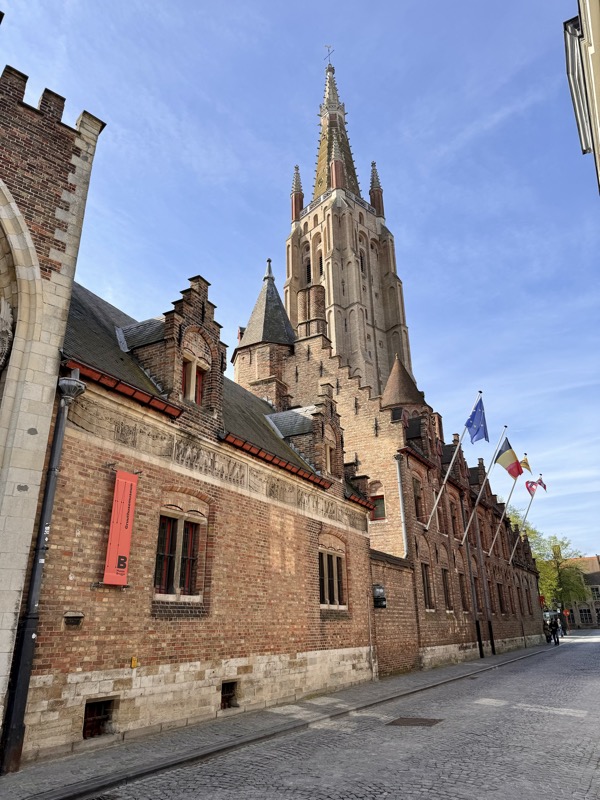
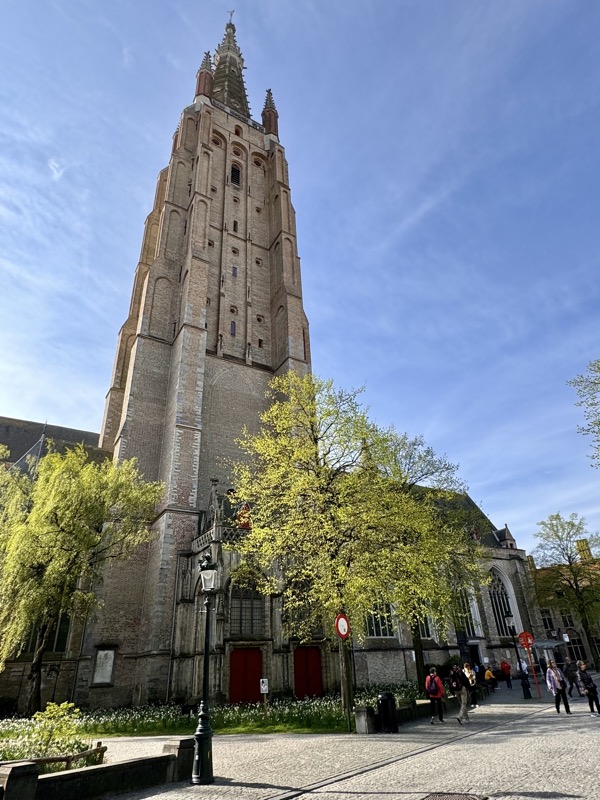
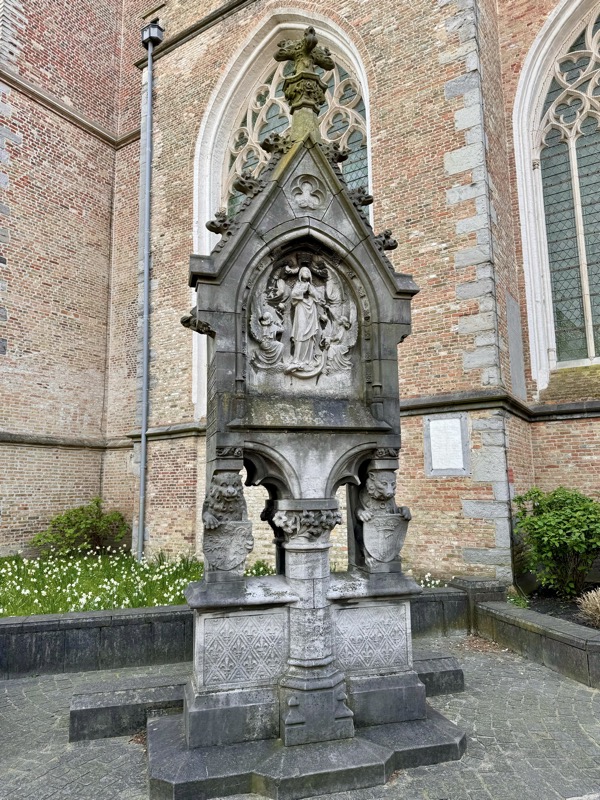
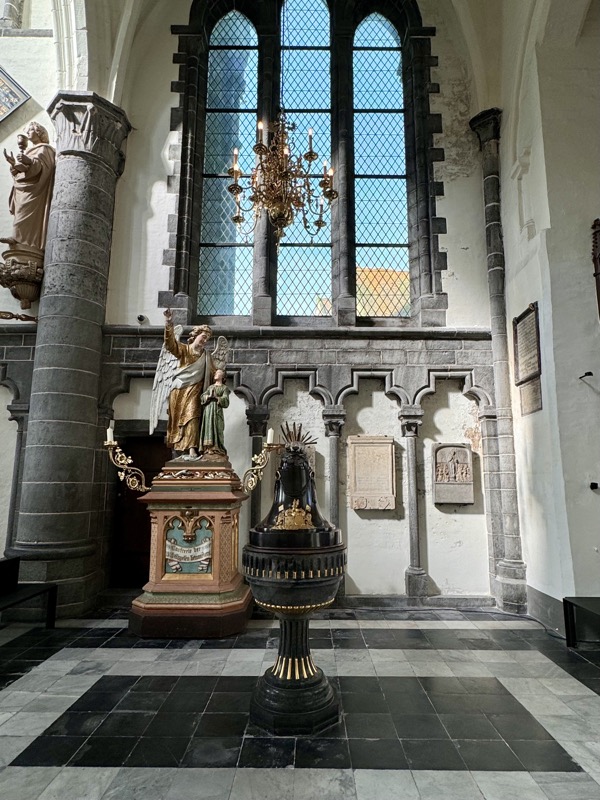
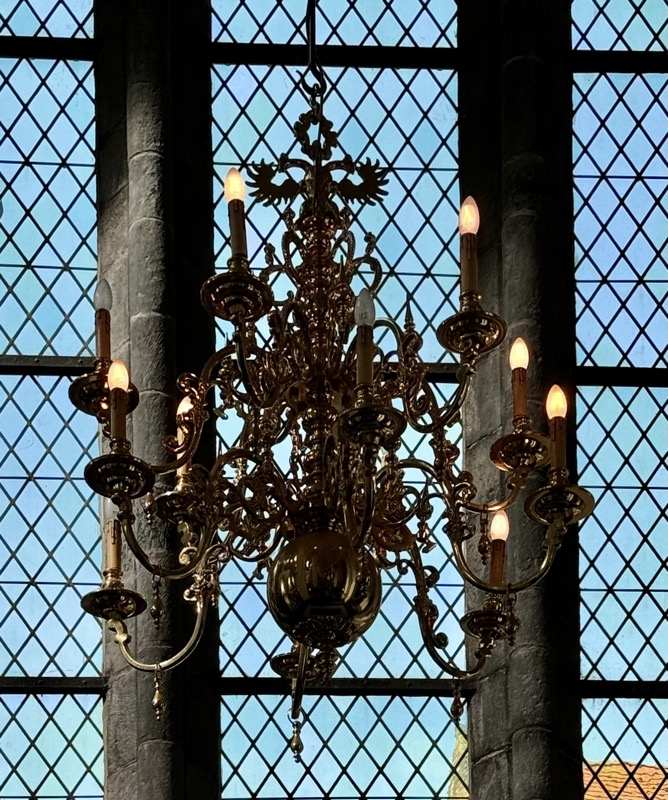
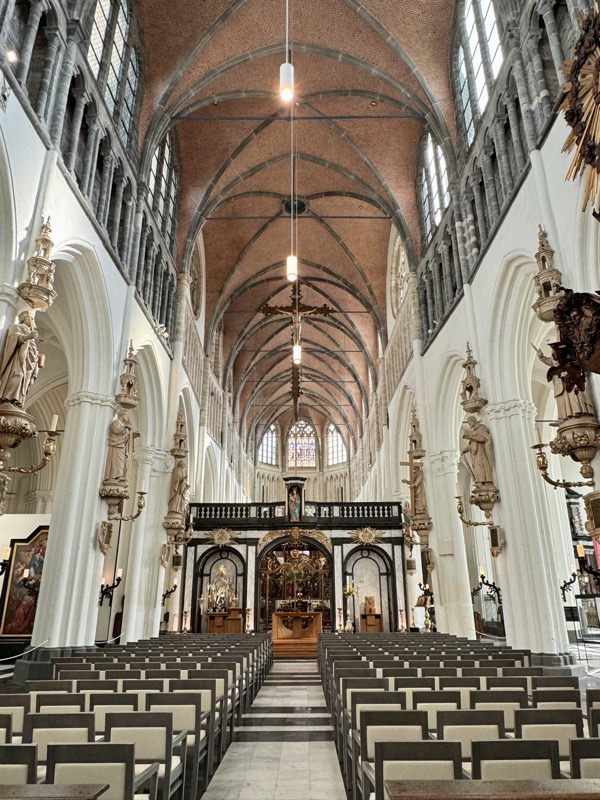
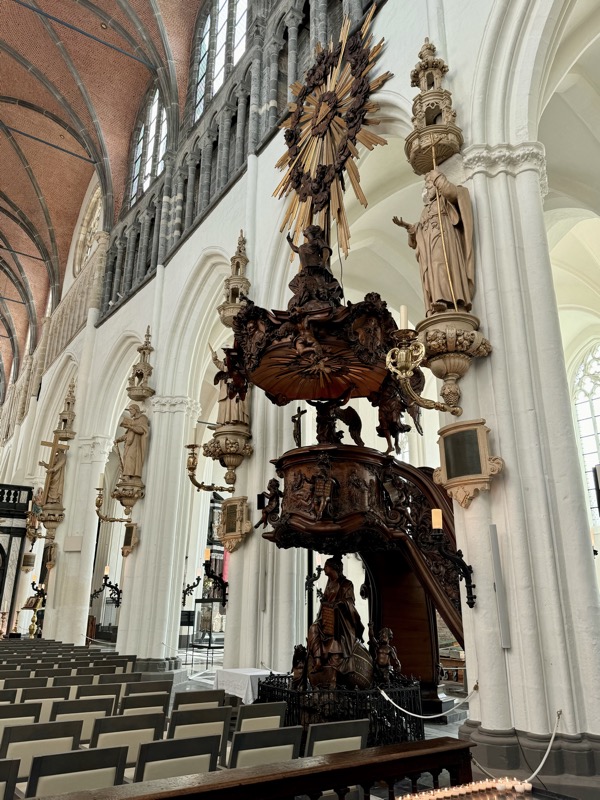
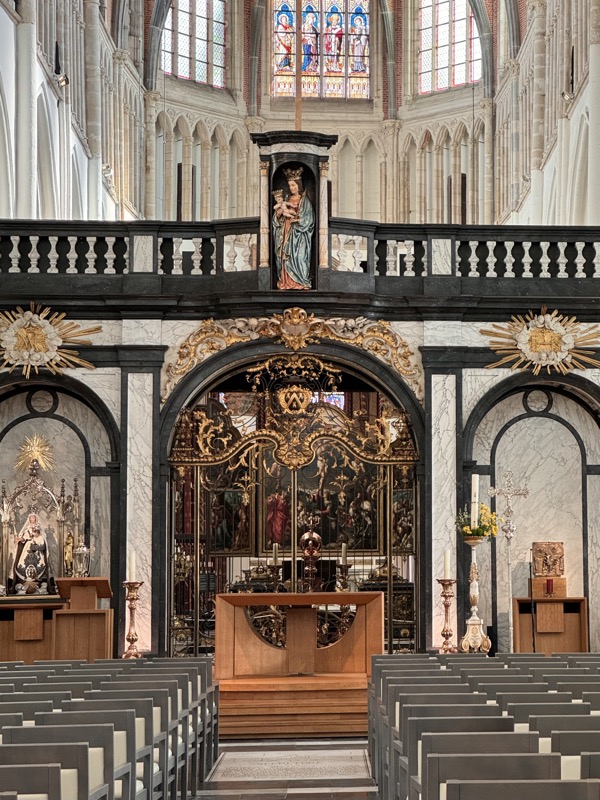
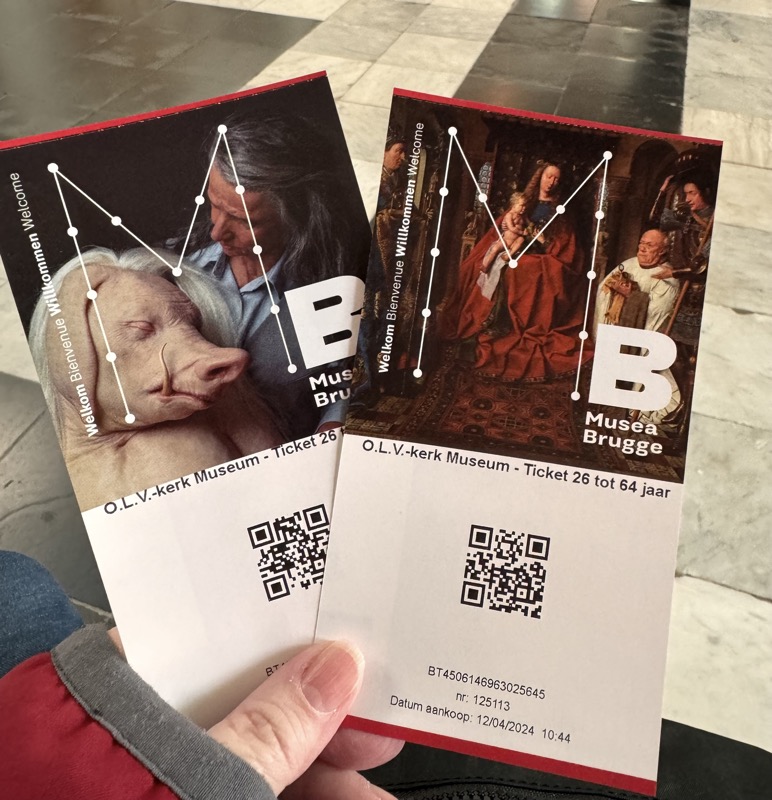
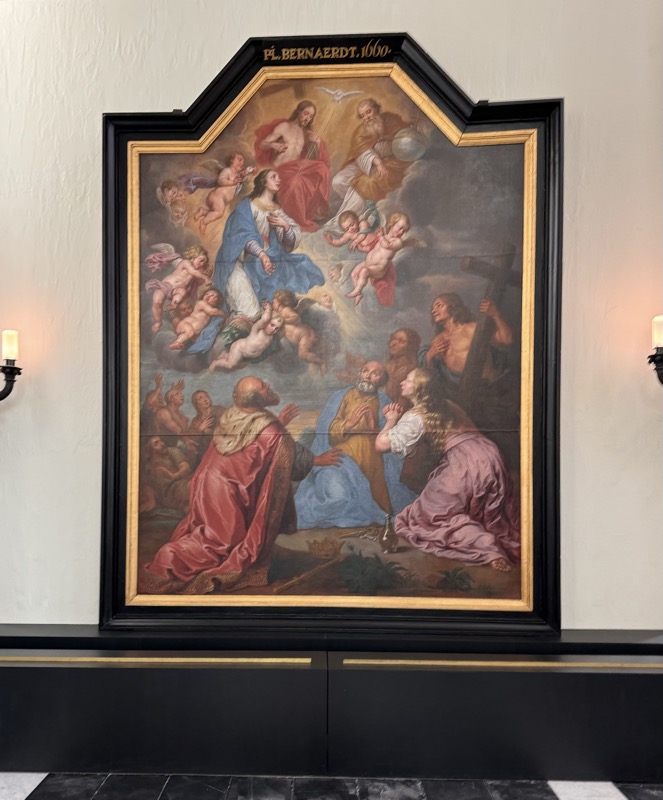
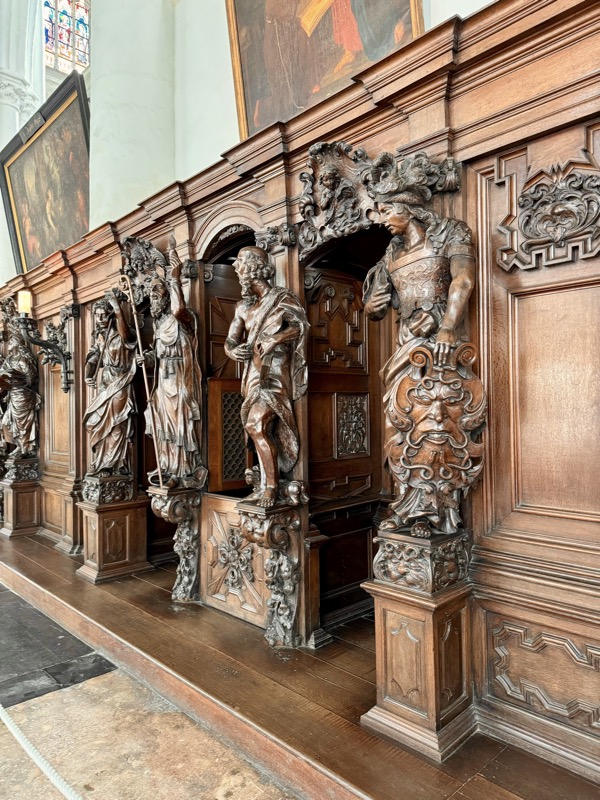
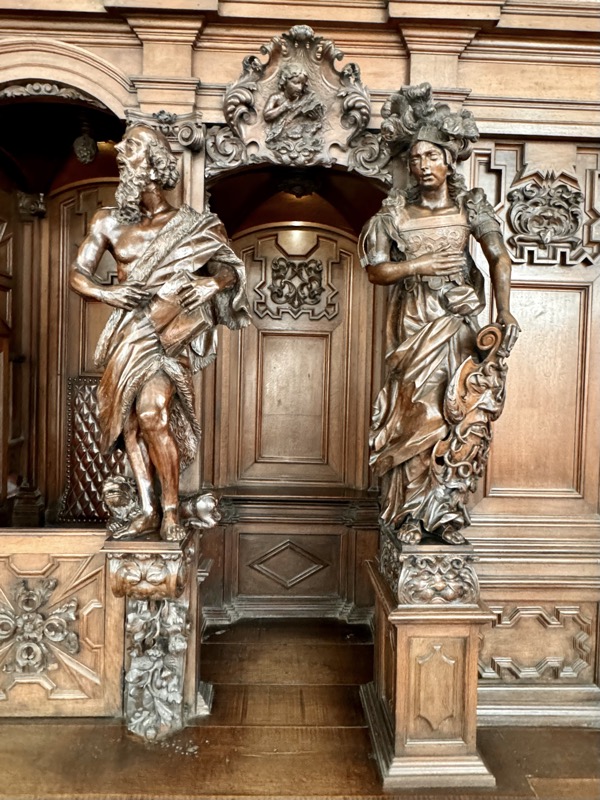
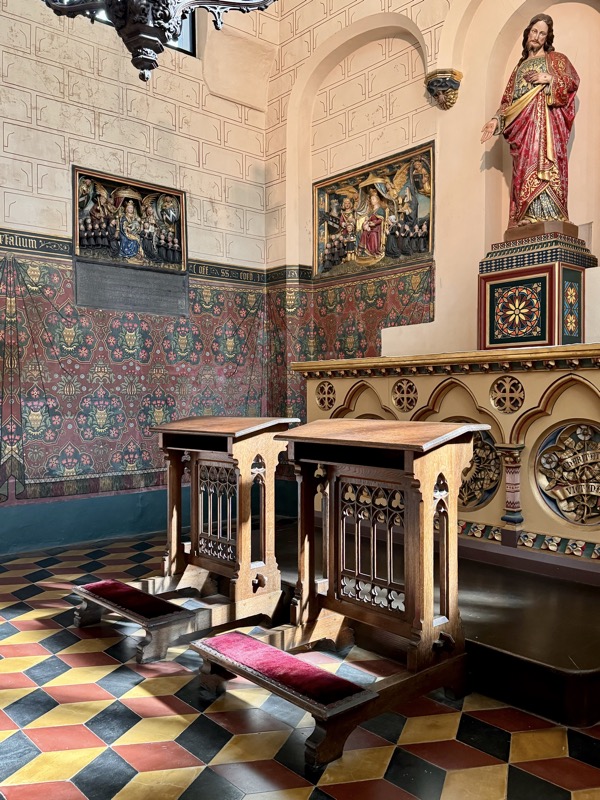
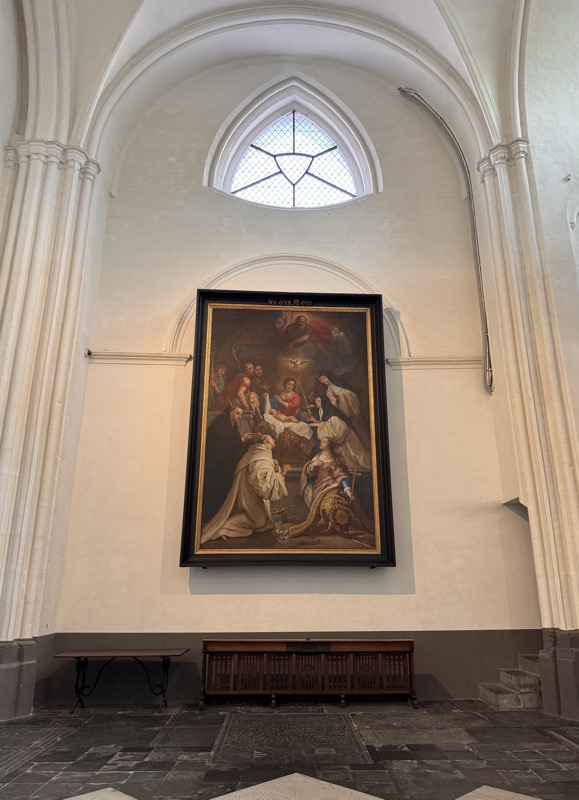
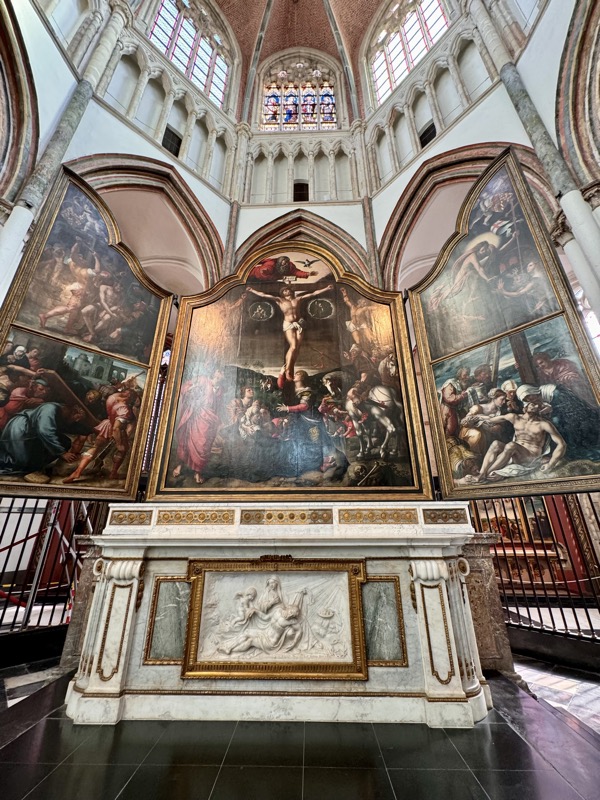
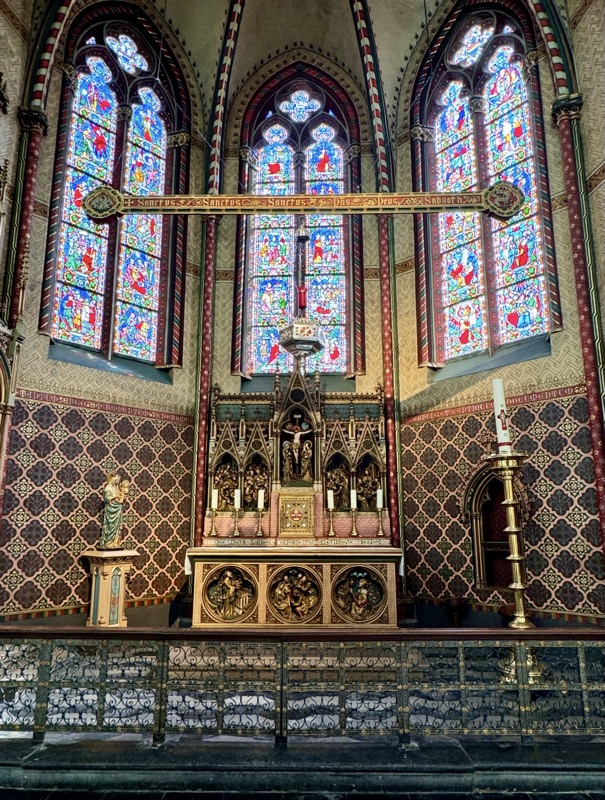
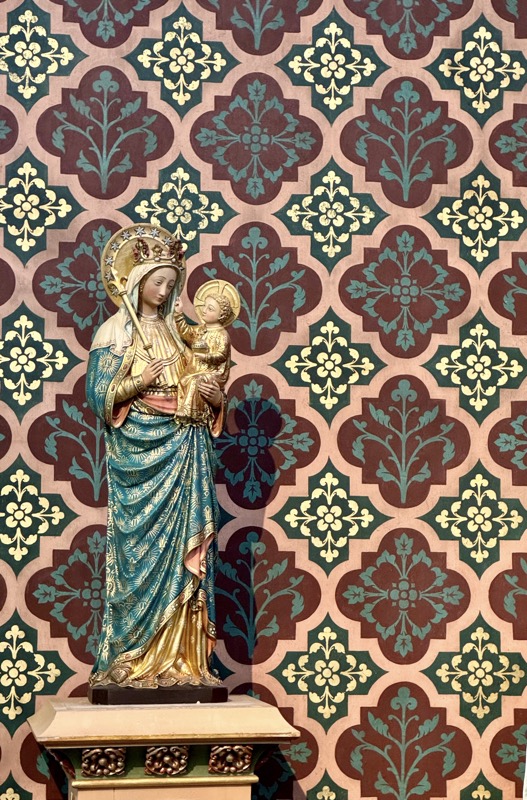
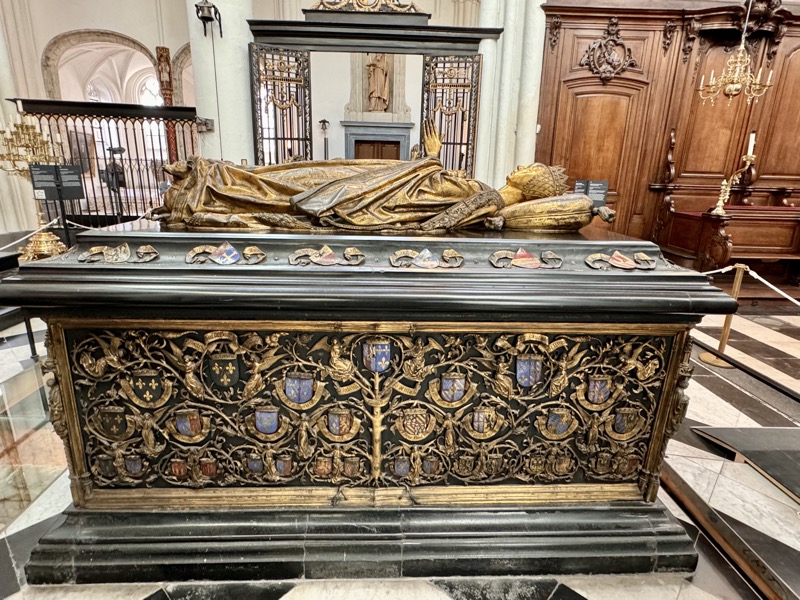
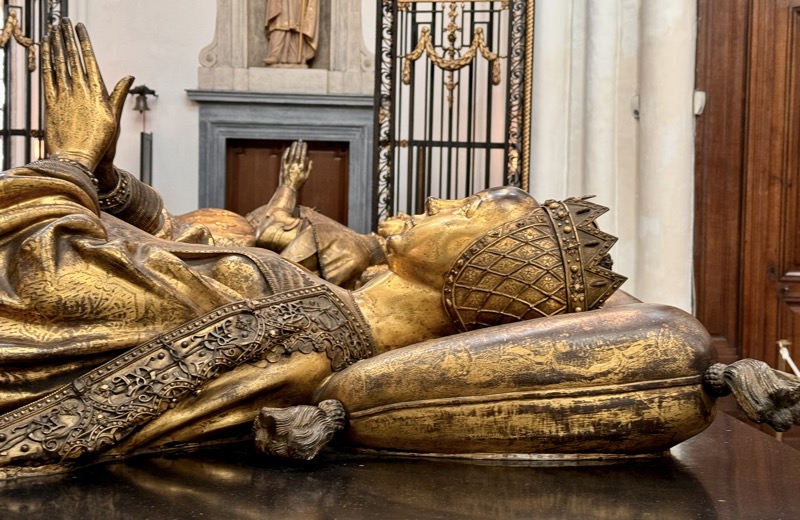
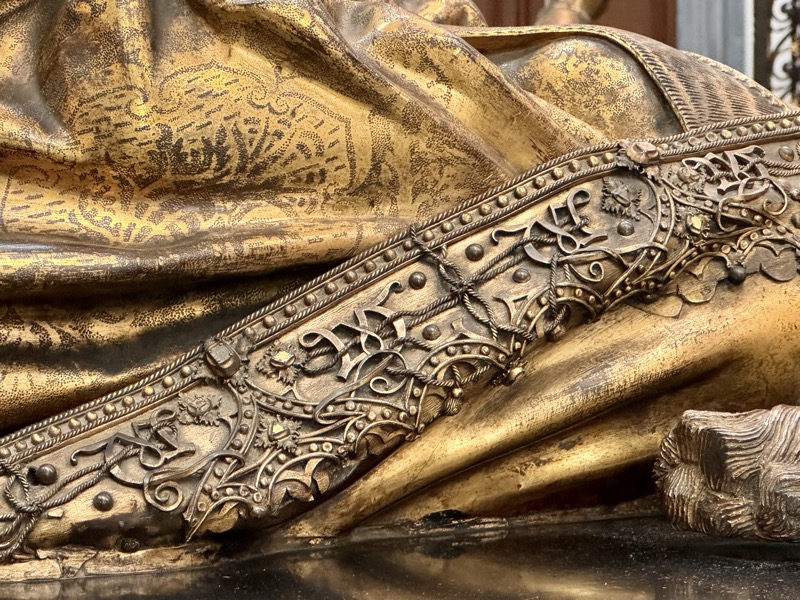
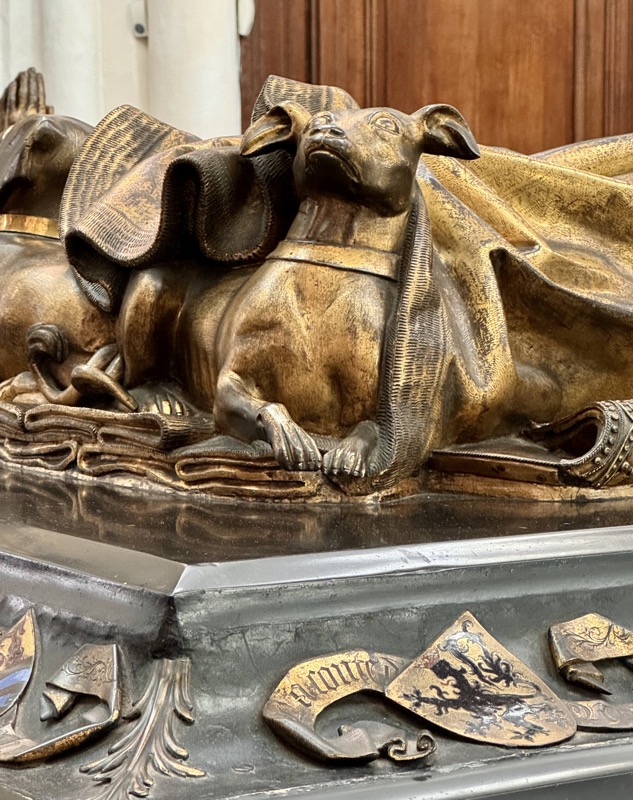
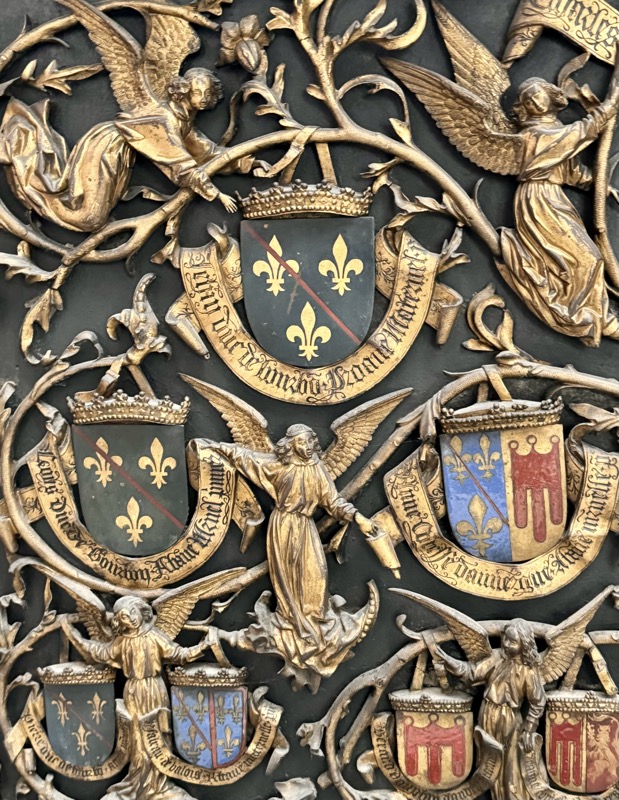
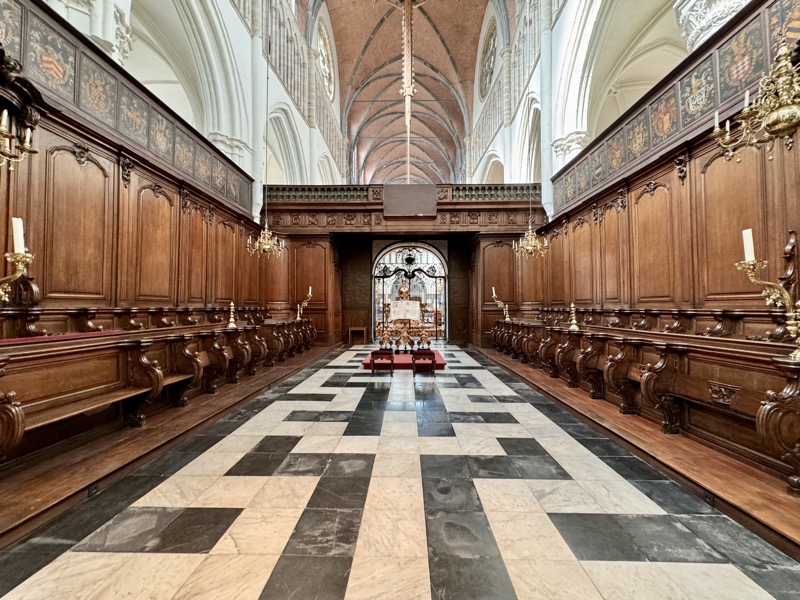
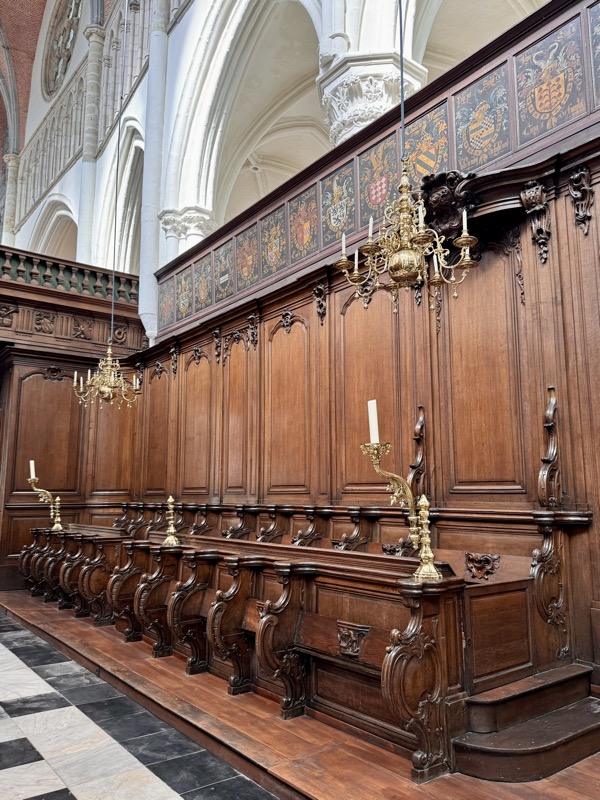
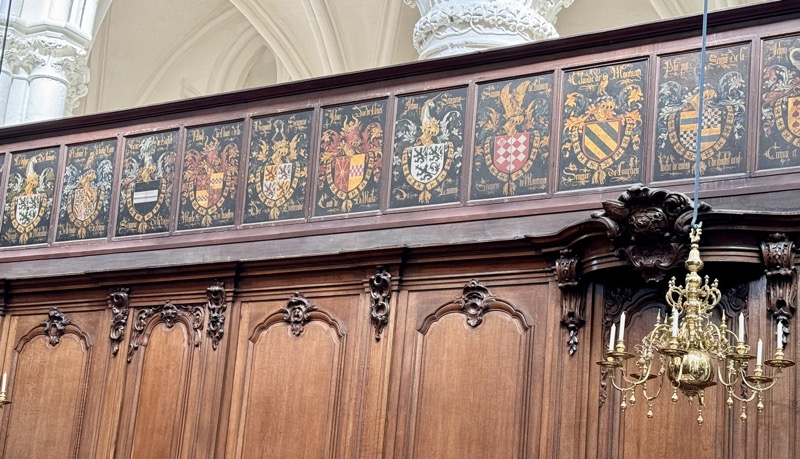
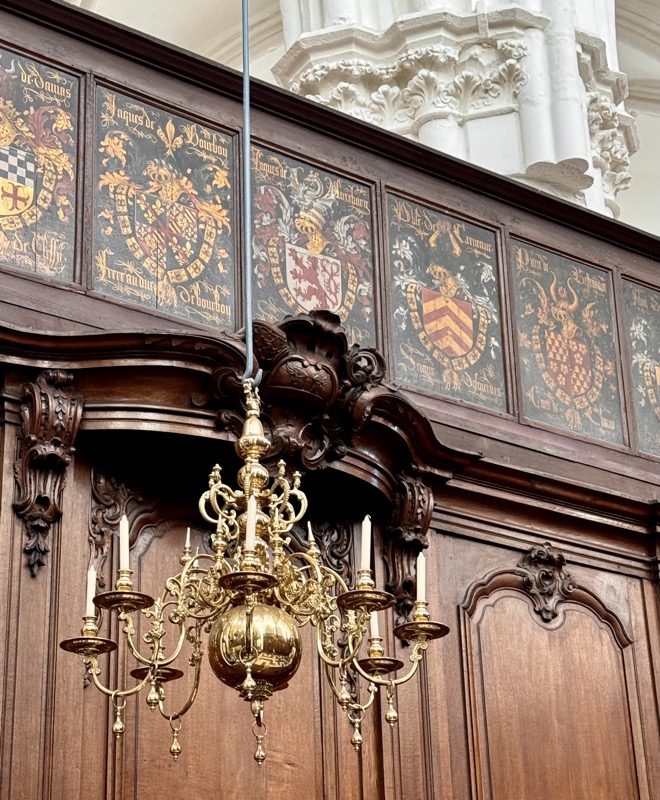
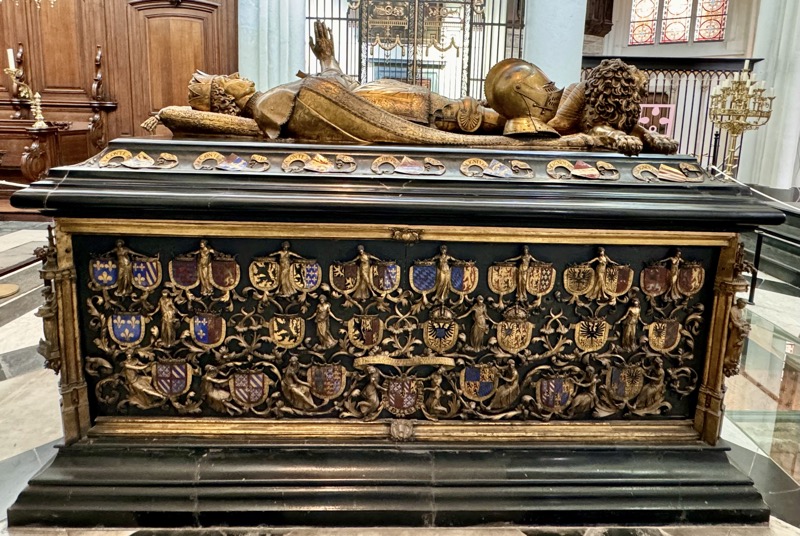
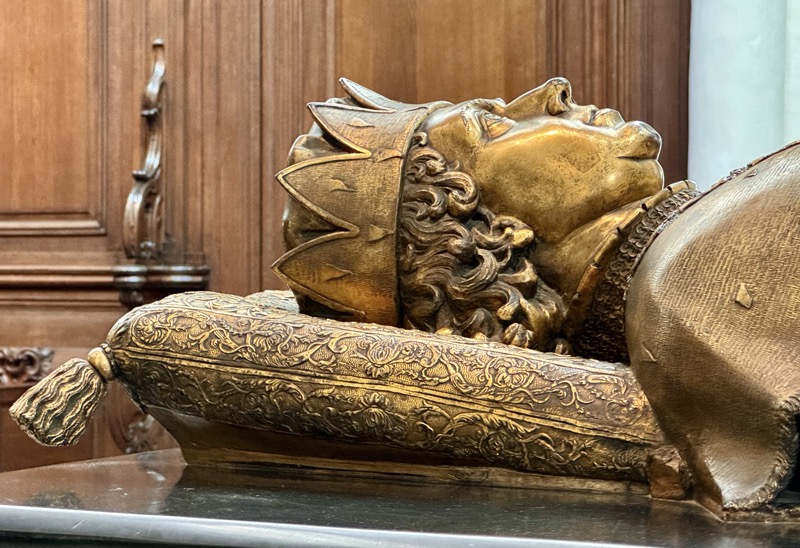
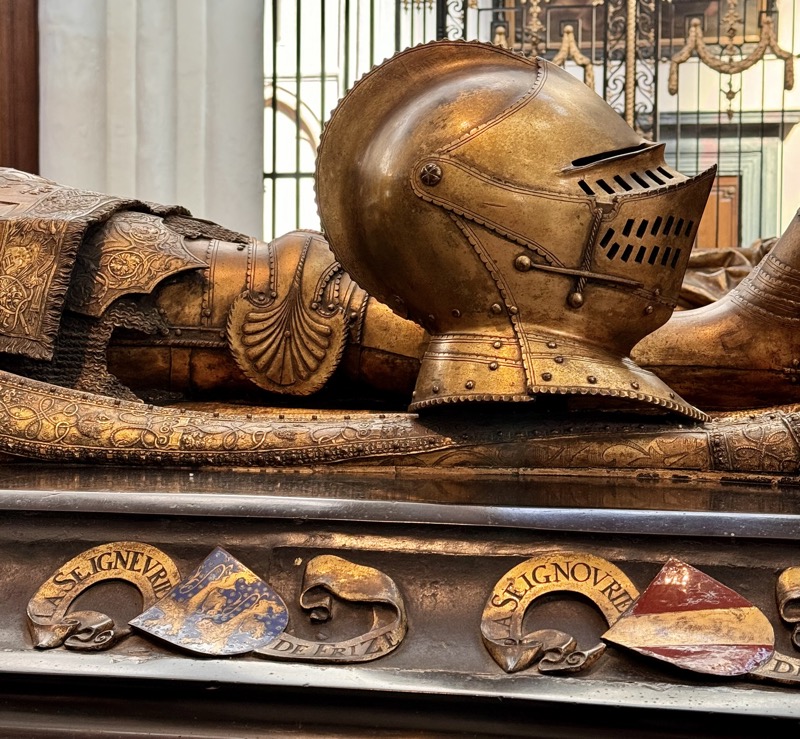
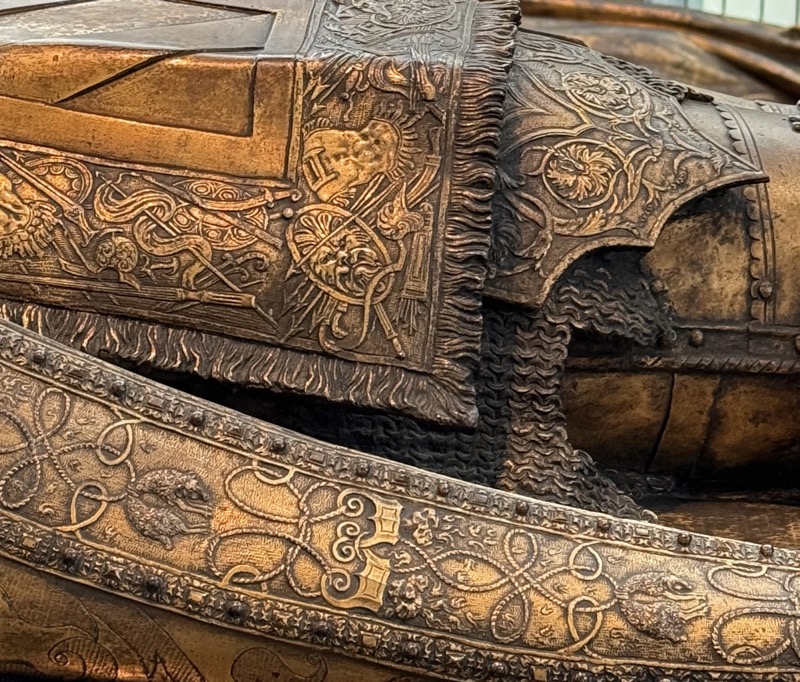
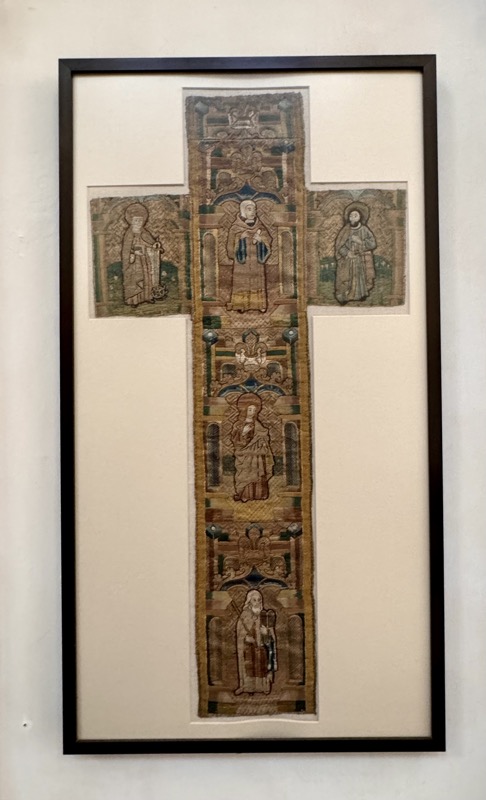
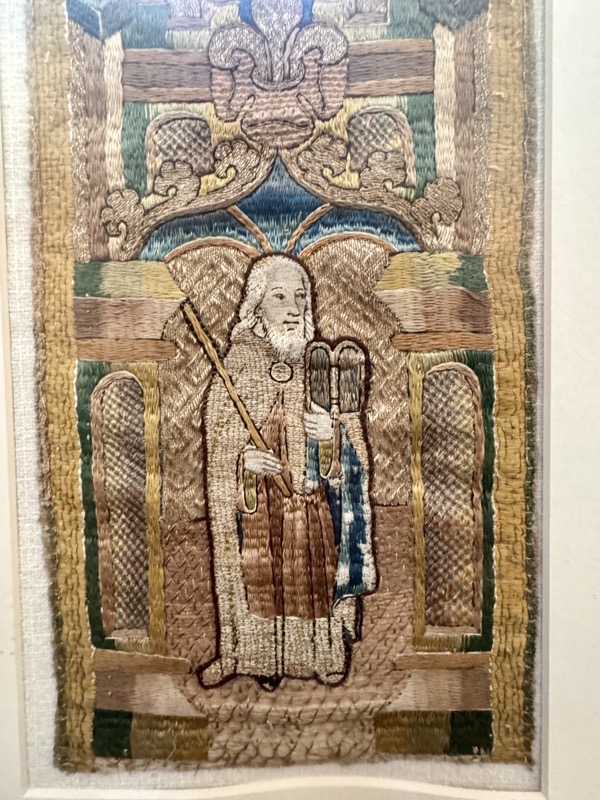
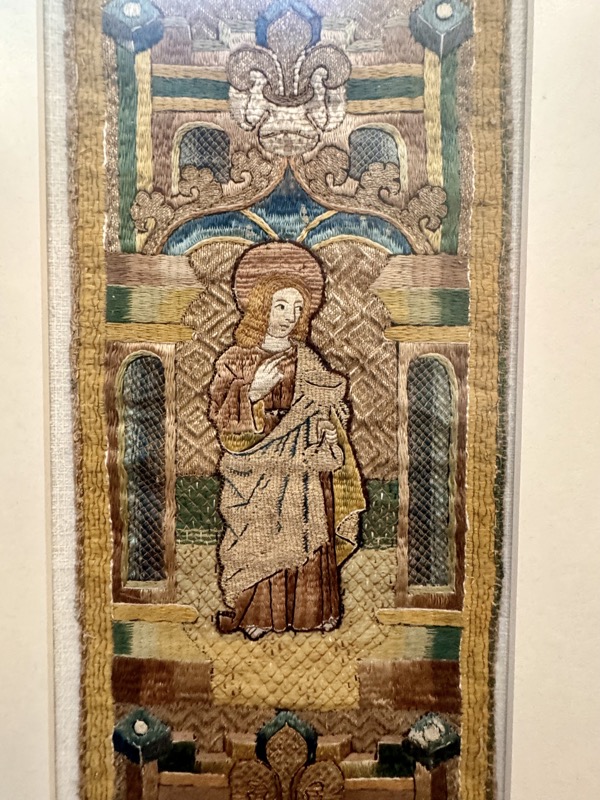
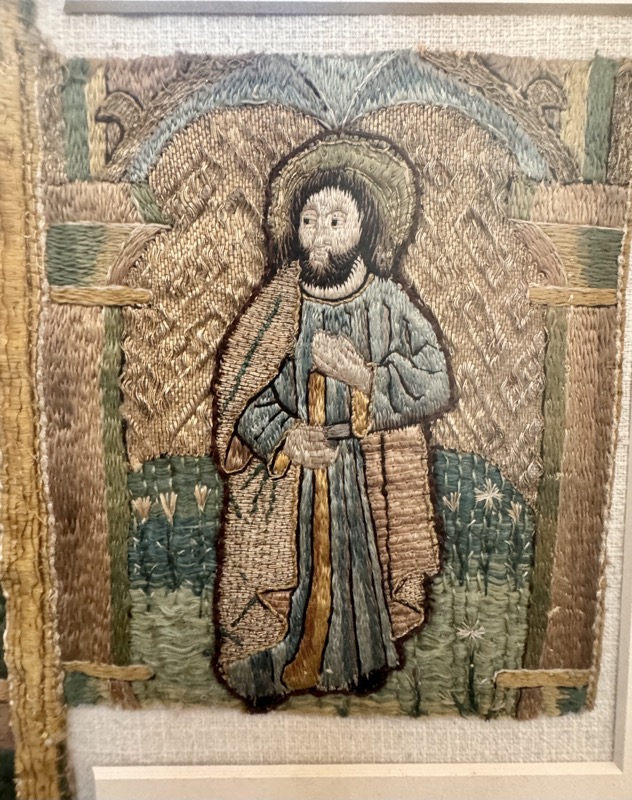
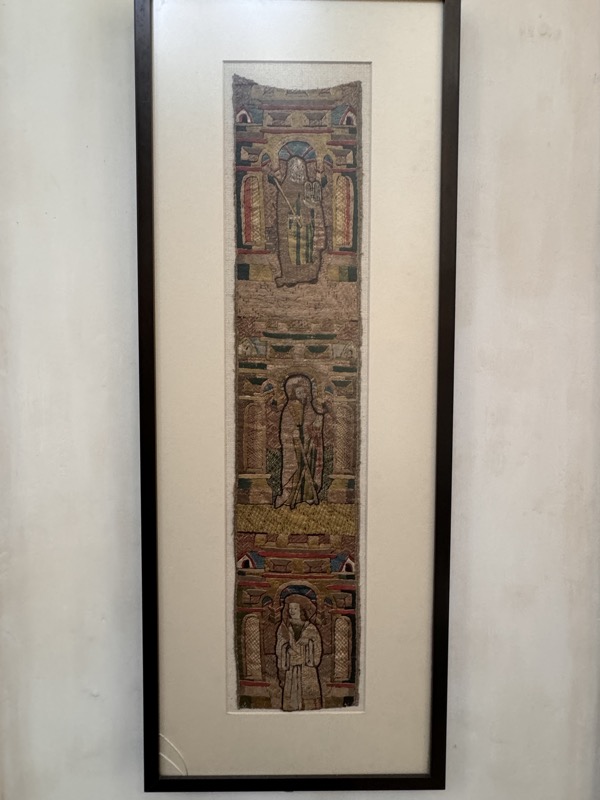
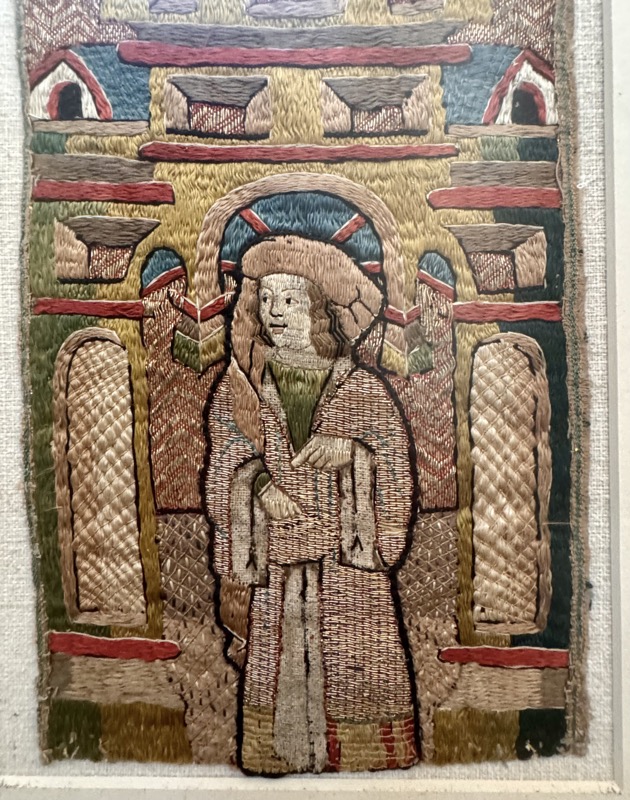
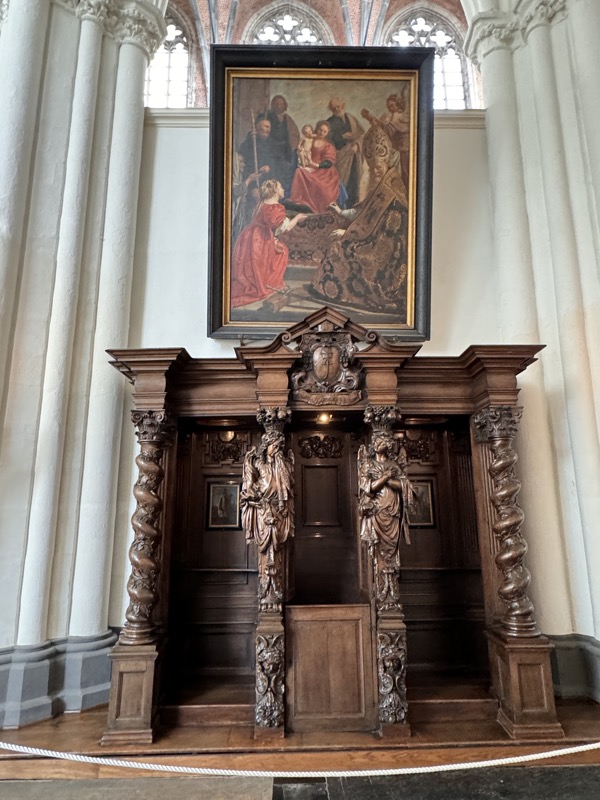

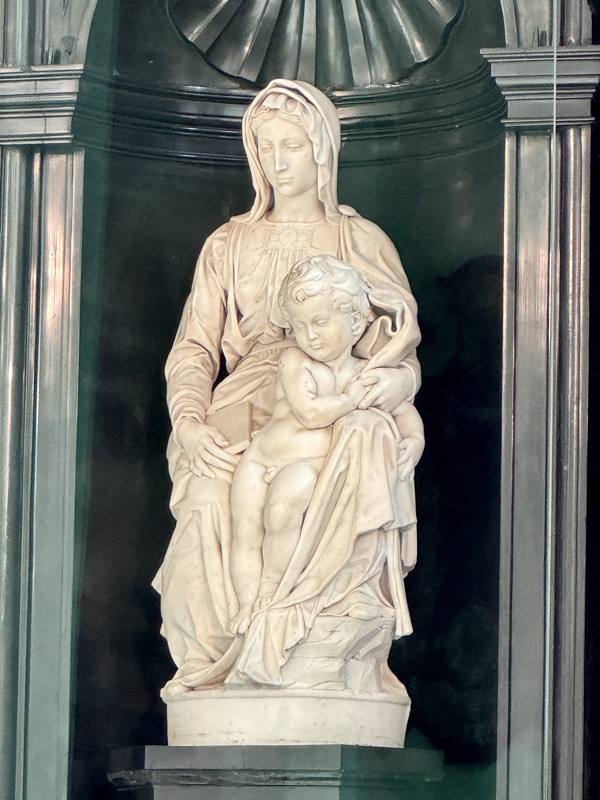
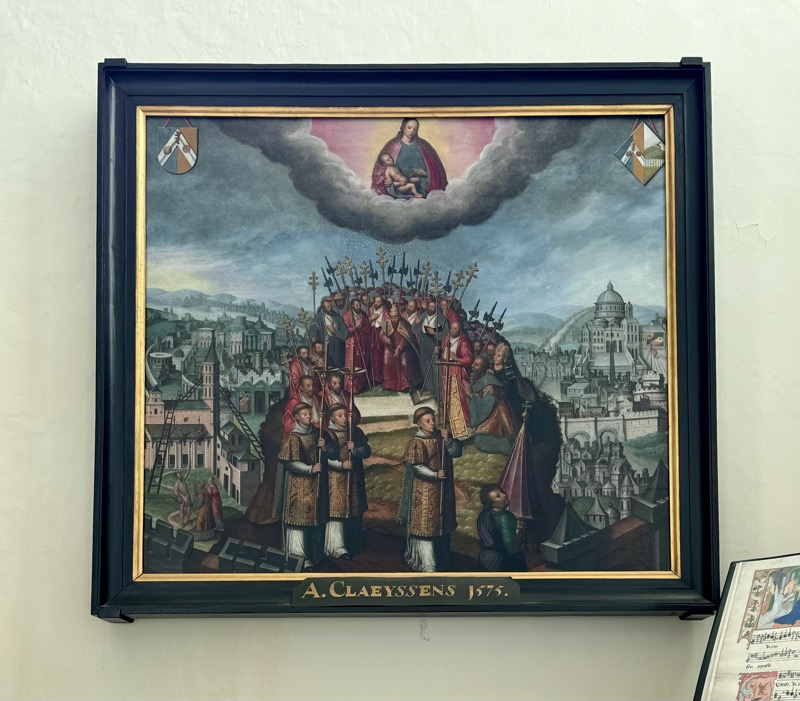
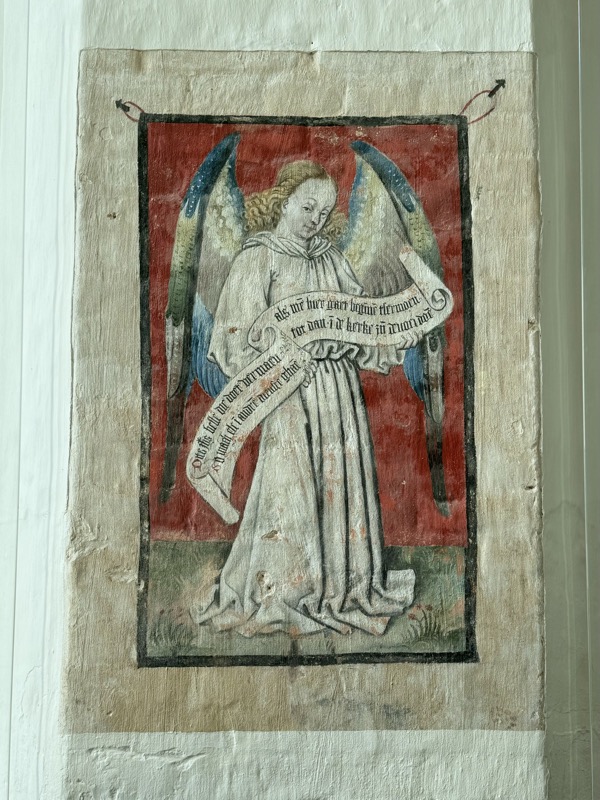
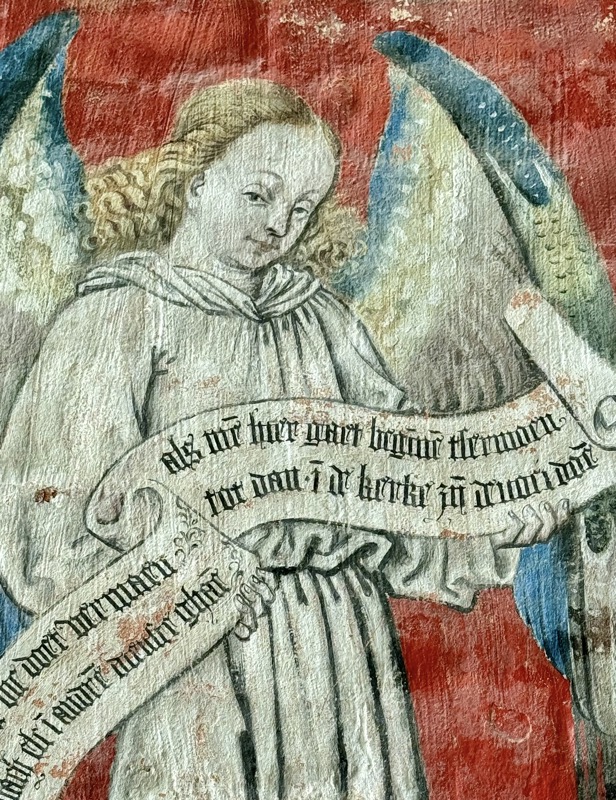
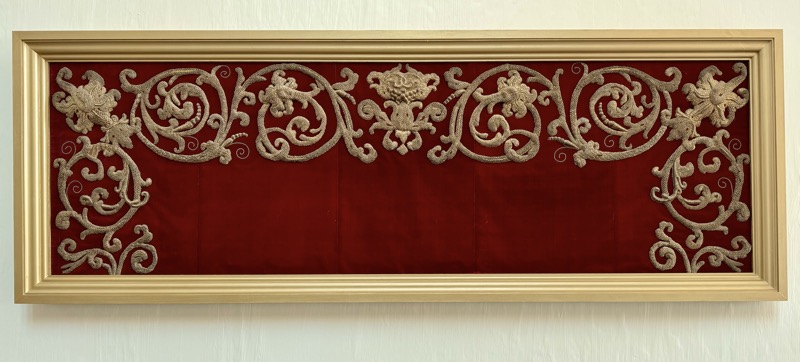
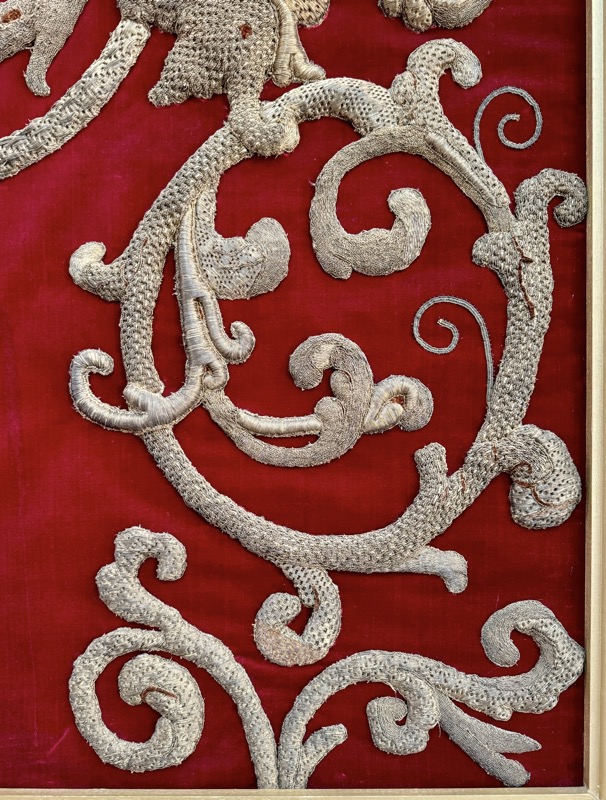
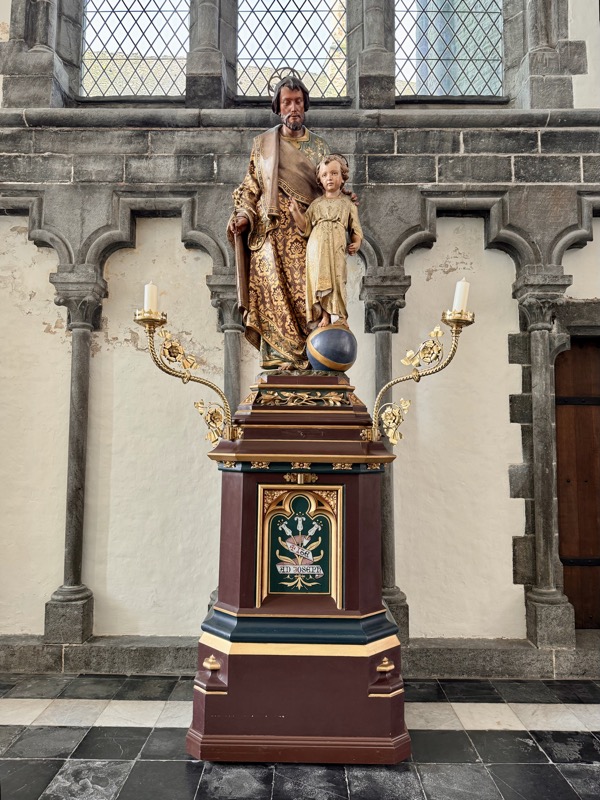
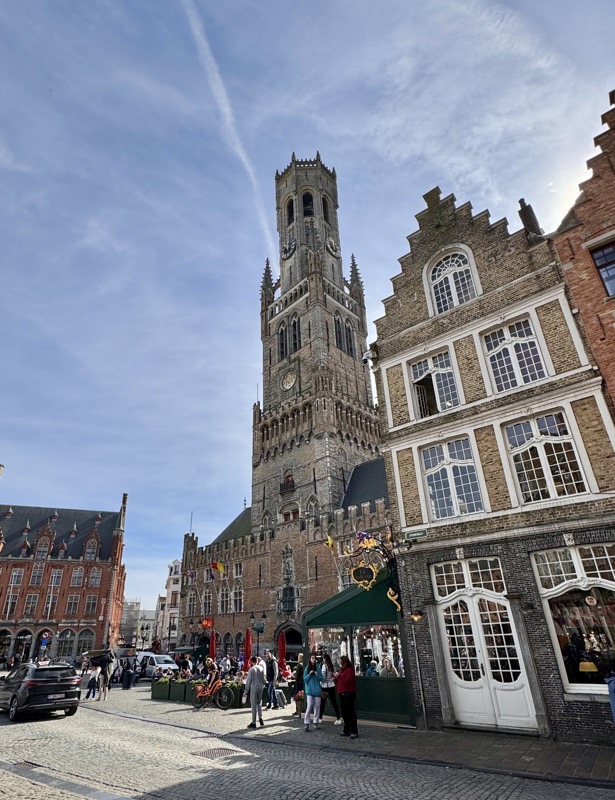
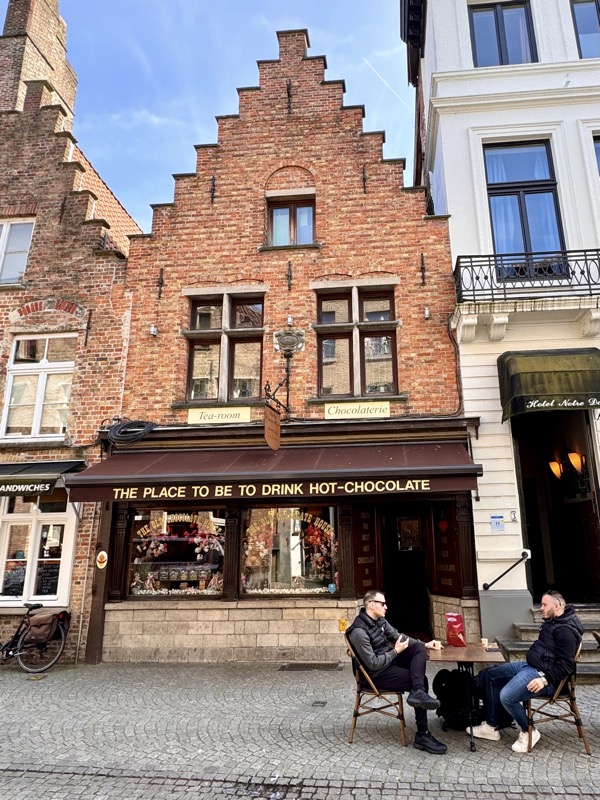
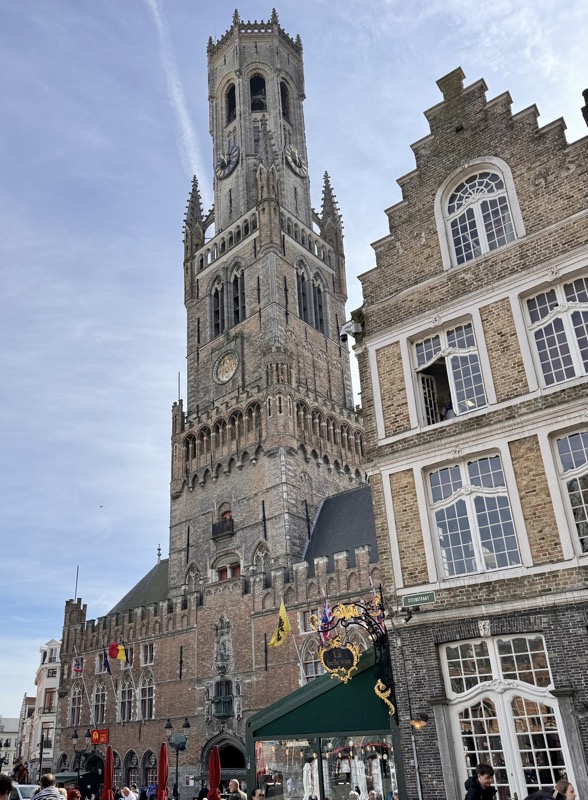
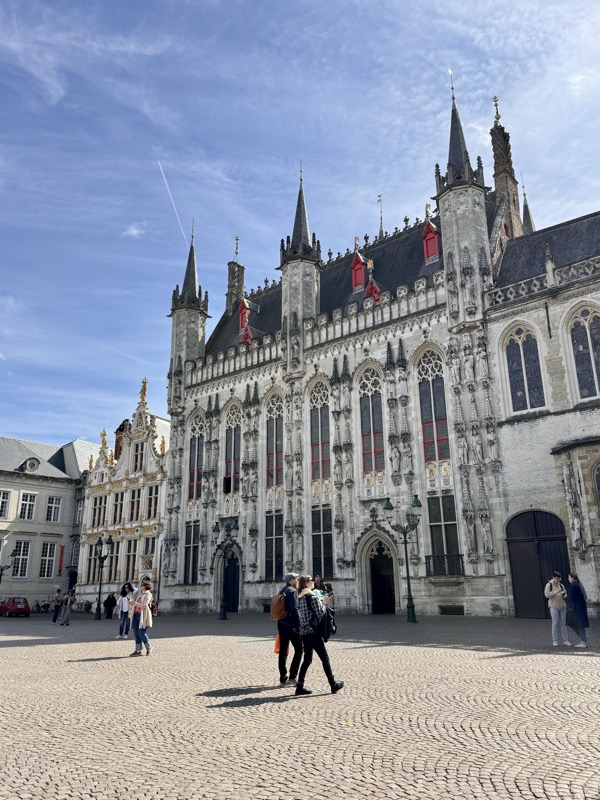
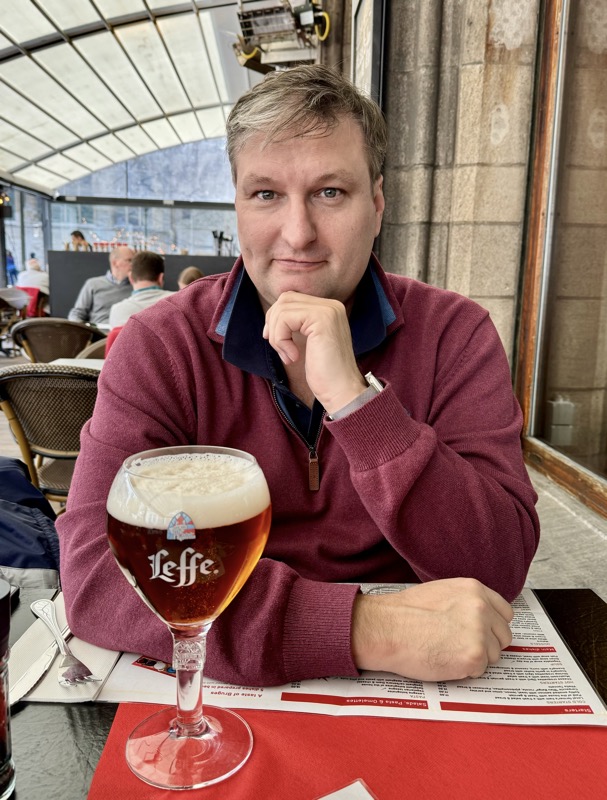
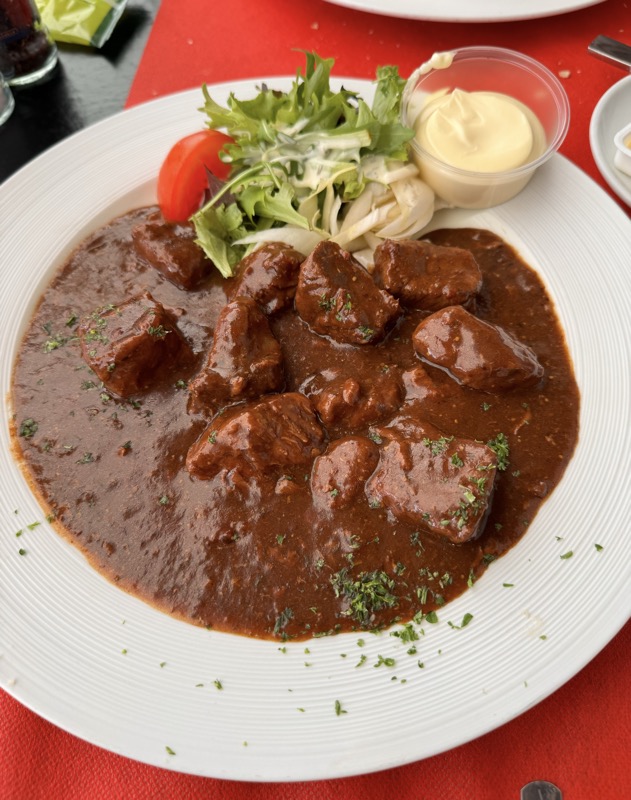
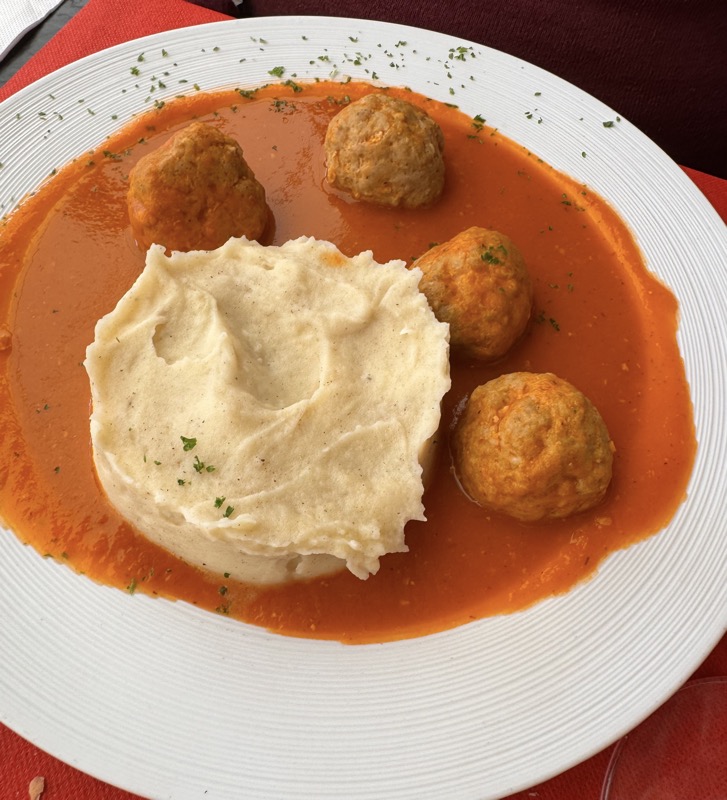
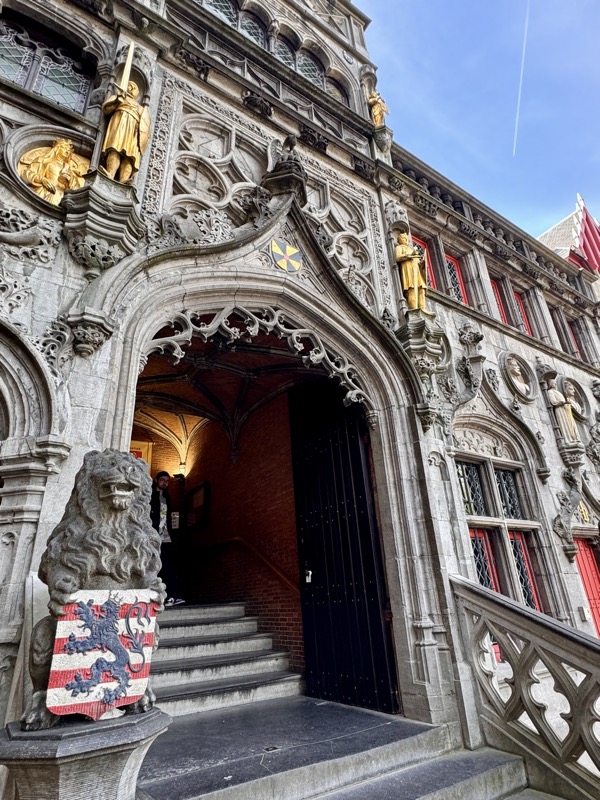
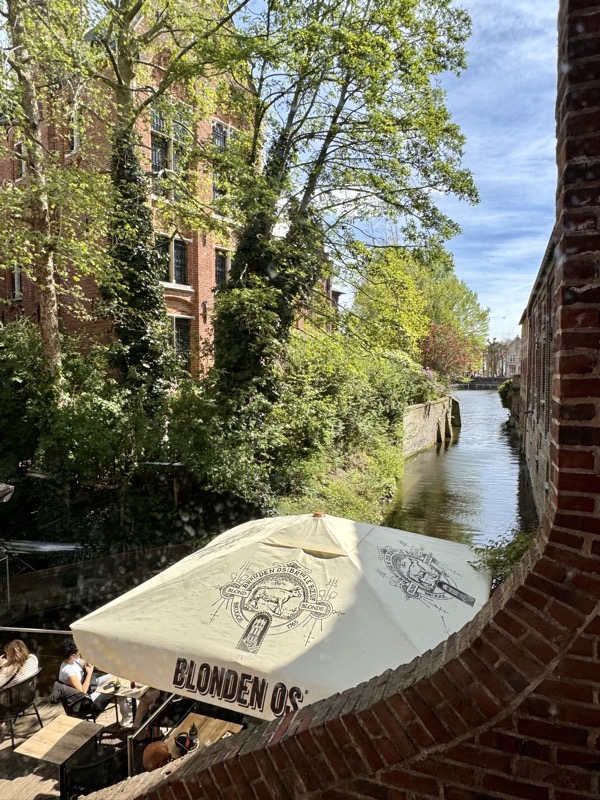
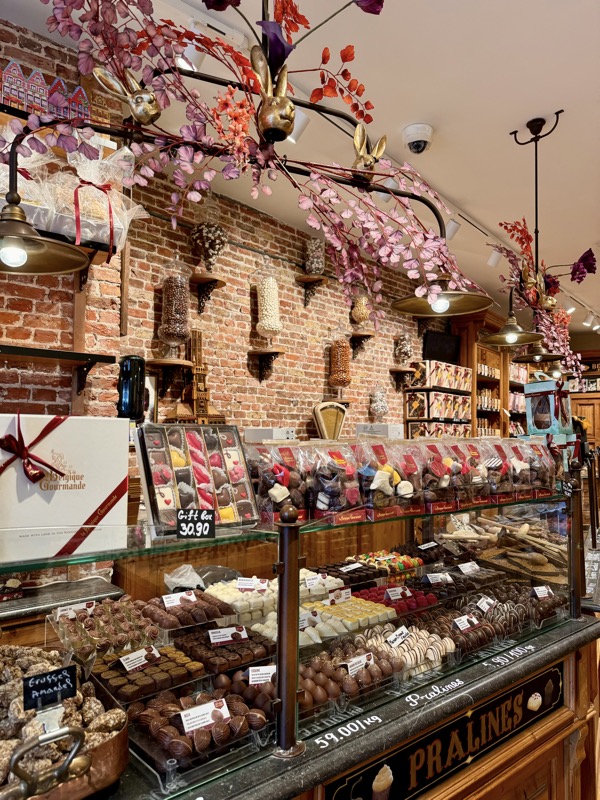
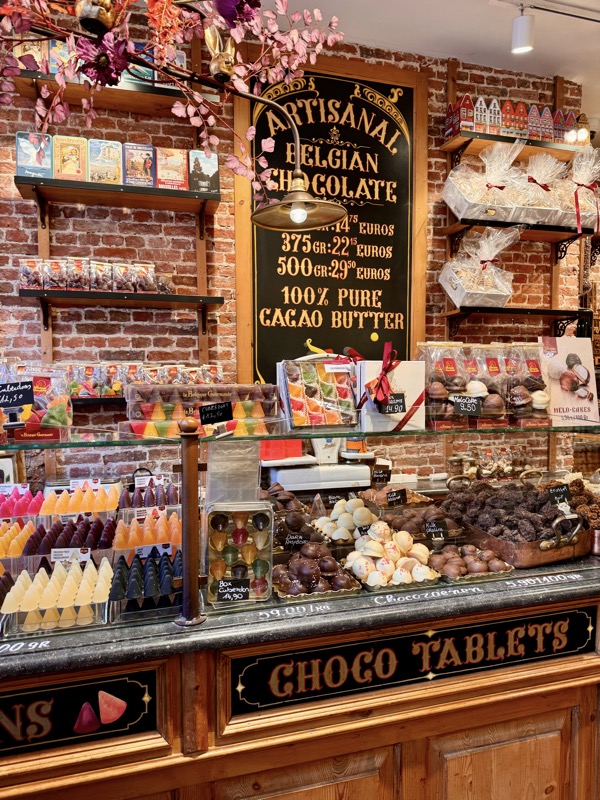
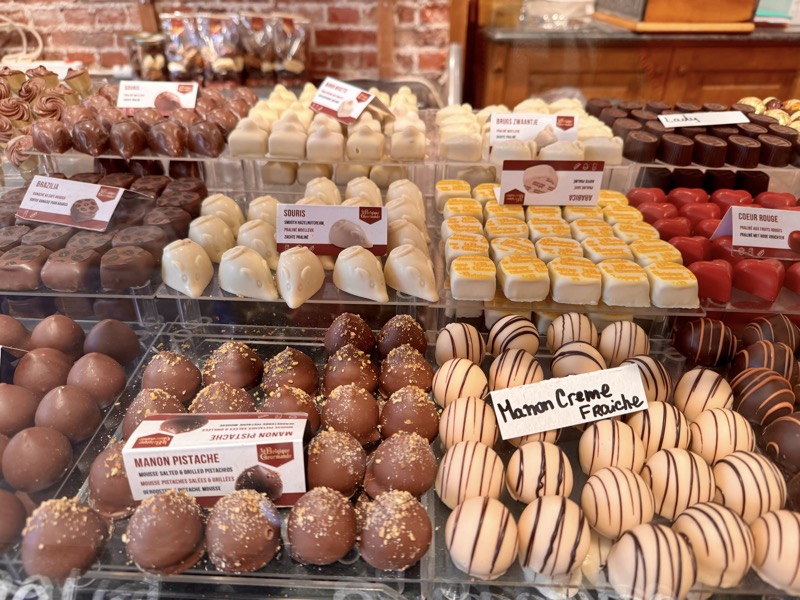
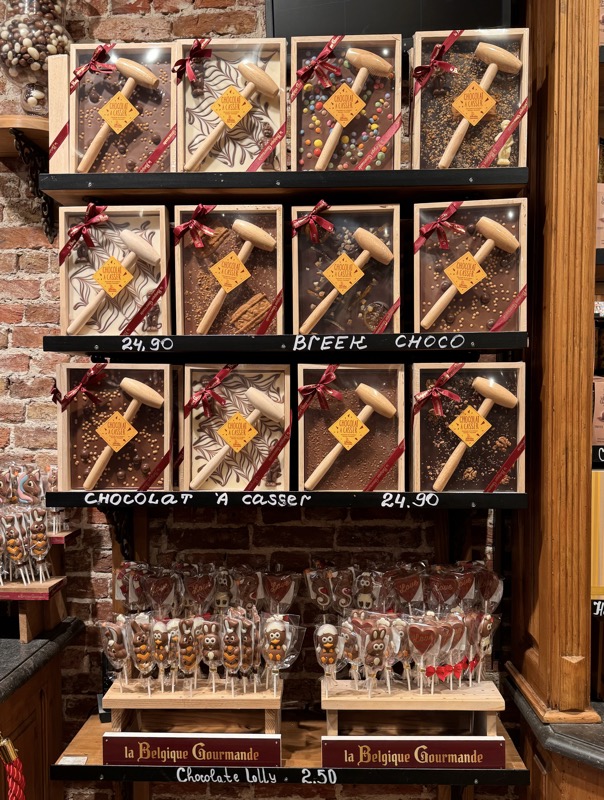
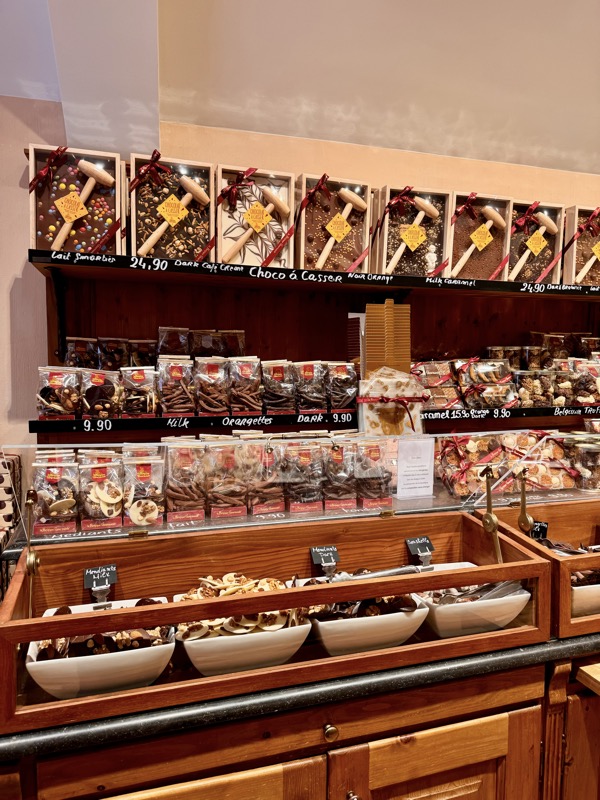
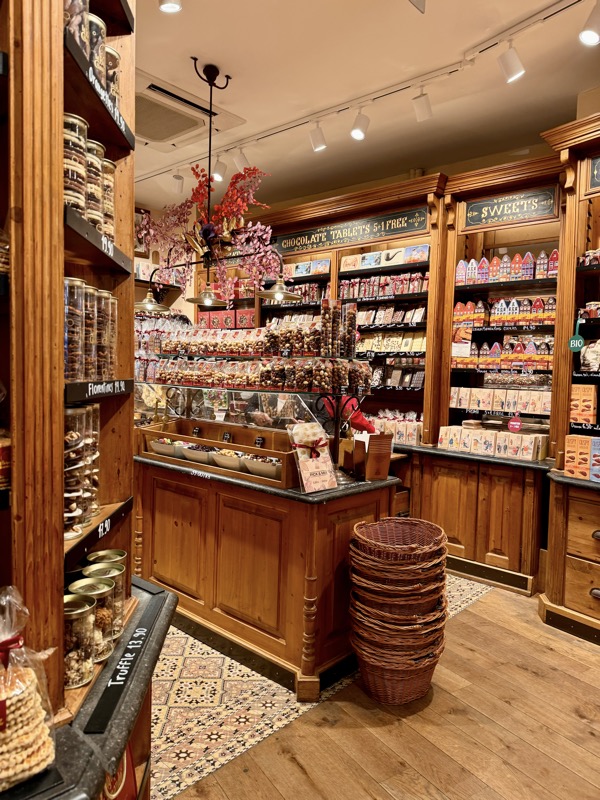
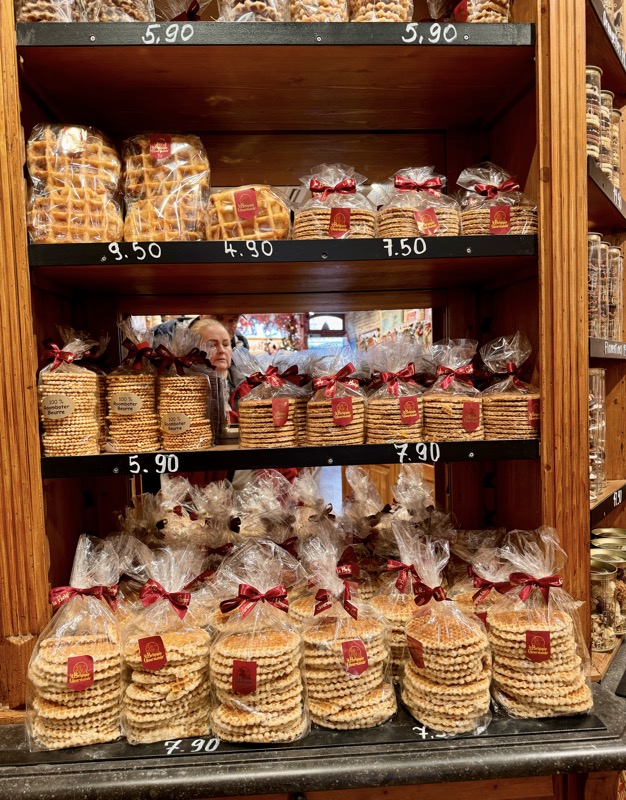
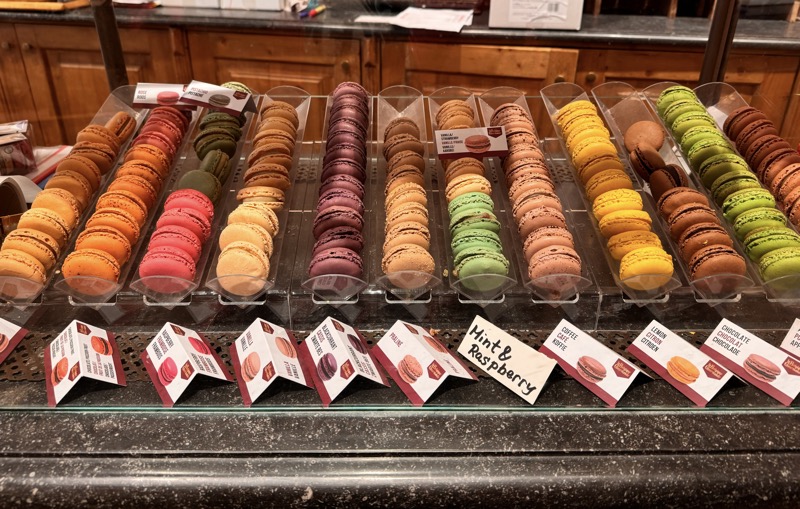
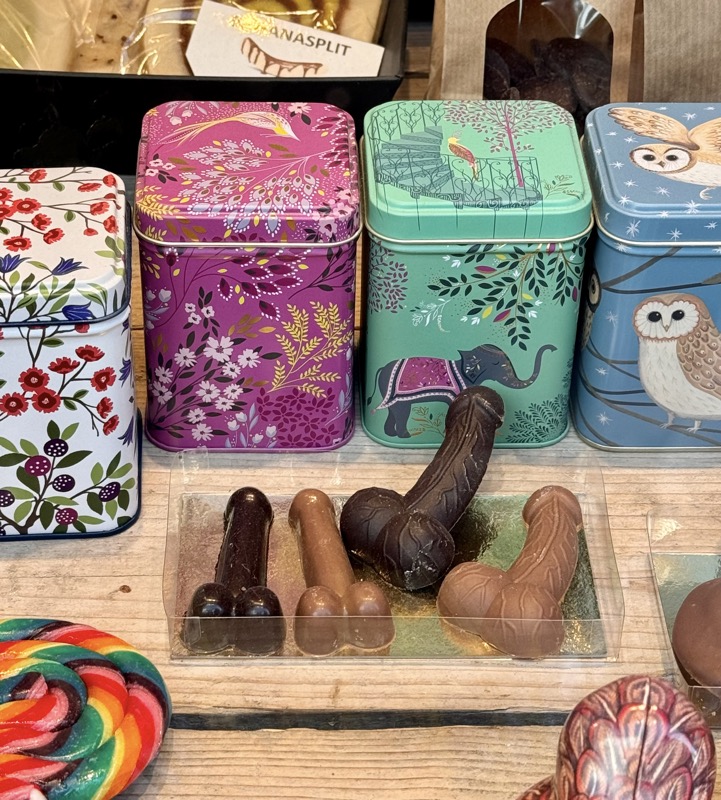
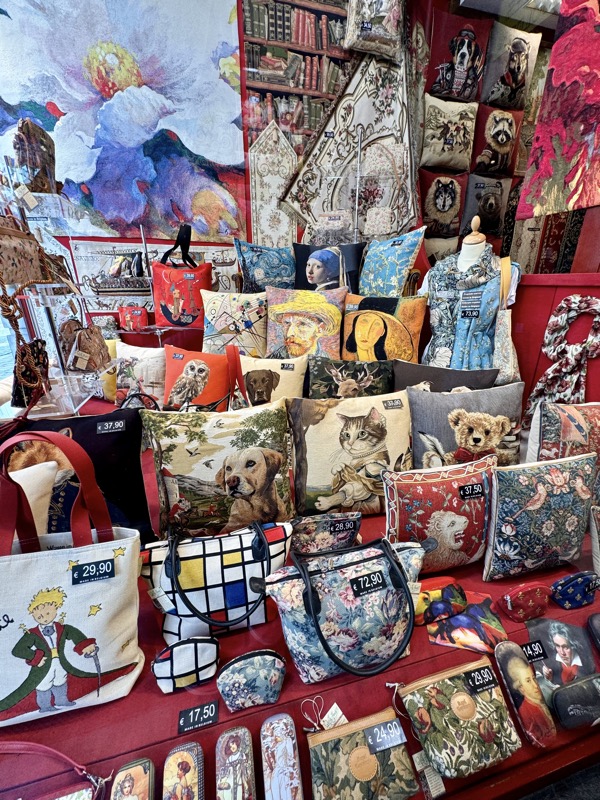
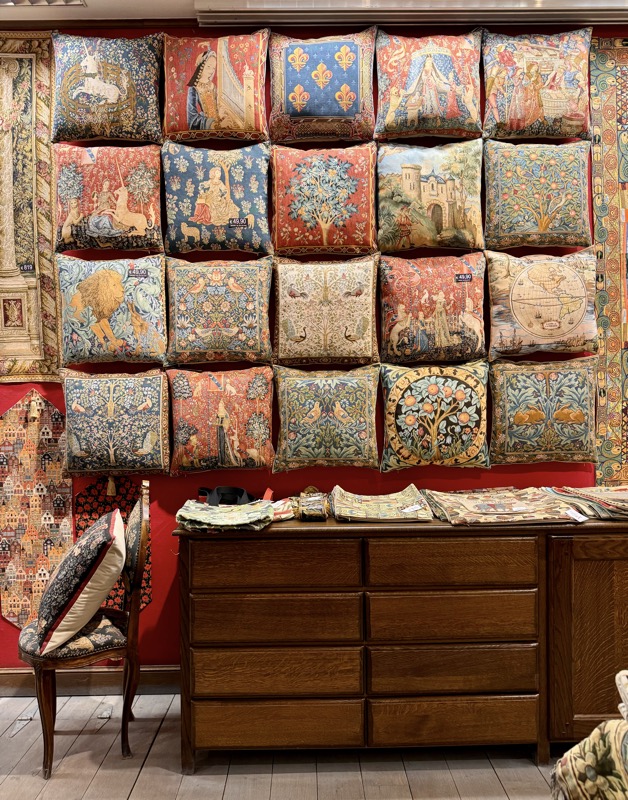
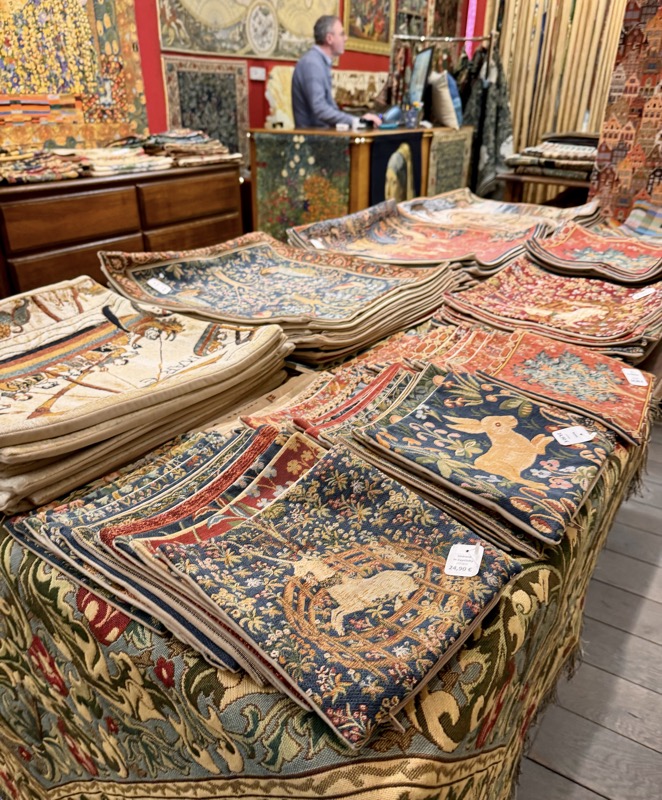
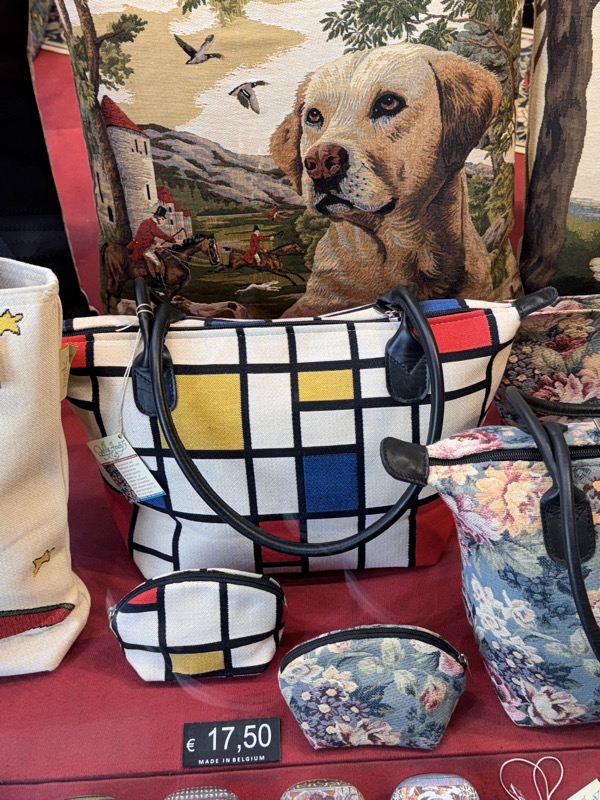
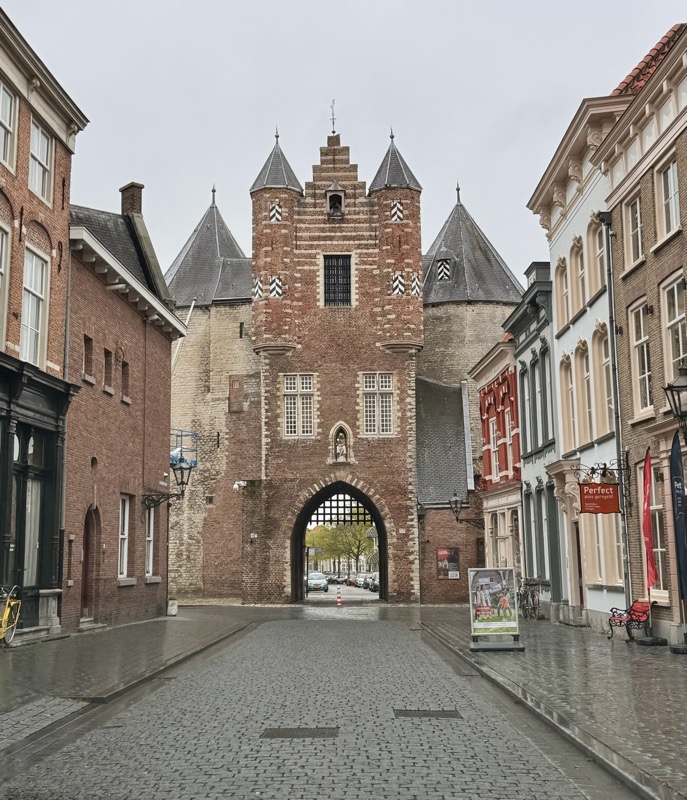
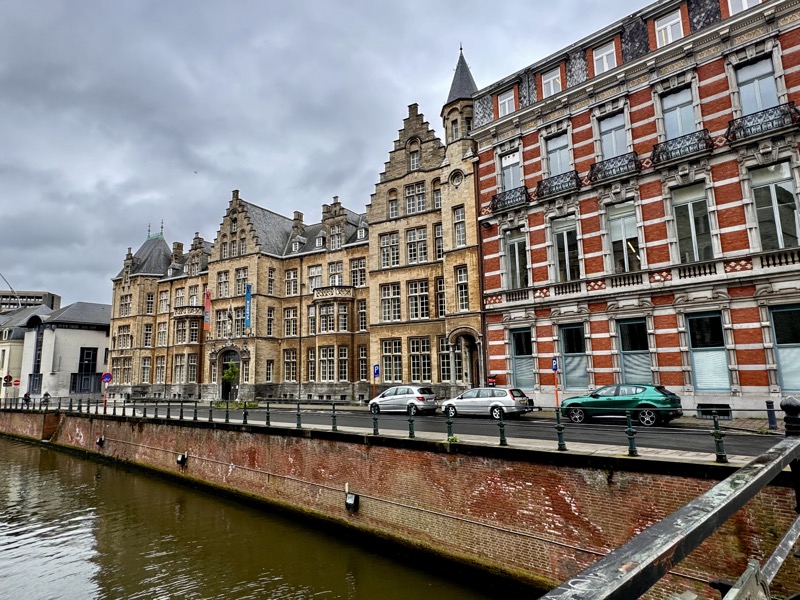
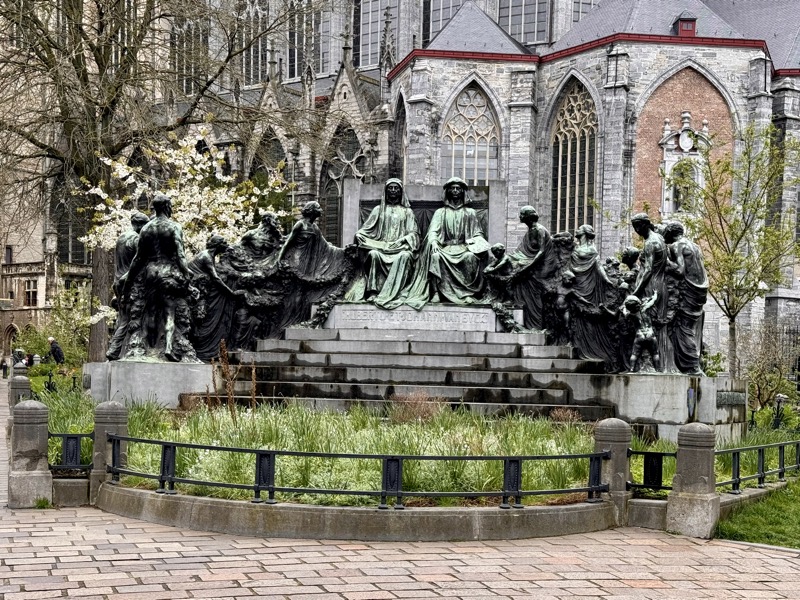
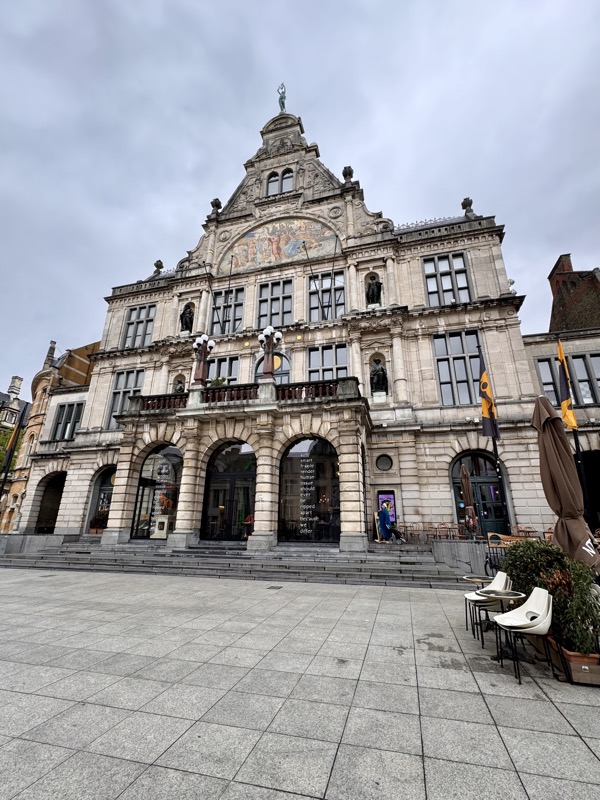
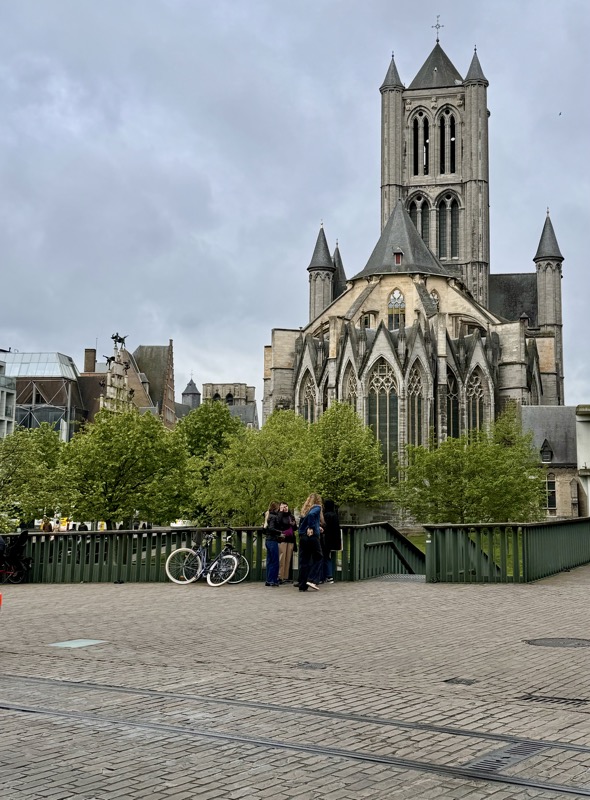
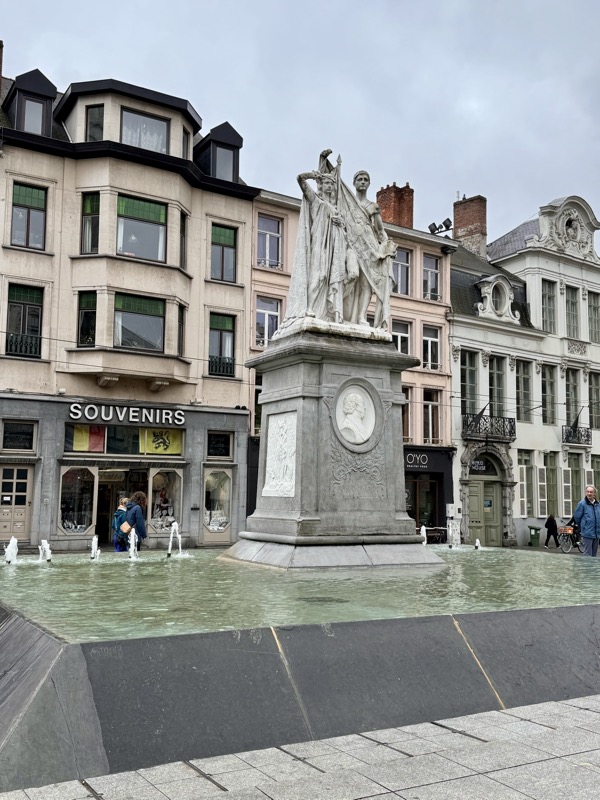
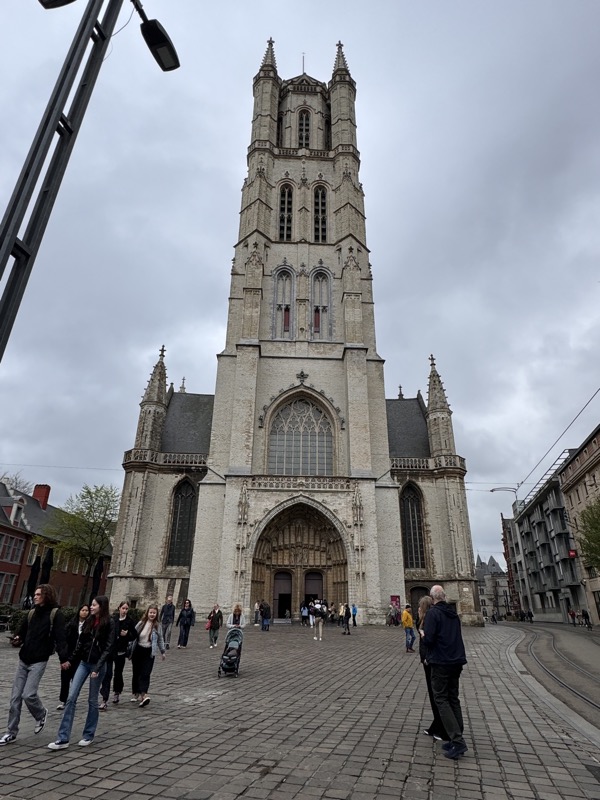
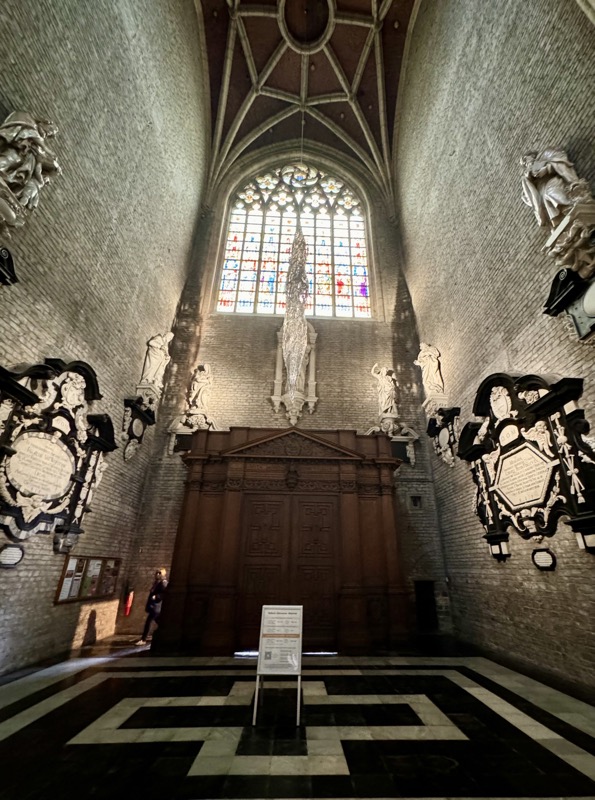
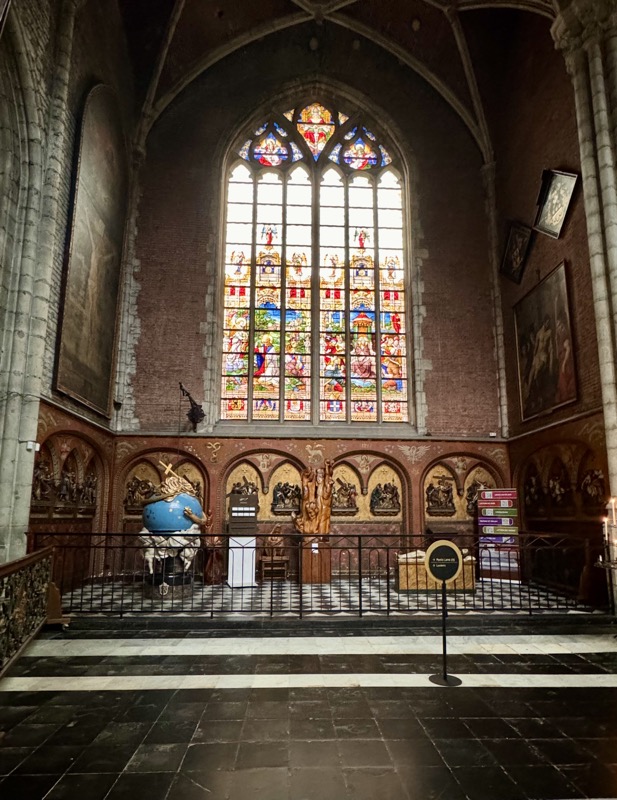
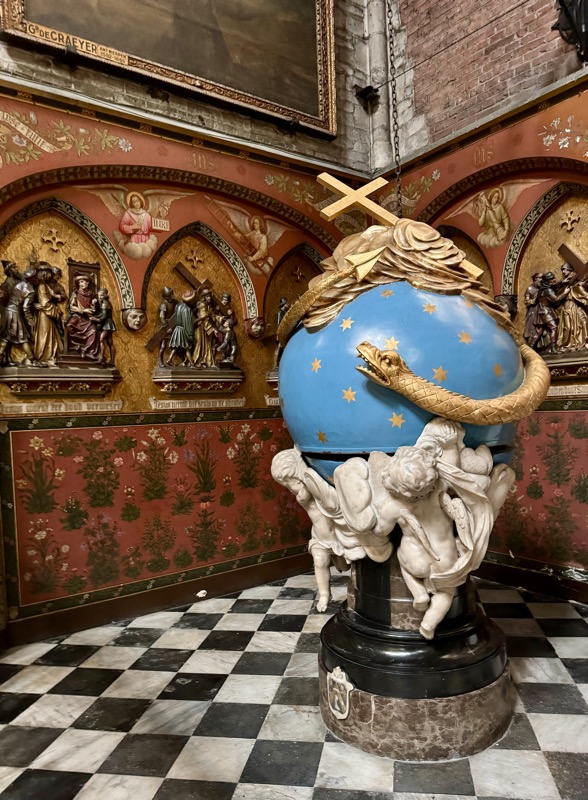
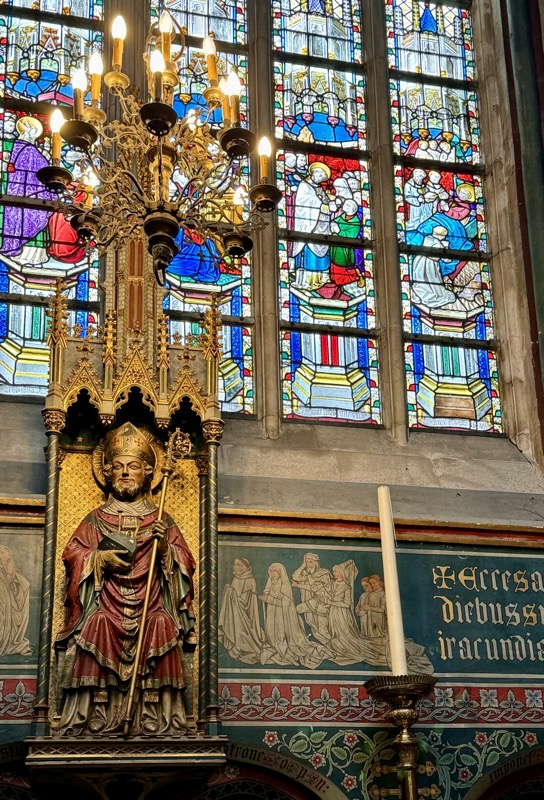
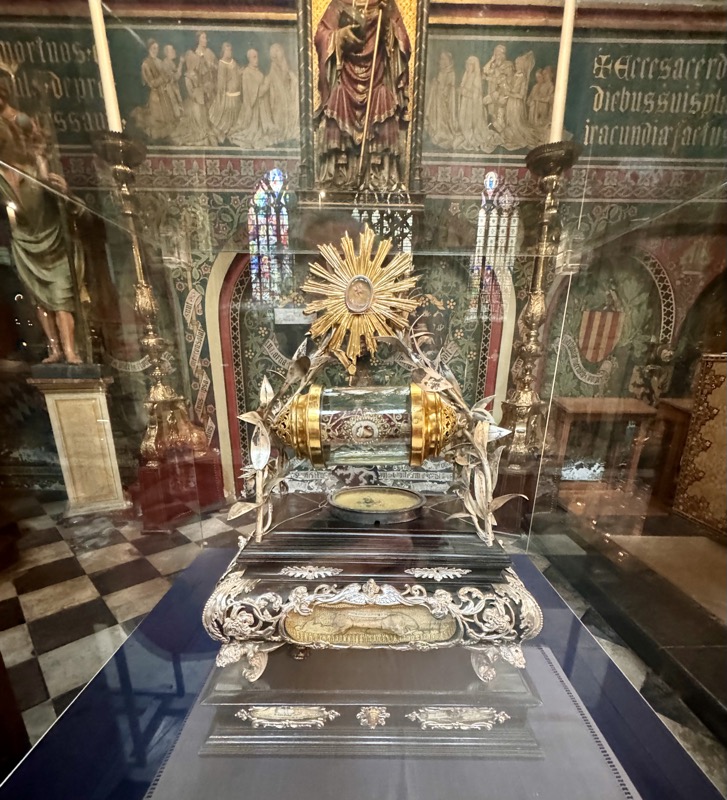
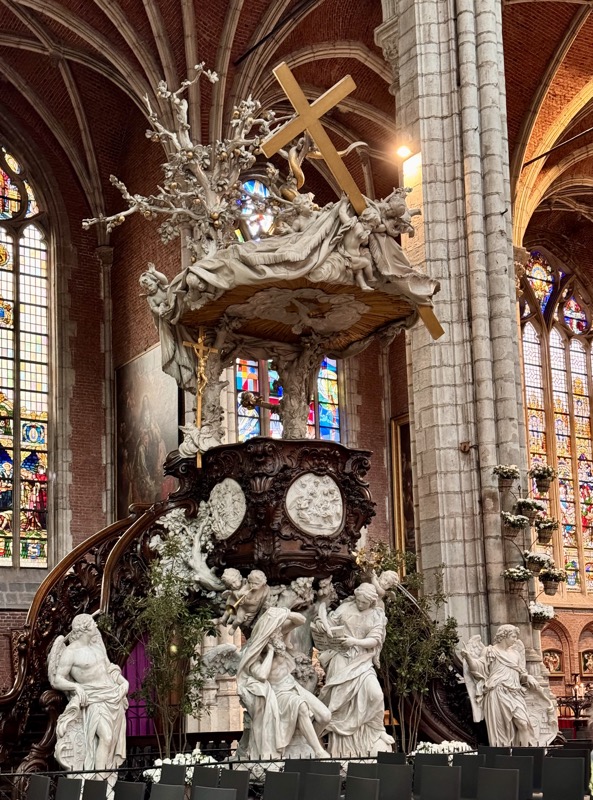
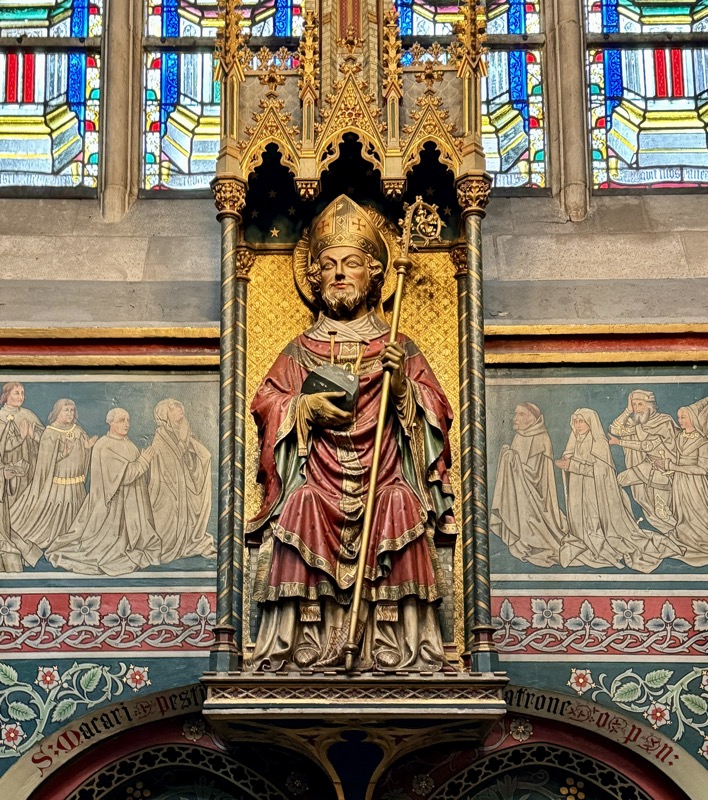
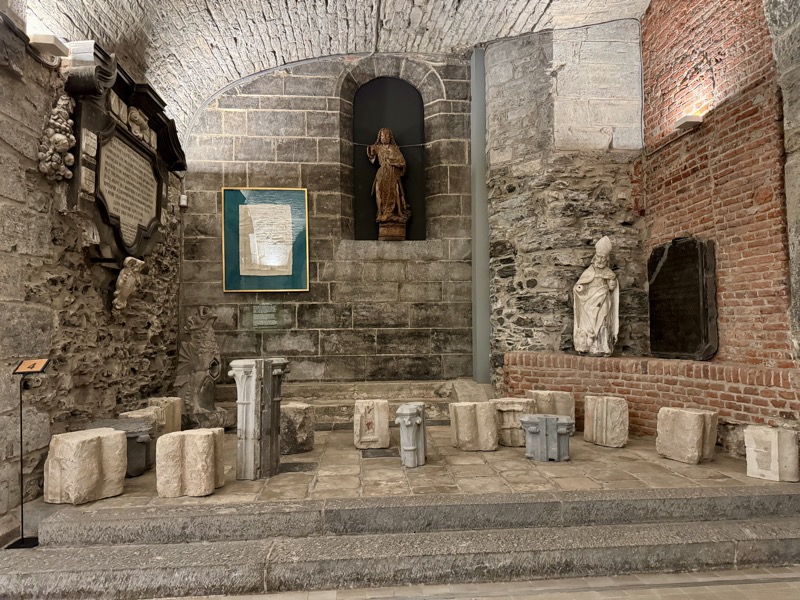
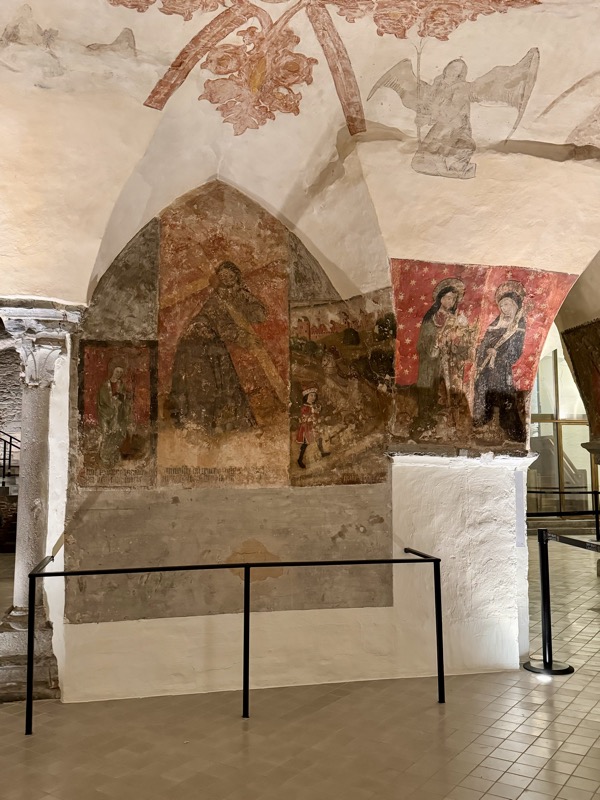
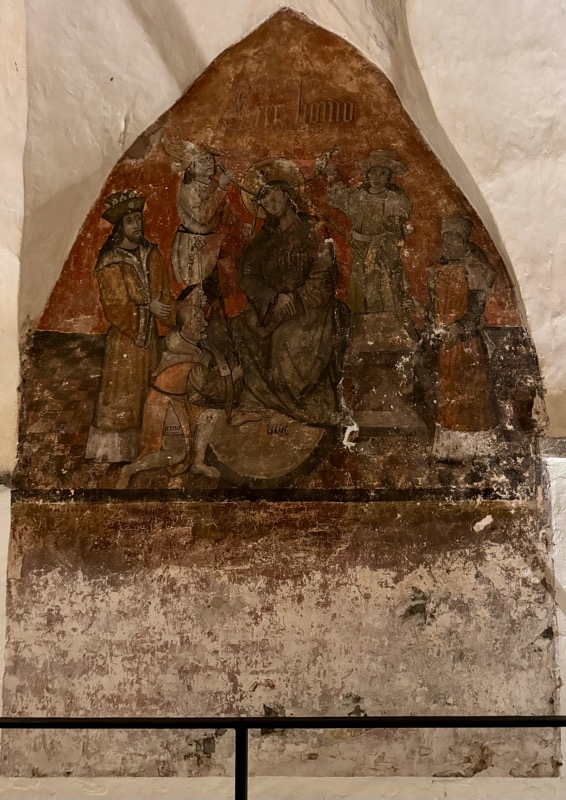
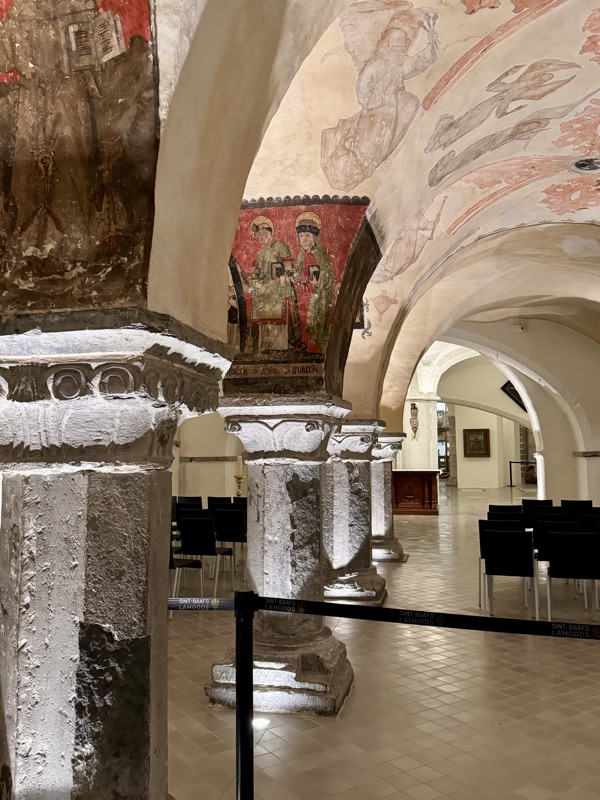
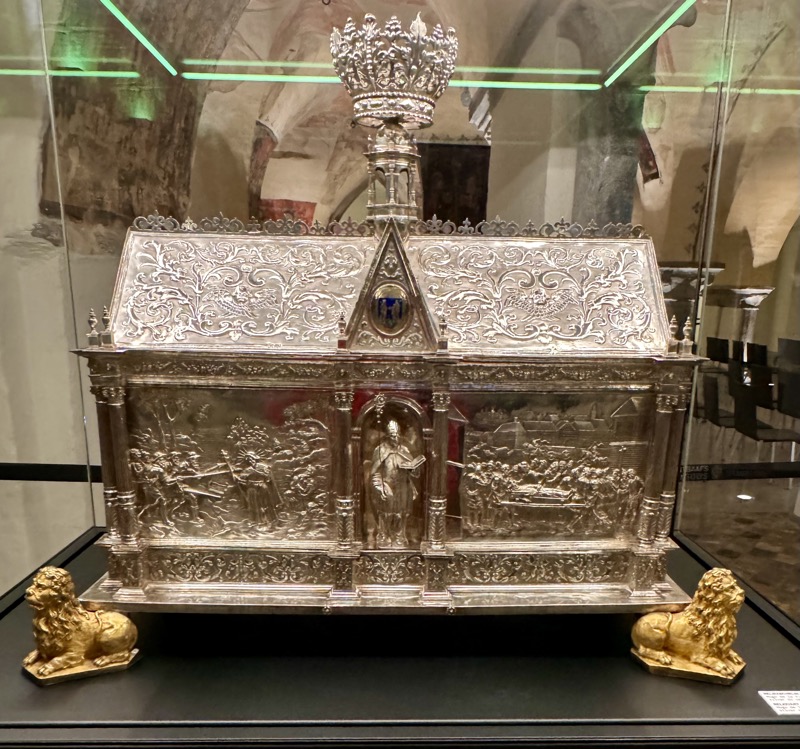
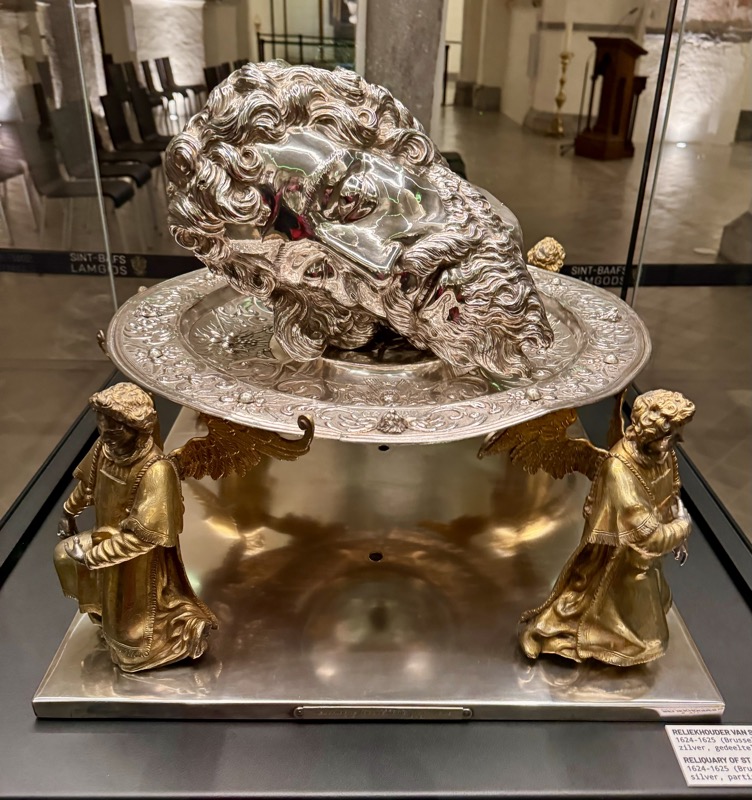
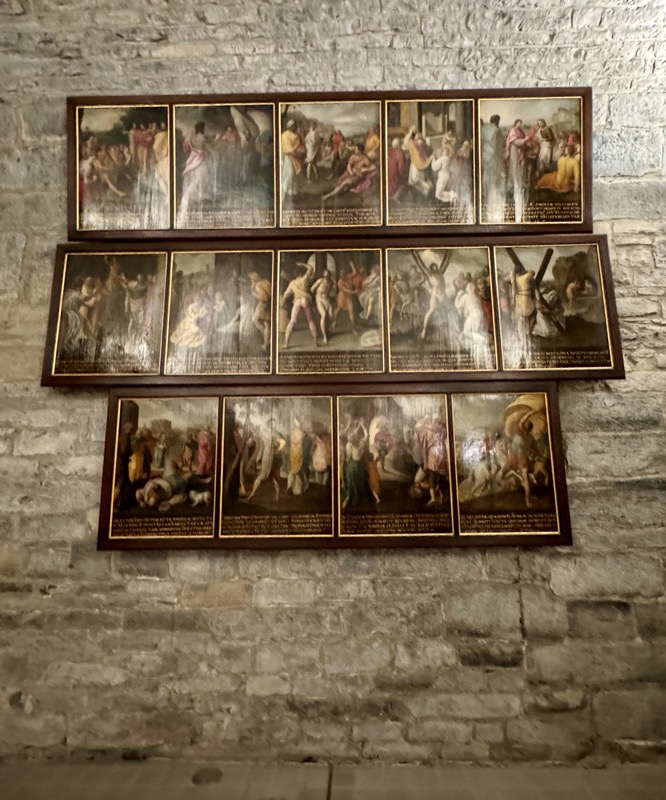
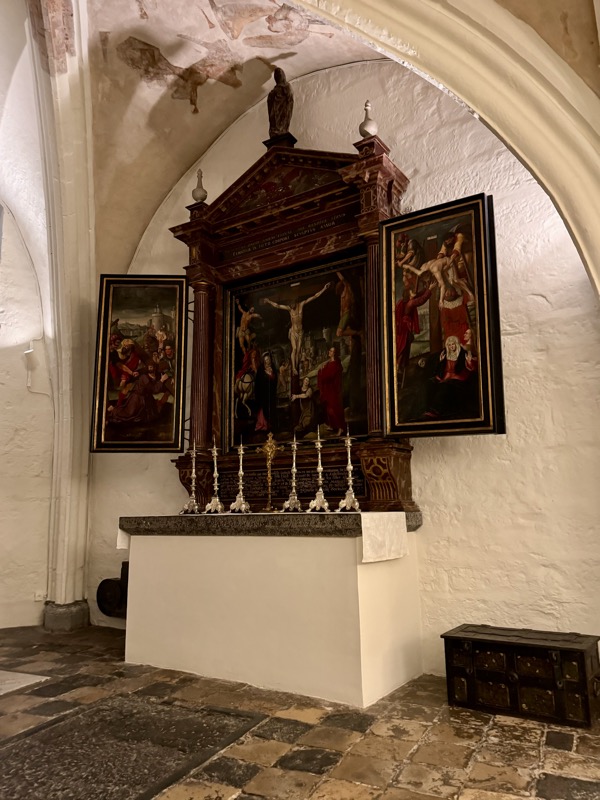
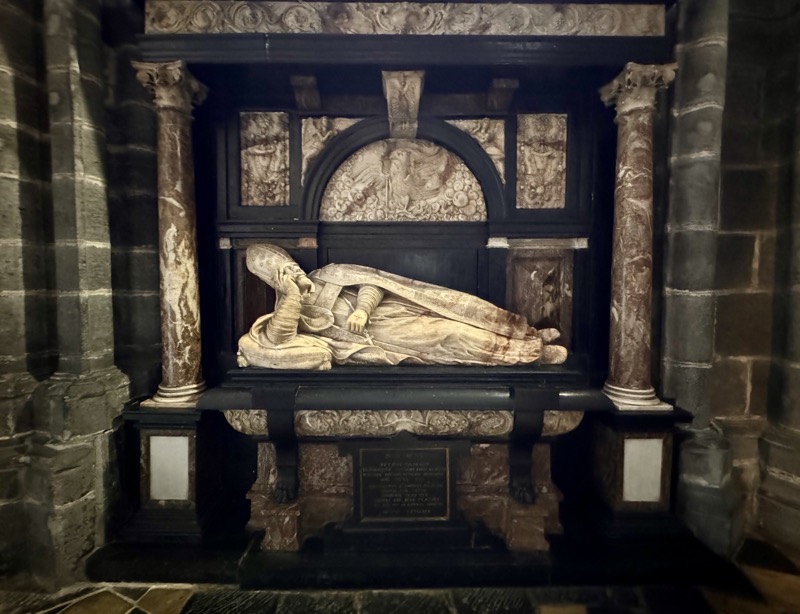
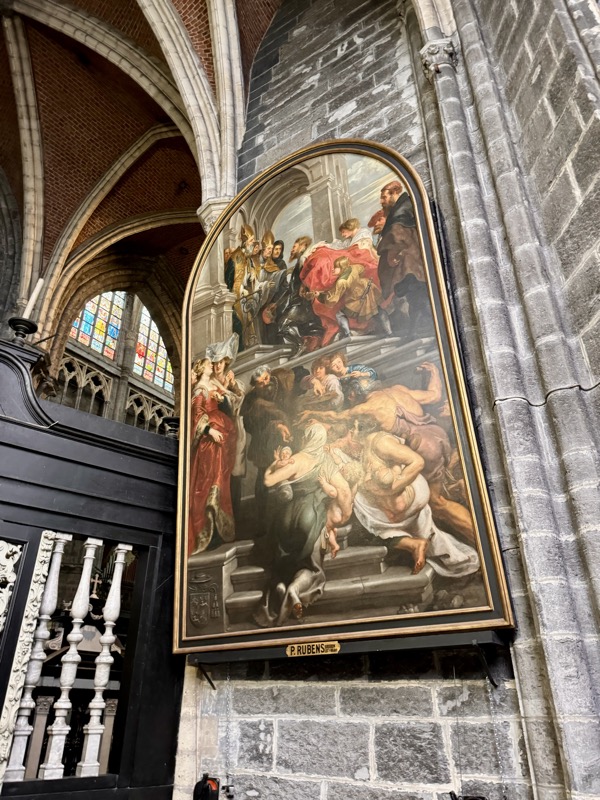
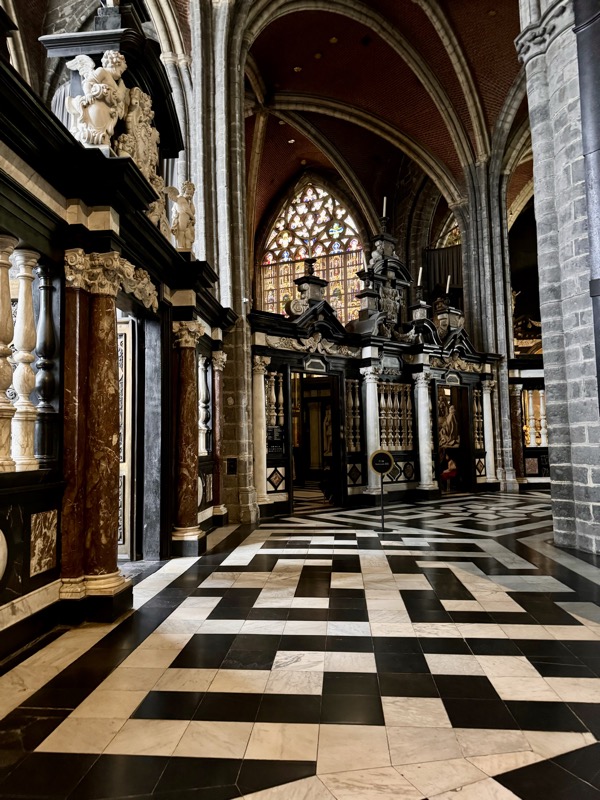
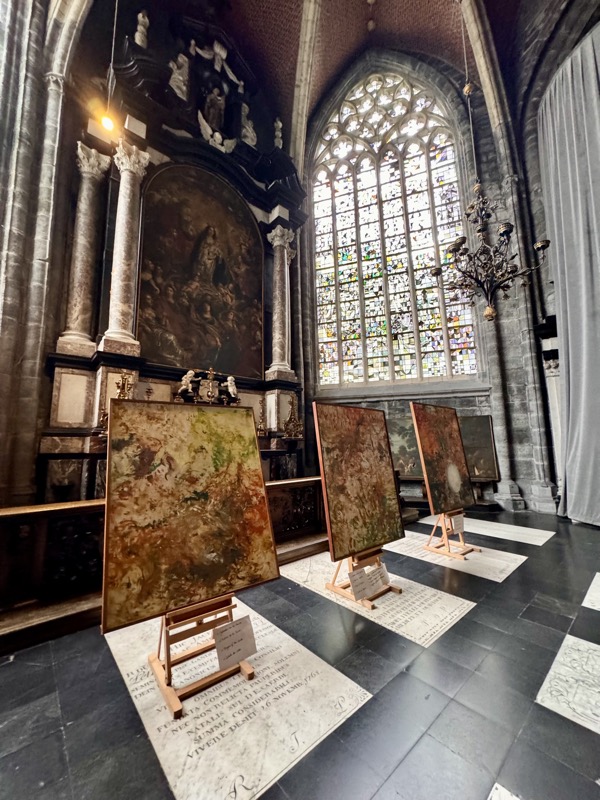
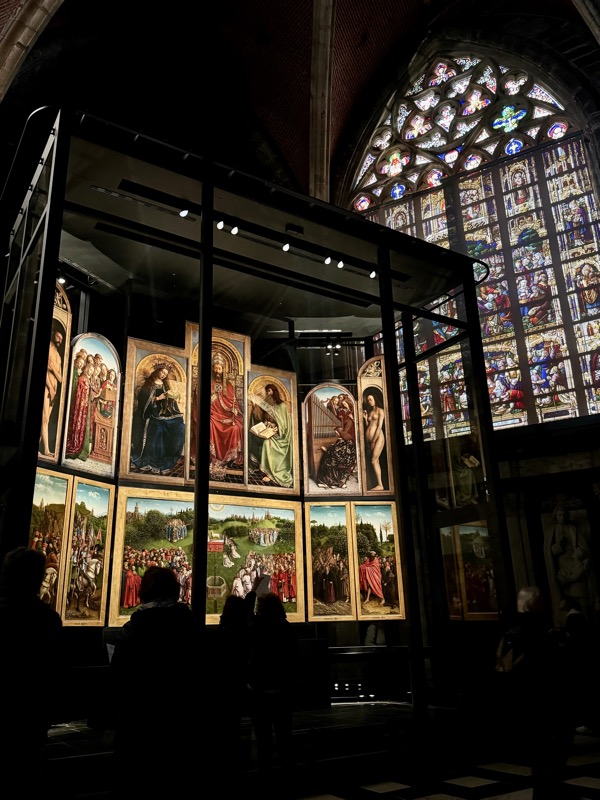
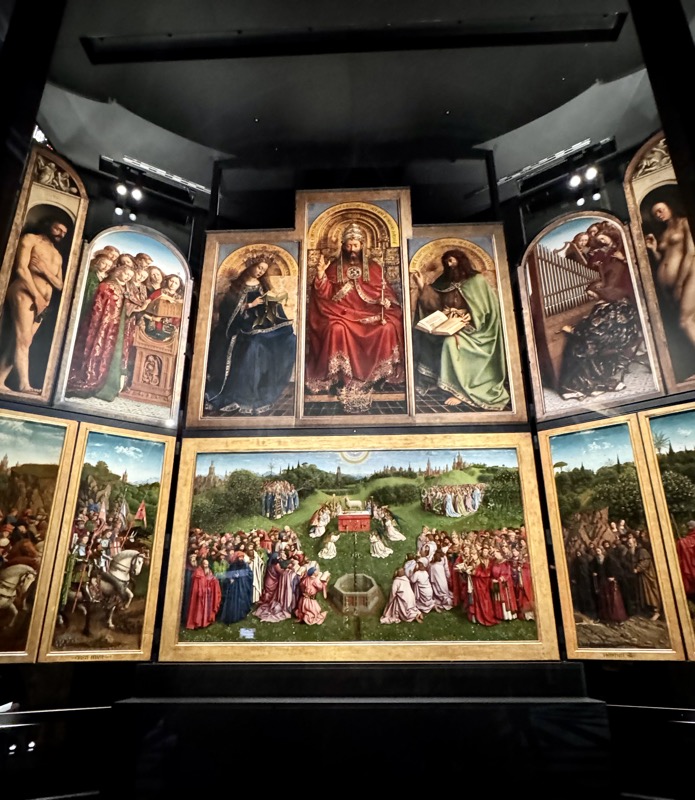
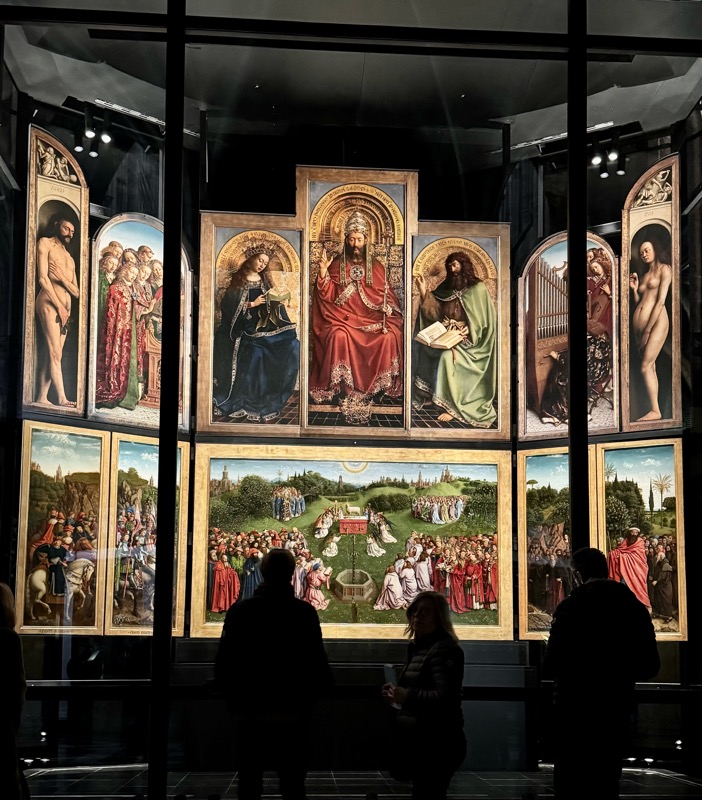
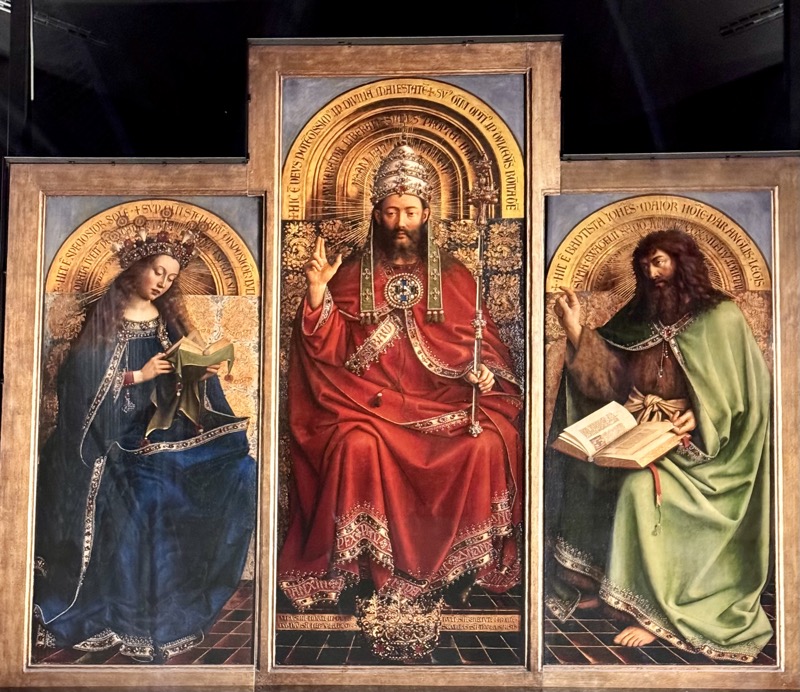
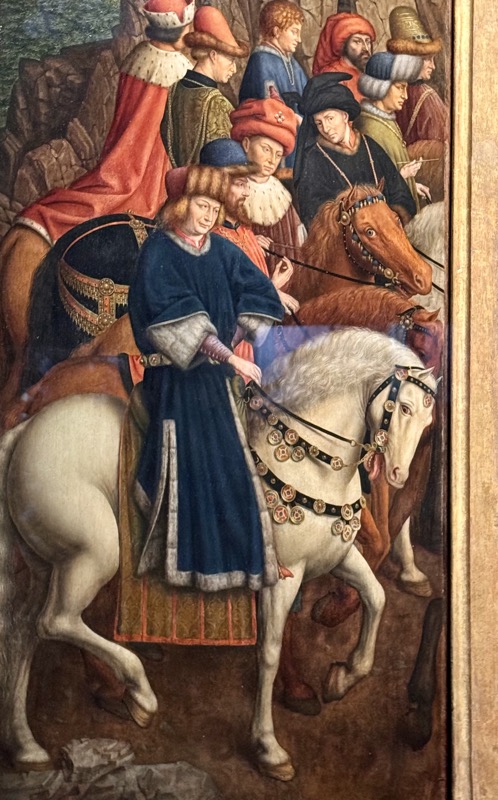
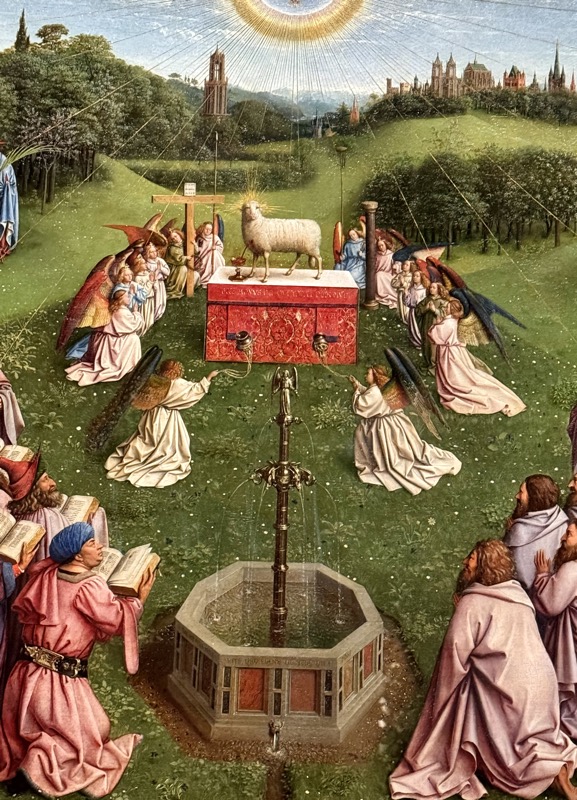
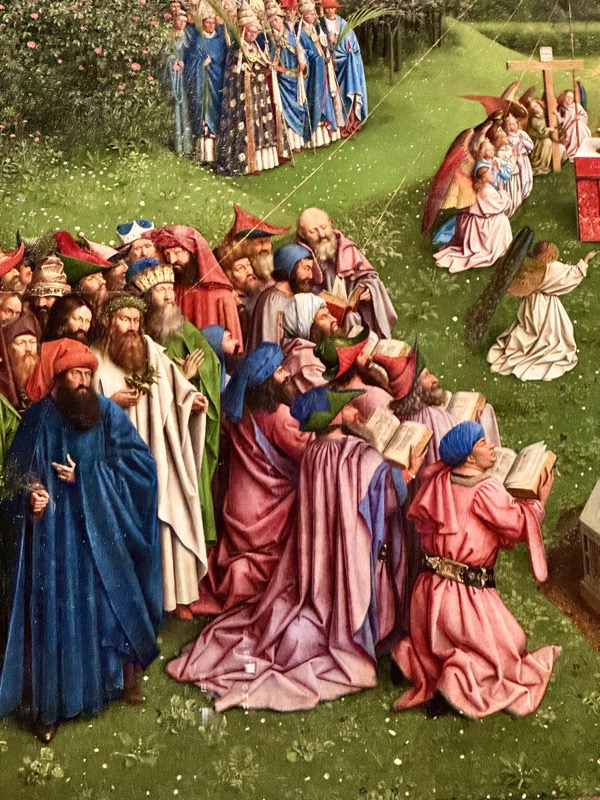
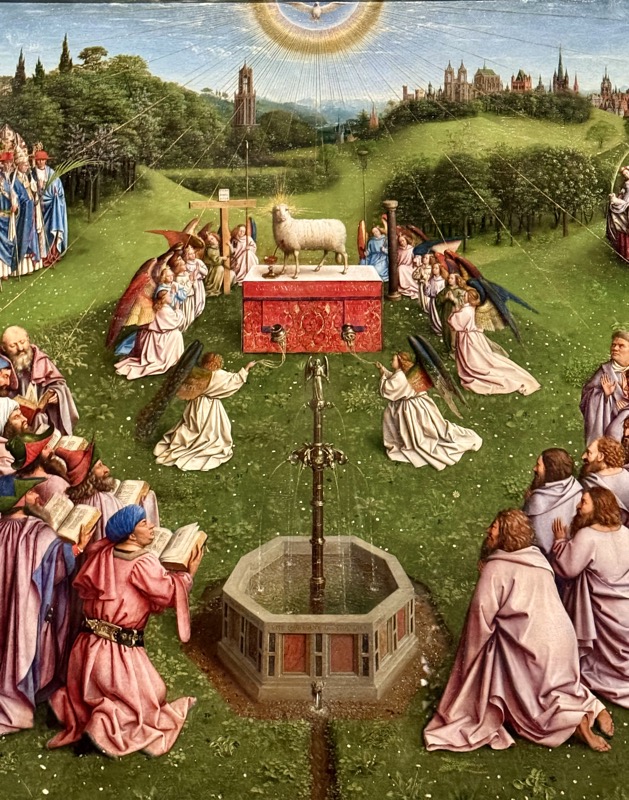
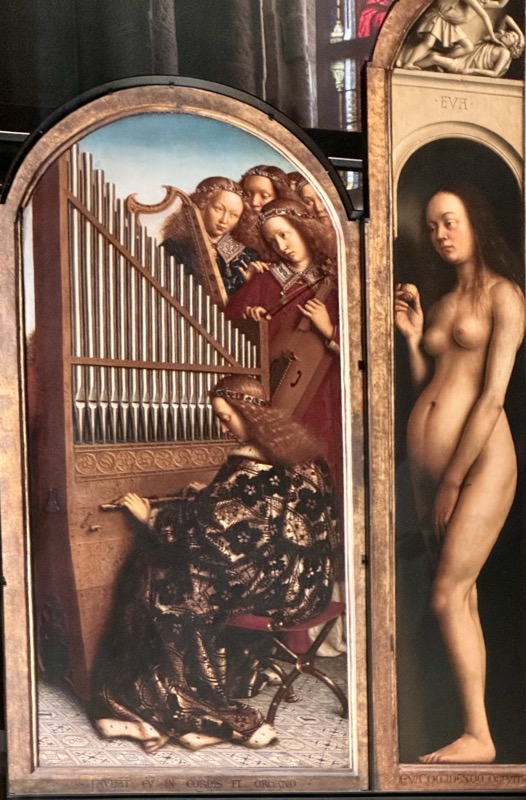
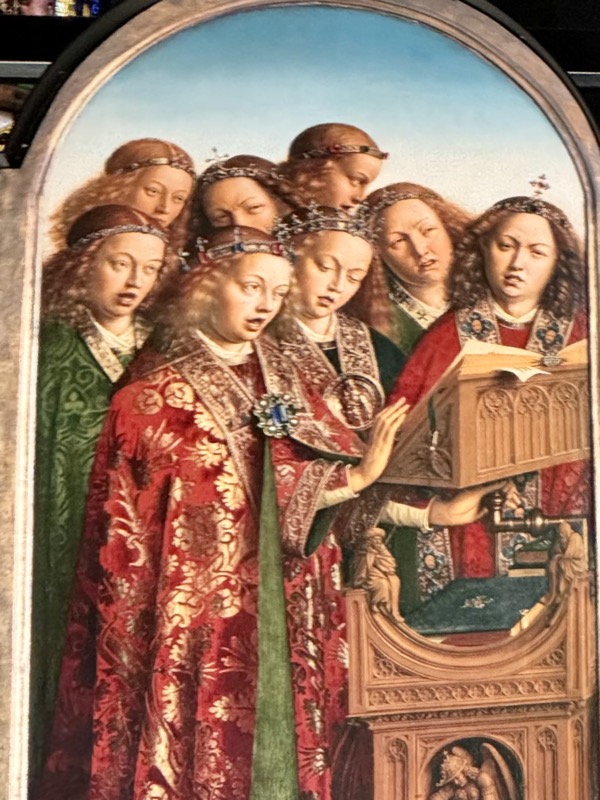
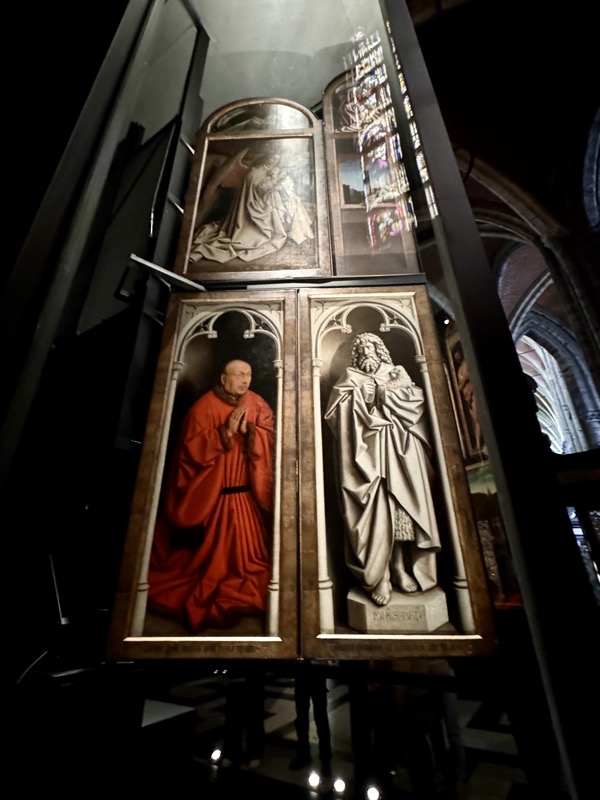
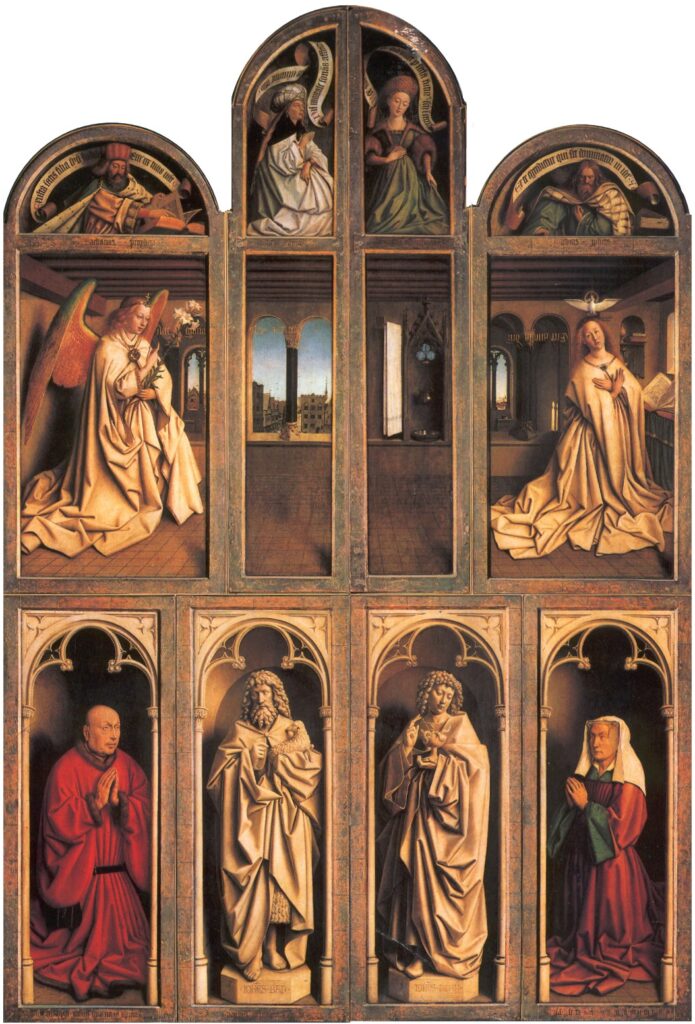
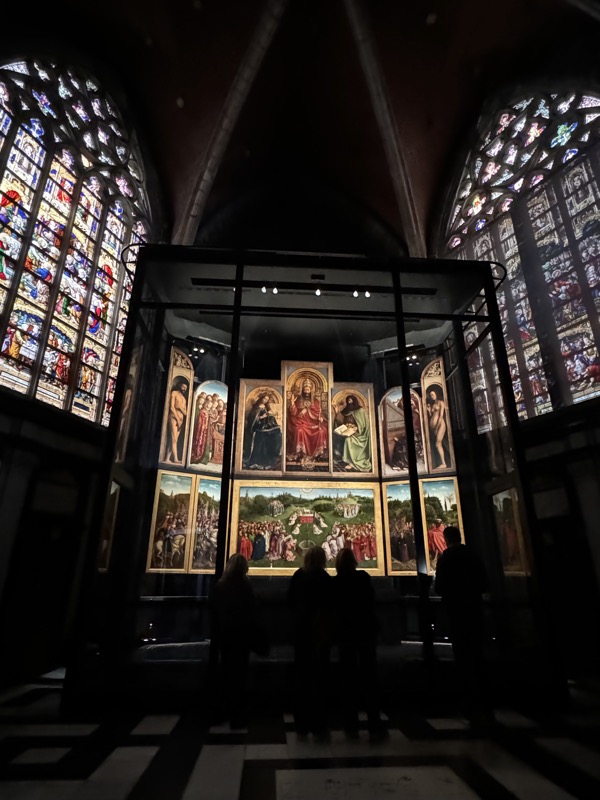
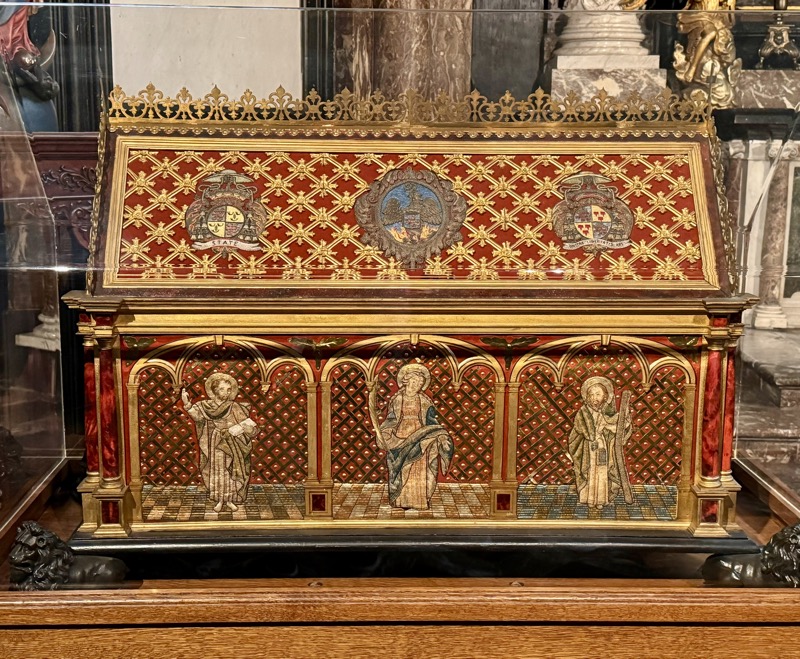
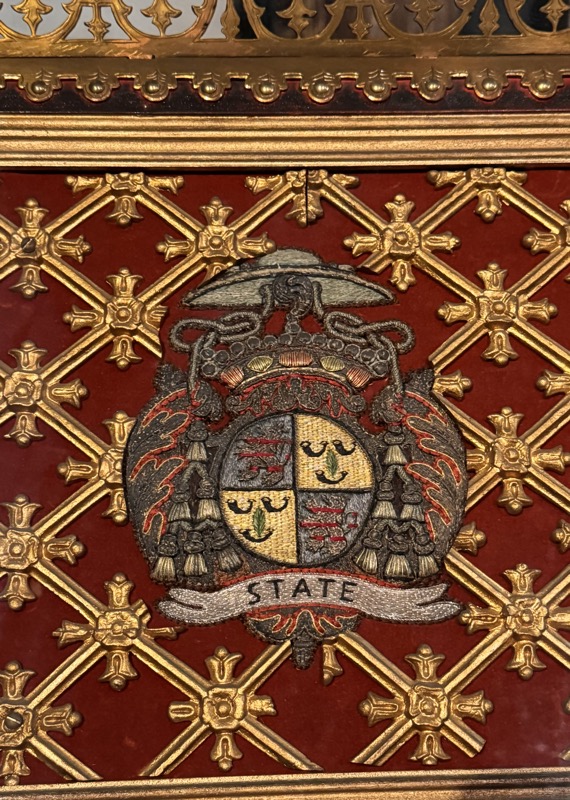
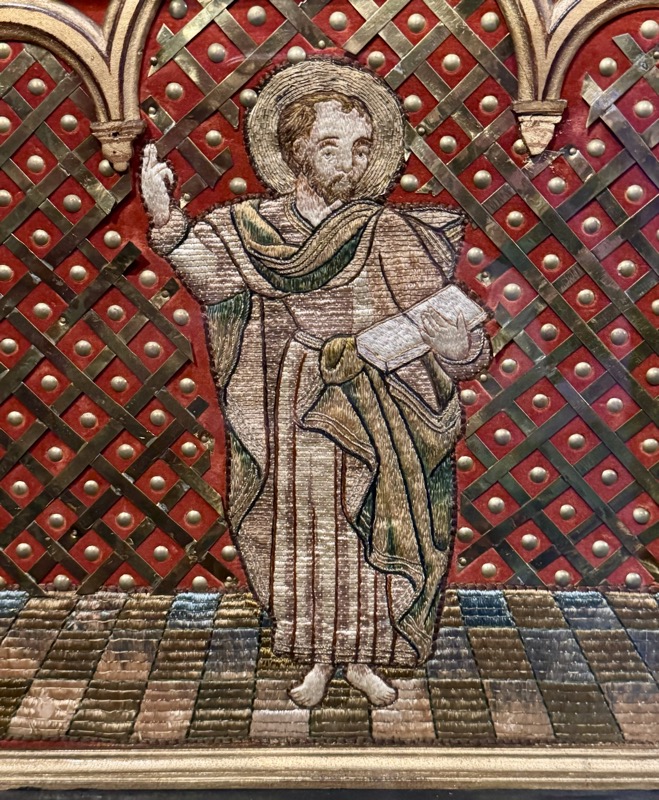
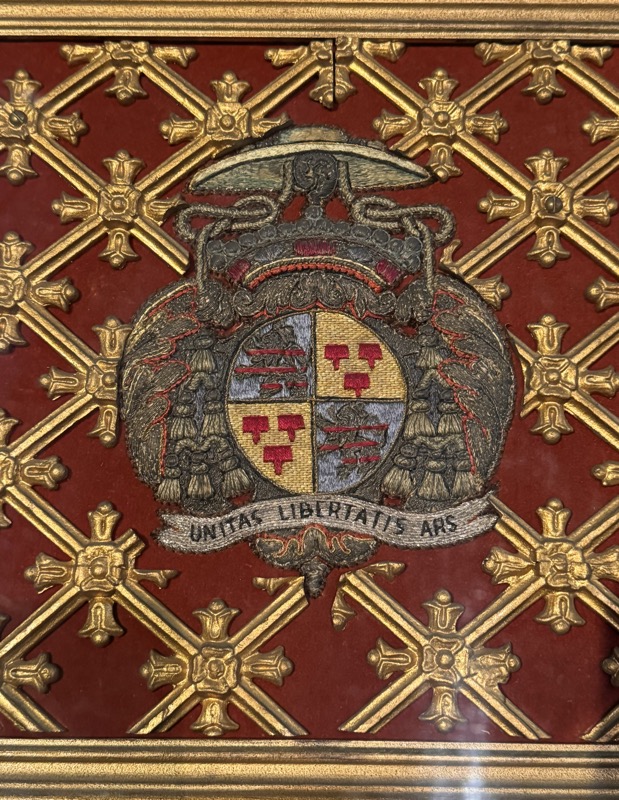
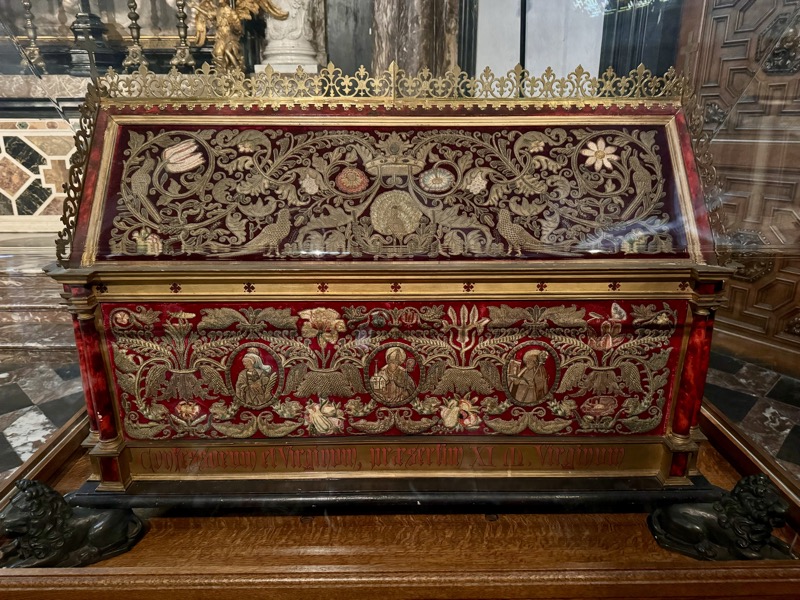
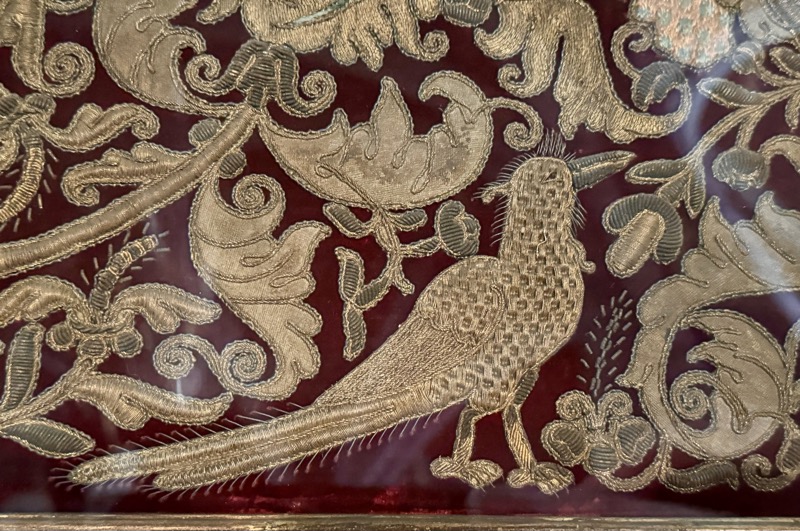
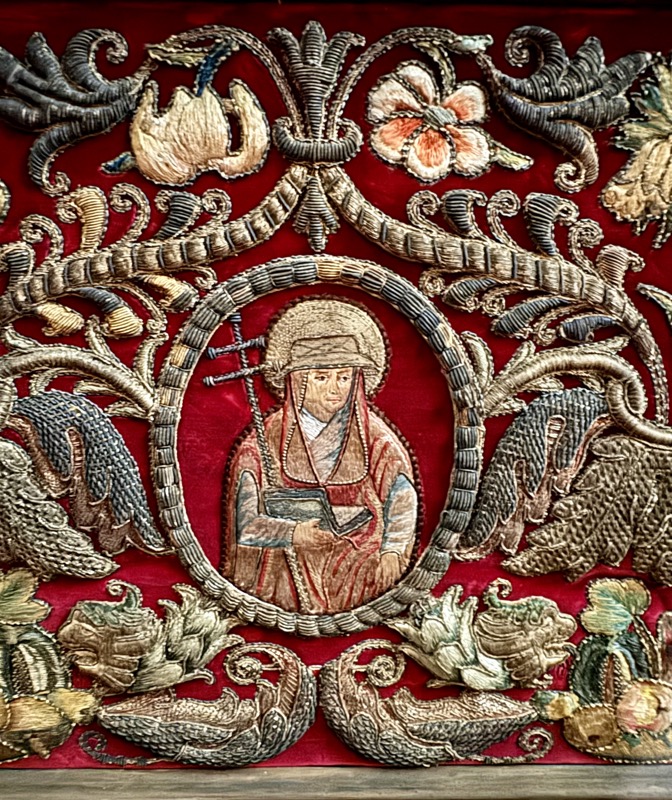
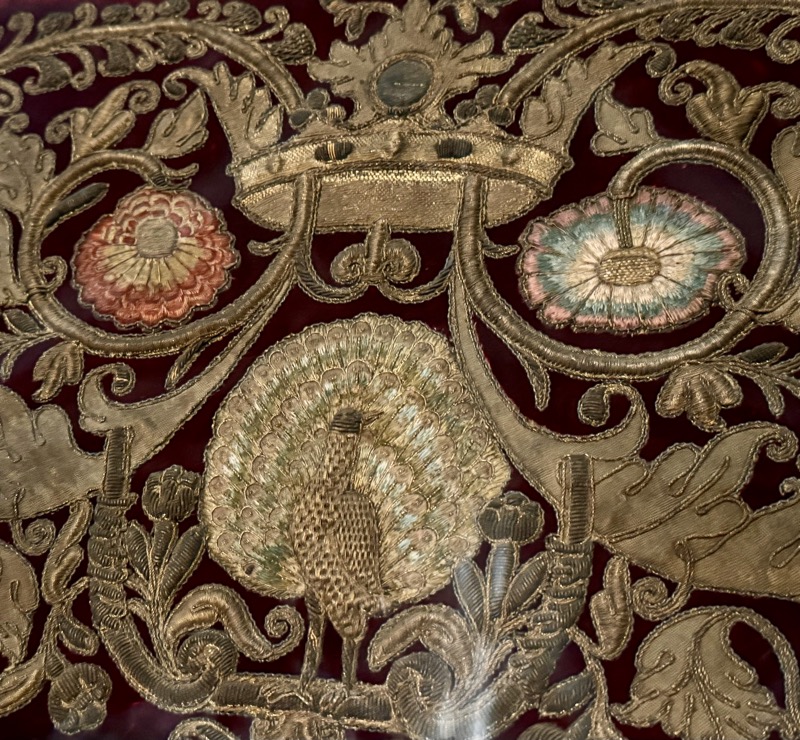
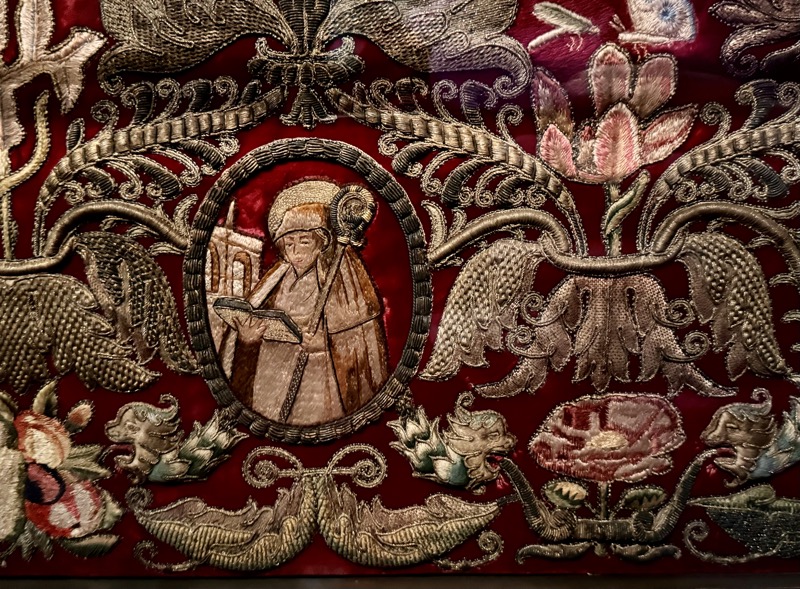
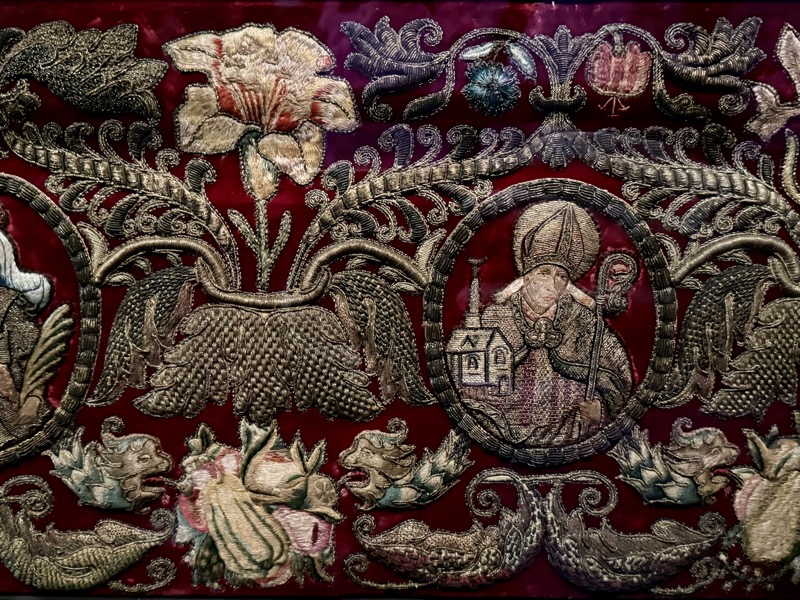
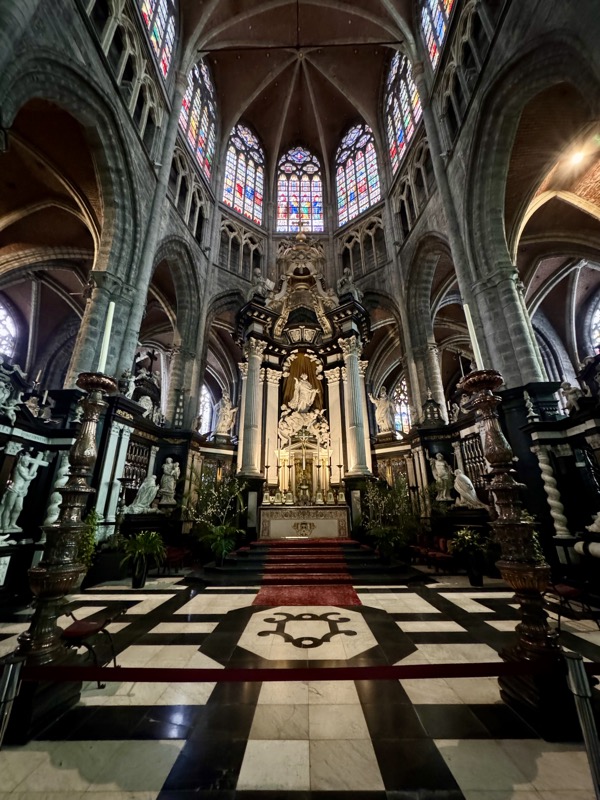
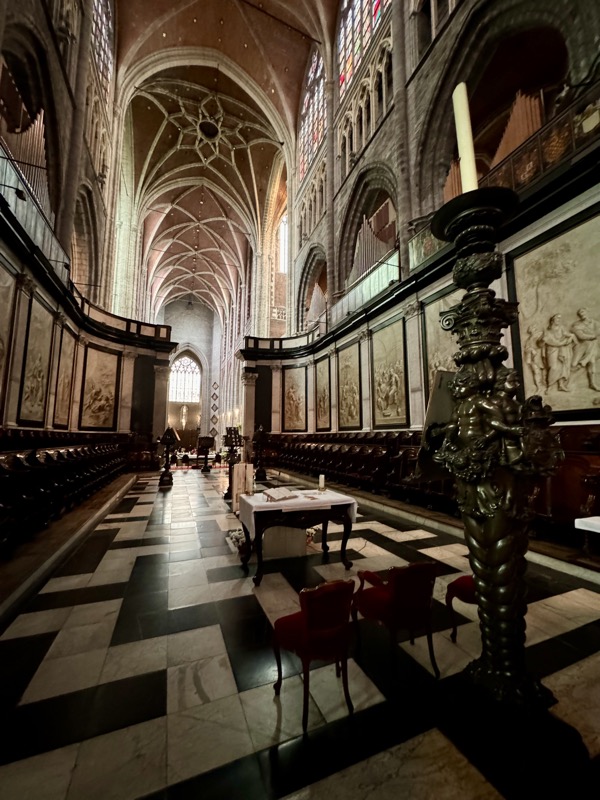
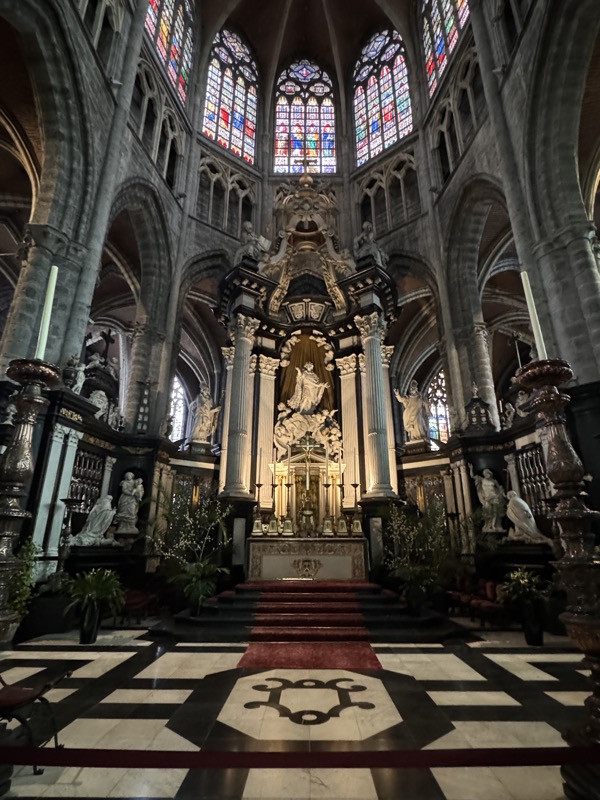
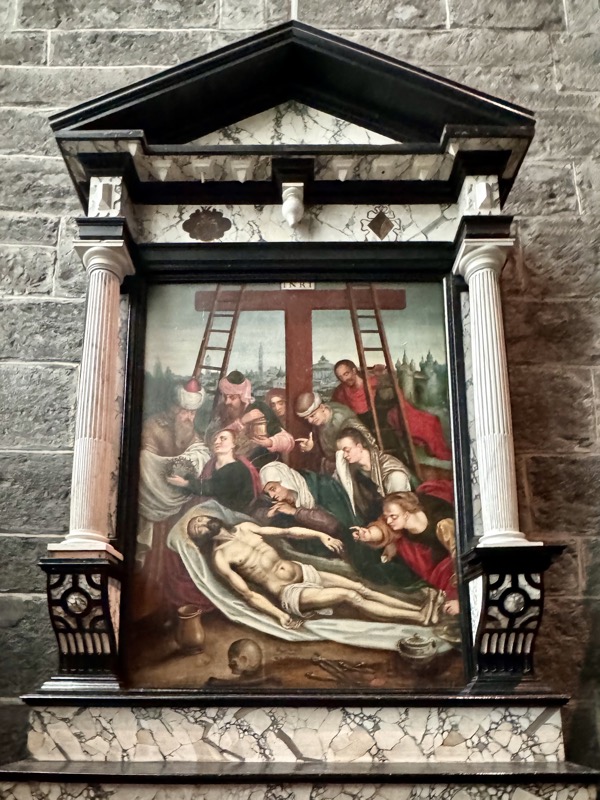
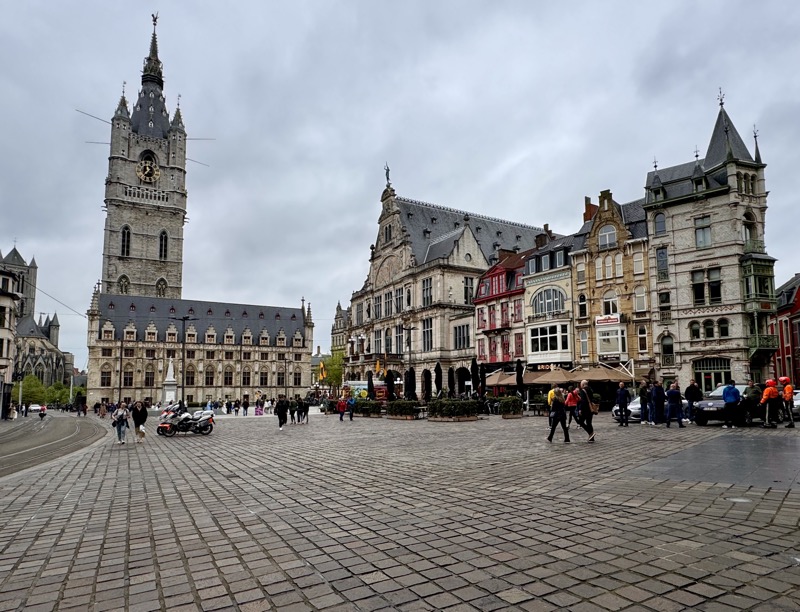
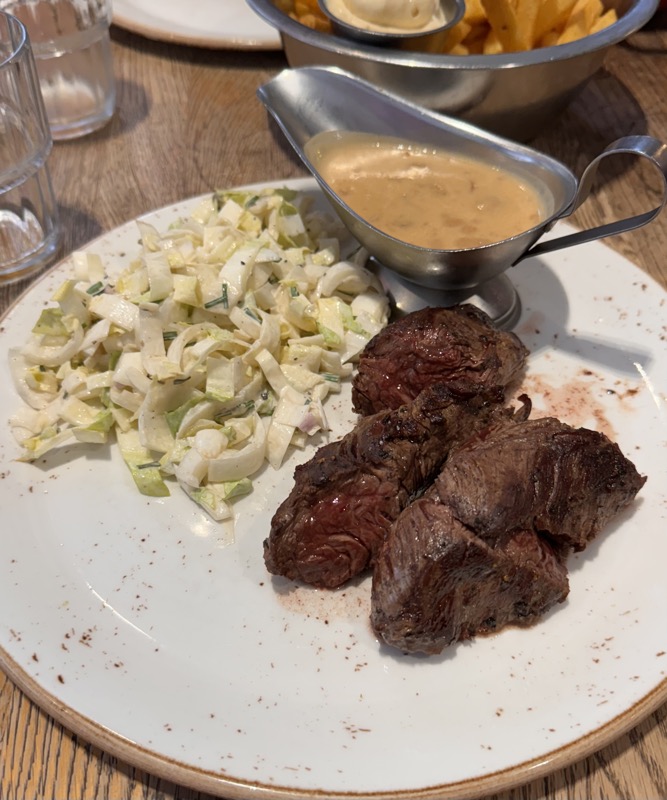
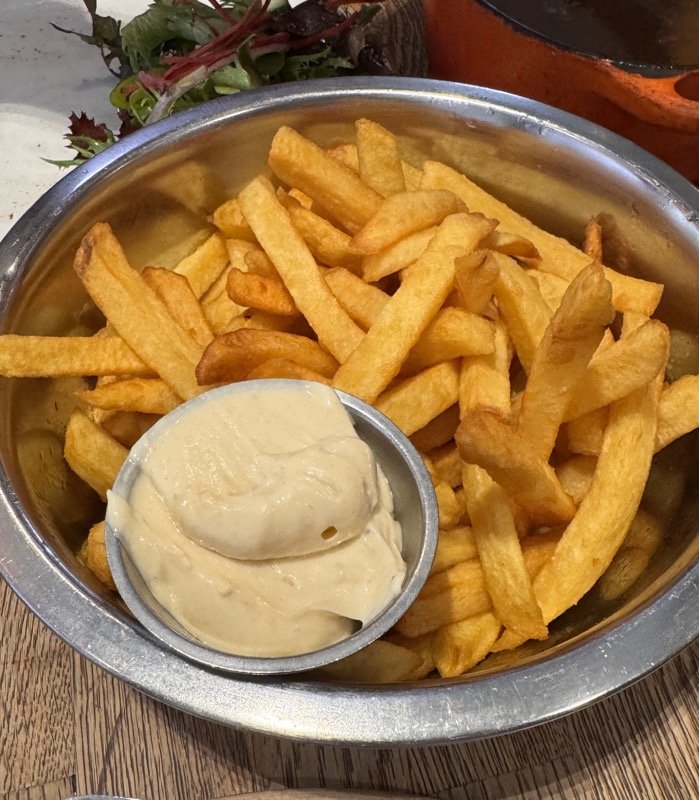
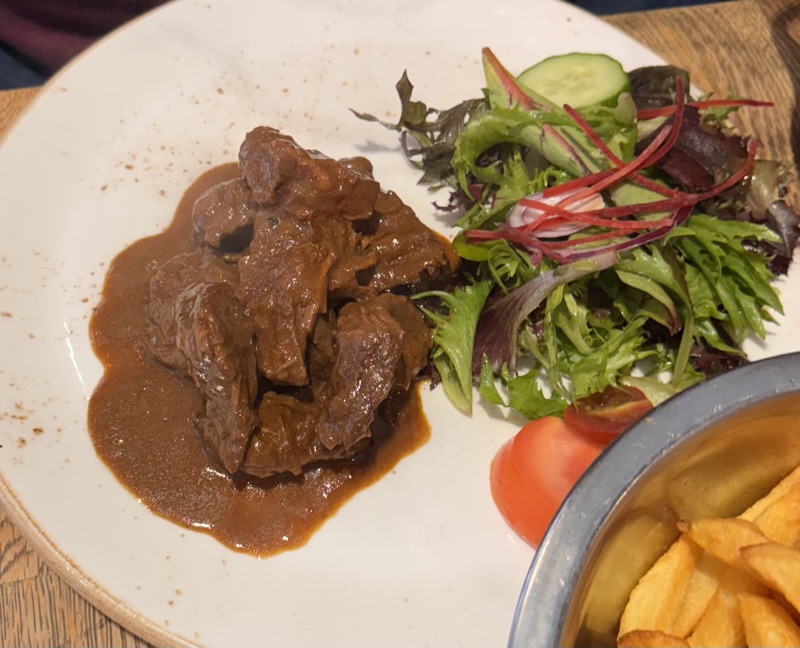
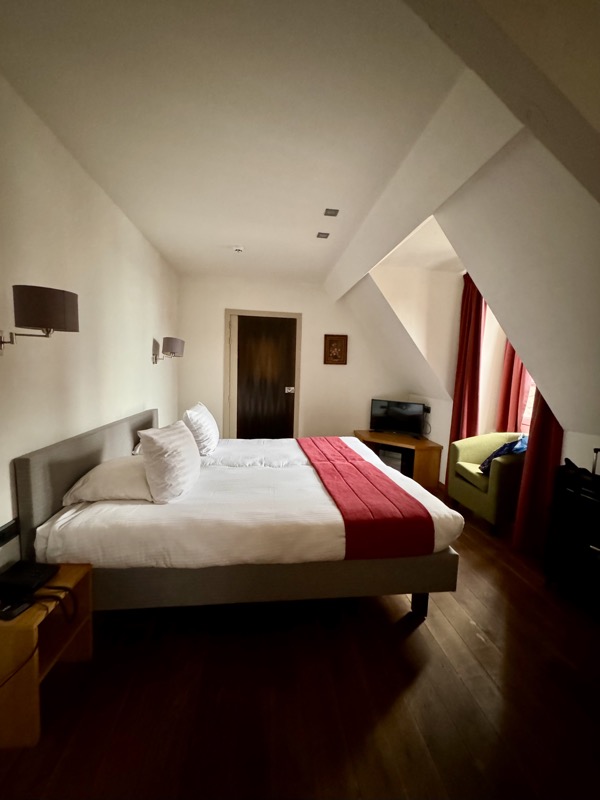
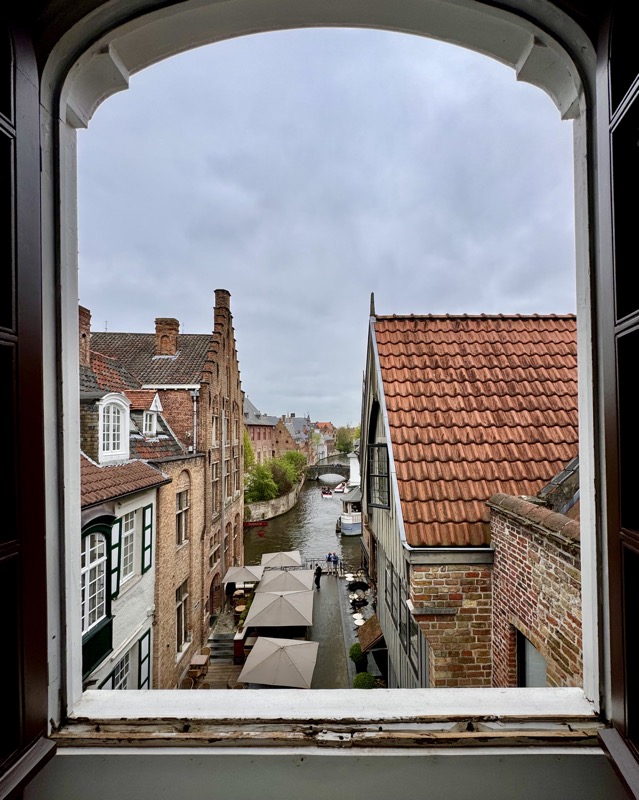
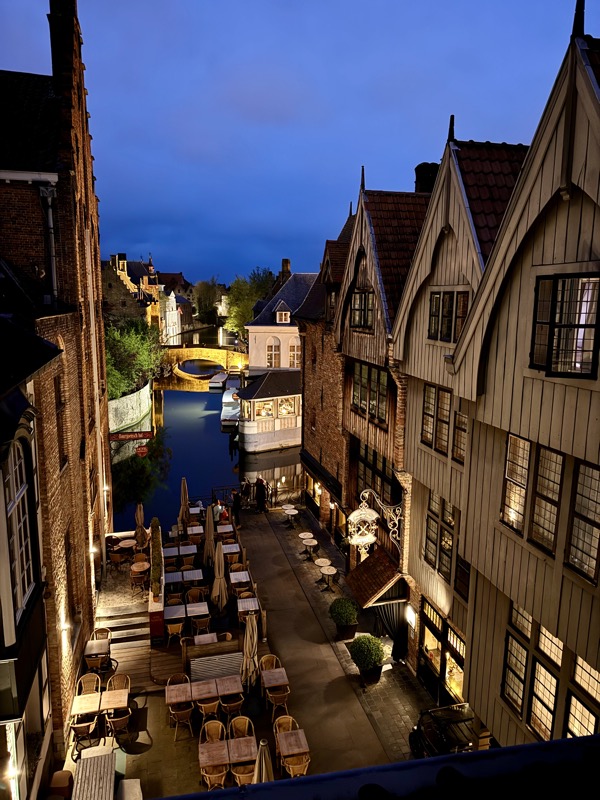
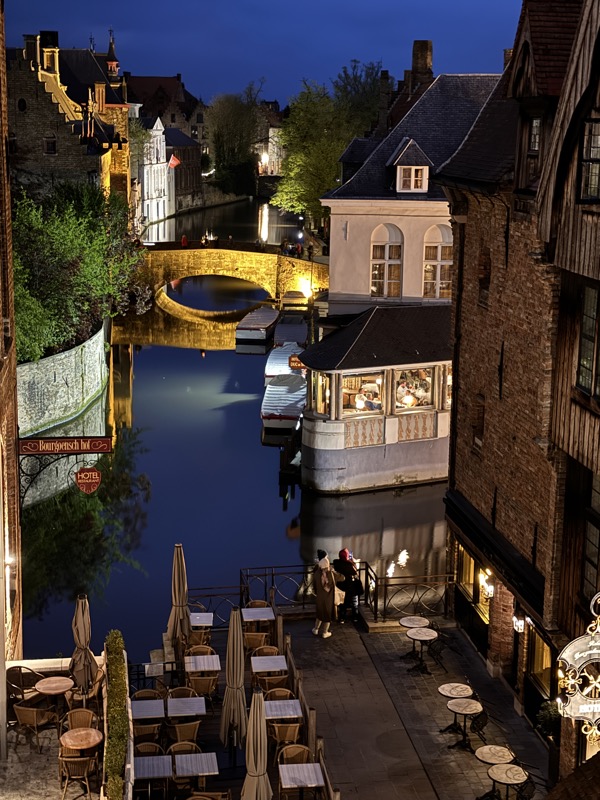
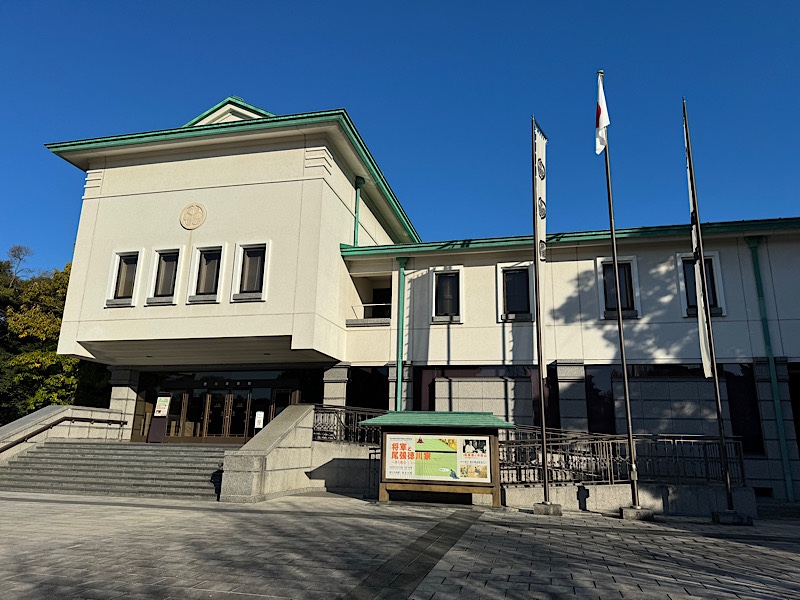
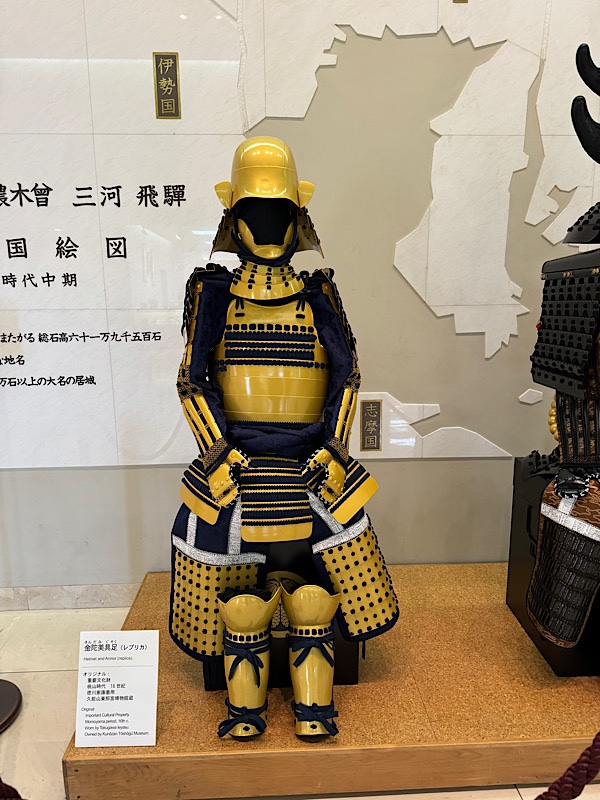
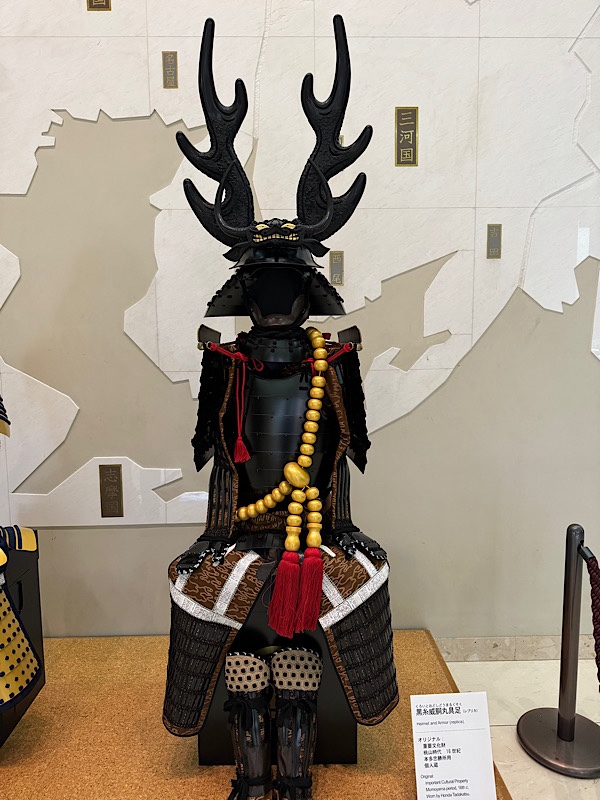 Traditional feudal map of the Nagoya area… could not ascertain from the description when it was created or by whom.
Traditional feudal map of the Nagoya area… could not ascertain from the description when it was created or by whom.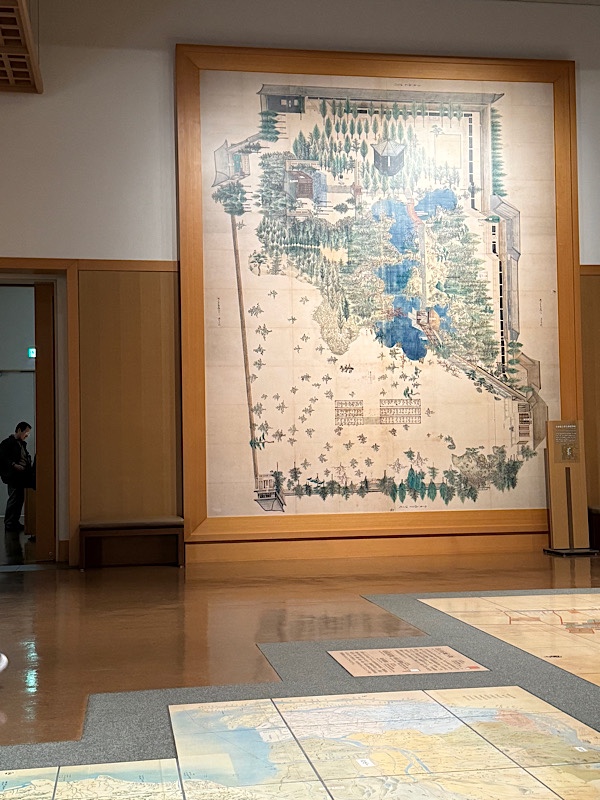 Ooh, pretty garden visible from one of the internal passage ways between exhibition halls.
Ooh, pretty garden visible from one of the internal passage ways between exhibition halls.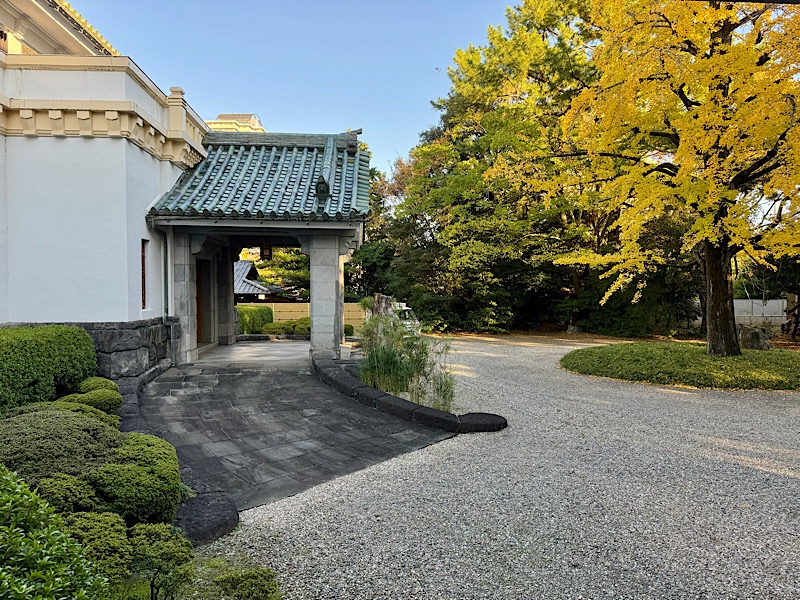
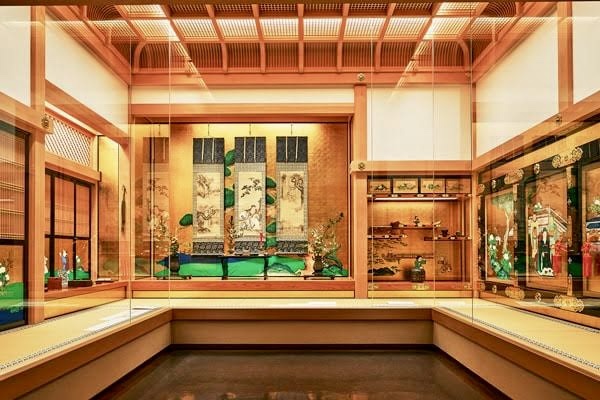
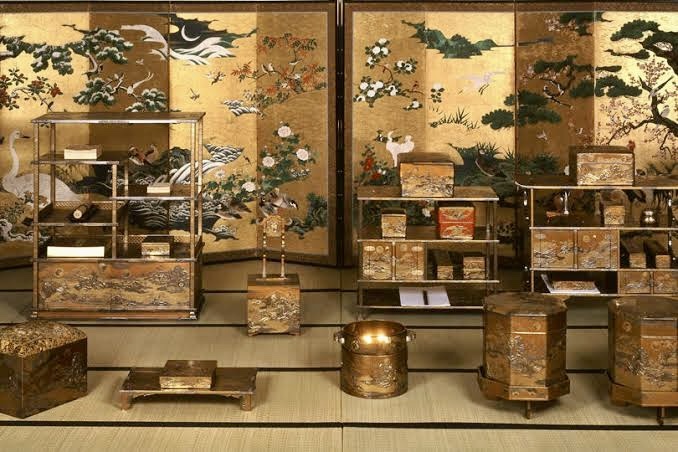
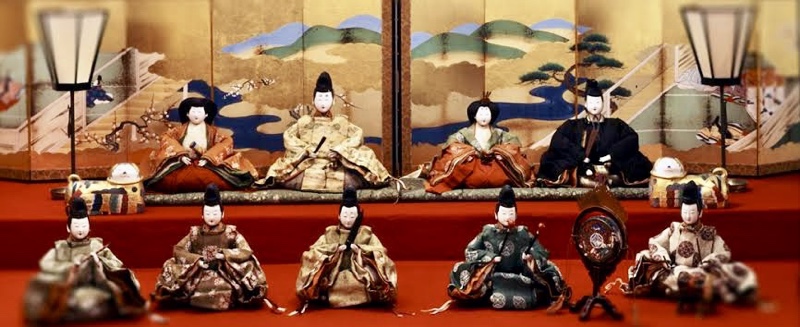
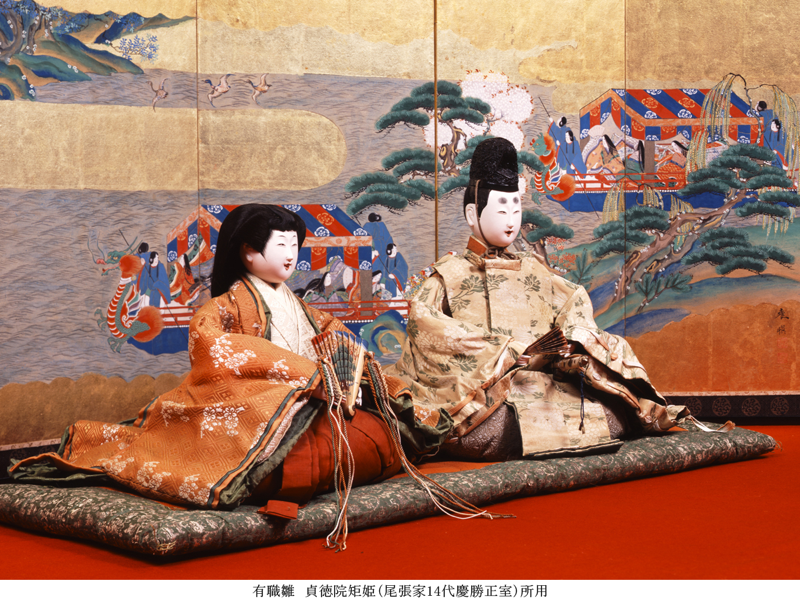
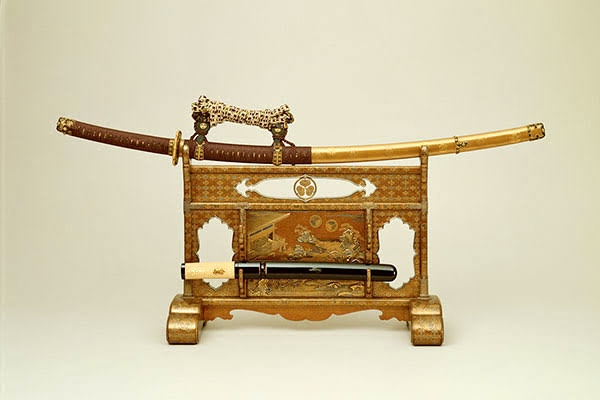
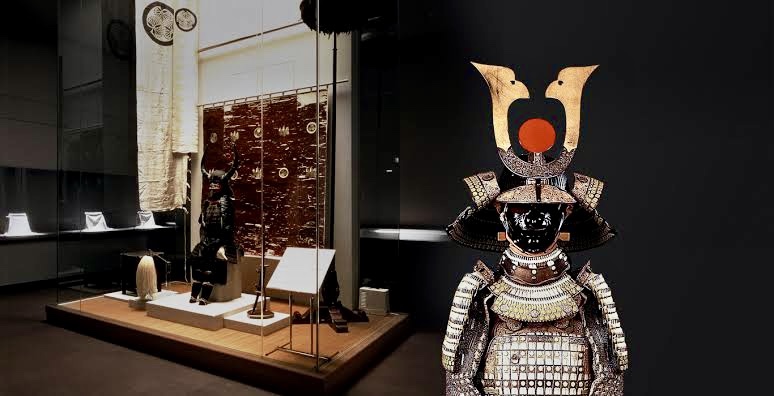
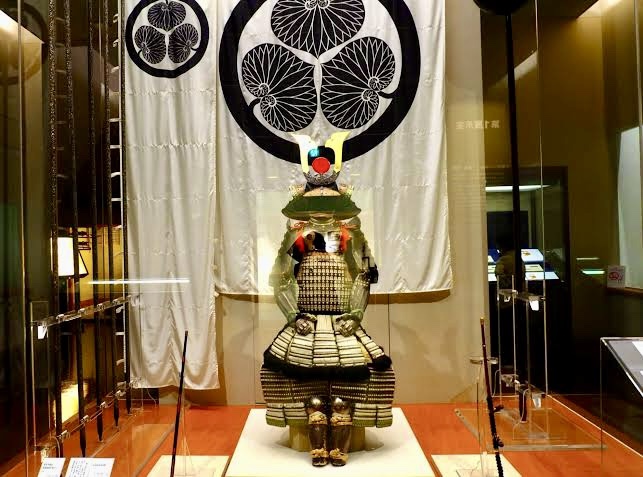
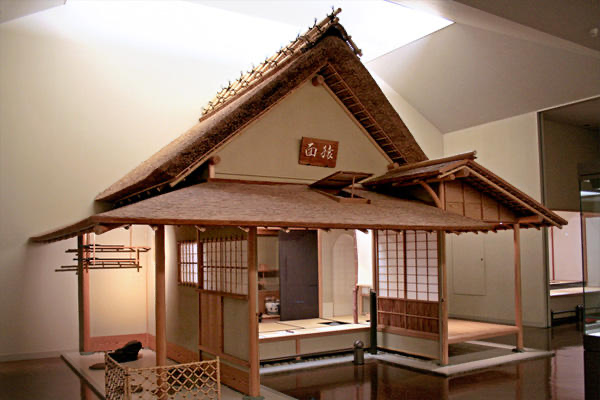
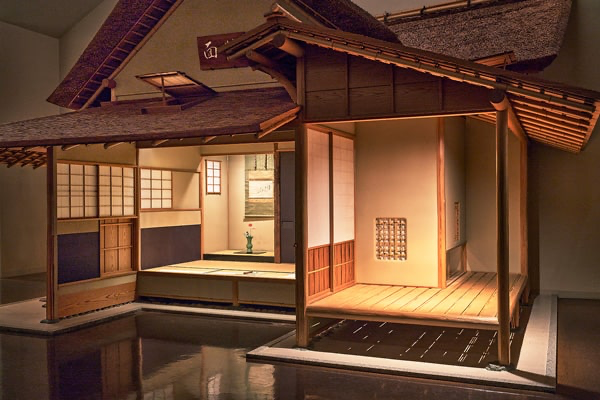
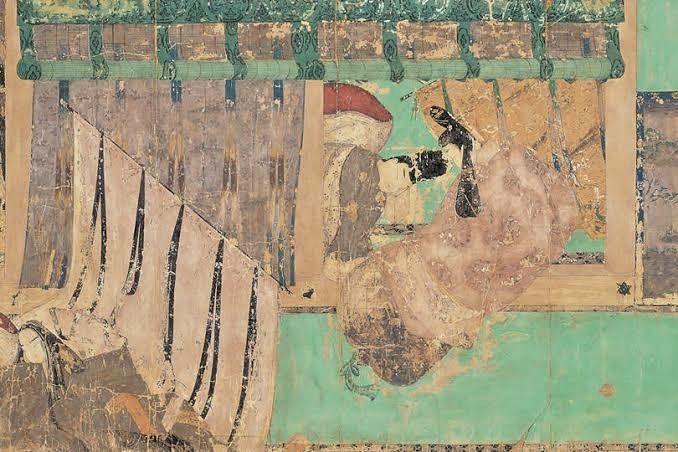
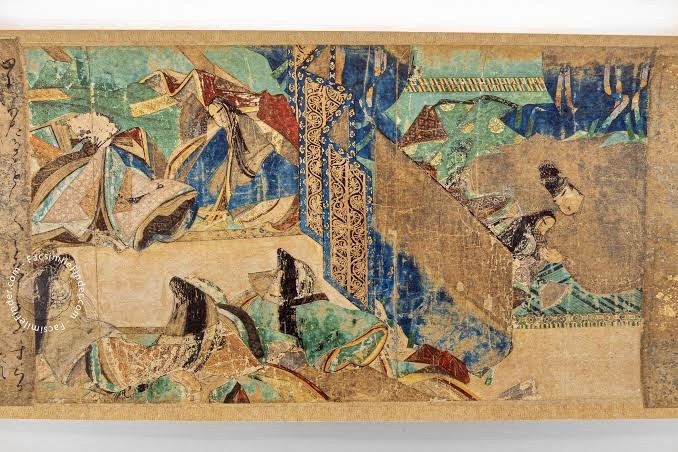
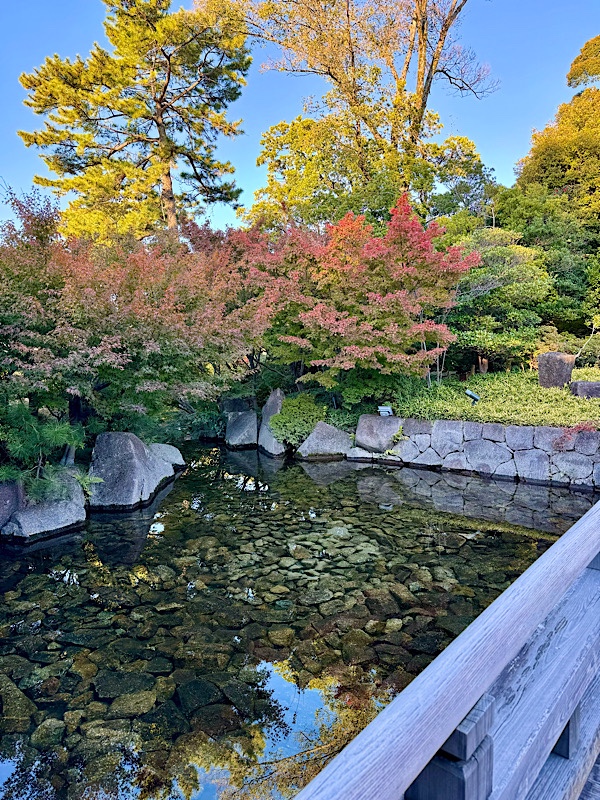
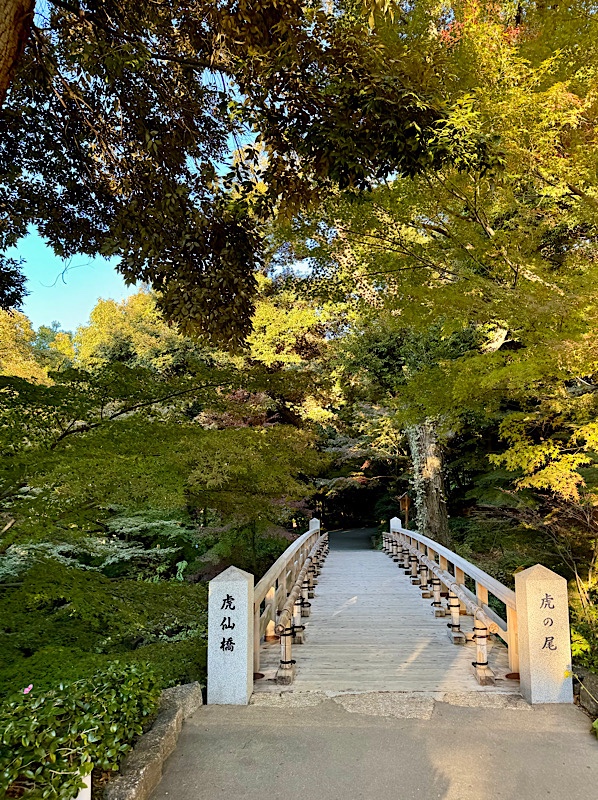 Multiple beds of irises that must look amazing in the spring.
Multiple beds of irises that must look amazing in the spring.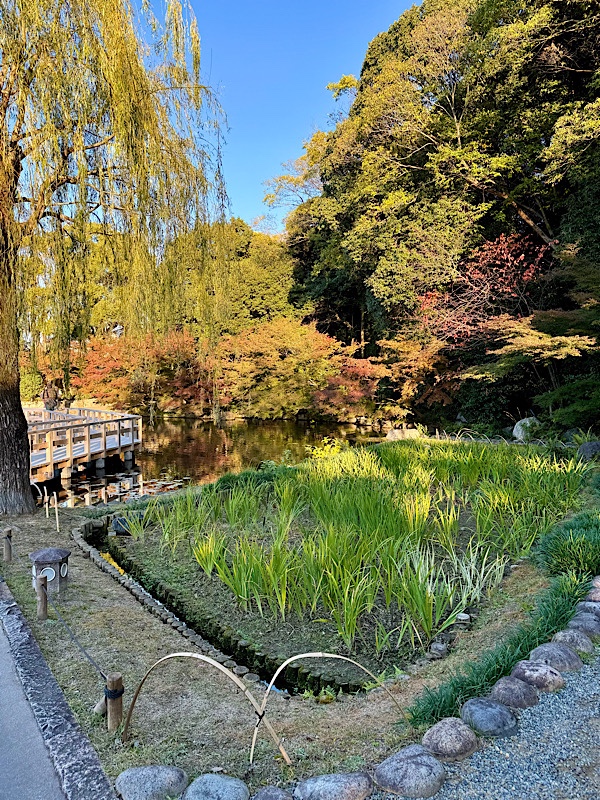
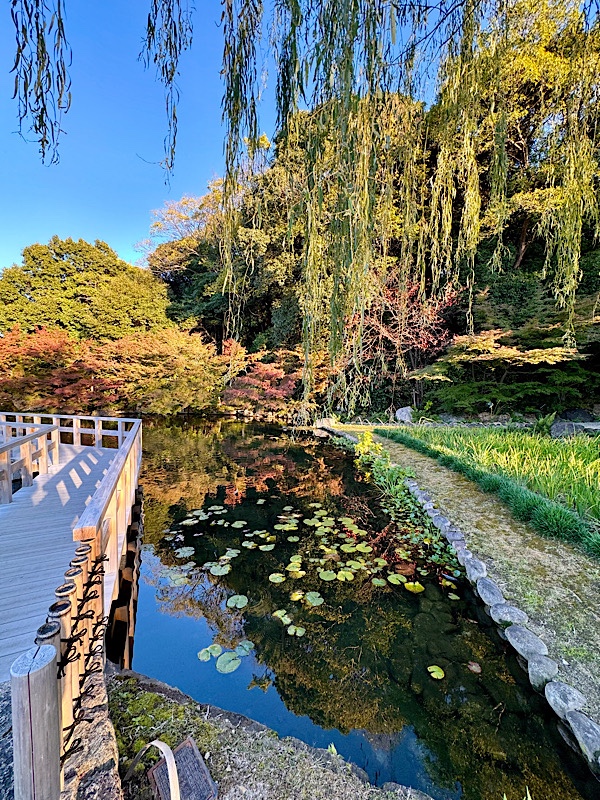
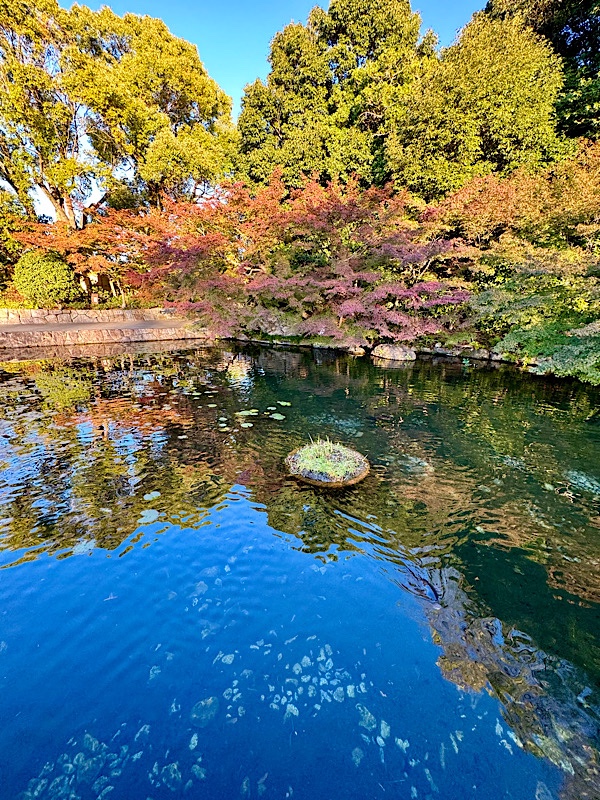
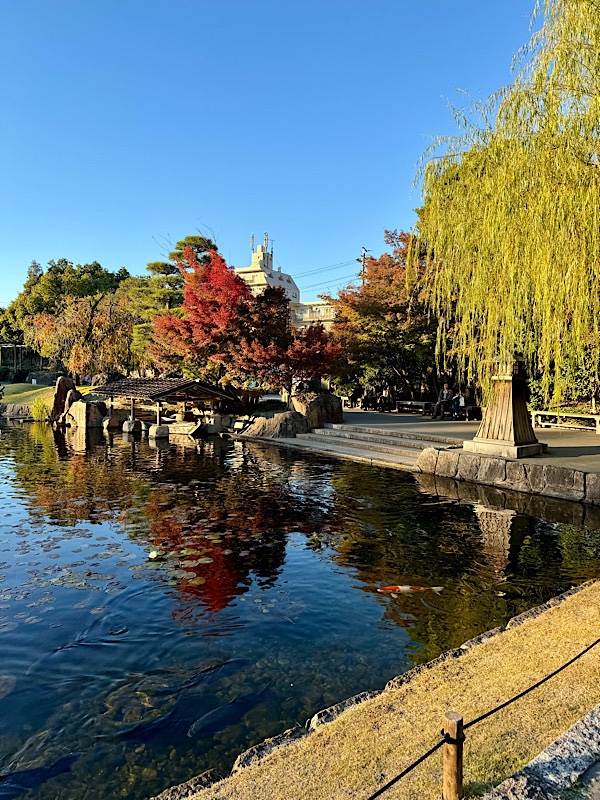
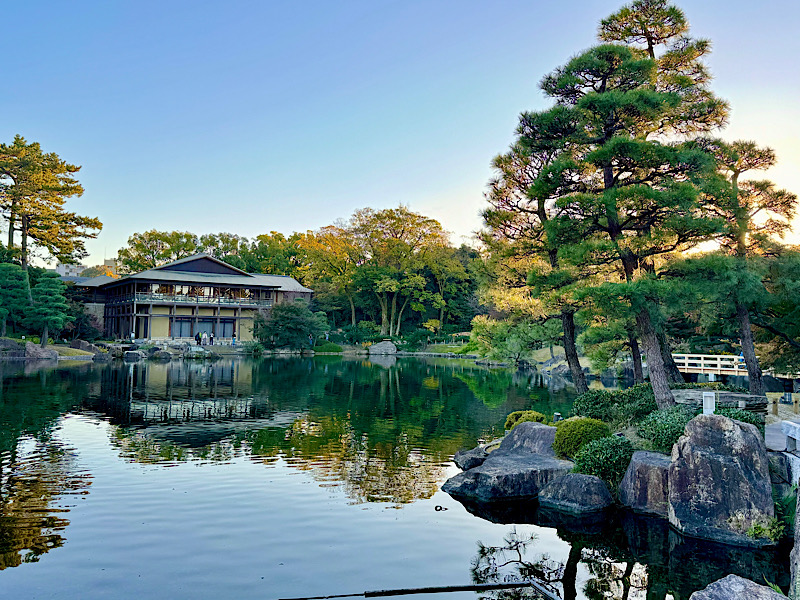
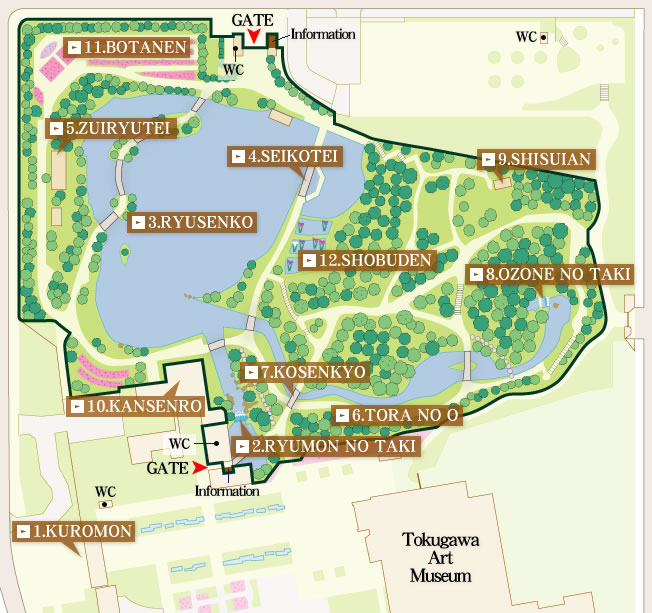
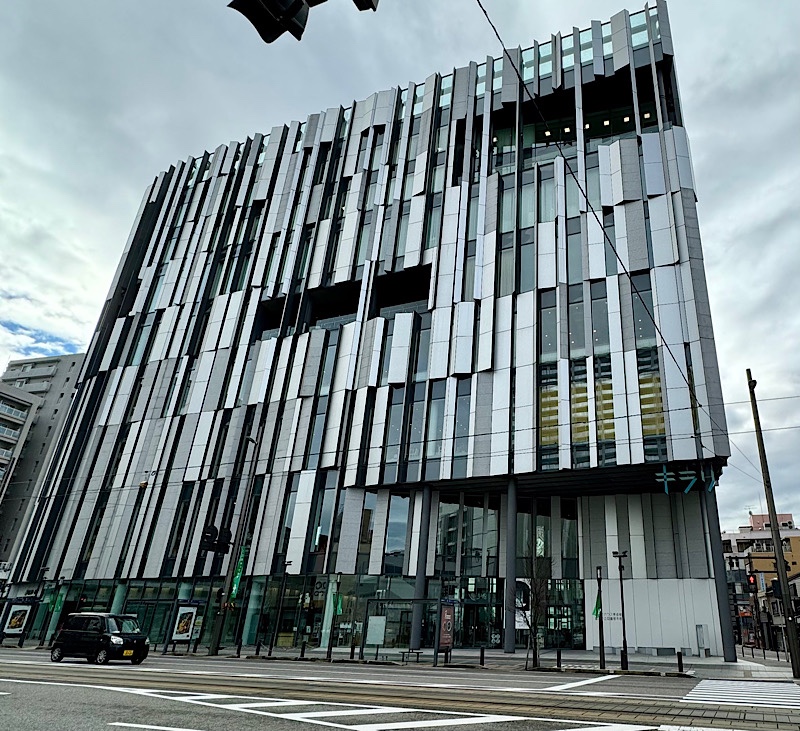 The building itself is quite impressive with the most amazing open atrium…
The building itself is quite impressive with the most amazing open atrium… 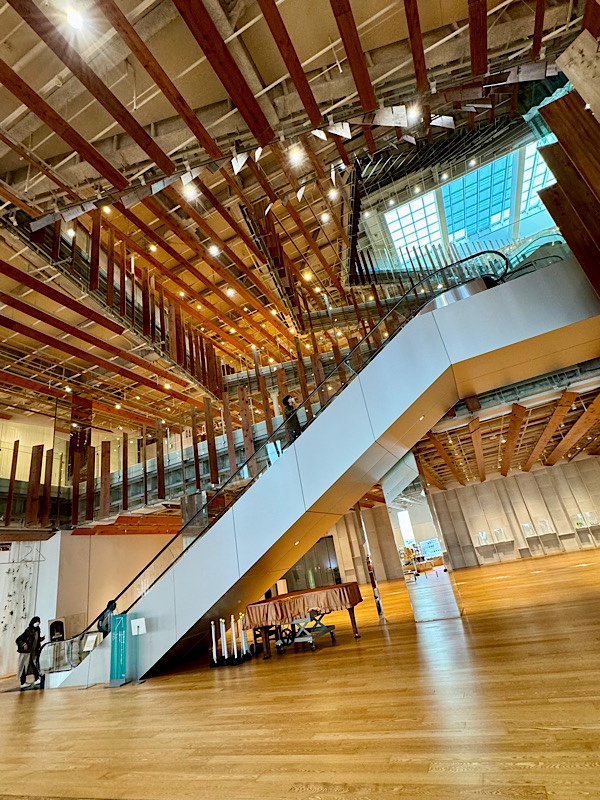
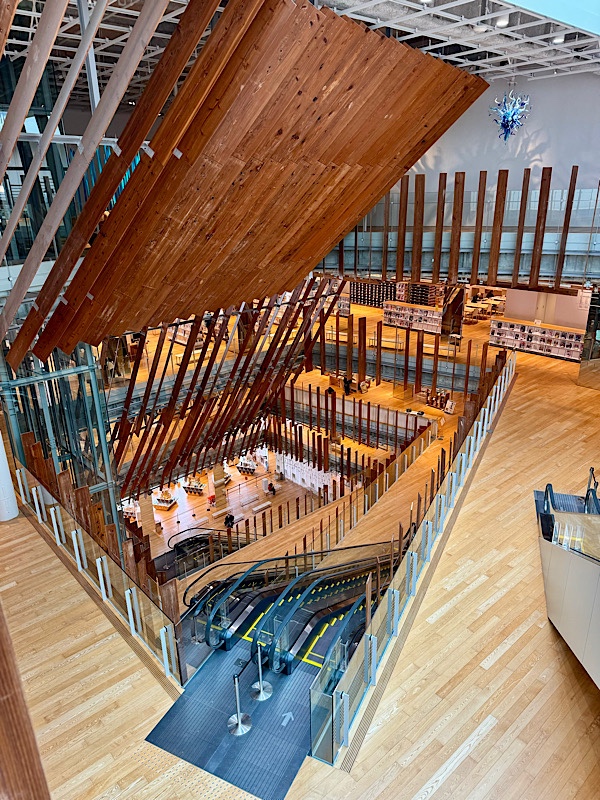 At the moment the 6th floor houses a large exhibition show casing the works of Dale Chihuly – an American glass artist who is various lauded as either overrated (given a lot of his production is done in a workshop with a plethora of unnamed artists) or iconic, as he most definitely had a huge global impact on the glass arts over the last fifty years.
At the moment the 6th floor houses a large exhibition show casing the works of Dale Chihuly – an American glass artist who is various lauded as either overrated (given a lot of his production is done in a workshop with a plethora of unnamed artists) or iconic, as he most definitely had a huge global impact on the glass arts over the last fifty years.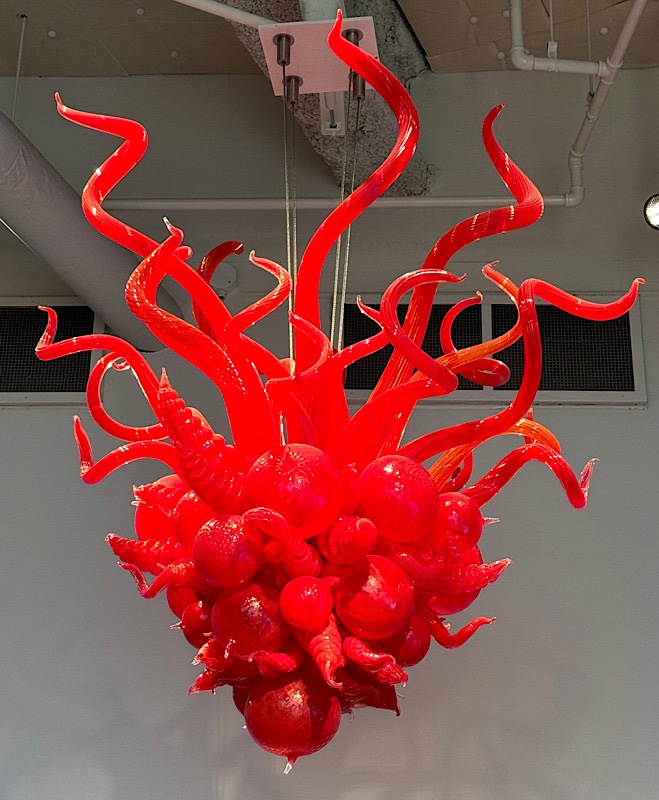
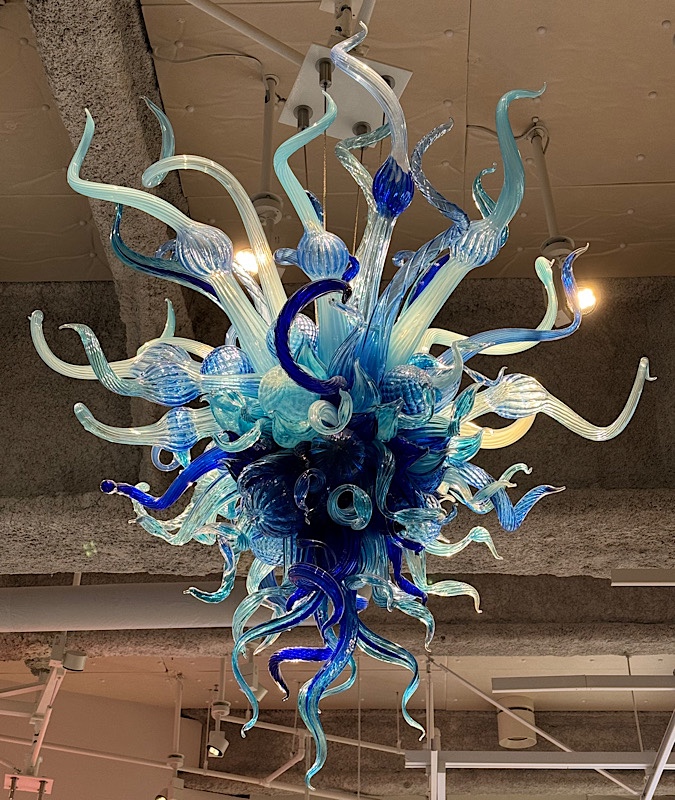
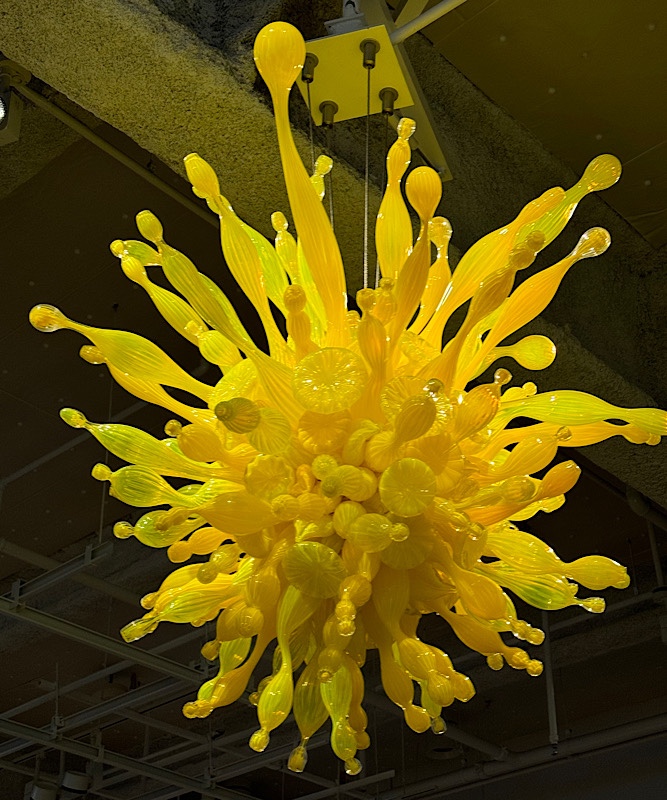 Toyama Reeds – 2015. This piece is 3m wide, by 4m deep and 5.3m high. These blue glass reeds are very impressive and give the impression of looking through a glass forest.
Toyama Reeds – 2015. This piece is 3m wide, by 4m deep and 5.3m high. These blue glass reeds are very impressive and give the impression of looking through a glass forest.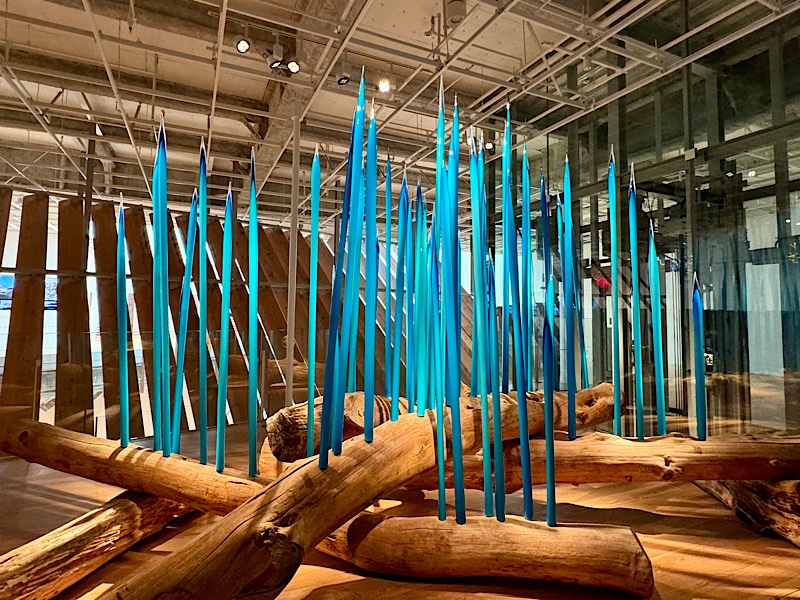 Toyama Persian Ceiling – this installation work is most reminiscent of the ceilings in the Bellagio Hotel in Las Vegas and was created around the time when Chihuly’s primary interest was in sea forms and creating these large ridged / fluted plates.
Toyama Persian Ceiling – this installation work is most reminiscent of the ceilings in the Bellagio Hotel in Las Vegas and was created around the time when Chihuly’s primary interest was in sea forms and creating these large ridged / fluted plates. 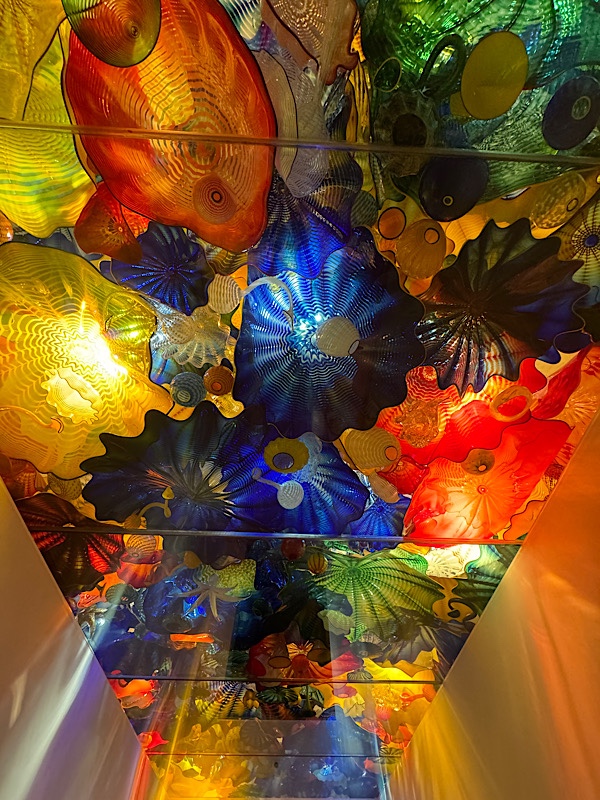
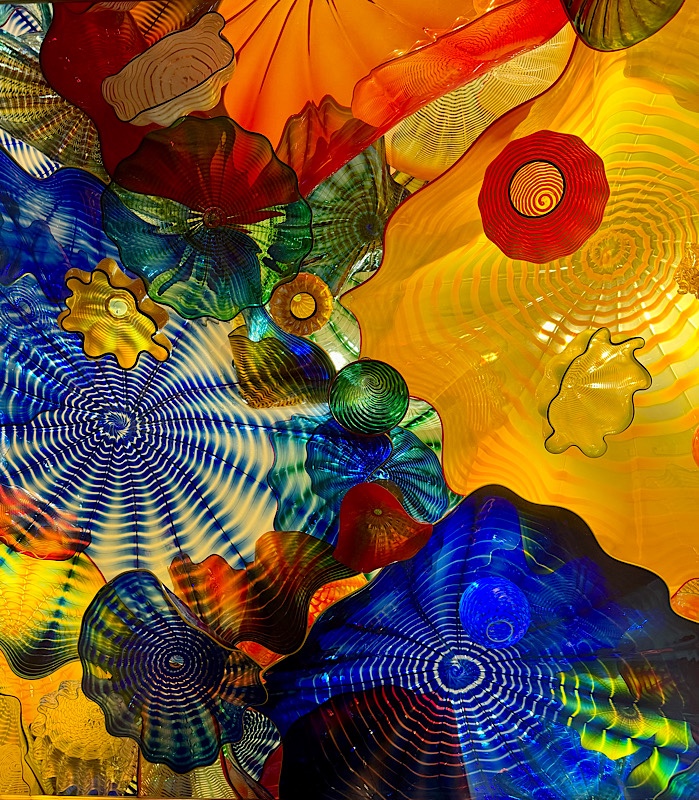 Toyama Float Boat – 2015, glass 9m long, 60cm high and 65cm wide comprised of 117 boat ‘floats’. This is an amazing piece! Yes it is mostly large balls of glass, artfully arranged in brilliant colours, but it also looks like a boat full of planets, or marbles, or sweets, or Christmas baubles. It is colourful, playful and really visually attractive.
Toyama Float Boat – 2015, glass 9m long, 60cm high and 65cm wide comprised of 117 boat ‘floats’. This is an amazing piece! Yes it is mostly large balls of glass, artfully arranged in brilliant colours, but it also looks like a boat full of planets, or marbles, or sweets, or Christmas baubles. It is colourful, playful and really visually attractive. 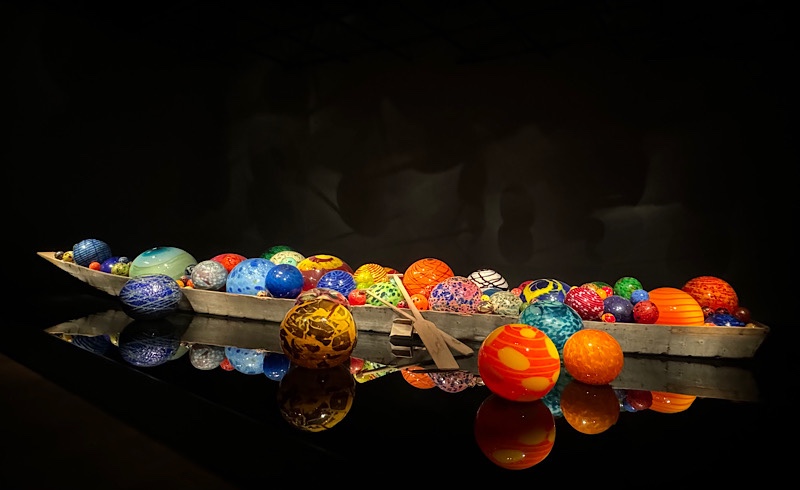
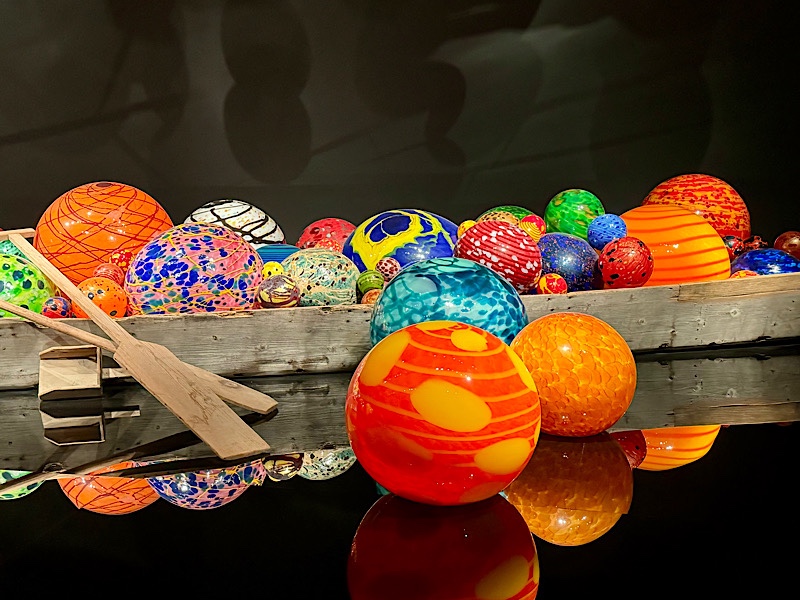
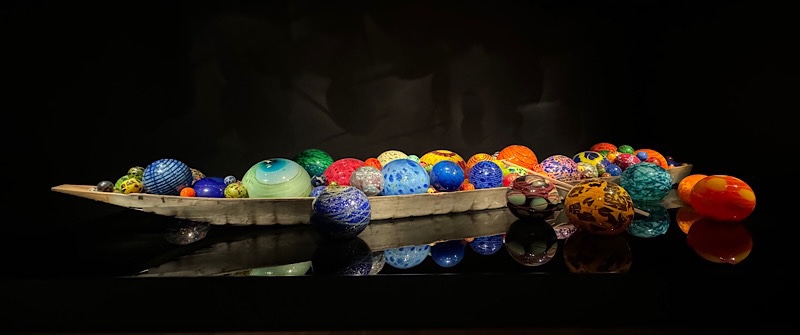
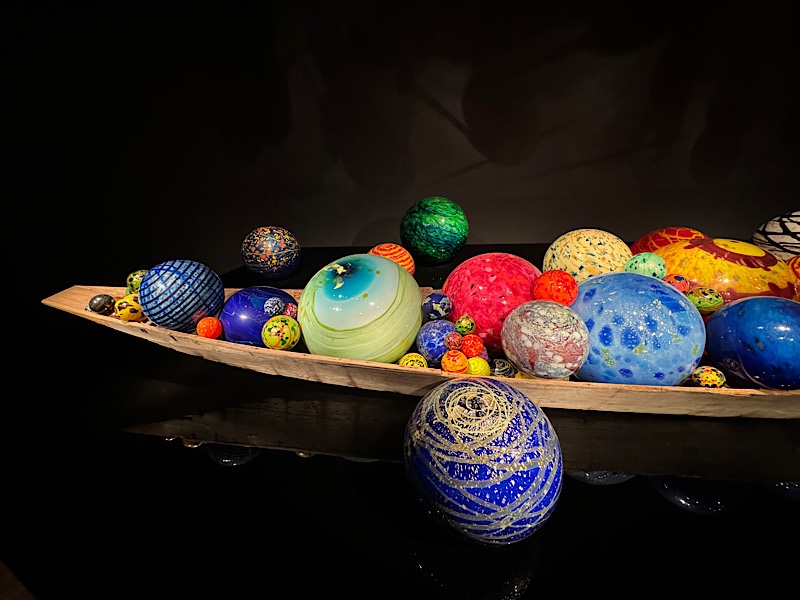
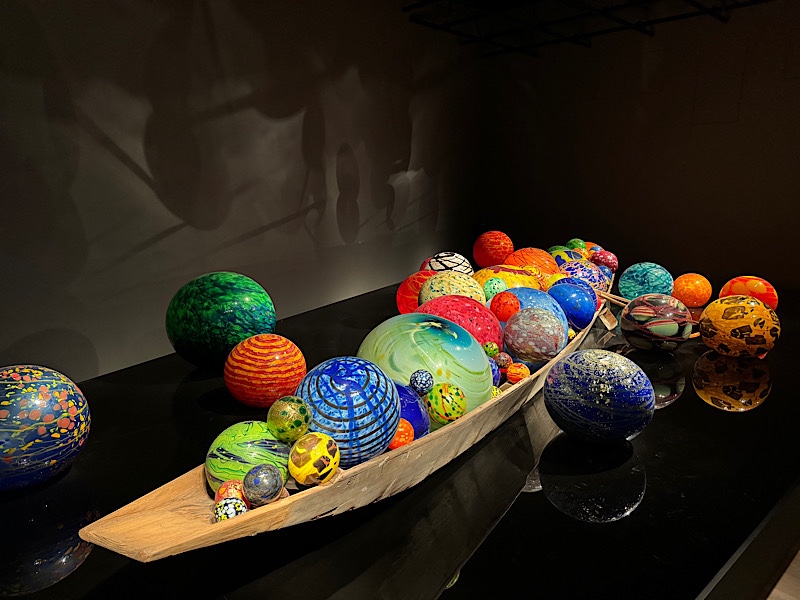 The next Chihuly in the exhibition is the Toyama Mille Fiori – also from 2015, it is an enormous 9m wide, 5.8m deep and 2.8m tall. The reeds, spirals spikes and balls in this ‘garden’ work together in the dark installation space to creat an alien-like garden that seems to change from every different angle it is viewed from.
The next Chihuly in the exhibition is the Toyama Mille Fiori – also from 2015, it is an enormous 9m wide, 5.8m deep and 2.8m tall. The reeds, spirals spikes and balls in this ‘garden’ work together in the dark installation space to creat an alien-like garden that seems to change from every different angle it is viewed from. 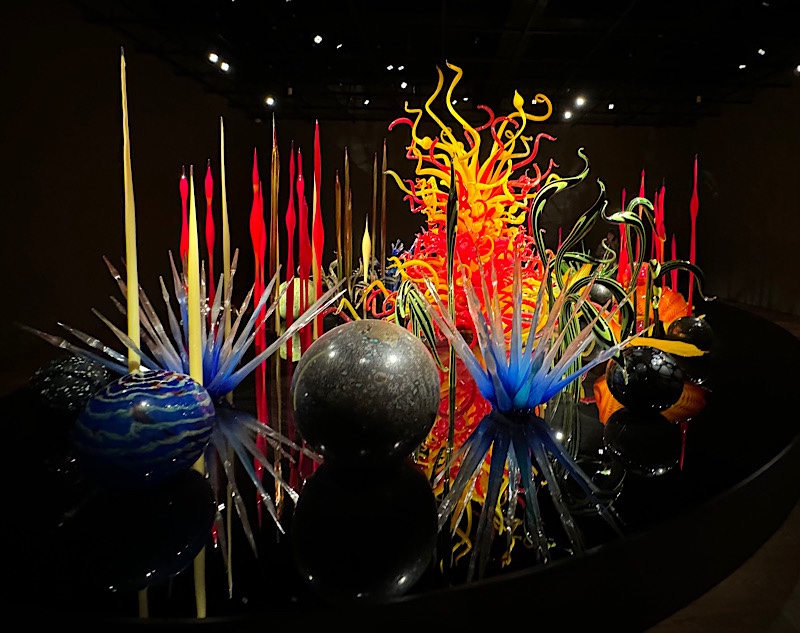
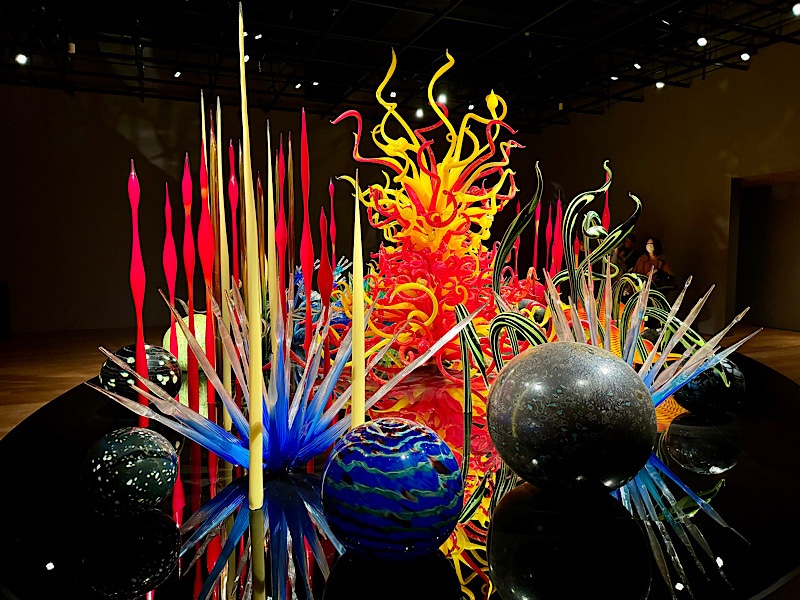
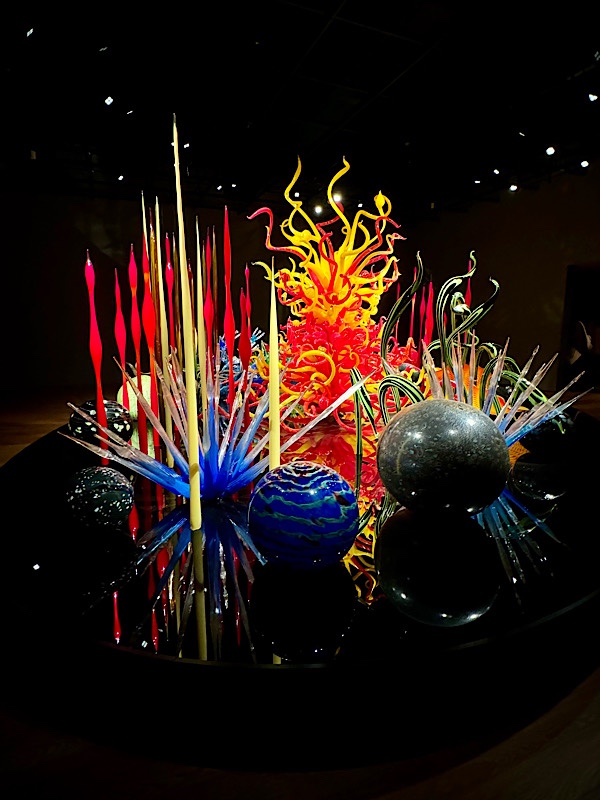 You can not deny that his work has Brough international prestige to the art sculpture and glass blowing communities – these works are visually arresting to behold.
You can not deny that his work has Brough international prestige to the art sculpture and glass blowing communities – these works are visually arresting to behold. 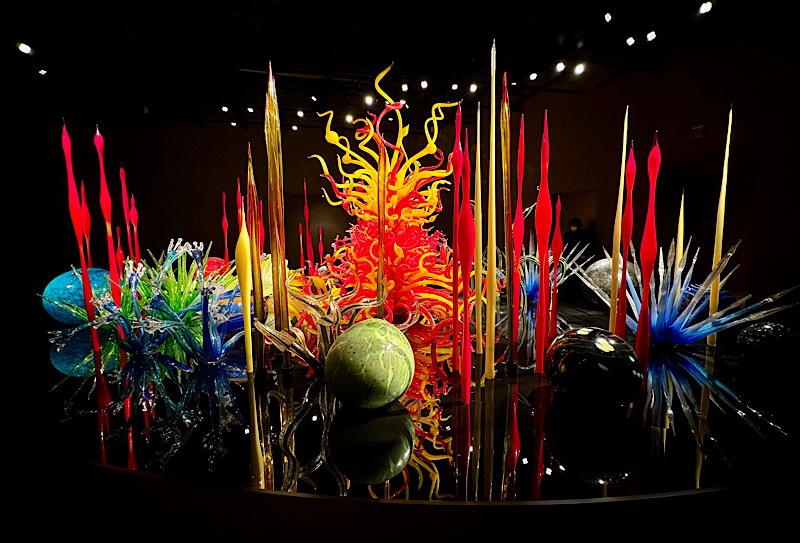
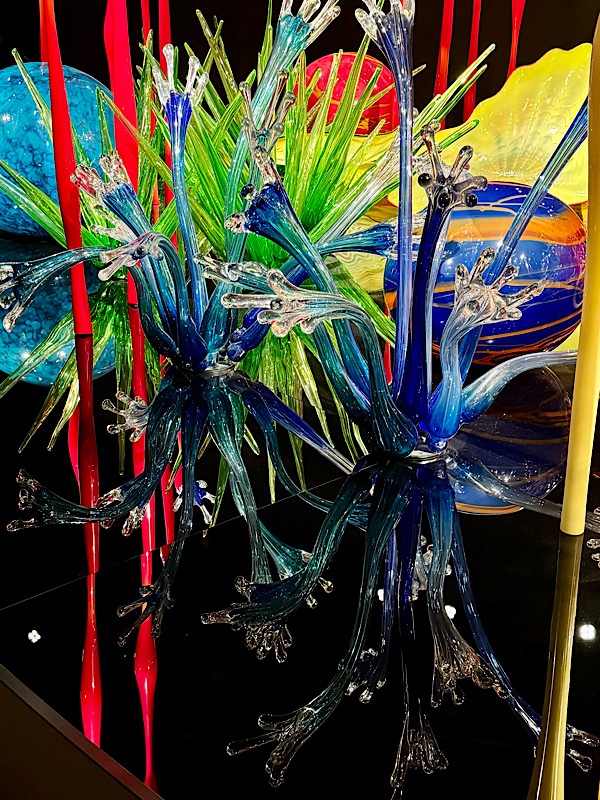
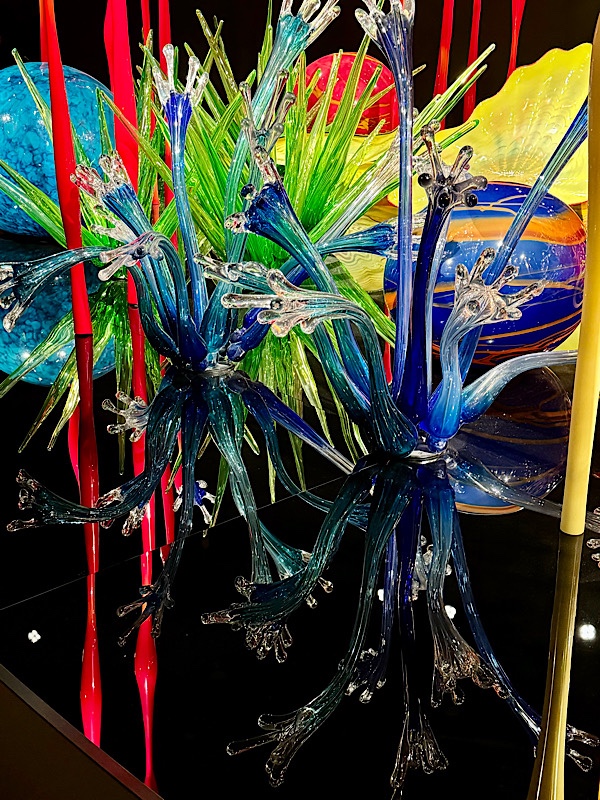
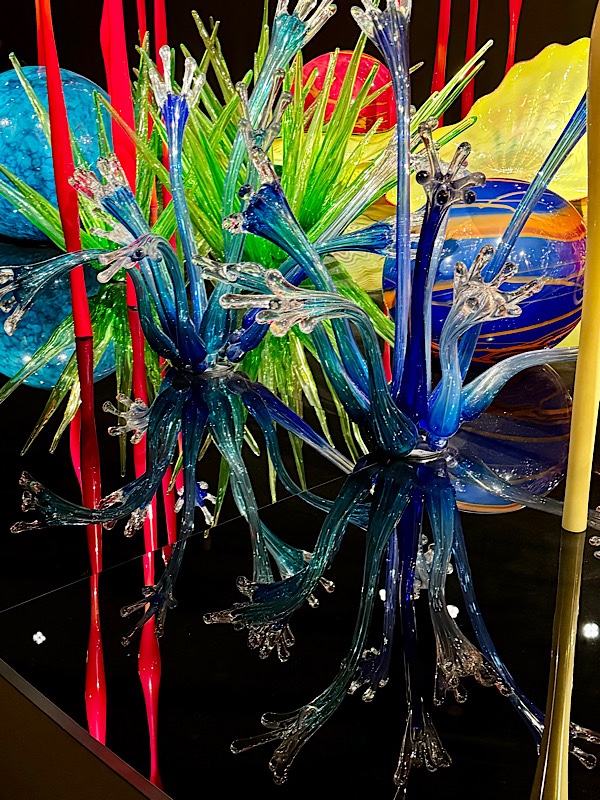
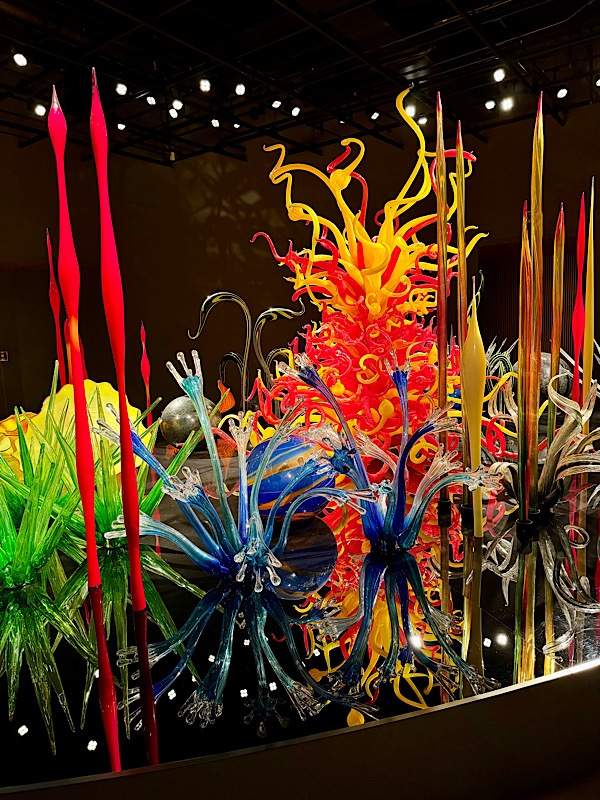 yes, I probably took far too many photos of this Mille Fiori garden – but it was so beautiful and so well curated, that I fell in love with it.
yes, I probably took far too many photos of this Mille Fiori garden – but it was so beautiful and so well curated, that I fell in love with it. 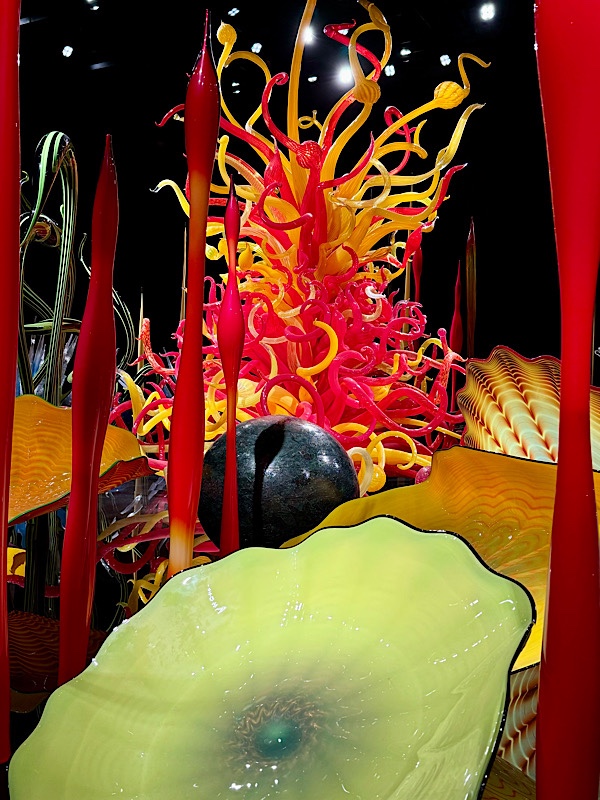
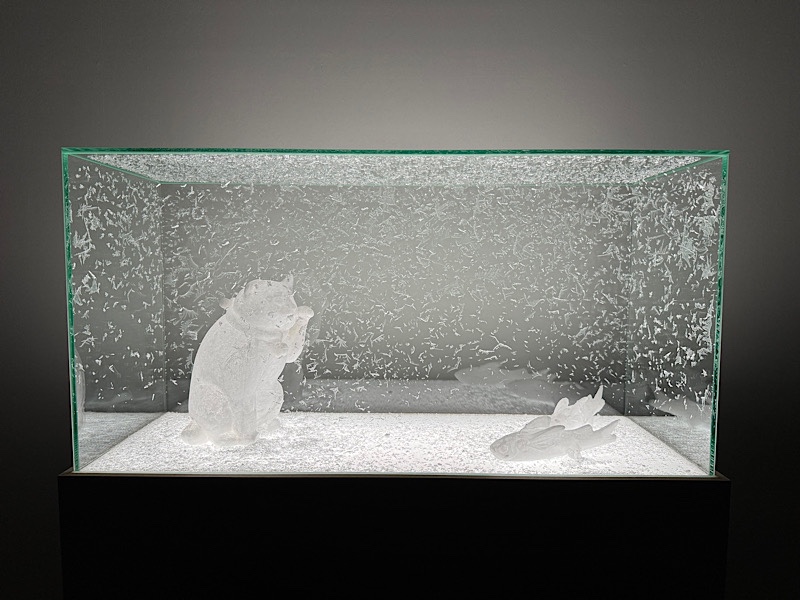
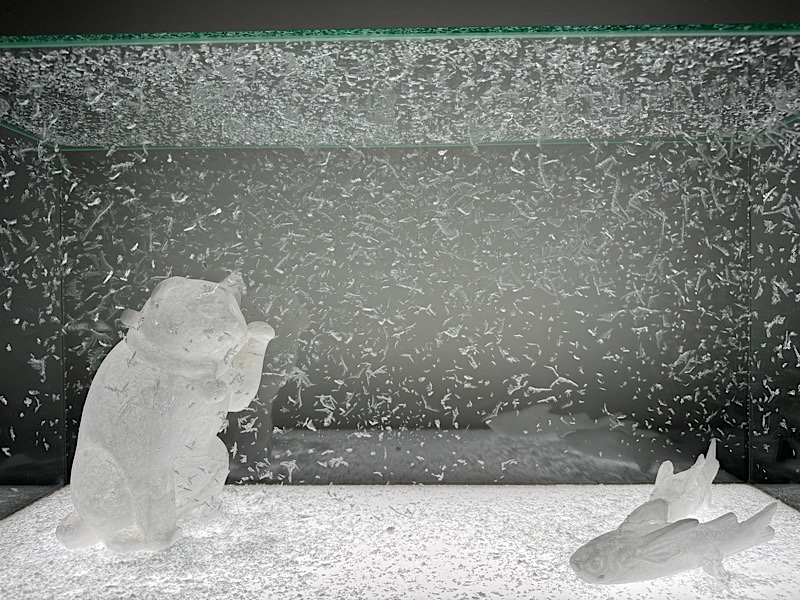
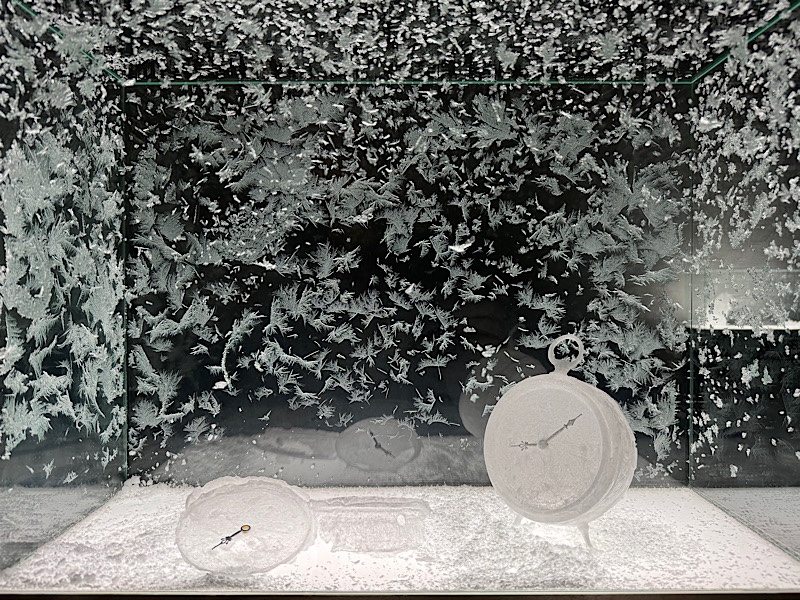
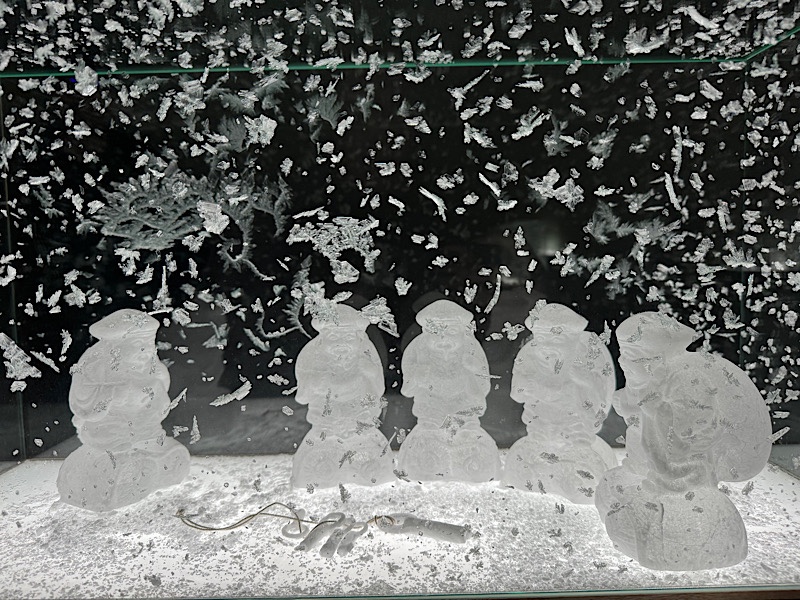
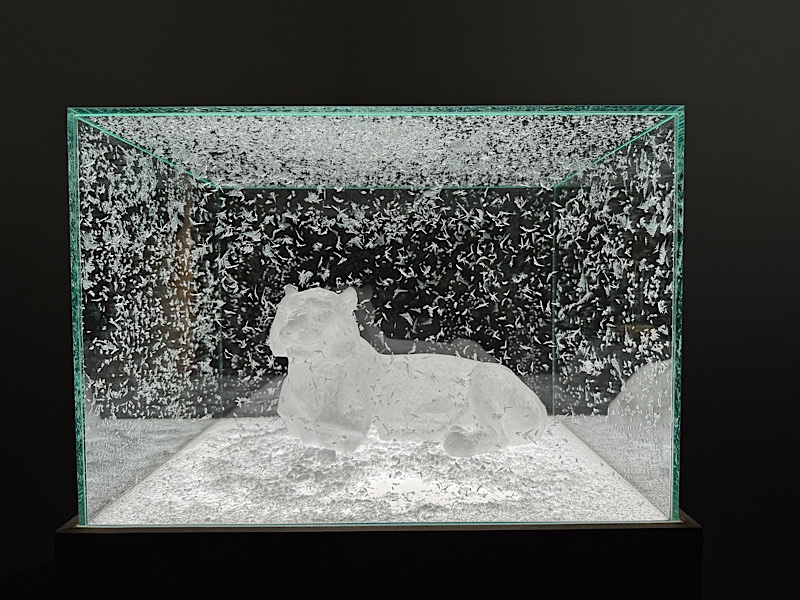
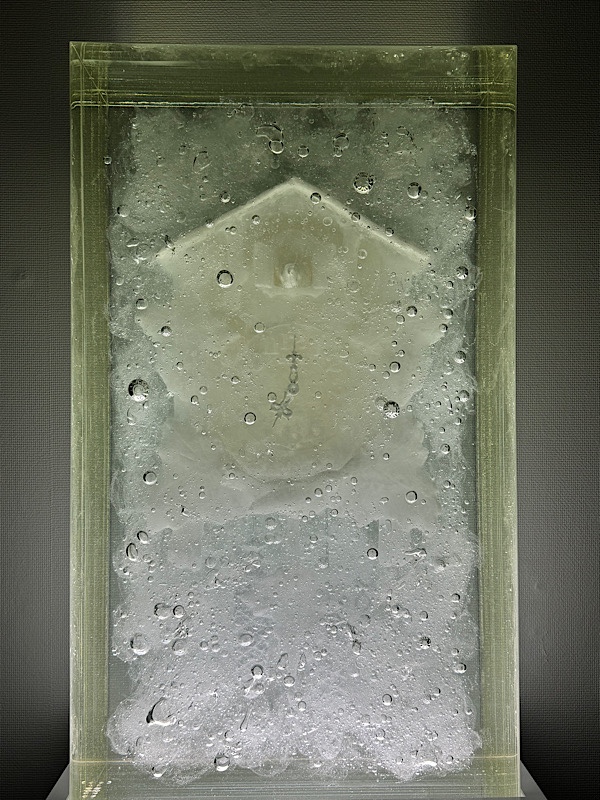 These pieces contain a sliver of napthothene which deteriorates if exposed to oxygen – it is safety concealed in the glass and resin of the piece but would disintegrate quickly if exposed to the air… it is frozen in time, which is a central theme to the artist’s work.
These pieces contain a sliver of napthothene which deteriorates if exposed to oxygen – it is safety concealed in the glass and resin of the piece but would disintegrate quickly if exposed to the air… it is frozen in time, which is a central theme to the artist’s work. 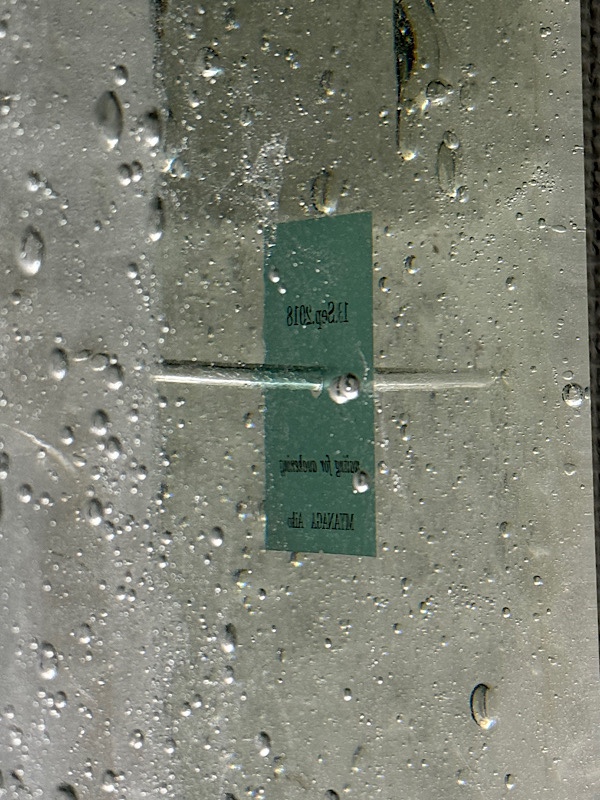
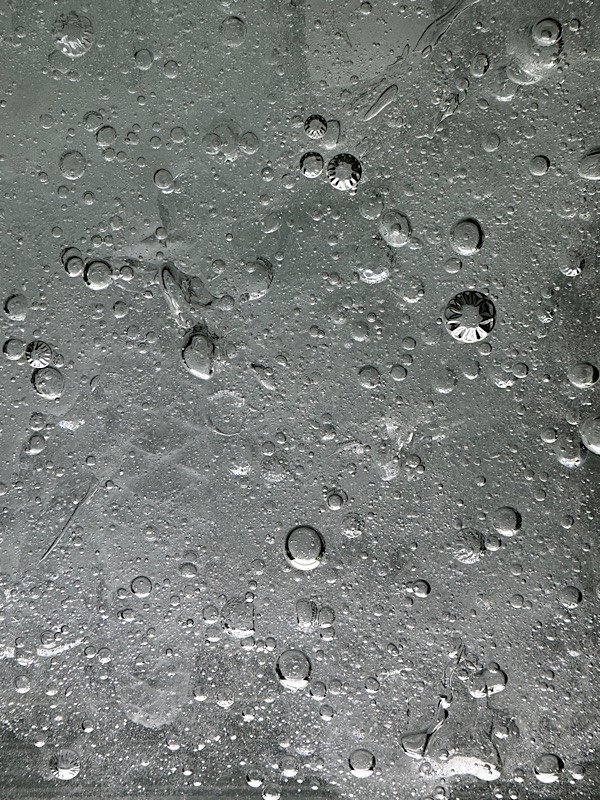
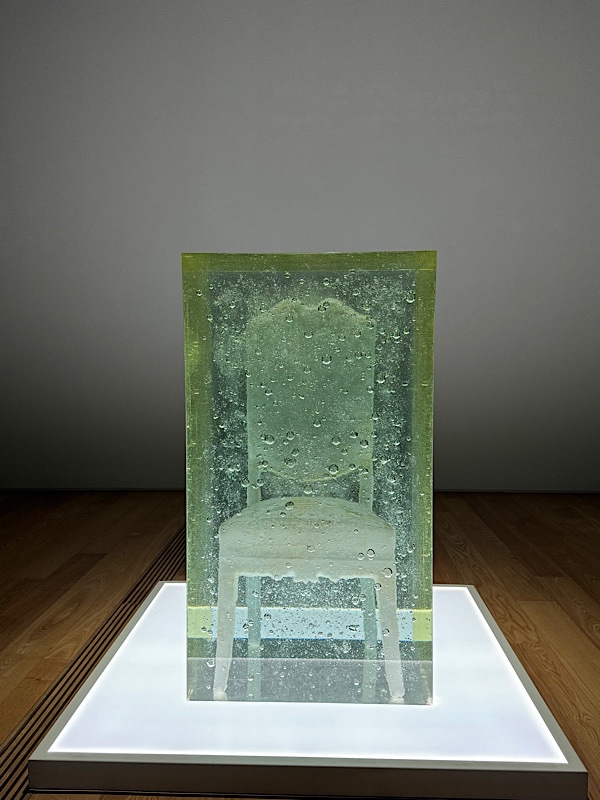
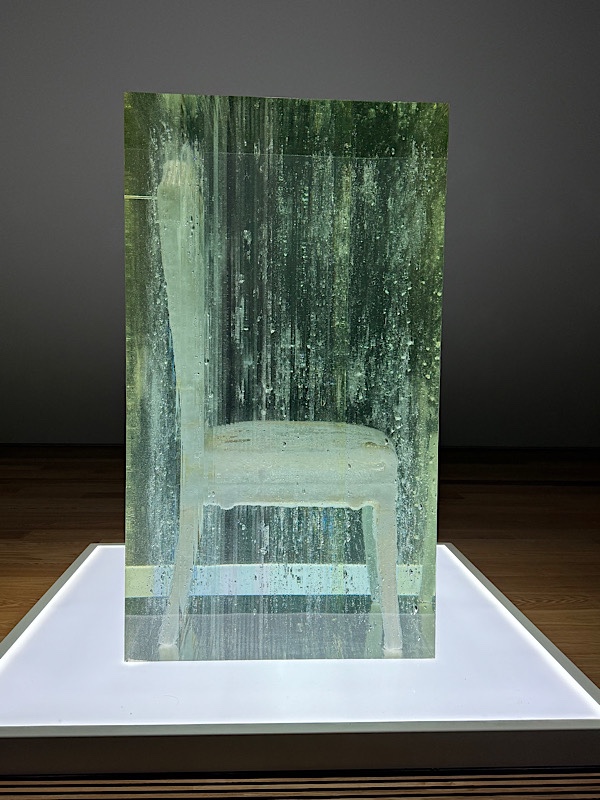
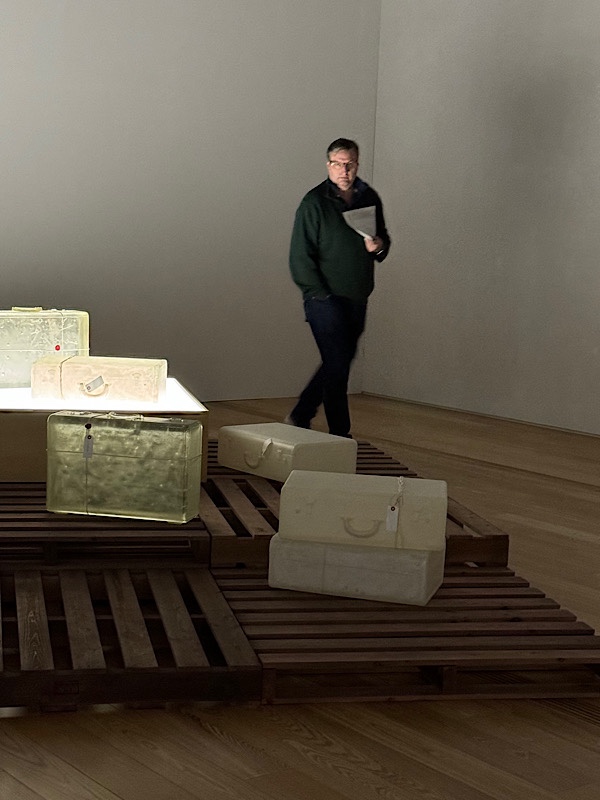
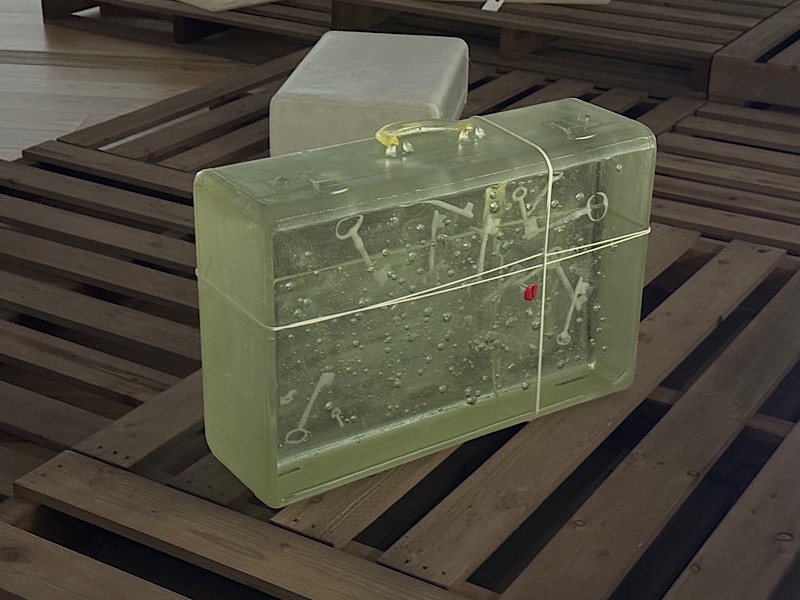
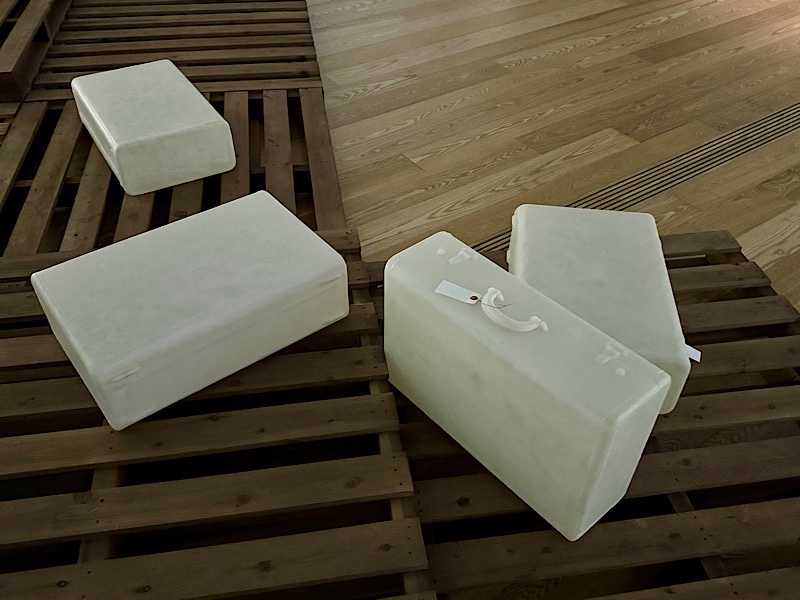
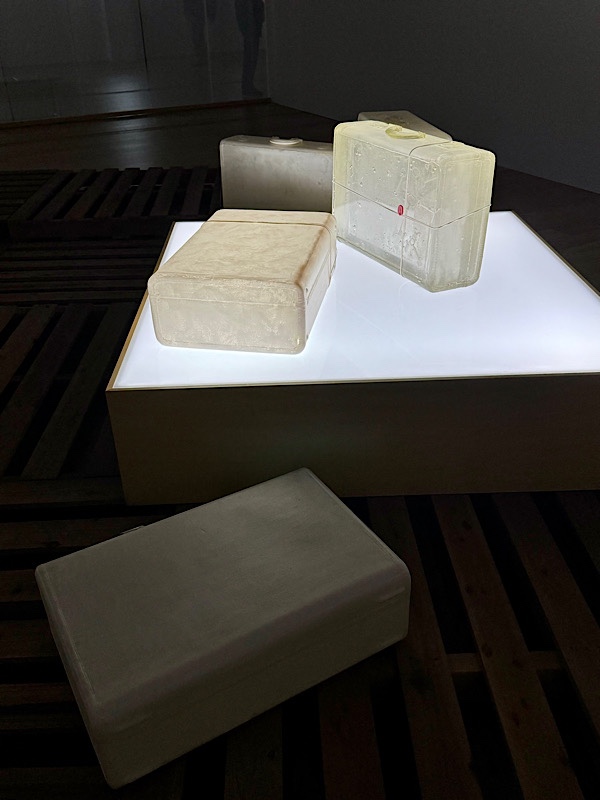
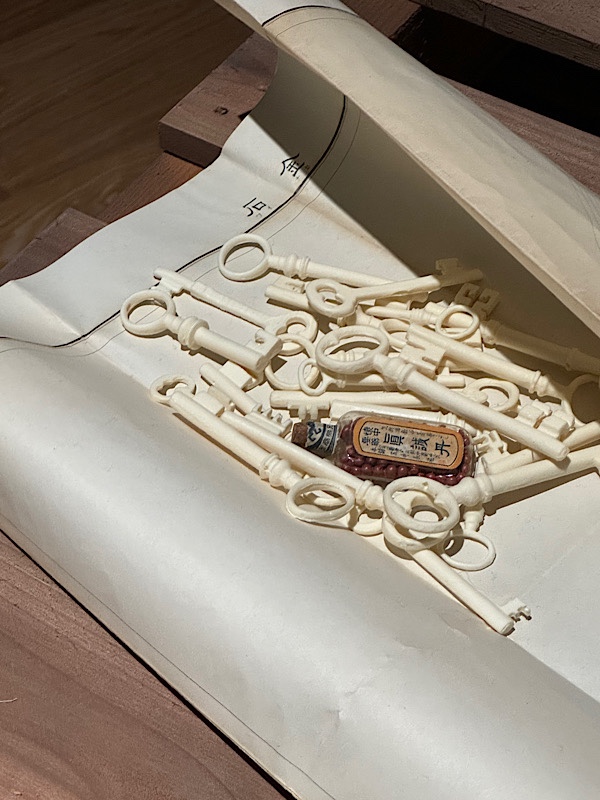
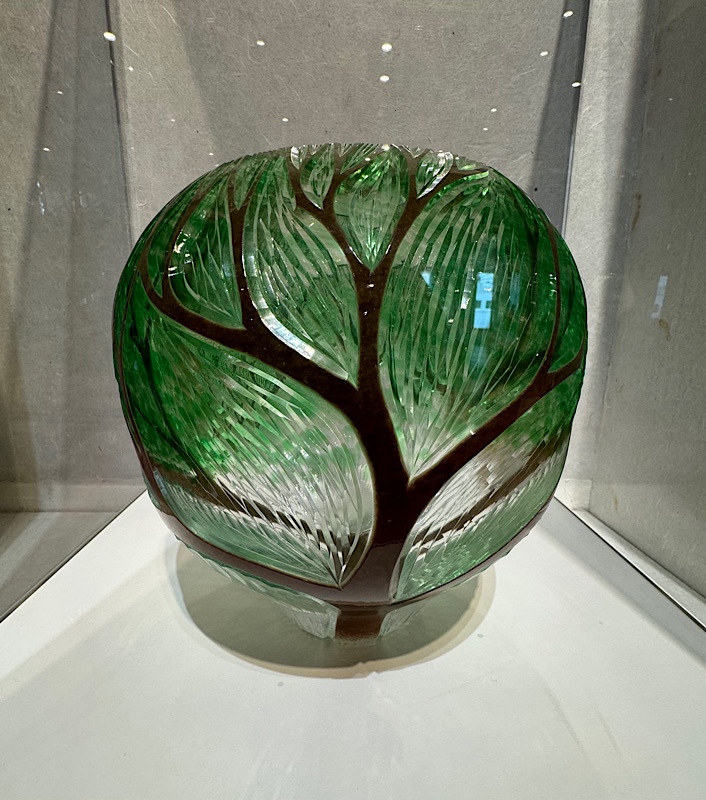
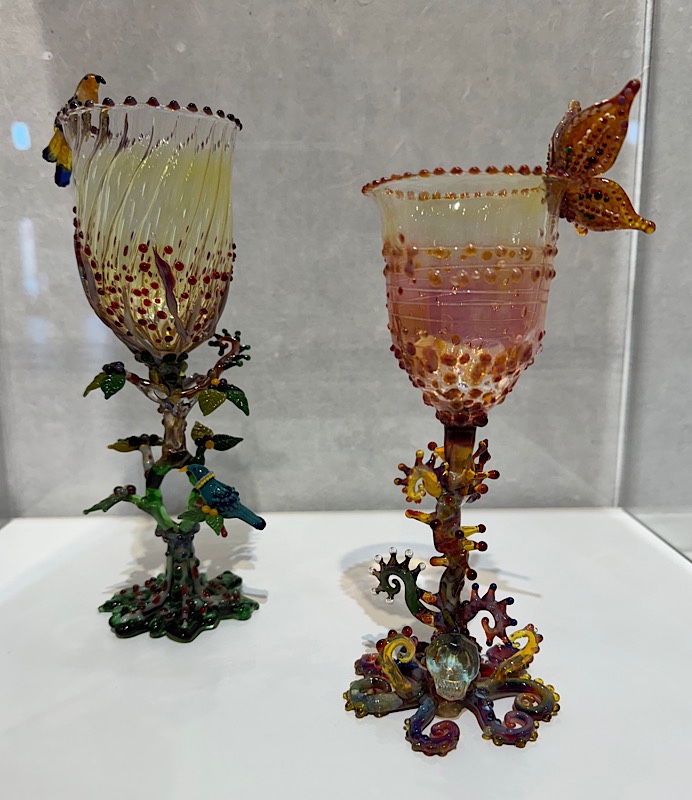 Time of Migration by Fujii Yurkia, 2015
Time of Migration by Fujii Yurkia, 2015